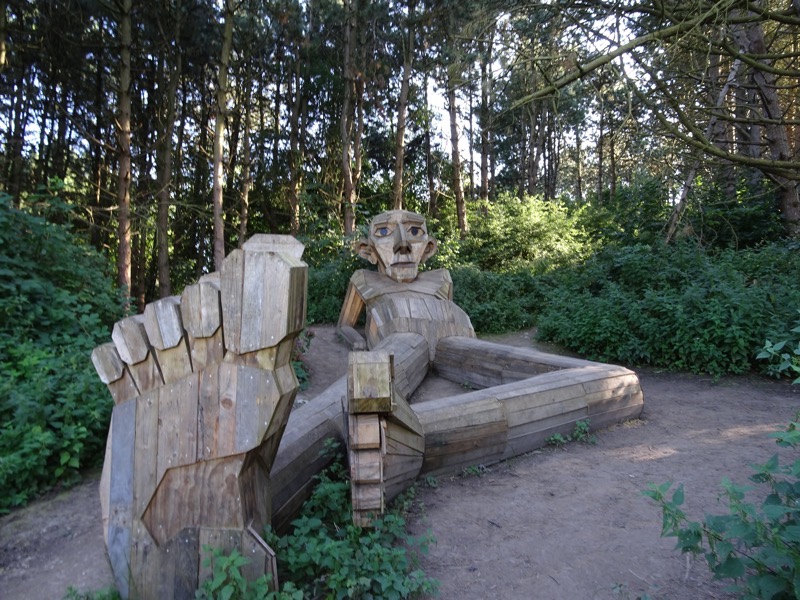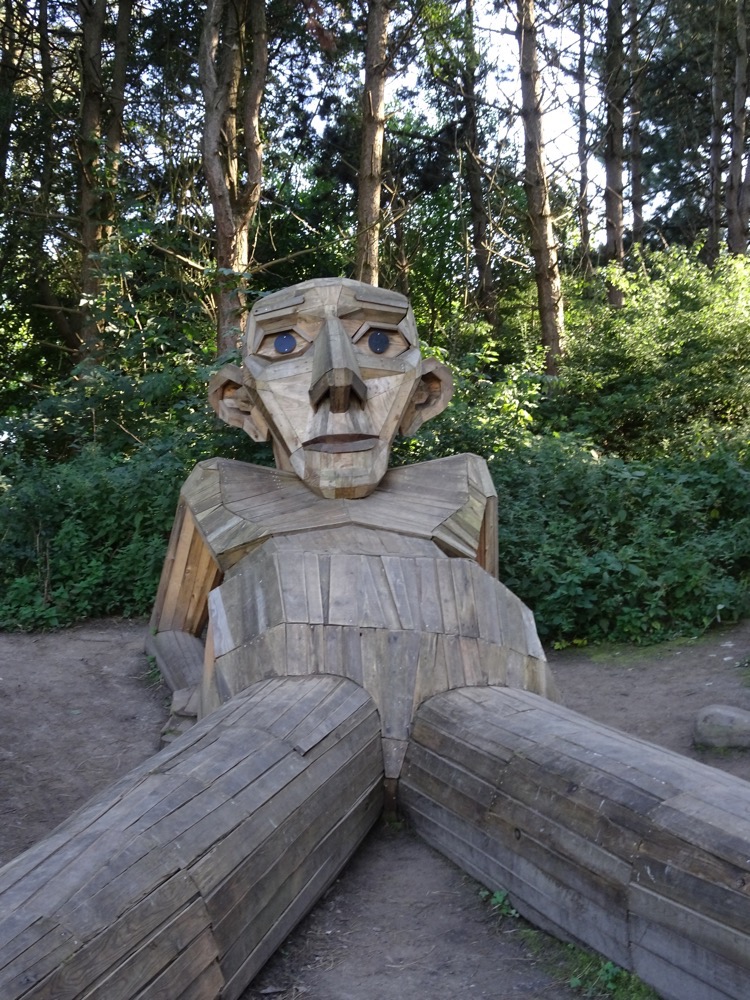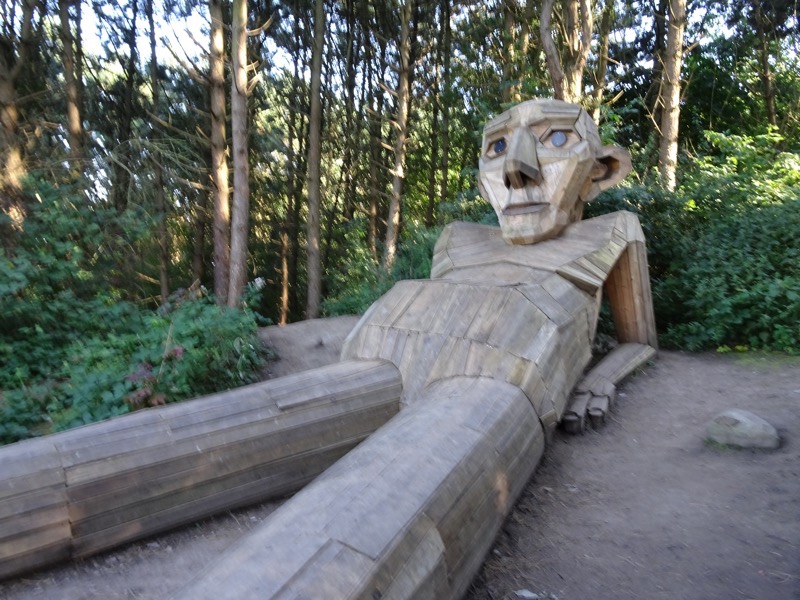As much as we were in desperate need of sleep, the bus taking us the Tierra del Fuego National Park and to see the End of the World was going to be picking us up at 0750 and we had to have our bags all packed in in reception, be checked out and had our breakfast by the time the bus arrived – which meant another stupid early start with not enough sleep.
But we got there. Dressed, packed, checked out, bags in reception, breakfasted and ready for exactly 0750 on the dot. We then pottered around town picking up passengers from other hotels before heading directly to the Tierra del Fuego train station. I wrote quite a lot about the history of the prison train that operates in the Park and how it is now used to ferry tourists around, last time I was here so instead of repeating myself… here’s a handy link for anyone who is interested in the history… <cheeky re-used blog post> 😛
I decided to take the train in again – it was a beautiful trip last time and a beautiful day today, so why not. The train has a multilingual audio guide and we had a very noisy group of German tourists behind us last year when I was on the train, so I was hopeful of hearing more of the commentary this time. Alas, it was not to be, this time we had a bunch of inconsiderate Italians who wouldn’t shut the hell up when languages they didn’t need were coming across the PA system. Oh well… so be it. :/ Have I mentioned how much I hate tourists? Yes, I know, probably only every other post – but travel would be awesome without other tourists about.
The park was still beautiful and in spite of not being able to hear most of the commentary… again!
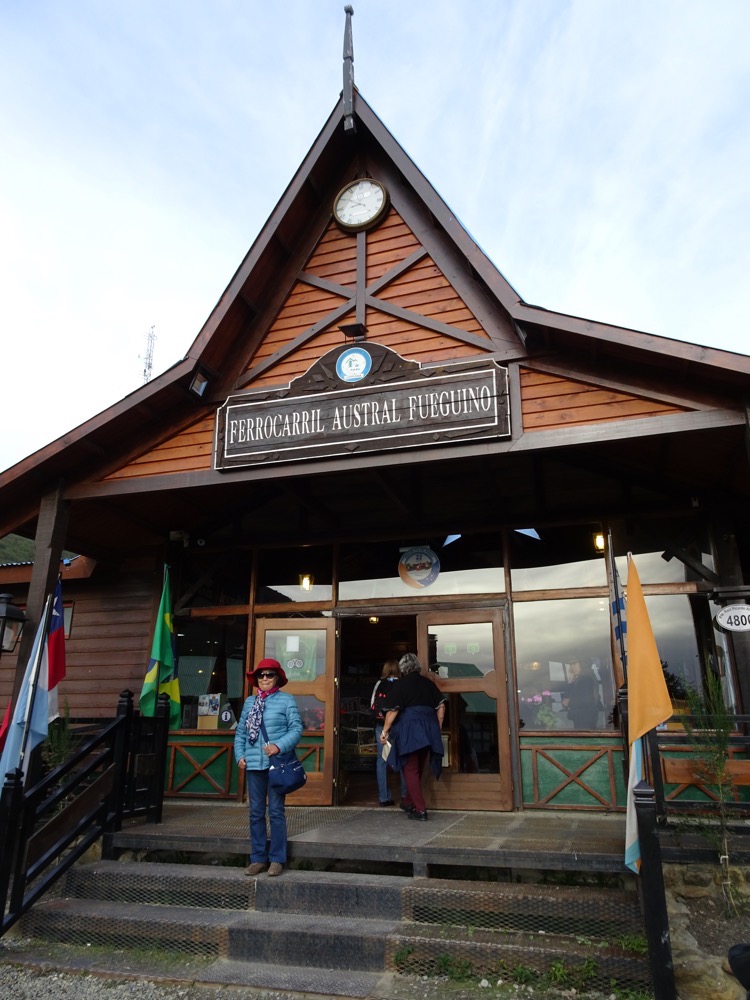 Okay – I can’t explain this, but when I went into my travel wallet to dig up some currency to pay for our train tickets, of all the pieces of paper and entry tickets to all the museums and attractions I have been over the last year (from Hong Kong to Moscow, from Rio to Stockholm, from Tokyo to Vancouver) for some reason, I seem to have kept my ticket for this very train trip from February last year… 😮
Okay – I can’t explain this, but when I went into my travel wallet to dig up some currency to pay for our train tickets, of all the pieces of paper and entry tickets to all the museums and attractions I have been over the last year (from Hong Kong to Moscow, from Rio to Stockholm, from Tokyo to Vancouver) for some reason, I seem to have kept my ticket for this very train trip from February last year… 😮 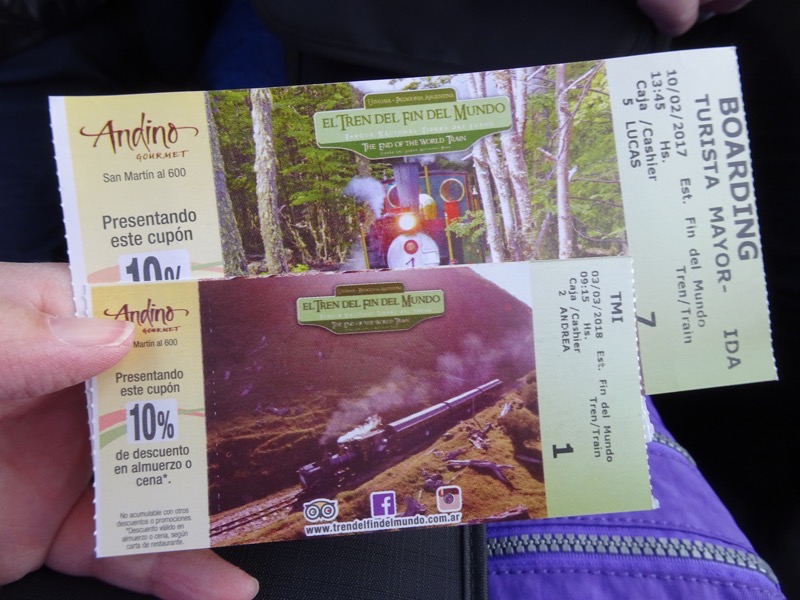
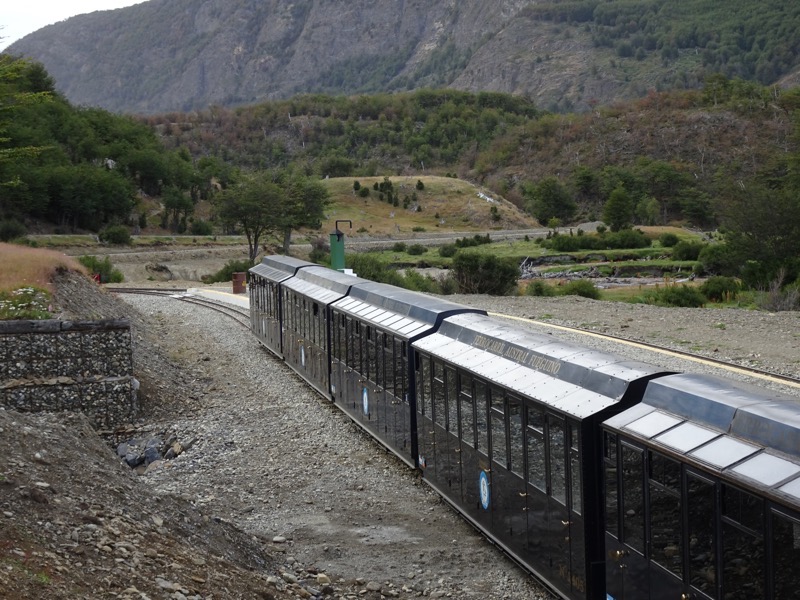
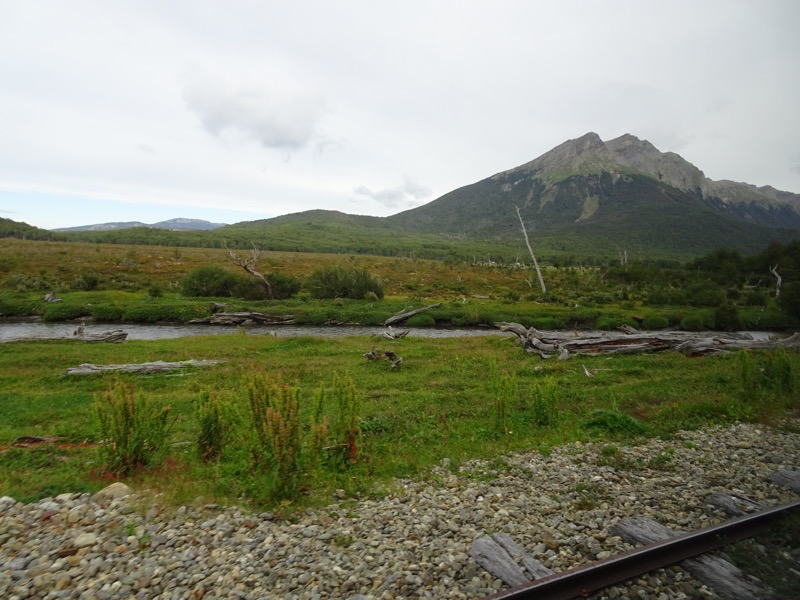
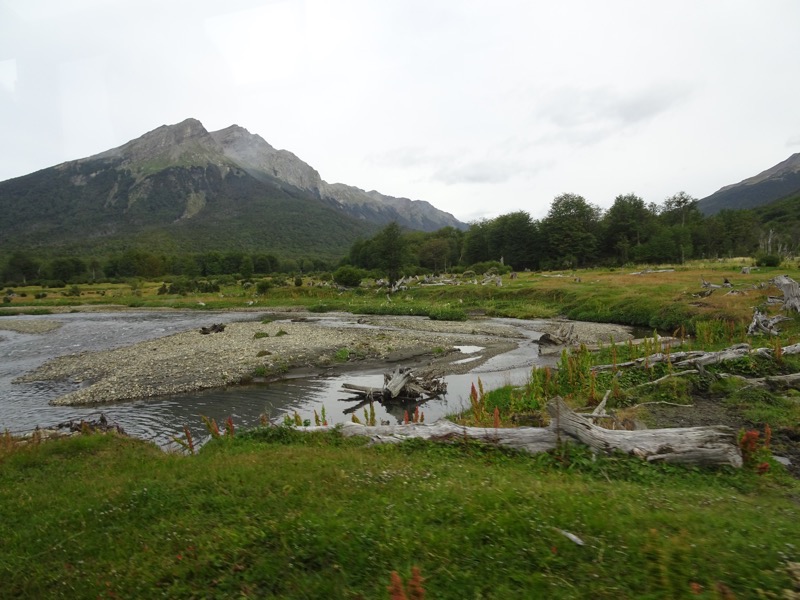
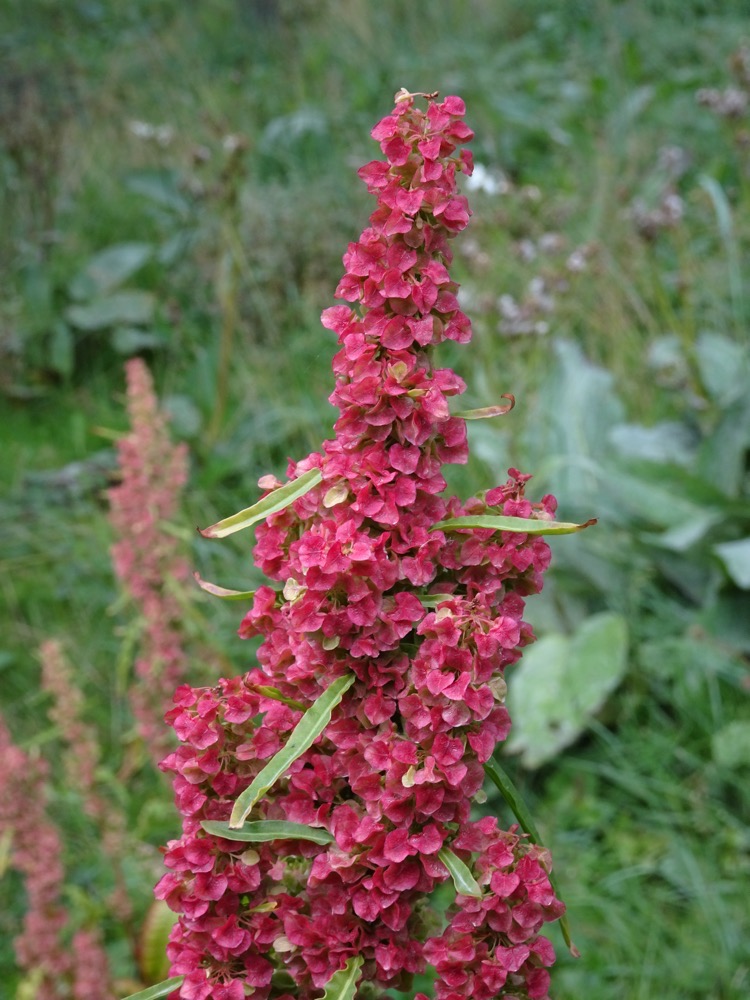
After the train ride, we met back up with our guide, Mikaela and head to Lake Agamaco to the exact same spot I visited last year. This tour we walked from the lake through to the large Visitor’s Centre across the boggy peat around the lake. The walk was only about 20 mins long but we had a beautiful fresh breeze and gorgeous blue skies. 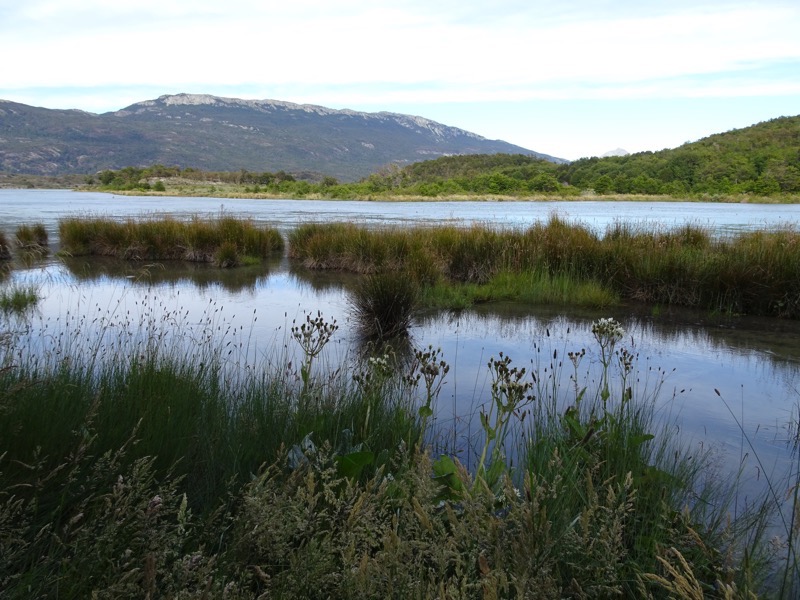
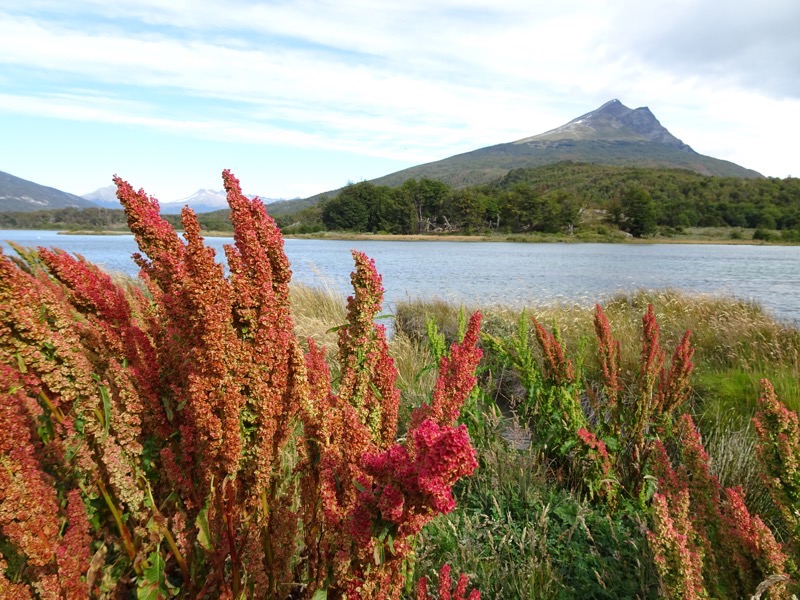
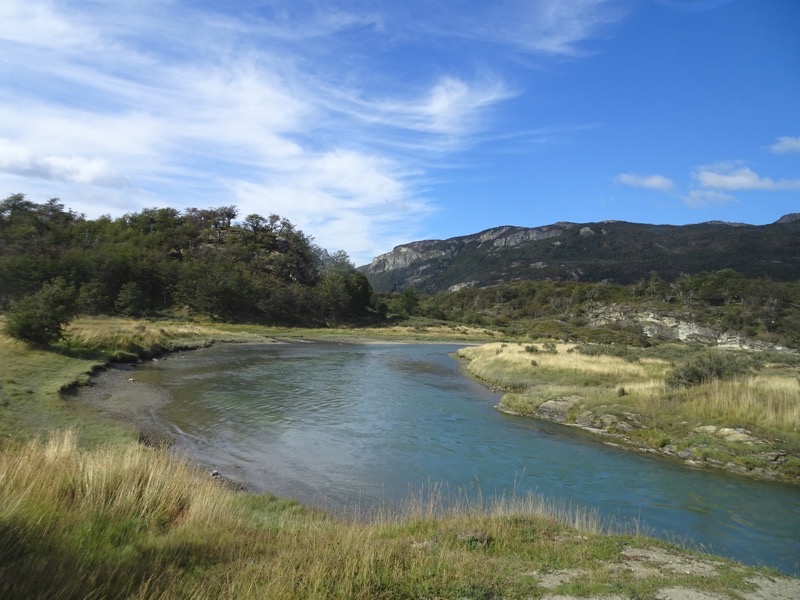
At the visitor’s centre, which was packed for some reason, we had *the* most amazing hot chocolates ever, and a quick look around the museum/gift shop before hopping back on the bus for the picturesque drive down to the boardwalk at the End of the World.
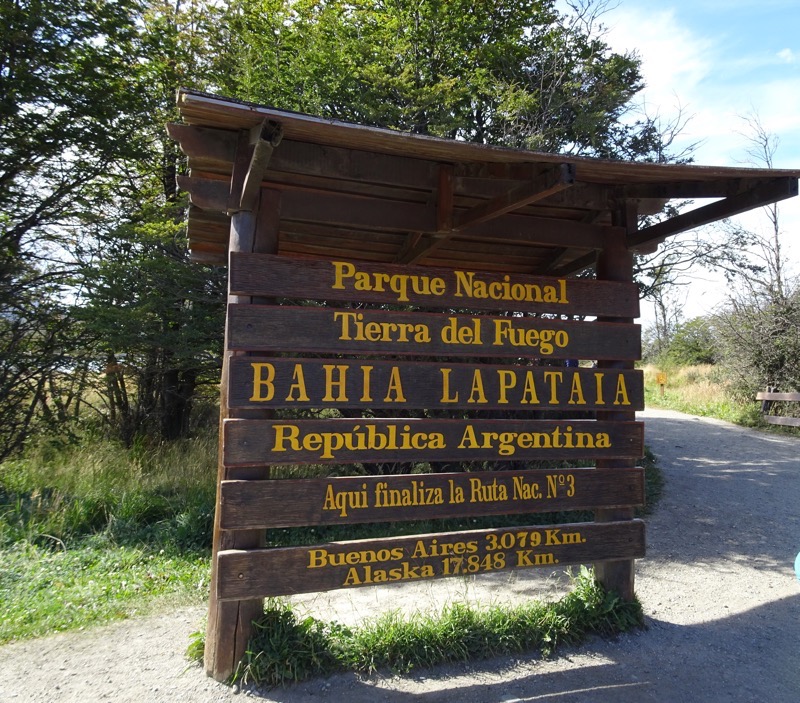
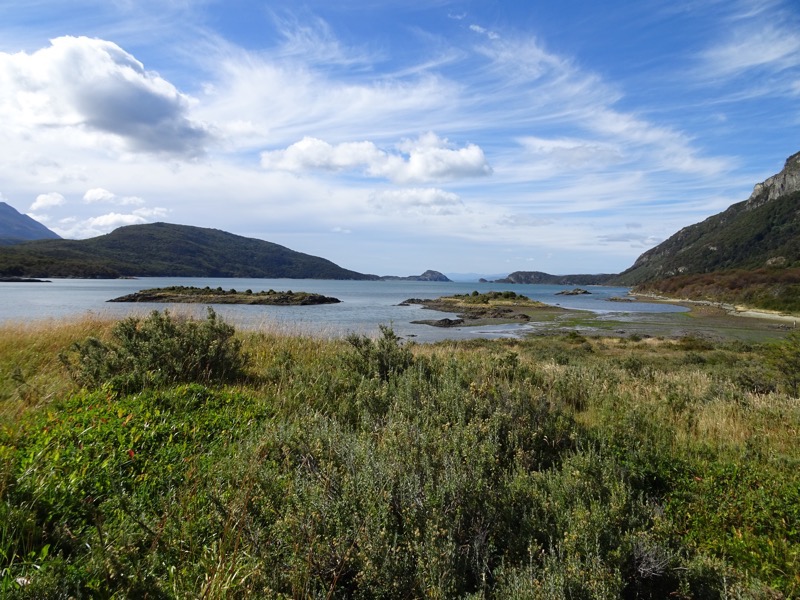
When I was here last year we arrived in this beautiful place and there was just our group of barely twelve people – today there were busloads of people here. Everyone was jostling to have their photo taken in front of the famous sign showing how far it is to Alaska, and then they were jostling for positions along the barriers to have their photos taken in front of the view. It’s still an amazingly beautiful place, but decidedly less serene than my last visit.
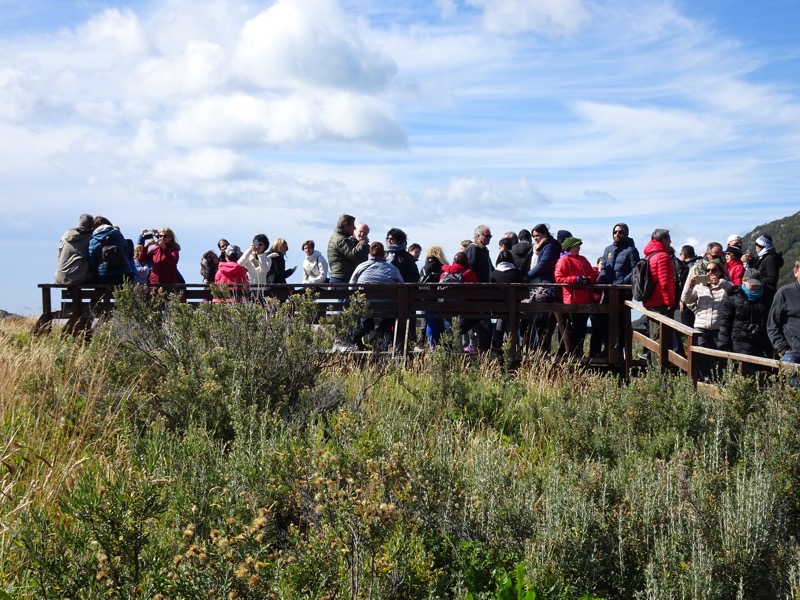
As a side note, I now quite strongly believe that whoever invented those Selfie Stick things should end up in Shepherd Book’s ‘Special Circle of Hell’, which as you all know is reserved for child molesters and people who talk in the cinema – and now the inventor of Selfie Sticks. People, when you travel, stop waving those things around inconsiderately – be social and ask someone nearby to take your photo, most of the time people are only too happy to oblige. </rant>
I am kinda pinching myself a bit today; I distinctly remember being here last year and thinking, “I want to just drink this place all in, I don’t imagine I’ll ever be back here.” The End of the World is singularly beautiful and I was so glad to be back here admiring the view again and looking at the gorgeous cloud formations, in spite of the crowds of pushy tourists. Seriously – click on this picture, or right click and open it in a new tab or something to see it in a decent size, it is so beautiful here…
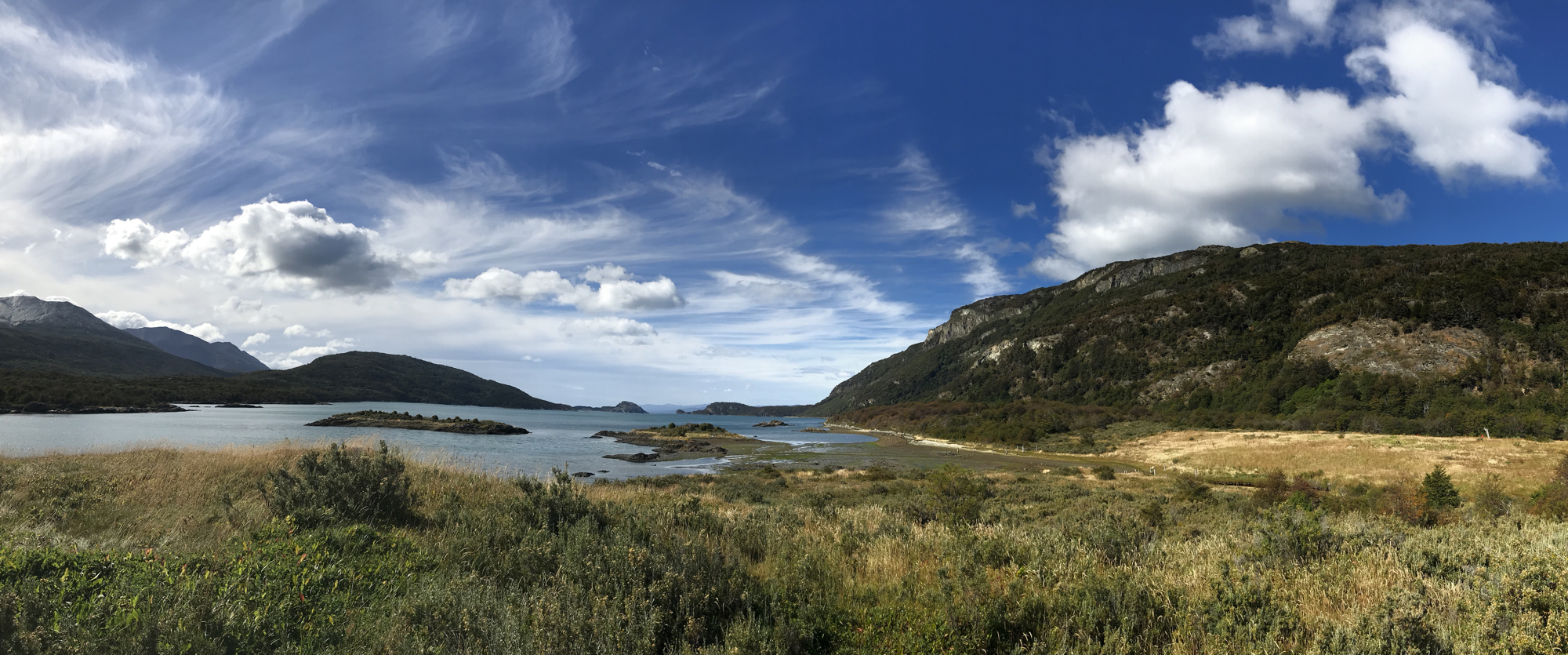
We head back into town after our walk around the End of the World and had about an hour before we had to head to our meeting point to embark the Ocean Diamond to begin our expedition. We decided to quickly find a few last minute supplies and then head back to the bar at the hotel we had stayed at last night because we knew they had reliable wifi and well… we already had the password. 🙂 The internet on the ship was a bit of a mystery – we had no idea how much it would cost or how reliable the access would be, so we figured we better say our goodbyes and send last-minute messages while we could.
So – what can you expect on a Quark Polar Expedition? We all still had absolutely no idea, but we were about to find out.
Eventually, 3:30 pm rolled around and we went down to the meeting point near the dock. We were filed onto buses and driven around the block into the commercial port area. There waiting for us was our Quark Expeditions, Ocean Diamond expedition ship. The atmosphere was a mix of excitement and anticipation with a palpable sense of apprehension… see, no one of really knows what to expect from this trip – once we were on the ship we are entirely in the hands of the expedition staff and no one appeared to have had done this type of trip before. Antarctica really is a once in a lifetime experience it would seem.
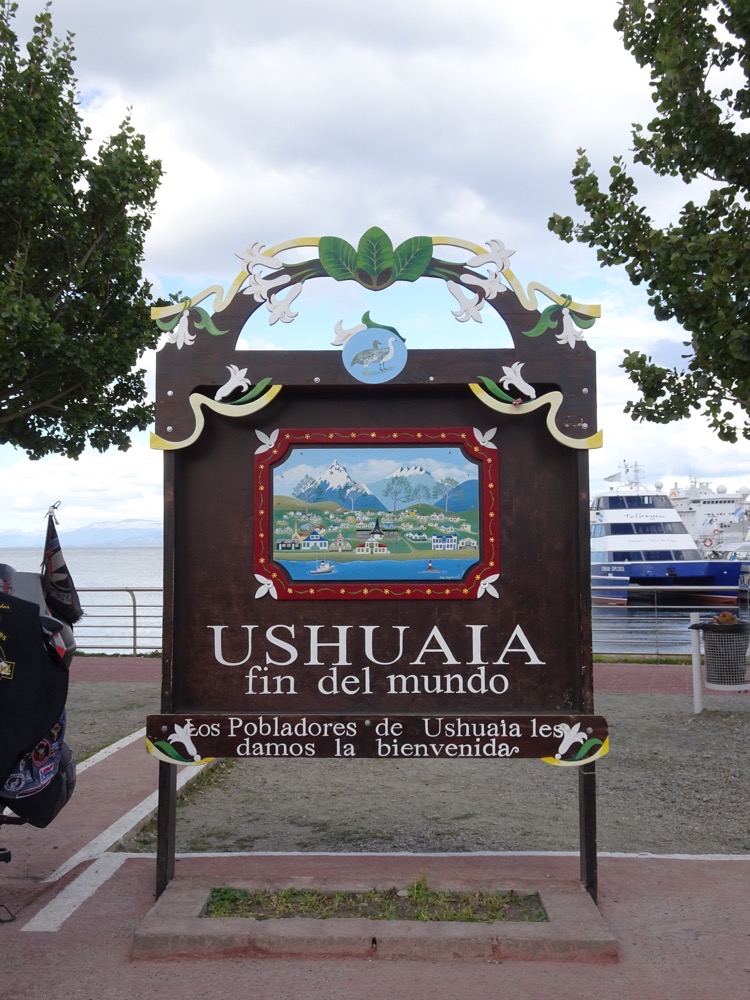
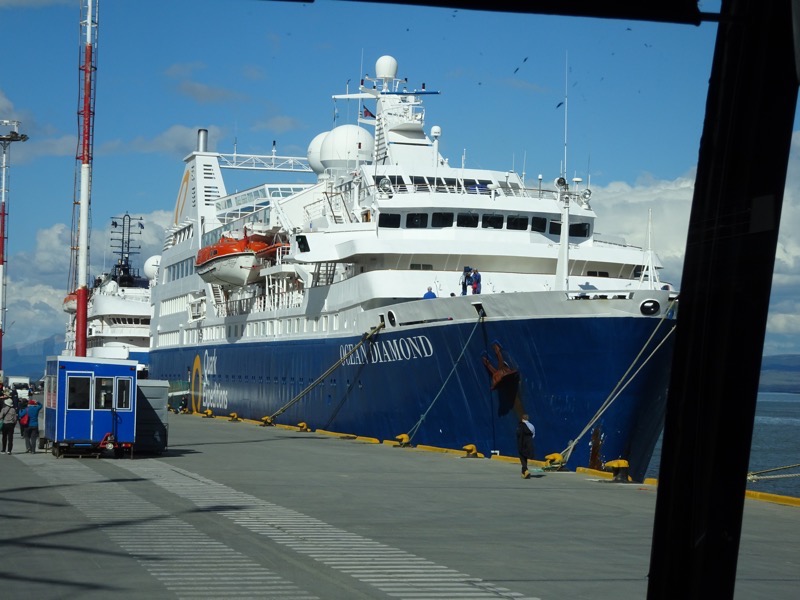
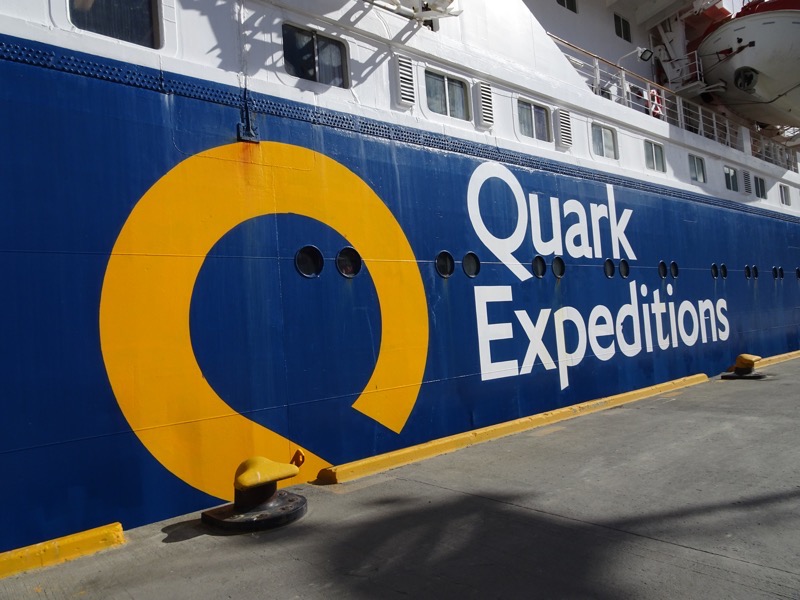
We were greeted by staff at the door and given our room keys and cruise cards, then escorted to our cabins to ensure our baggage had arrived. Our room is very cool – nice and larger than your average twin oceanview cabin. It’s well appointed and tastefully decorated – complete with cool penguin photos on the walls.
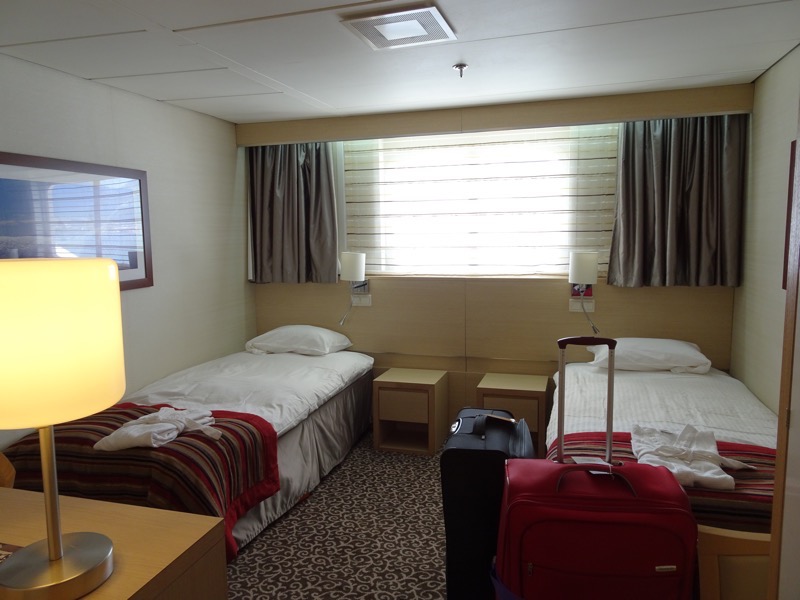
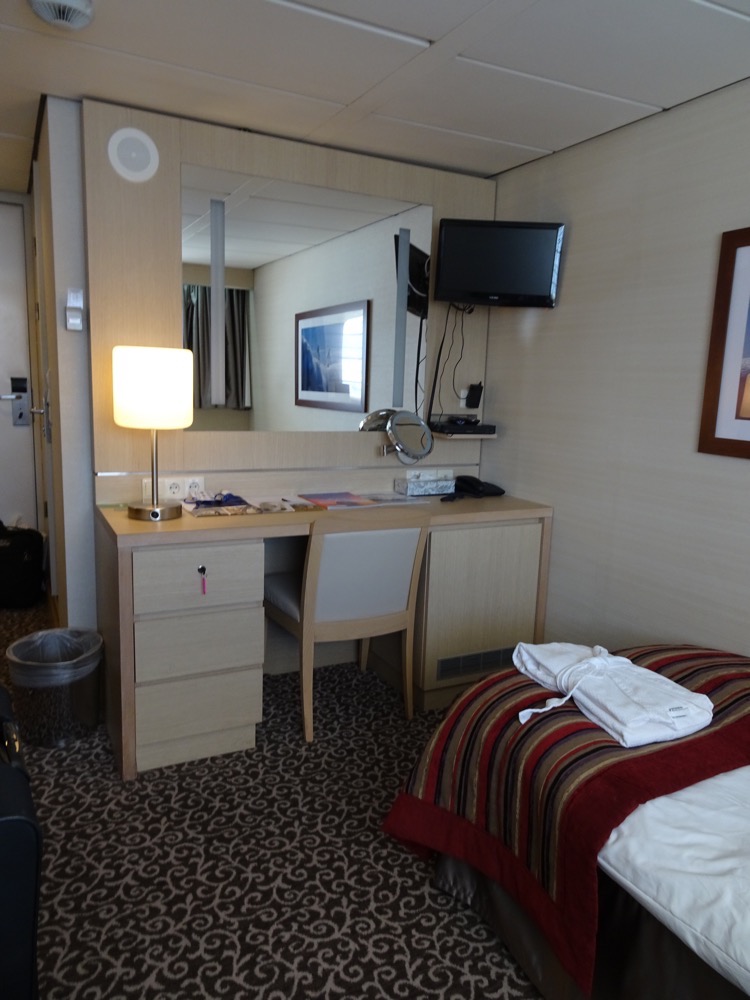
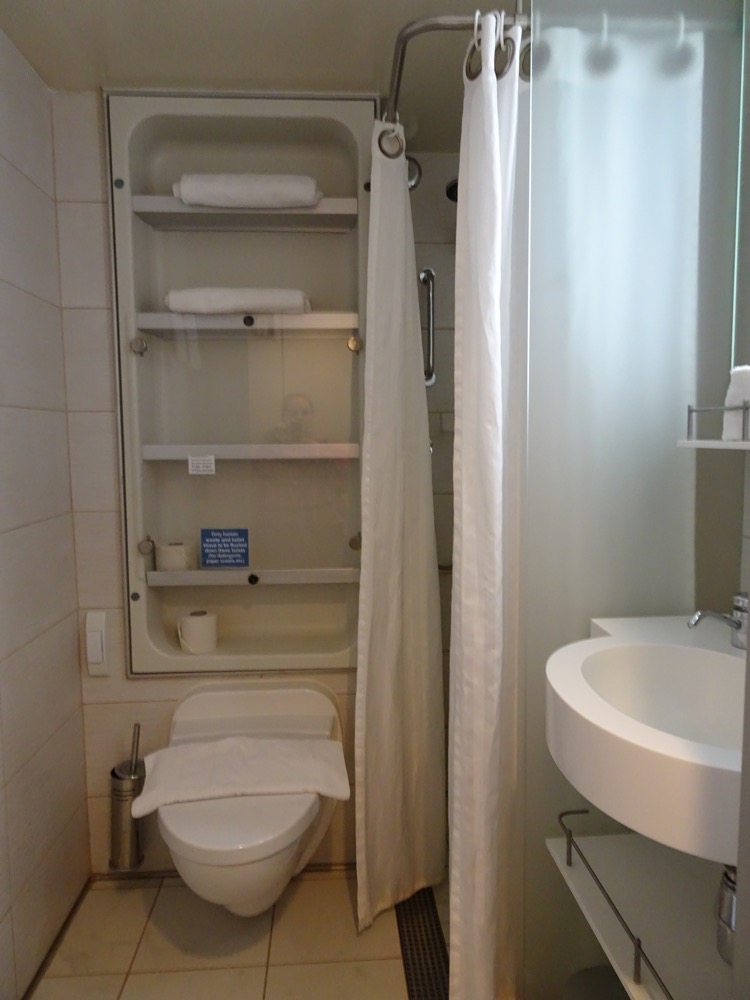
After this, we had our first briefing, where we were introduced to the Expedition Crew, which is comprised of about 20 polar experts from all over the world – geologists, ornithologists, marine biologists, a historian and all sorts. I will post up all their bios on a separate page or I’ll get too distracted. They are an extremely well-qualified bunch and it was rapidly apparent that they seriously enjoyed their jobs and were full of enthusiasm for the expedition even though they have all done it many times before. We dispersed from our initial briefing to go unpack, check all our luggage items had arrived and to await a safety drill that would be happening in the early evening.
We stored all our stuff carefully in anticipation of the dreaded crossing of the Drake Passage, and explored the ship a little – it is a beautiful small ship, with the Main Lounge for lectures, a Club Bar for recreating, a Dining Room large enough to seat everyone on board at once, a small fitness centre, health and beauty Spa and a wee Gift Shop. With only seven floors, the gangways and Dining Room are on Deck 3 and our cabin on Deck 6, so I could foresee a lot of stairs in our immediate future. 🙂
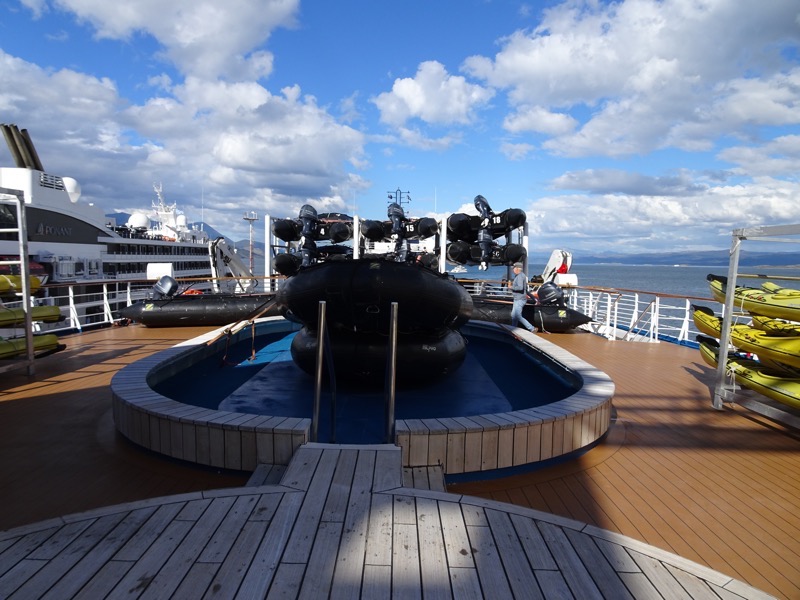
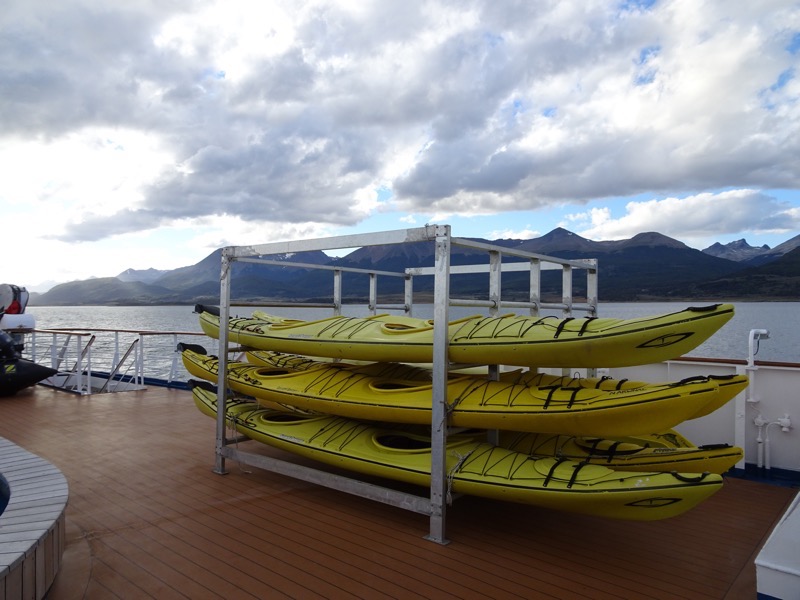
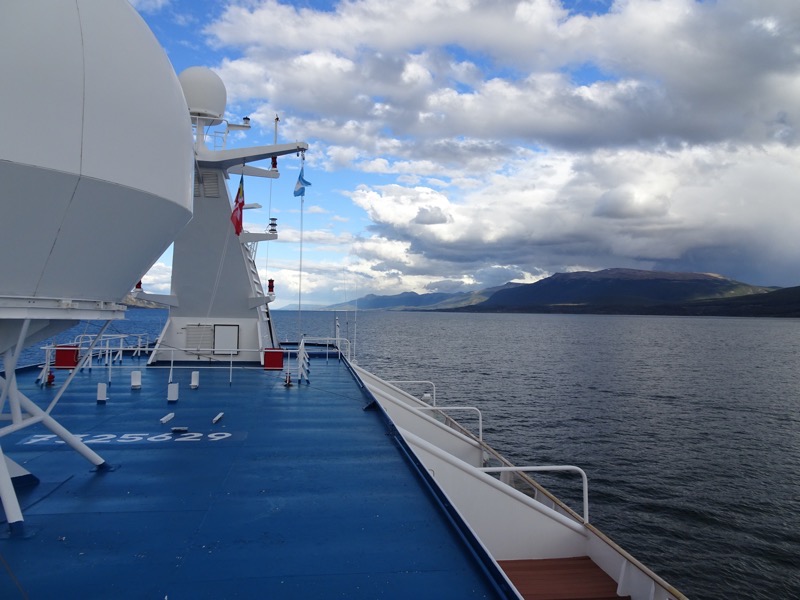
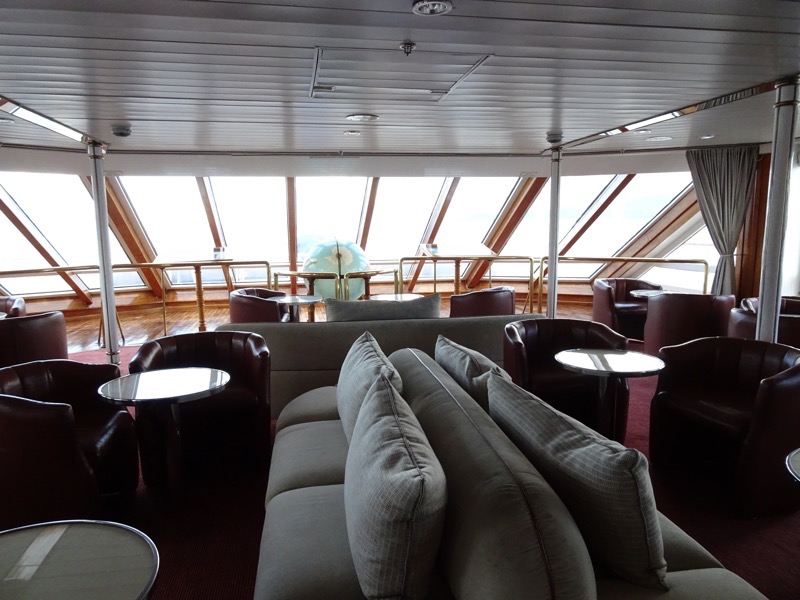
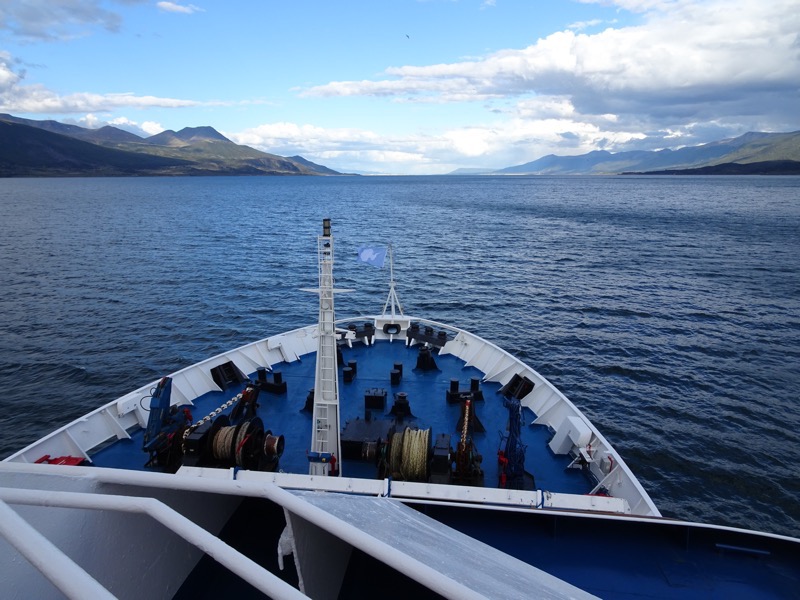
Safety drill was simple and pretty much as per every other ship safety drill I had done. We drilled in the Main Lounge with our life jackets and listened carefully to instructions about our muster points and what to do in case of emergency.
 We were then shepherded down to our designated lifeboats where we were waiting for the crew to do their drills before we would be given the ‘Okay’ to head back inside.
We were then shepherded down to our designated lifeboats where we were waiting for the crew to do their drills before we would be given the ‘Okay’ to head back inside.
While we were standing around underneath a happily very well secured lifeboat, waiting in our lifejackets for the drill to finish and some typical traveller small talk type conversations were happening around us – and while the following conversation is remarkable, it is also increasingly commonplace if you are a travelling Australian.
It went something like this:
Polite Man: “So, where are you guys from*?”
Me: (noting his Austrailian accent, I answered more local) “We’re from Brisbane.”
Polite Man: Really? (with a smile) “We are from just up the range, in Toowoomba.”
My Mum: (laughing) “I grew up in Toowoomba!”
Me: (also laughing) “And I was born in Toowoomba.”
Nearby Stranger, joining our conversation: “I’m from Toowoomba too!”
Me: (grinning now) “No way!”
Polite Man: “Unbelievable! We live in such-and-such-suburb.”
Stranger: “OMG, I grew up in SameSuburb too! And went to the SameSuburb School!”
Polite Man’s Wife (also laughing): “I used to teach at SameSuburb School! But you are far too young for me to have taught you.”
Stranger: “My Dad used to teach at Same Suburb School too! Do you know Jeff H.?”
Polite Man & Polite Man’s wife: “Yes! We know Jeff and Kate H… so that must make you, Jessica H.! Oh my! You know, I was just talking to your father before Christmas and… etc.”
Talk about a ‘Small World’… Happens on nearly every trip – someone runs into someone they know from a past job or an old school friend or an SCA acquaintance. It was a lot of fun to see this interaction unfold, with everyone shaking their heads at the coincidence of running into someone they were so closely connected to, some13,000 kilometres from home.
*Without variation, every single conversation between travellers start like this, by the way – “So, where are you from?” 🙂
Then it was time to be returning our lifejackets to our cabins and before long we were being summoned back to the Main Lounge to be issued with our official Quark Expeditions Polar Parka. Quark have for many years now issued their passengers with a parka of their own design for passengers to for use during the voyage, and which passengers get to take home to keep. I dare say it has stemmed from a recurring problem of people turning up ill-equipped to deal with the conditions here, and then over time has resulted in a jacket that best suits the type of zodiac expeditions that passengers will be taking part in every day – it is waterproof, insulated, hooded, has a pocket for room keys and plenty of snaps, bells and whistles. Very fancy, very warm and very bright fucking yellow. I dare say I will be very grateful for it over the next couple of weeks, but it is unlikely to ever see the light of day once I get back to Australia – so I opted for a Men’s L size jacket which is long enough to keep my butt warm and will perhaps make a good ski jacket for Mr K down the track. Besides, yellow is so not my colour! (NB: That is Pato photobombing in the background, we will find out more about Pato later).
 Before we knew it, it was time for dinner. At 7:30 we were greeted personally by the Maitre D’Hotel (Alex from Ukraine) and shown to a table with a very friendly waiter named Paulo. We were treated to a lovely five-course meal with complimentary beer, wine and soft drinks to accompany our meals.
Before we knew it, it was time for dinner. At 7:30 we were greeted personally by the Maitre D’Hotel (Alex from Ukraine) and shown to a table with a very friendly waiter named Paulo. We were treated to a lovely five-course meal with complimentary beer, wine and soft drinks to accompany our meals.
The sea was obviously expected to get a little rougher later tonight and we found this out in the traditional manner of passenger ships – sick bags had been placed in the stairwells for any guests who unexpectedly started to feel green around the gills! Ominously, an announcement also came over the PA system just after dinner that Dr Shannon, our onboard physician, would be in The Club after dinner handing our free seasickness medication for anyone who needed it…
All up an exhausting first day and we turned in fairly early being rocked to sleep in what turned out to be moderately rough seas overnight. I love being at sea!

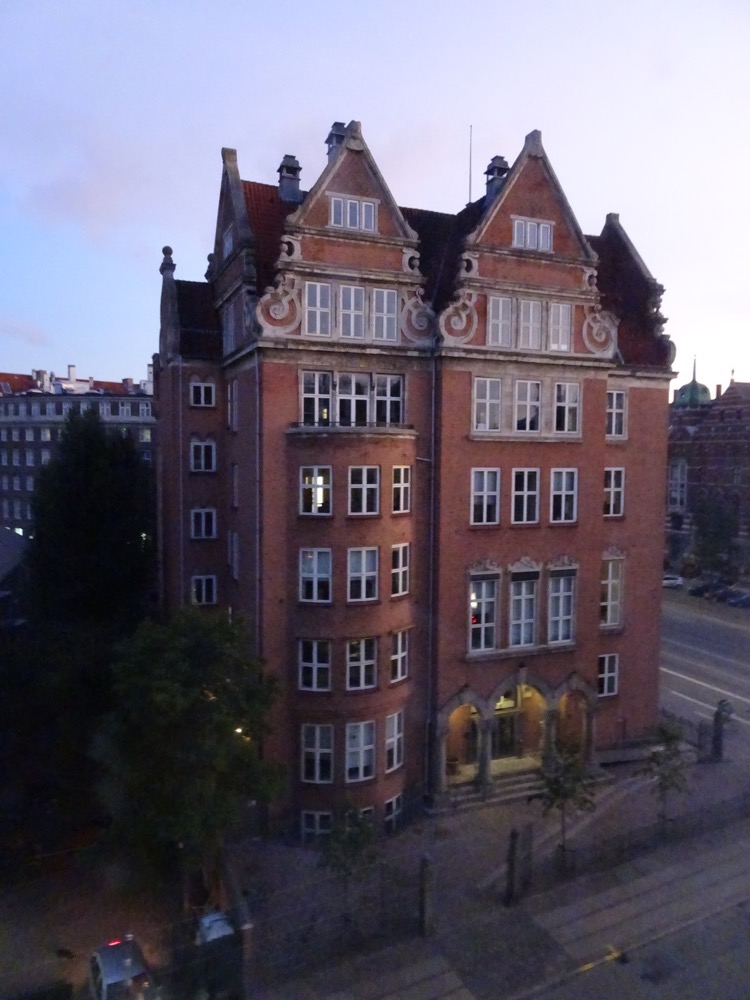 We took the train to Helsingor, which took about 40 minutes from Copenhagen Central Station. The Copenhagen Pass has been great – covered all public transport costs and nearly all our musuem and attraction entry costs.
We took the train to Helsingor, which took about 40 minutes from Copenhagen Central Station. The Copenhagen Pass has been great – covered all public transport costs and nearly all our musuem and attraction entry costs.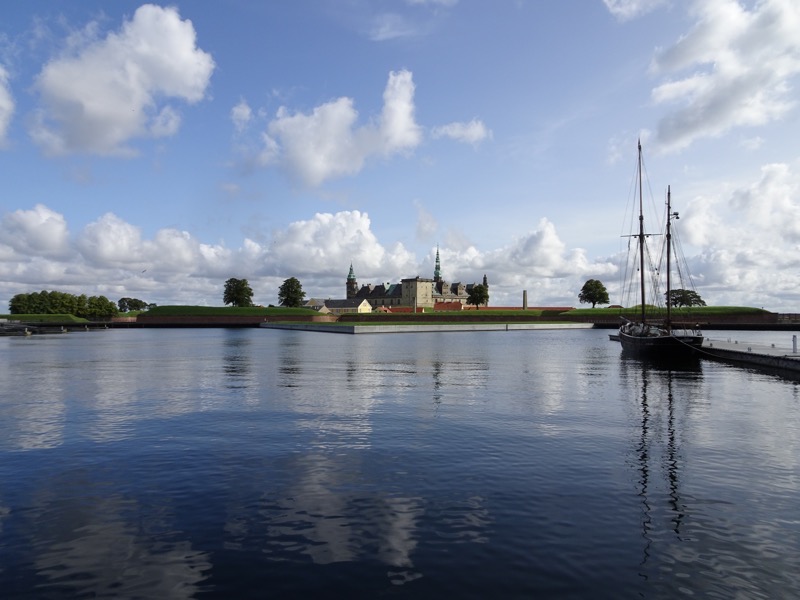
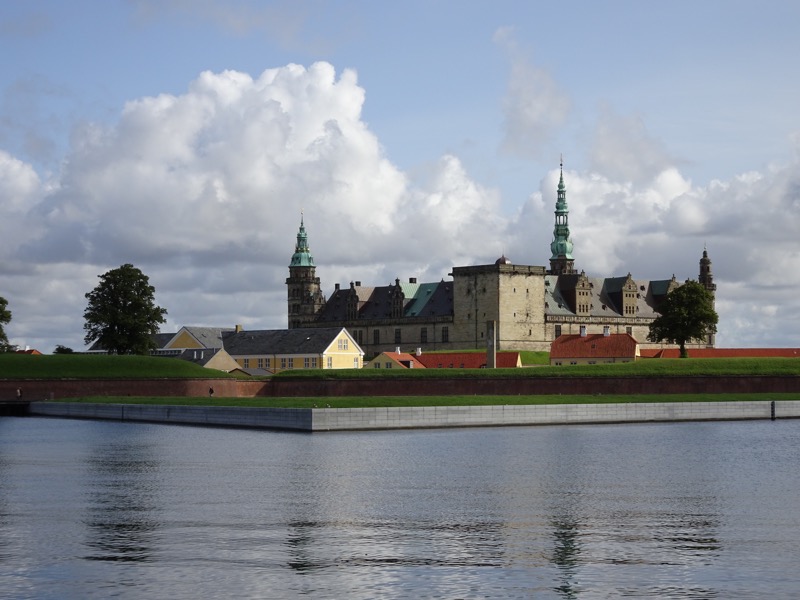 The castle is located at the north-easternmost tip of the island of Zealand, which is also the narrowest point of the Oresund Sound – the body of water between modern day Denmark and Sweden, just as it was at the time the castle was built. Here, it is barely 4 kilometers to Sweden. The coastal fortification was of major strategic importance as it commanded one of the few outlets to the Baltic Sea.
The castle is located at the north-easternmost tip of the island of Zealand, which is also the narrowest point of the Oresund Sound – the body of water between modern day Denmark and Sweden, just as it was at the time the castle was built. Here, it is barely 4 kilometers to Sweden. The coastal fortification was of major strategic importance as it commanded one of the few outlets to the Baltic Sea.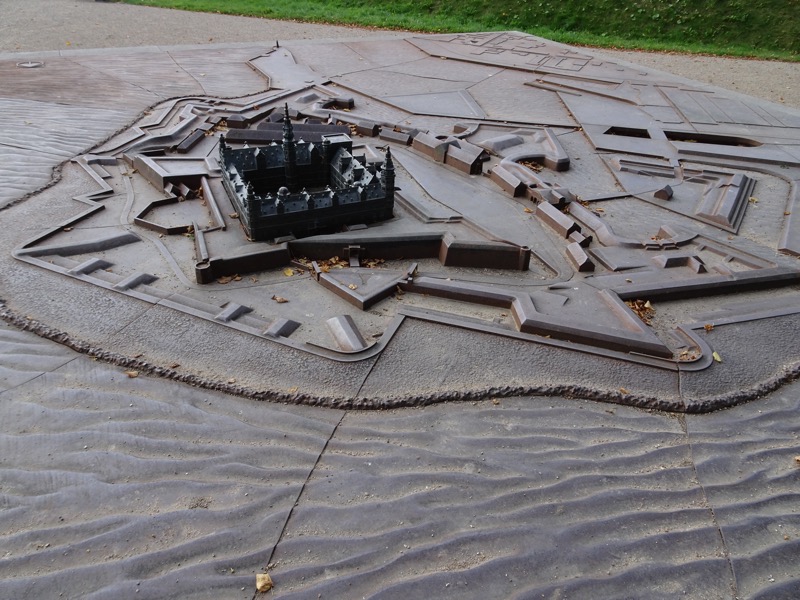
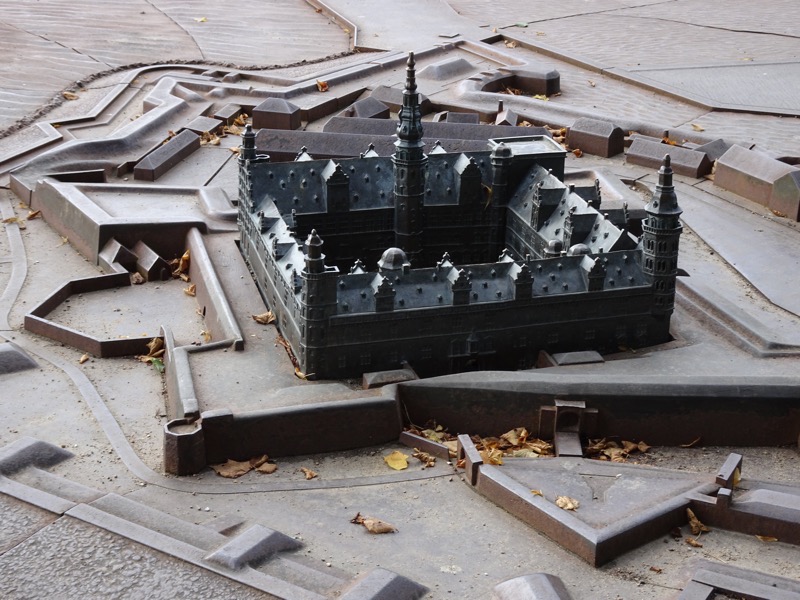
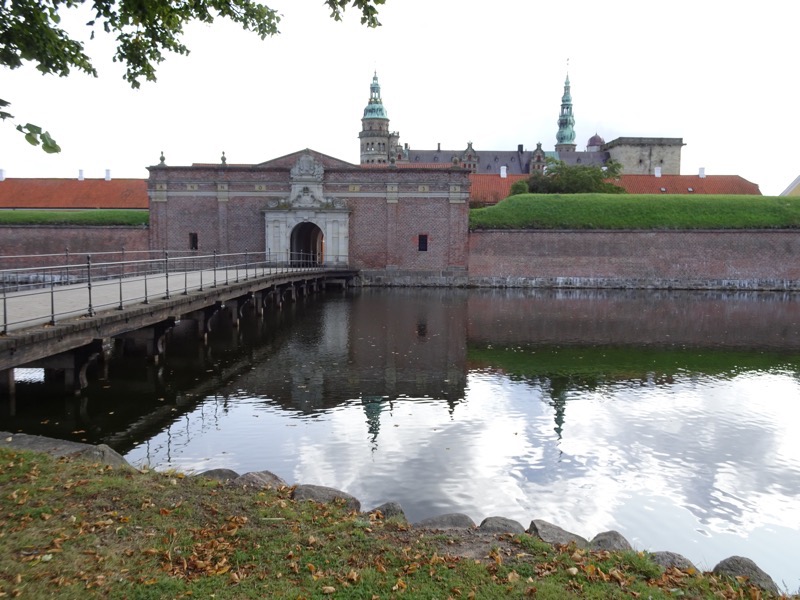
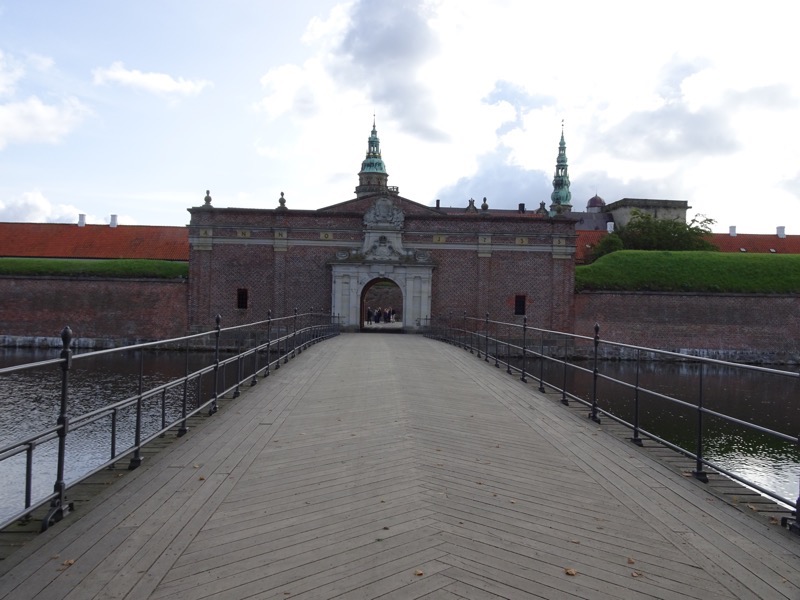 The castle is surrounded by garrisons and barrack buildings.
The castle is surrounded by garrisons and barrack buildings.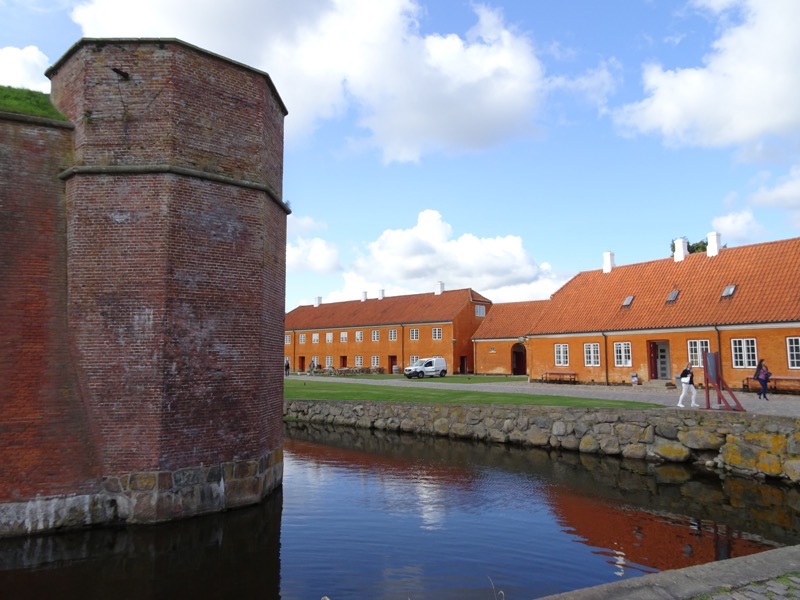 Main entrance to the castle keep.
Main entrance to the castle keep.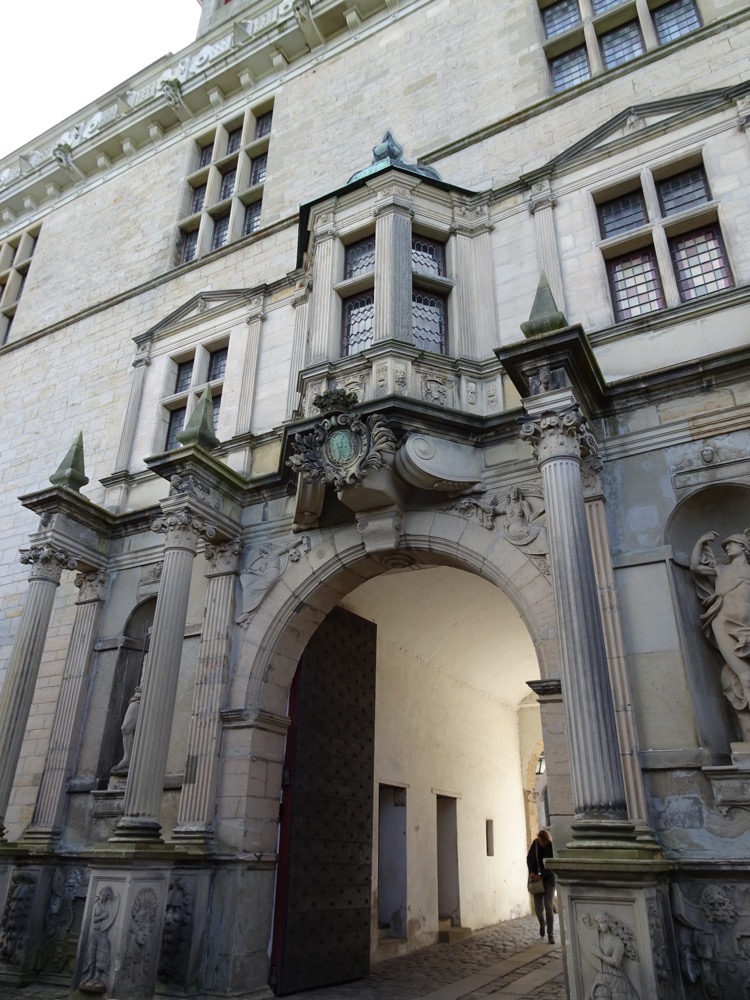
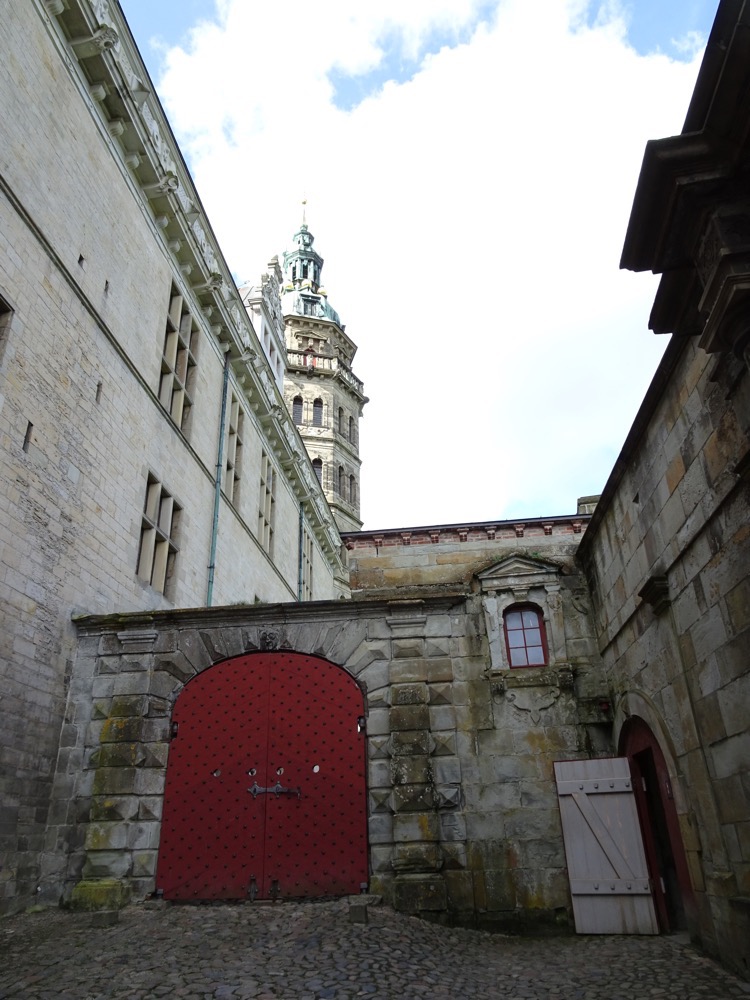 The central courtyard and the Canon Tower.
The central courtyard and the Canon Tower.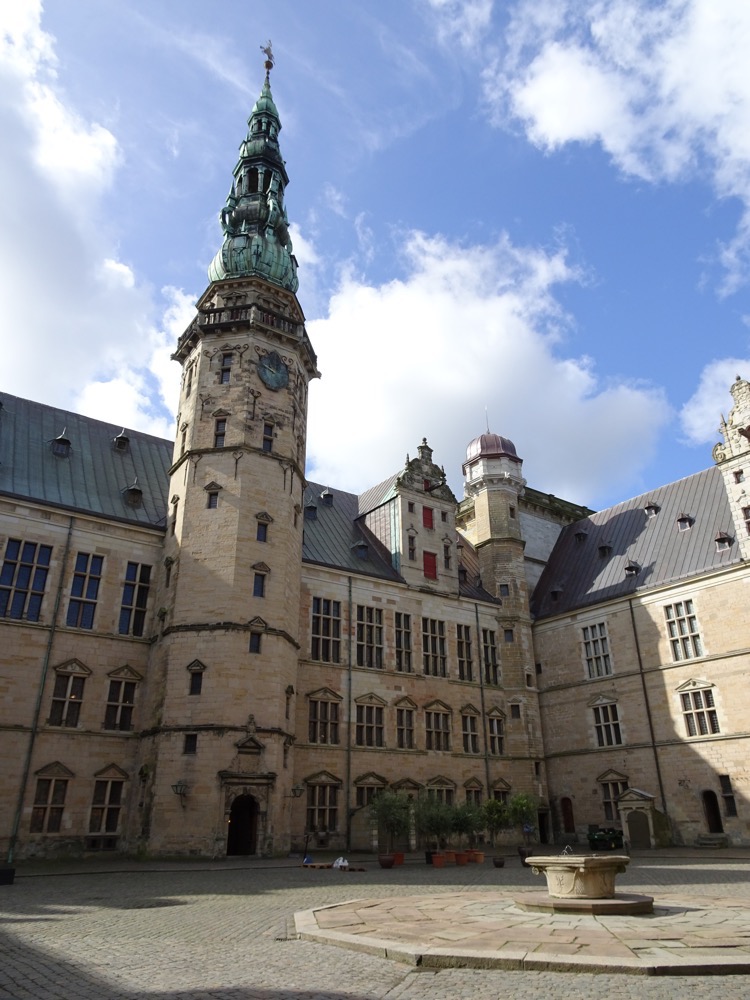
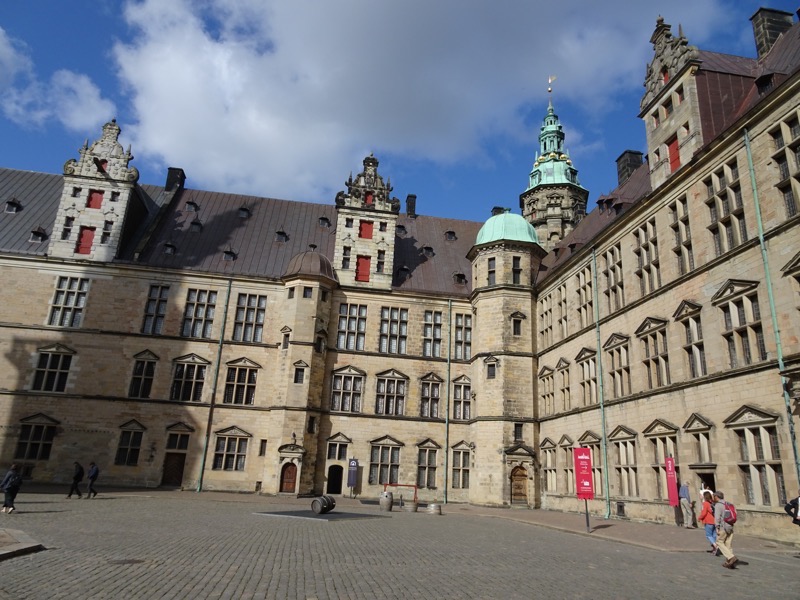
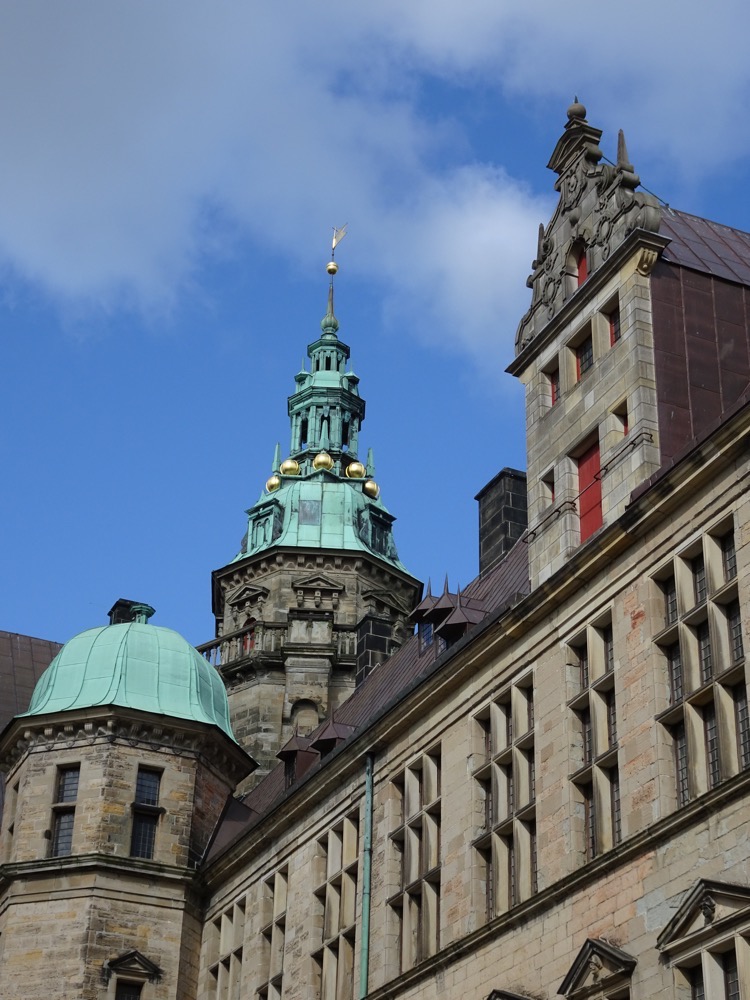 Love the old Medieval spiral staircases with their worn stone staris.
Love the old Medieval spiral staircases with their worn stone staris.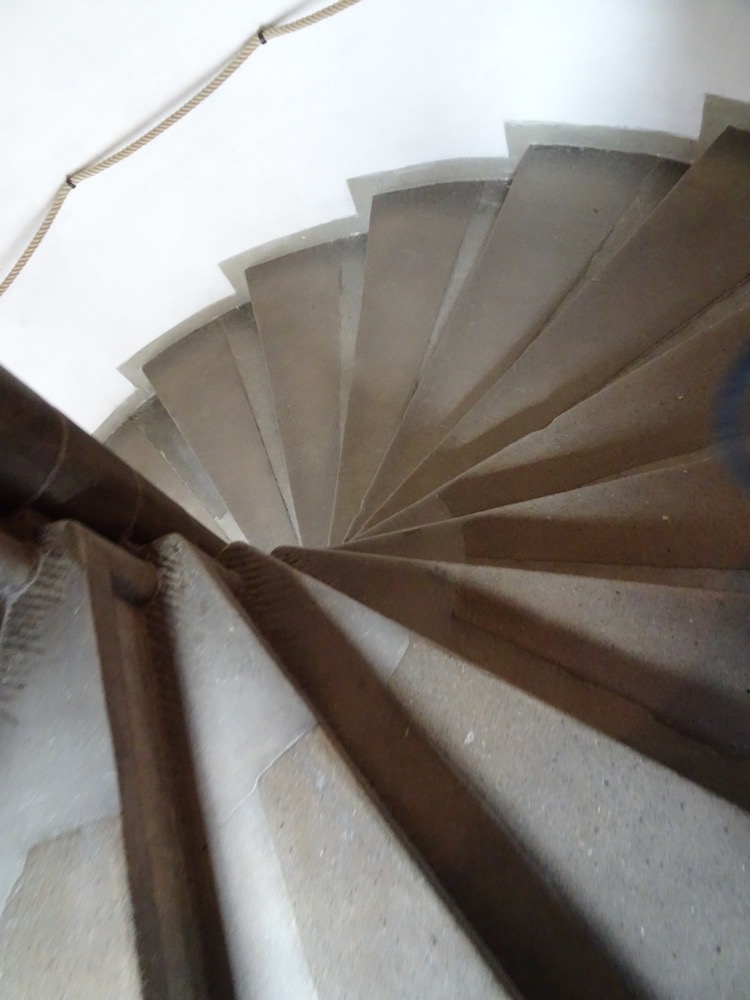 The King’s apartments.
The King’s apartments.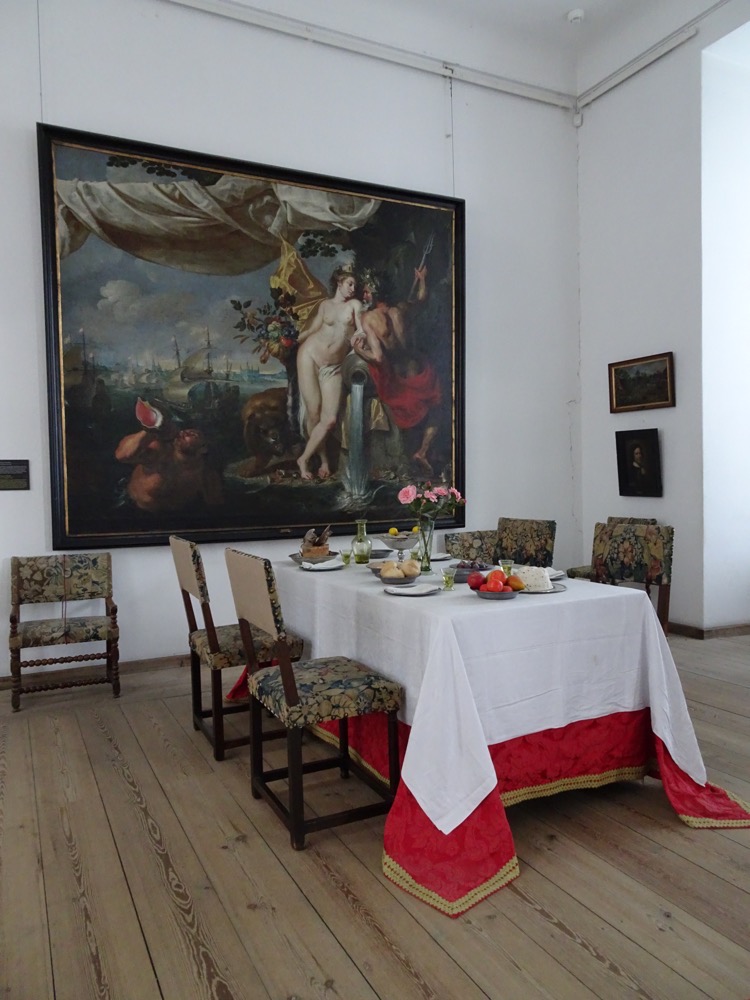 See that land over there? That’s Sweden. Much closer than you’d expect.
See that land over there? That’s Sweden. Much closer than you’d expect.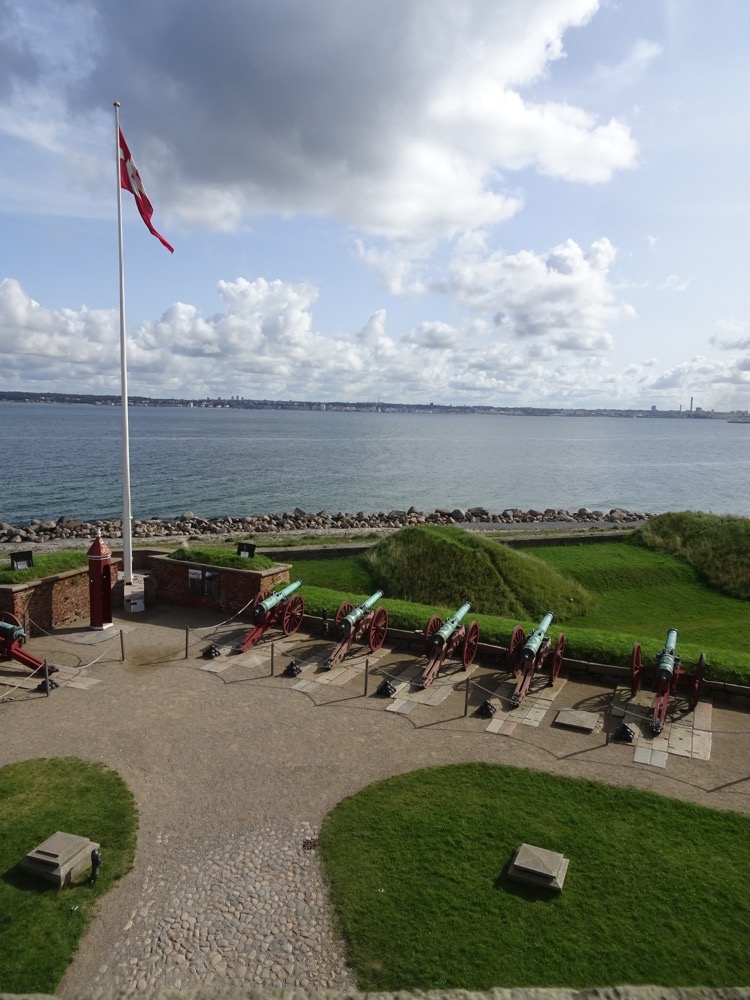 We were headed into ‘the King’s Tapestry Rooms’, which I have to admit I was entering with some trepidation after seeing the very very frightening, Queen’s tapestries made for Queen Margarethe II on the occasion of her 50th birthday at Christiansborg Palace. Thankfully these were not so scary.
We were headed into ‘the King’s Tapestry Rooms’, which I have to admit I was entering with some trepidation after seeing the very very frightening, Queen’s tapestries made for Queen Margarethe II on the occasion of her 50th birthday at Christiansborg Palace. Thankfully these were not so scary.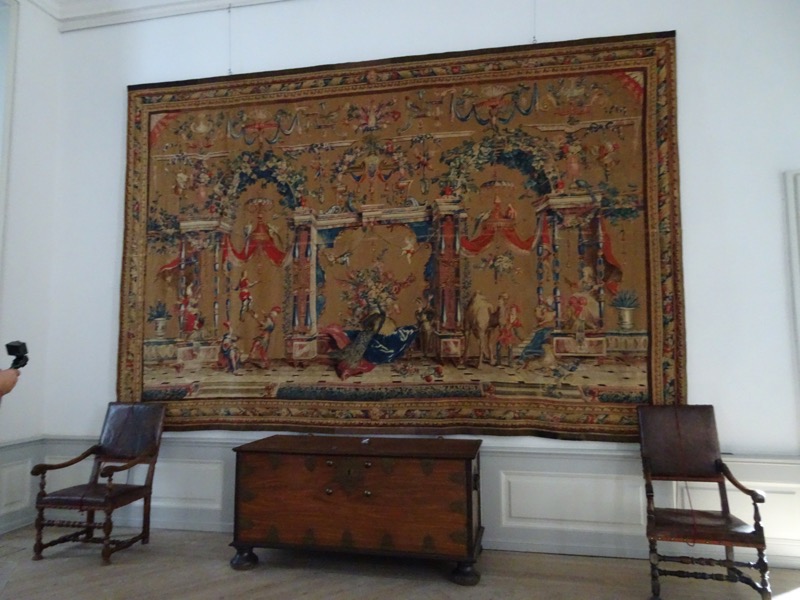 Tapestires, late period, possibly 17th-18th century. There was no information on these ones, they are not the “King’s Tapestries” that we were looking for.
Tapestires, late period, possibly 17th-18th century. There was no information on these ones, they are not the “King’s Tapestries” that we were looking for.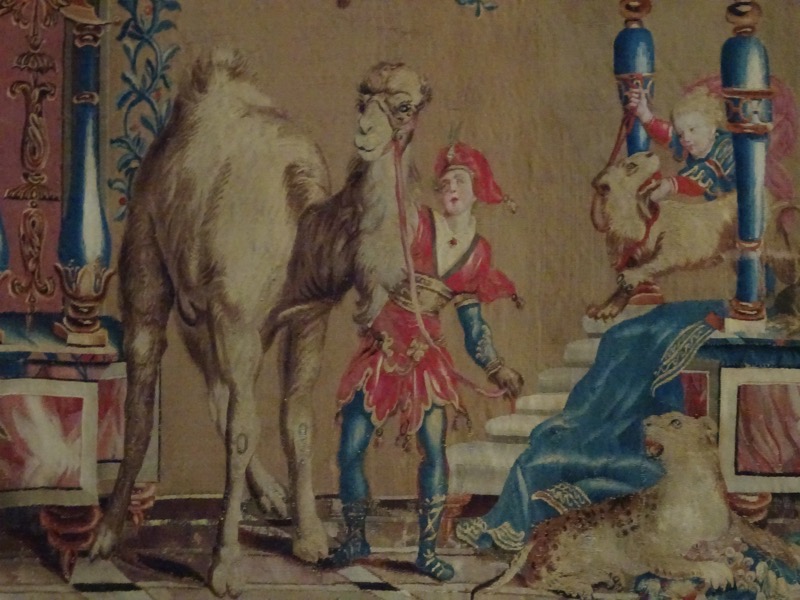
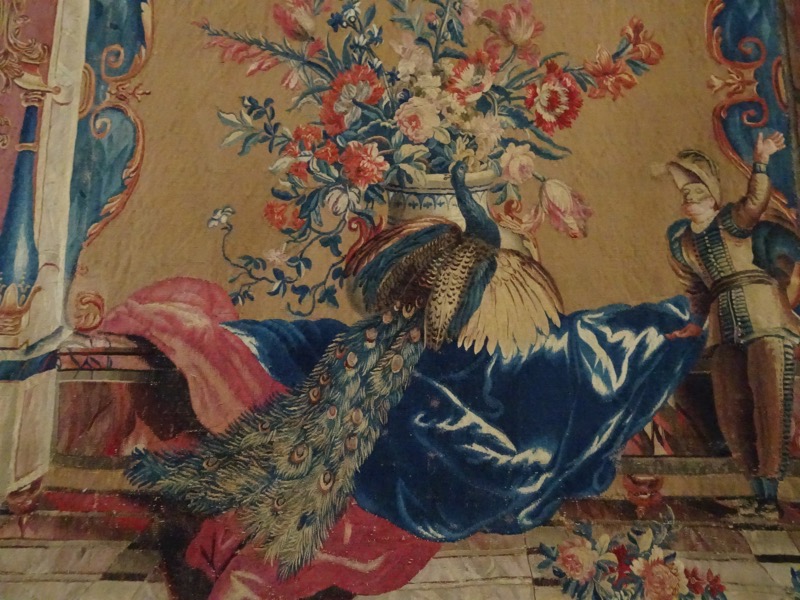
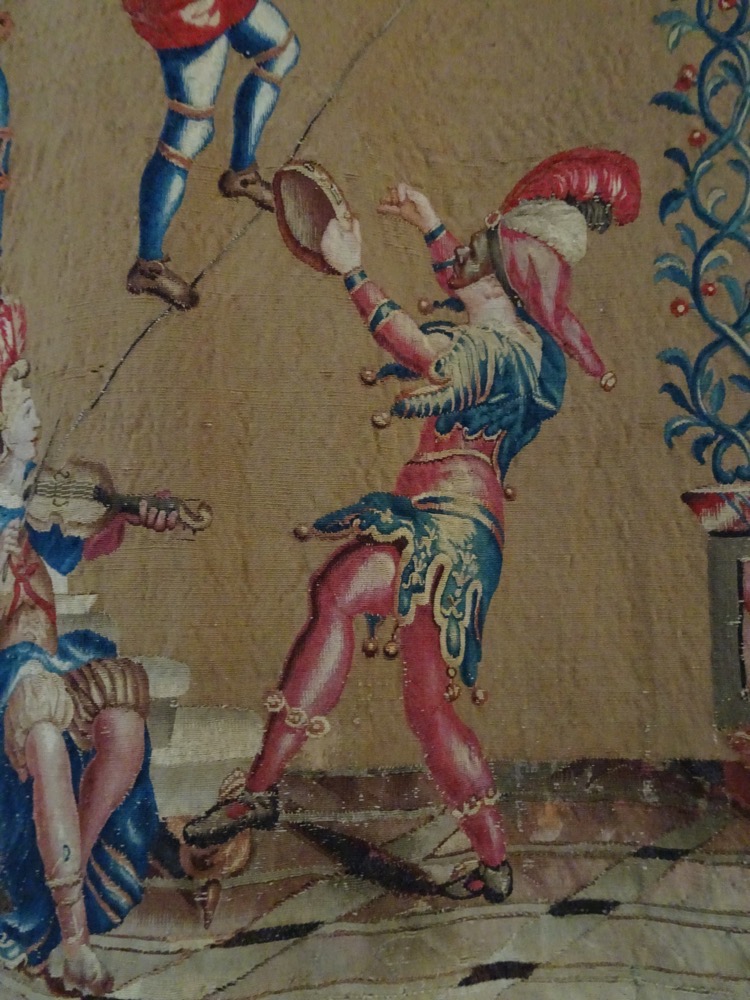 Small apartments with primarily 17th century furnishings.
Small apartments with primarily 17th century furnishings.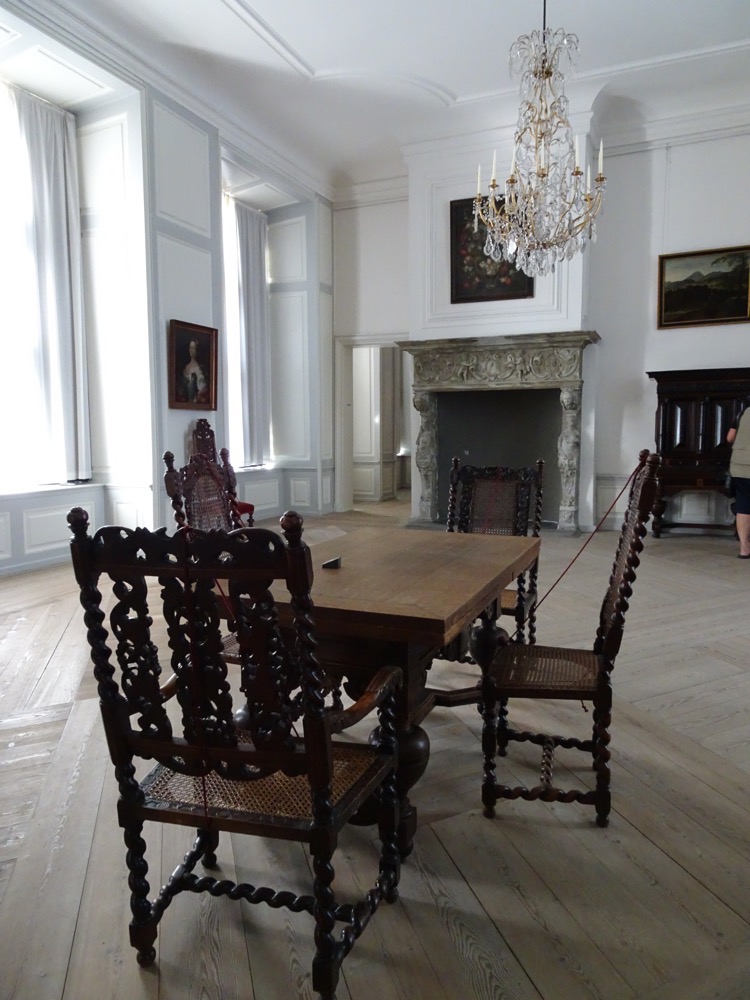 Another later period tapestry…
Another later period tapestry…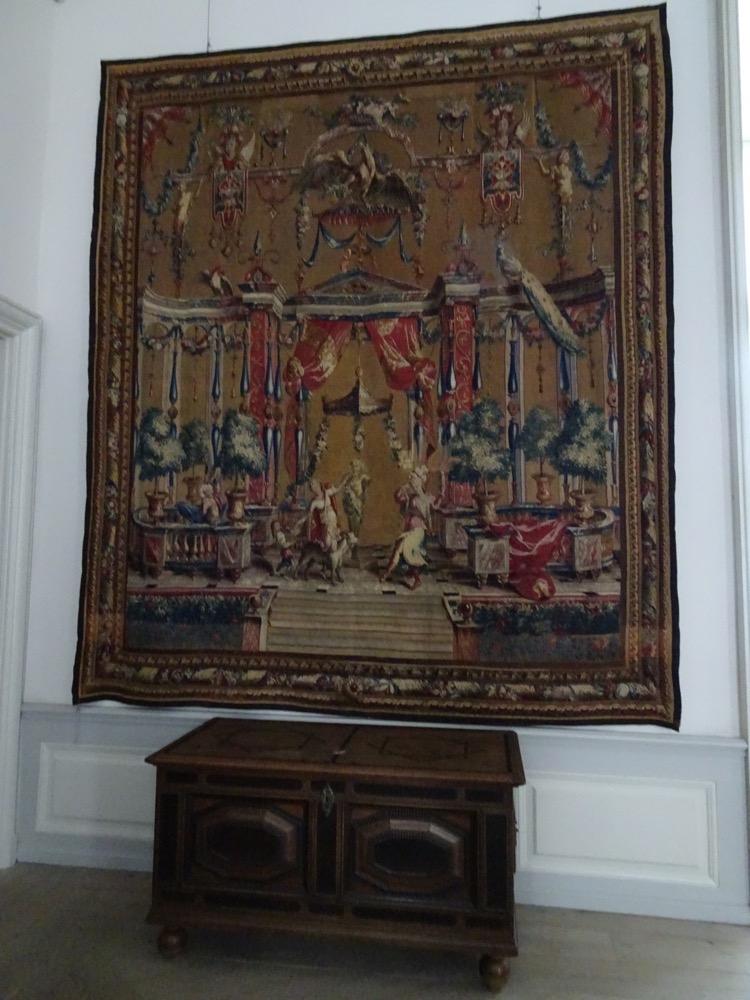 …with a chick riding a goat. Gotta love it.
…with a chick riding a goat. Gotta love it.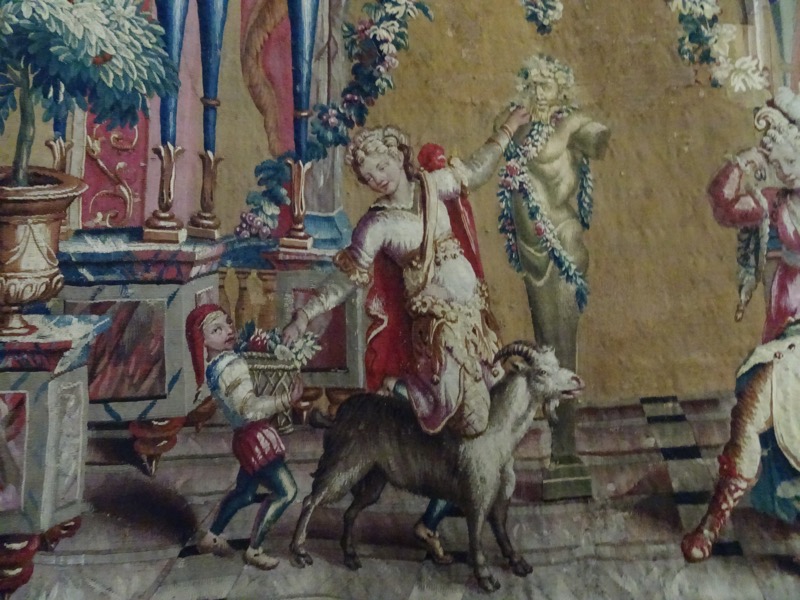 The King’s bedchamber… which seems very modest compared to some of the grand bedchambers we have seen for monarchs in the last couple of weeks.
The King’s bedchamber… which seems very modest compared to some of the grand bedchambers we have seen for monarchs in the last couple of weeks. 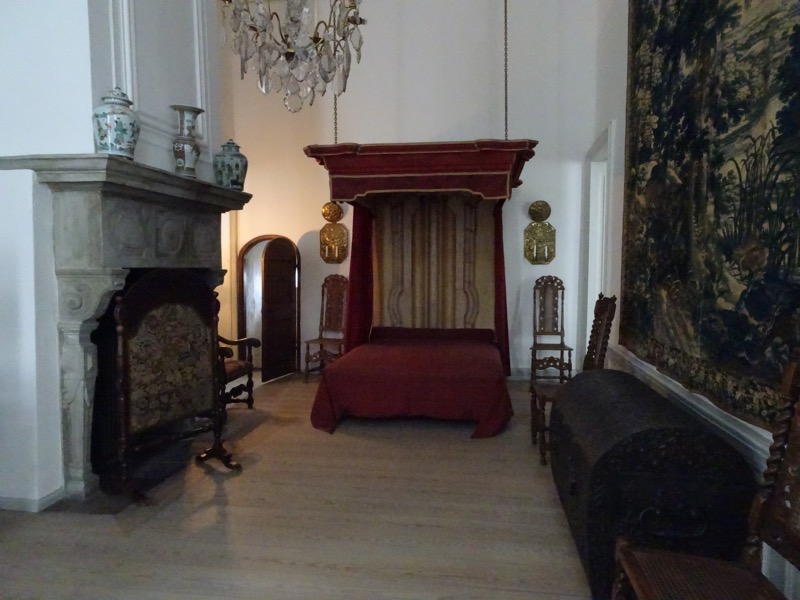
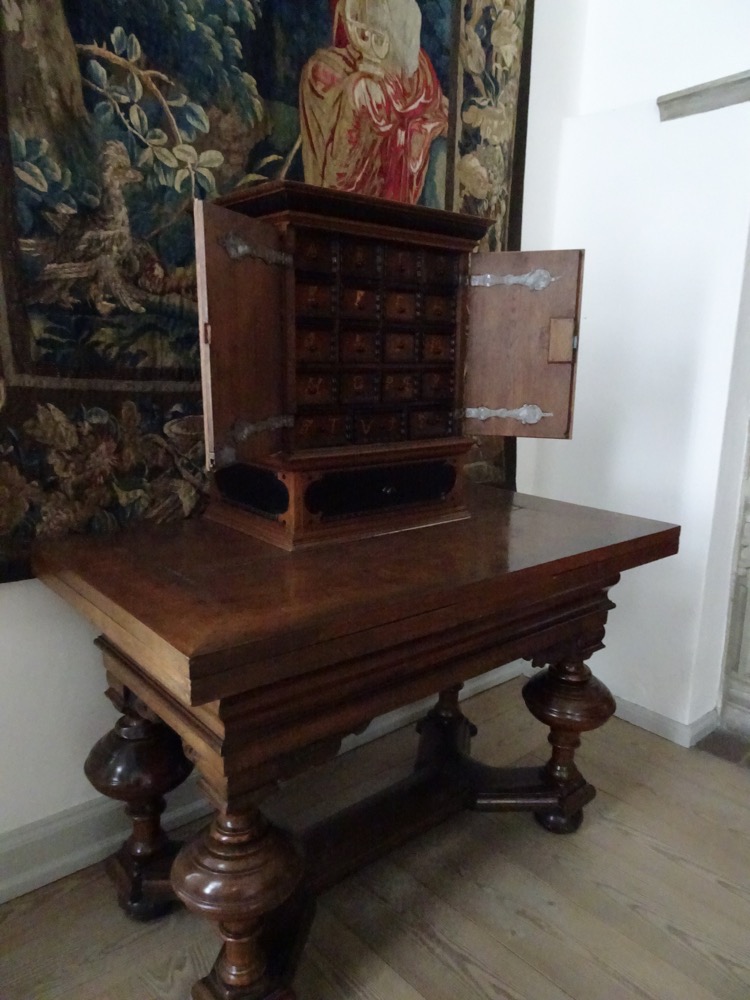
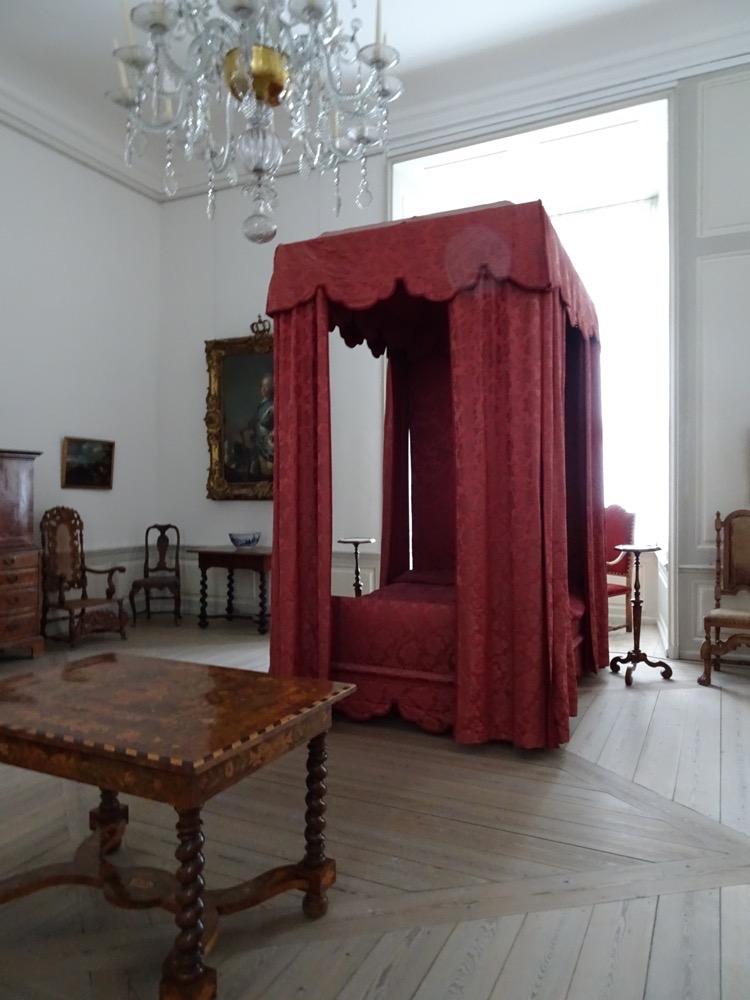 Older tapestries in the Little Gallery, though these too, are still not the “King’s Tapestries” that we were looking for.
Older tapestries in the Little Gallery, though these too, are still not the “King’s Tapestries” that we were looking for.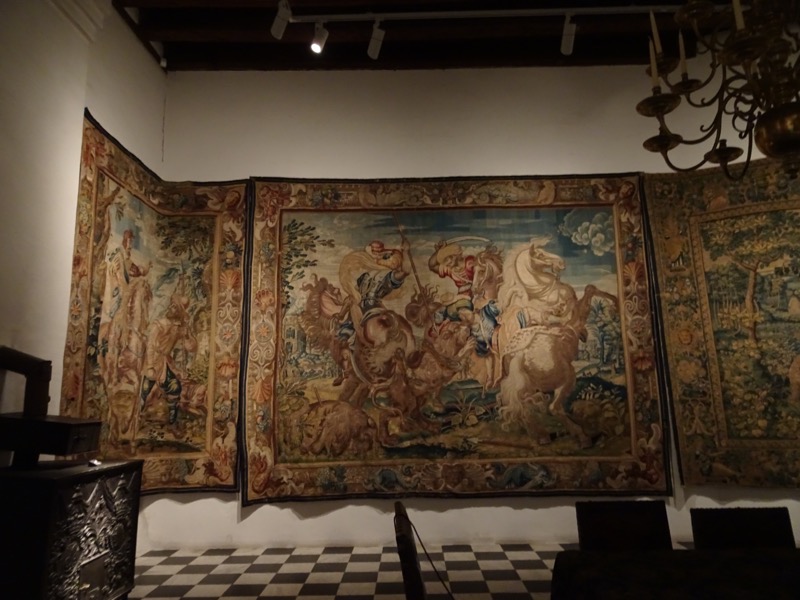
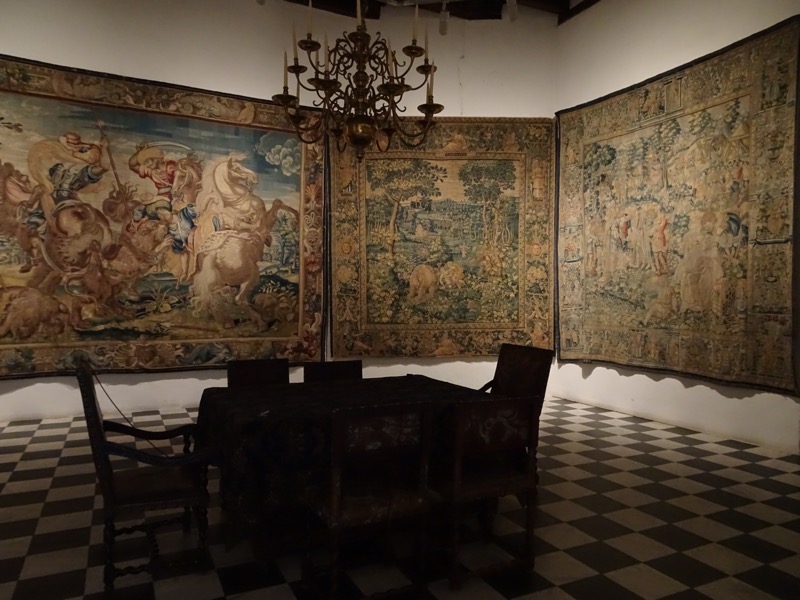 Detail: Pelican or Pheonix?
Detail: Pelican or Pheonix?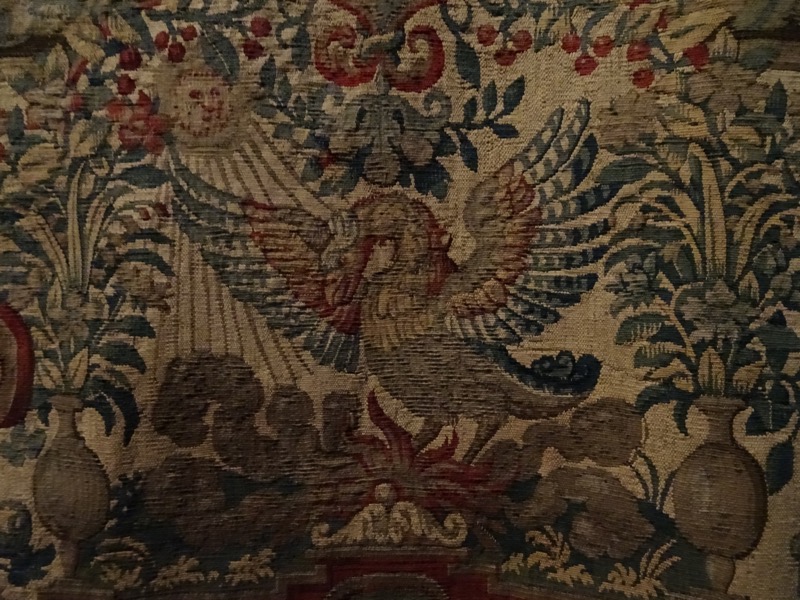
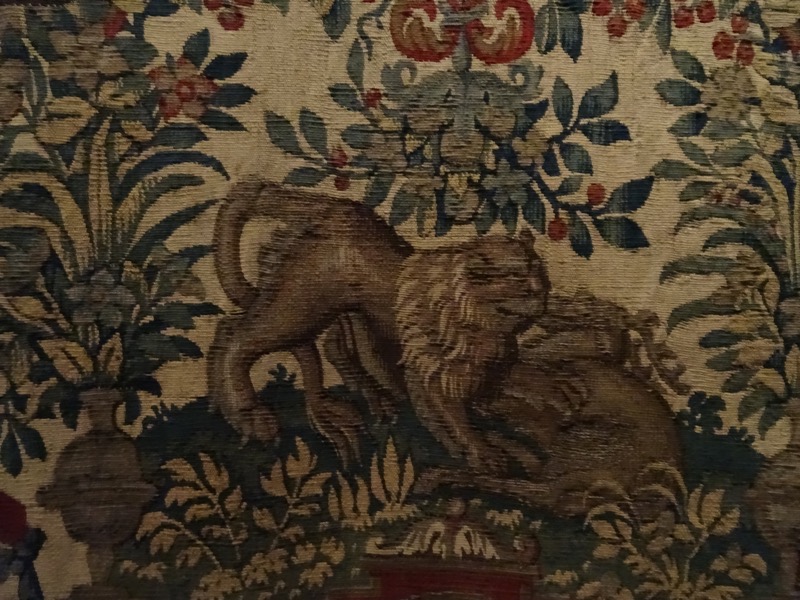
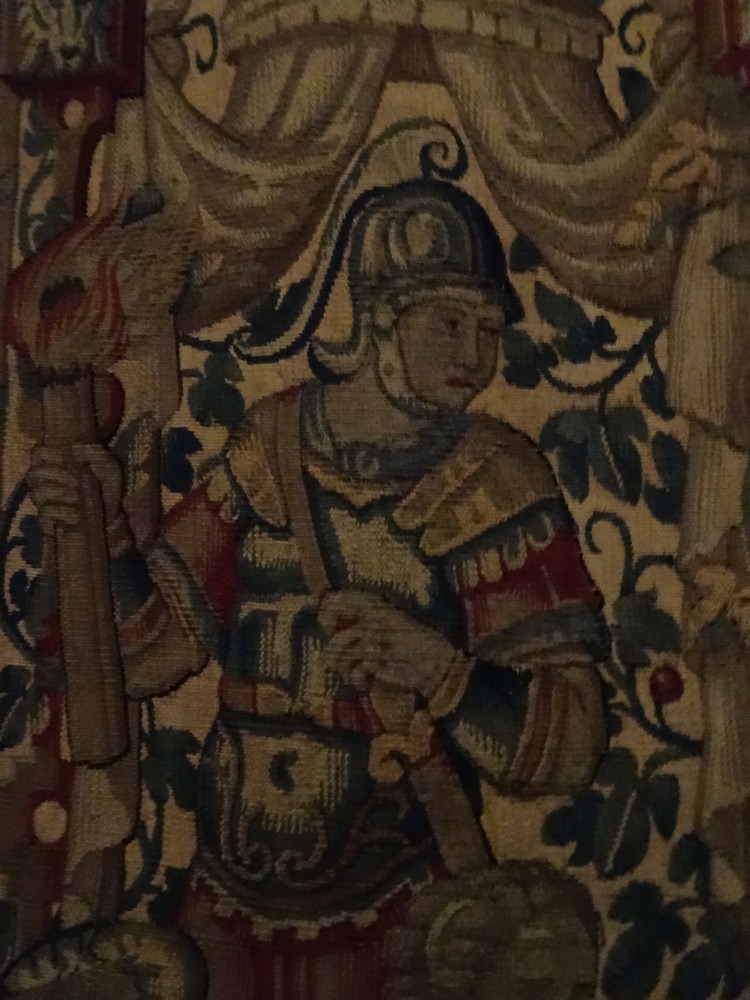
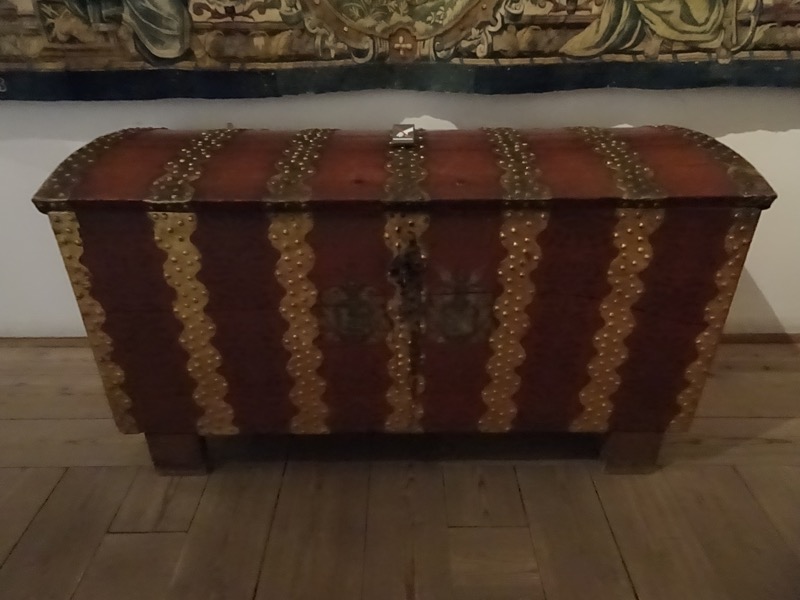
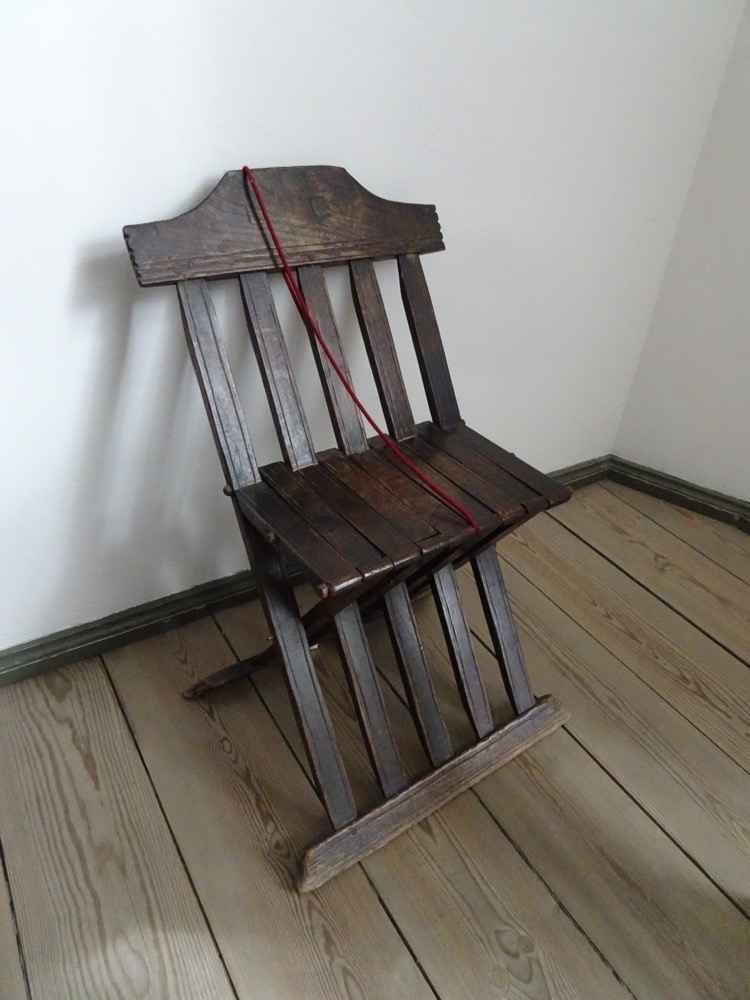
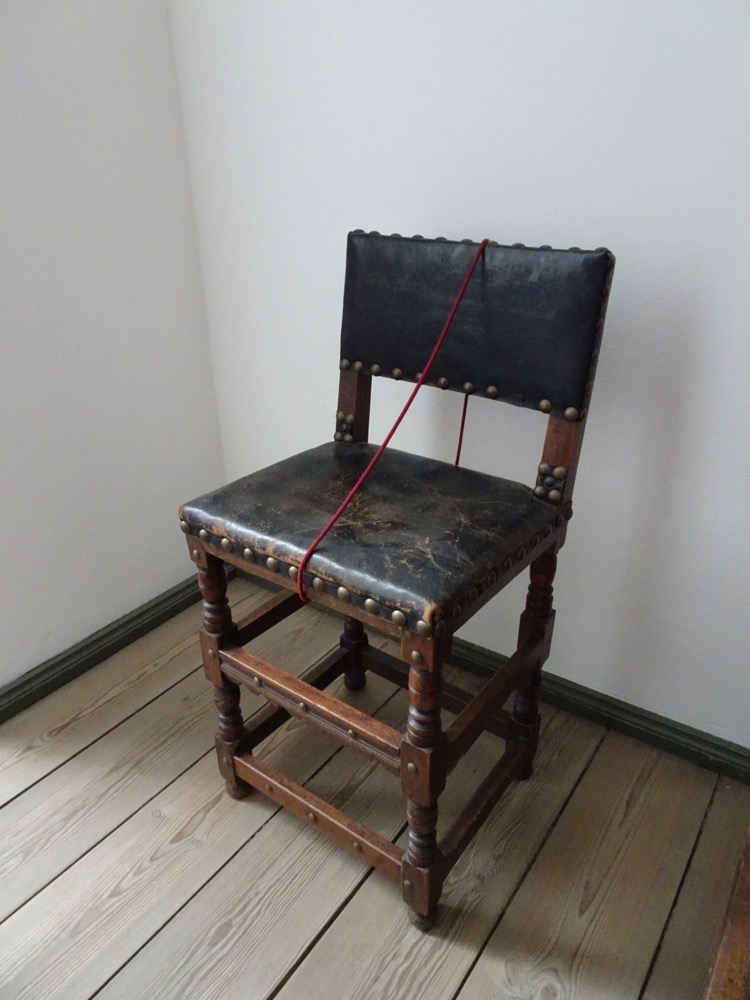
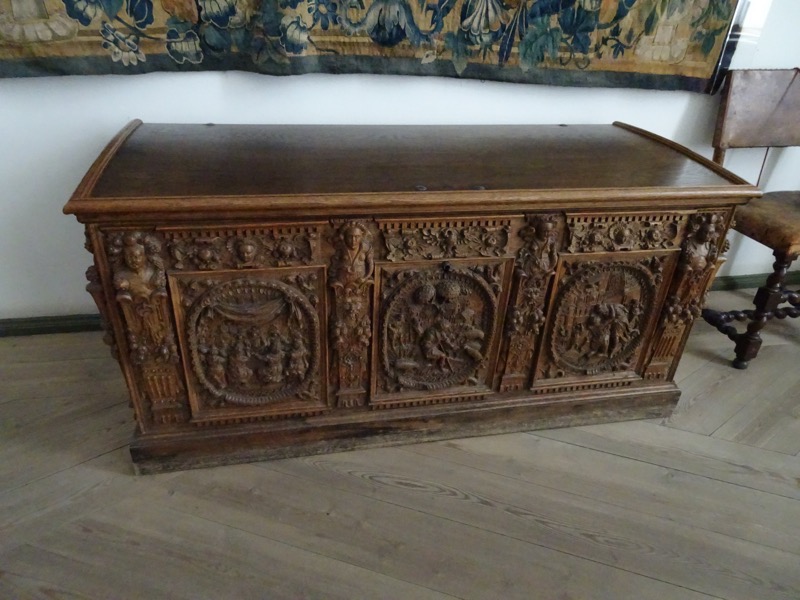 Finally, we found “The Kings Tapestries” Teh walls of the Little Hall are furnished with seven tapestries that were originally from a series of some forty tapestries each depicting the one hundred Danish Kings.. The walls of the Little Hall are furnished with seven tapestries originally from a series of forty tapestries portraying one hundred Danish kings. These Medieval textile masterpieces include the Tapestry depicting Oluf (reigned 1376-1387 and Tapestry depicting King Knud VI (reigned 1182-1202) and they were all commissioned in 1580. There are another seven tapestries from this Medieval series hanging at the National Museum of Denmark, which we visited the other day – but at the time, we could not find any information on the tapestries we viewed there because the Medieval galleries were not so well labelled. So, mystery solved! Unfortunately, other than these fourteen surviving tapestries, the remainder have been lost.
Finally, we found “The Kings Tapestries” Teh walls of the Little Hall are furnished with seven tapestries that were originally from a series of some forty tapestries each depicting the one hundred Danish Kings.. The walls of the Little Hall are furnished with seven tapestries originally from a series of forty tapestries portraying one hundred Danish kings. These Medieval textile masterpieces include the Tapestry depicting Oluf (reigned 1376-1387 and Tapestry depicting King Knud VI (reigned 1182-1202) and they were all commissioned in 1580. There are another seven tapestries from this Medieval series hanging at the National Museum of Denmark, which we visited the other day – but at the time, we could not find any information on the tapestries we viewed there because the Medieval galleries were not so well labelled. So, mystery solved! Unfortunately, other than these fourteen surviving tapestries, the remainder have been lost.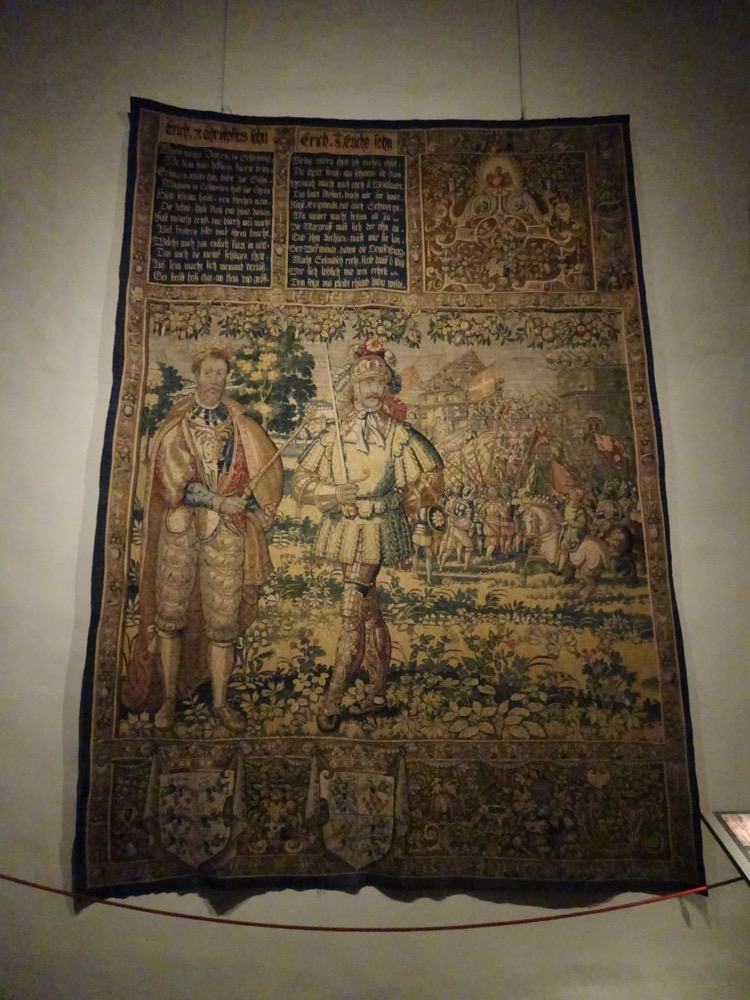
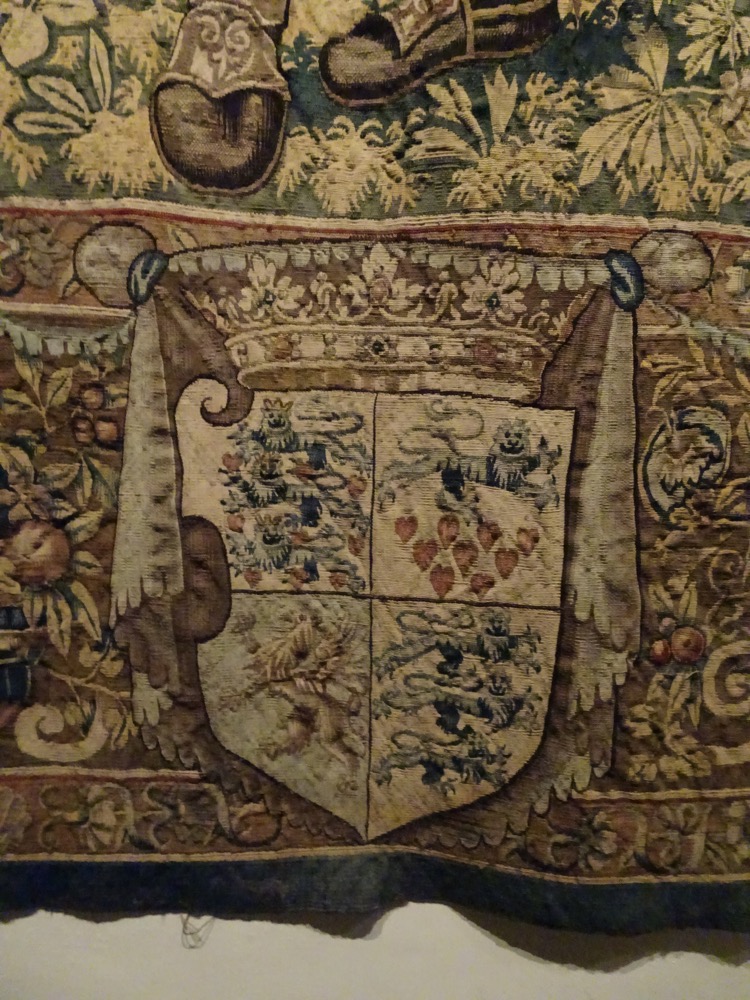 Tapestry of Knud VI – the king wears richly ornamented body armour with sword and shield, emphasizing his royal regalia. He bears a breastplate with the imperial eagle referring to his opposition to the then GeEmperorperor.
Tapestry of Knud VI – the king wears richly ornamented body armour with sword and shield, emphasizing his royal regalia. He bears a breastplate with the imperial eagle referring to his opposition to the then GeEmperorperor. 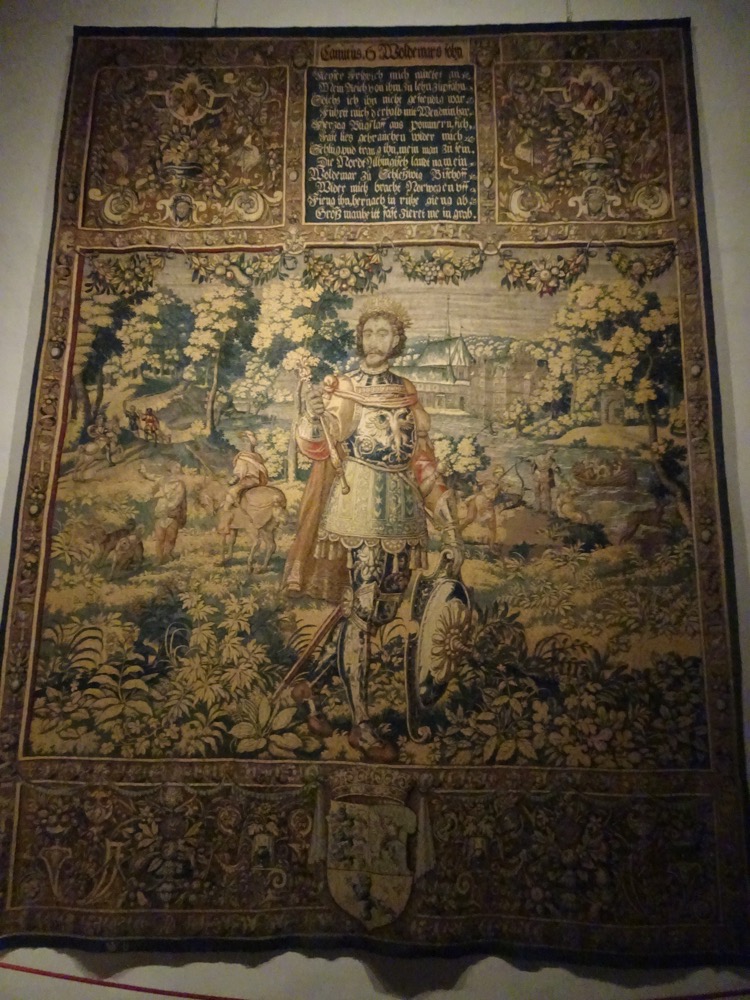 Tapestry depciting Abel – a quiet and pleasant scene with a group of hunters (both mounted and on foot). The setting sharply contrasts wit hthe ferocious acts spelled out in the verses: “For kingship I did crave, thus my brother I sent to the grave”.
Tapestry depciting Abel – a quiet and pleasant scene with a group of hunters (both mounted and on foot). The setting sharply contrasts wit hthe ferocious acts spelled out in the verses: “For kingship I did crave, thus my brother I sent to the grave”. 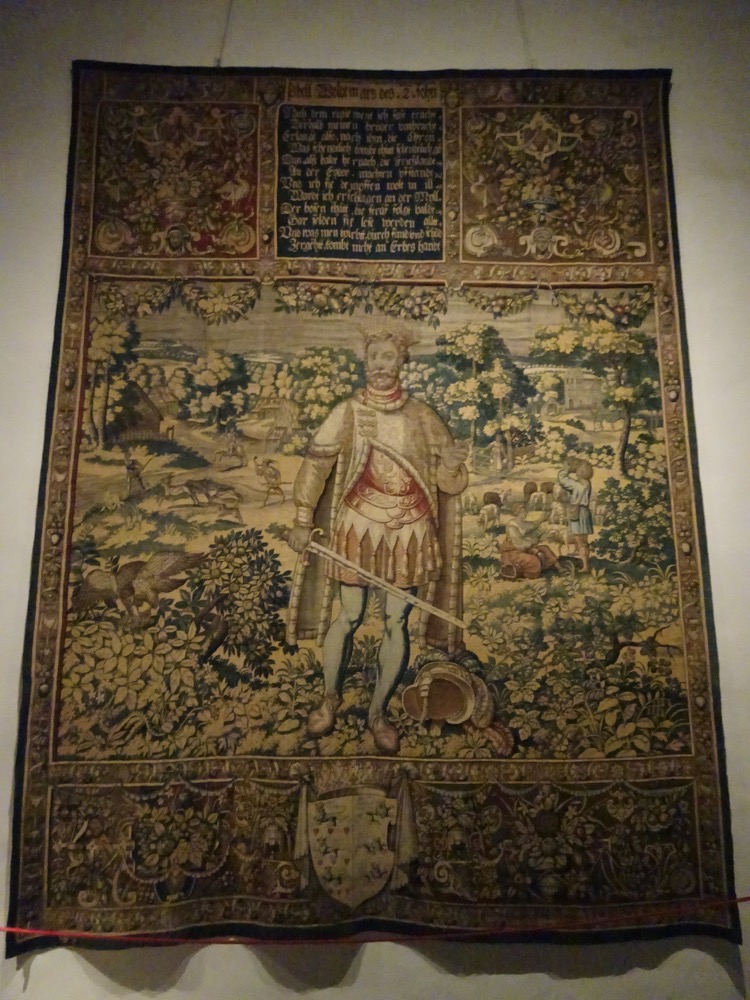 The symbolism of the falcon with its claws on a smaller bird, while a poisonous snake slips through the shrubbery is a classical theme of good fighting evil. In this case, the evil slips away leaving the brother in the grips of his king, err the smaller bird in the grips of the falcon. Eventually Abel was killed himself in an uprising only two years after this ruthless assassination.
The symbolism of the falcon with its claws on a smaller bird, while a poisonous snake slips through the shrubbery is a classical theme of good fighting evil. In this case, the evil slips away leaving the brother in the grips of his king, err the smaller bird in the grips of the falcon. Eventually Abel was killed himself in an uprising only two years after this ruthless assassination.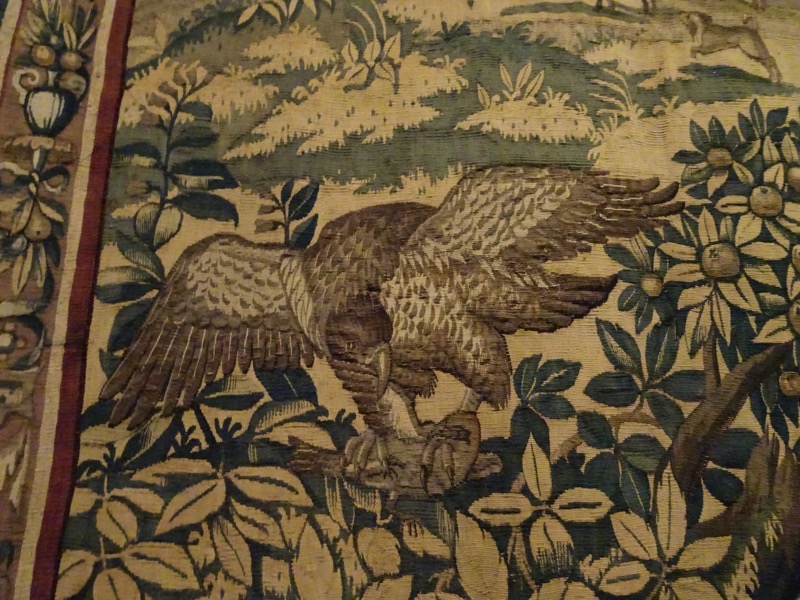 Tapestry of Oluf – son of Norwegian King Haakon VI and Margrete (daughter of Danish King Valdemar II), Oluf was considered a king by name but not by deed. Oluf died before he came of age and his mother Margrete was left to defend the kingdom from Sweden and eventually unite her three Kingdoms.
Tapestry of Oluf – son of Norwegian King Haakon VI and Margrete (daughter of Danish King Valdemar II), Oluf was considered a king by name but not by deed. Oluf died before he came of age and his mother Margrete was left to defend the kingdom from Sweden and eventually unite her three Kingdoms.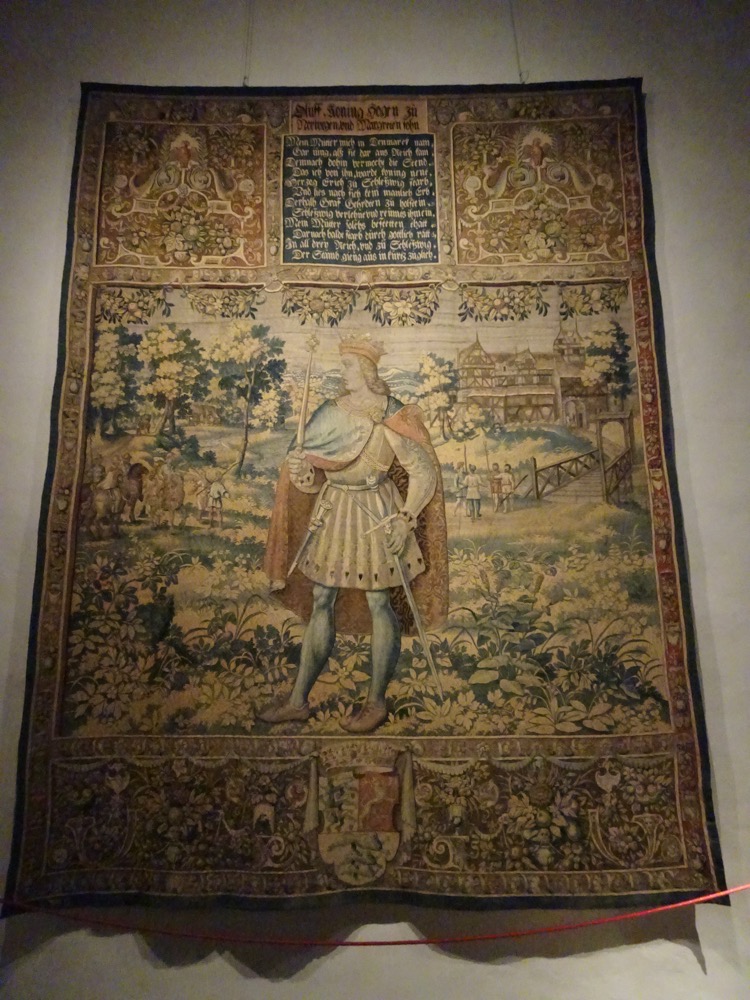
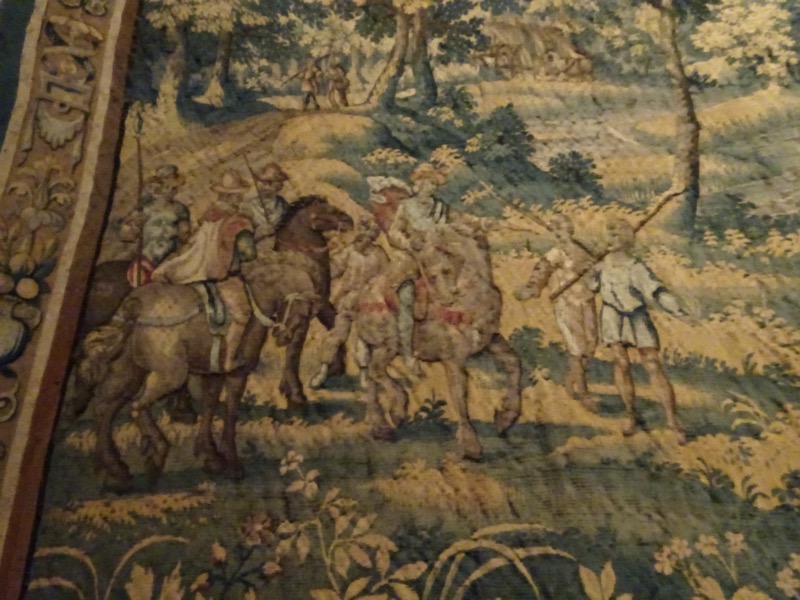 Tapestry of Erick VI – wearing a crown and wearing an outlandish non-period costume, it is supposed to signify that he was king ‘in distant times’. He draws the viewer’s attention to the animal life to the left of the king, a wolf lurks (the incarnation of evil) sneaking up on its unsuspecting prey. All is reference to his ill-fated destiny, he was assassinated by the aforementioned Abel, who envied his crown.
Tapestry of Erick VI – wearing a crown and wearing an outlandish non-period costume, it is supposed to signify that he was king ‘in distant times’. He draws the viewer’s attention to the animal life to the left of the king, a wolf lurks (the incarnation of evil) sneaking up on its unsuspecting prey. All is reference to his ill-fated destiny, he was assassinated by the aforementioned Abel, who envied his crown. 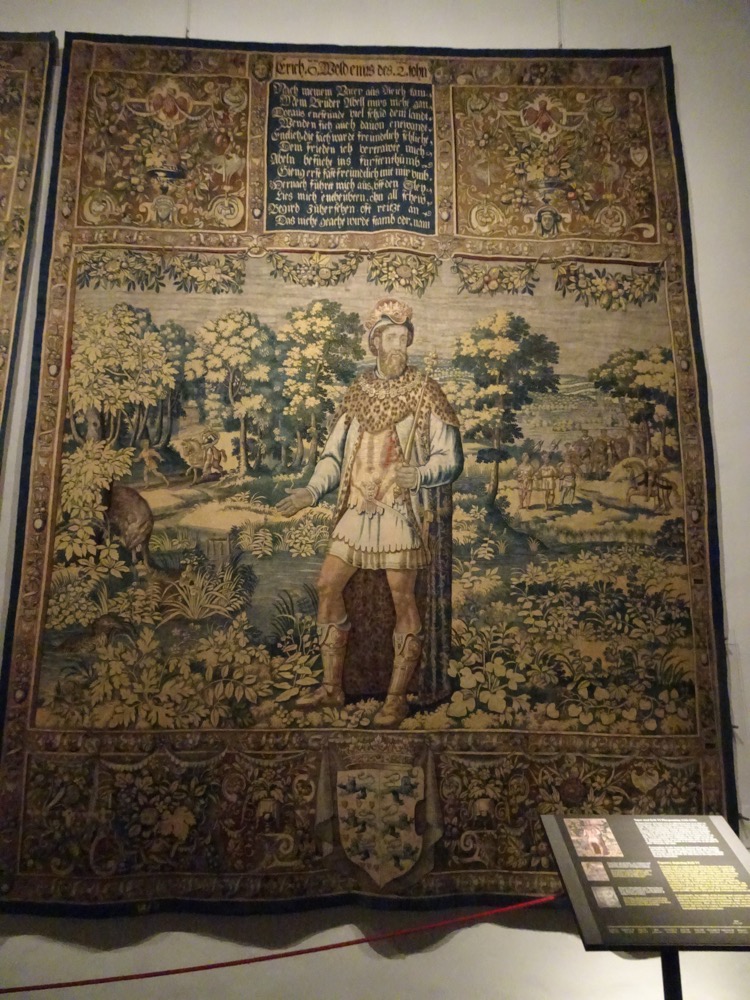 The wolf preying on the bird that is preying on the eel.
The wolf preying on the bird that is preying on the eel.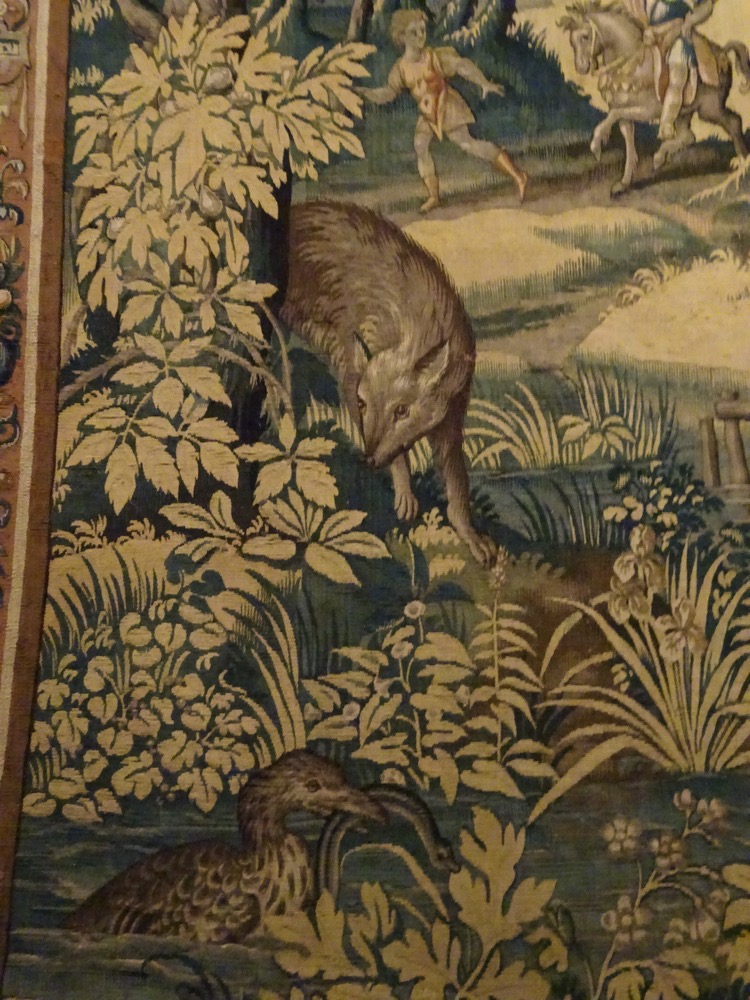 Tapestry of Christoffer II – surrounded by noblemen’s pursuits of the hunt and the tournament, Christoffer is being mocked for his lack of jousting and warfare abilities.. “For the Kingdom’s dignity little cared, much land gave away with others shared, against the subjects I was also tough, so from my throne they pushed me off!”
Tapestry of Christoffer II – surrounded by noblemen’s pursuits of the hunt and the tournament, Christoffer is being mocked for his lack of jousting and warfare abilities.. “For the Kingdom’s dignity little cared, much land gave away with others shared, against the subjects I was also tough, so from my throne they pushed me off!”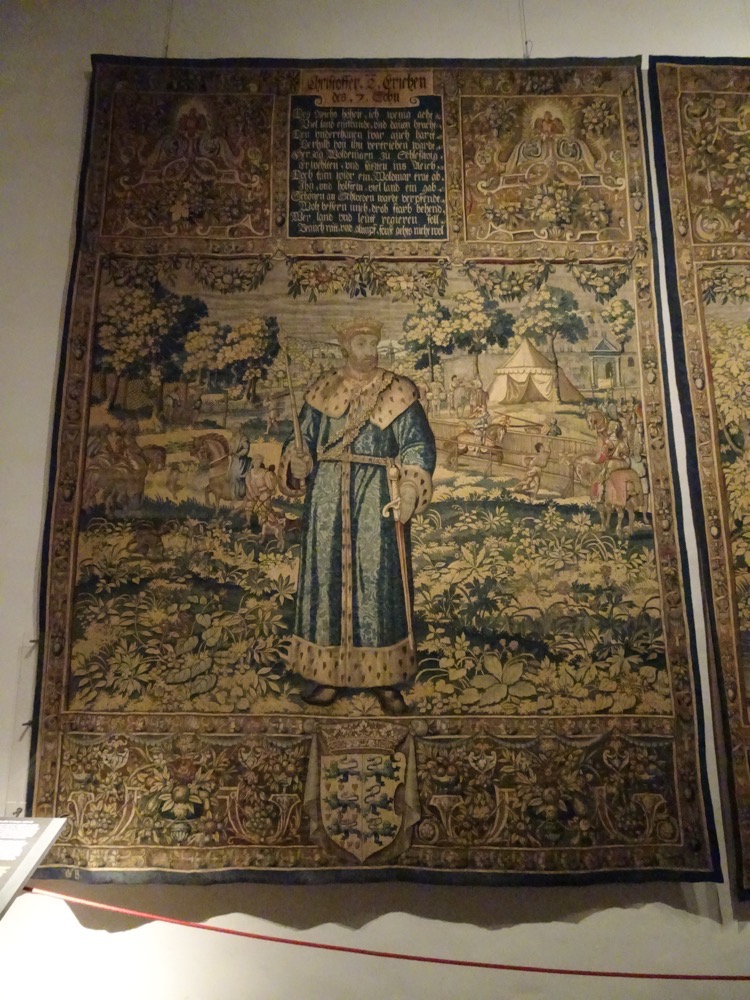
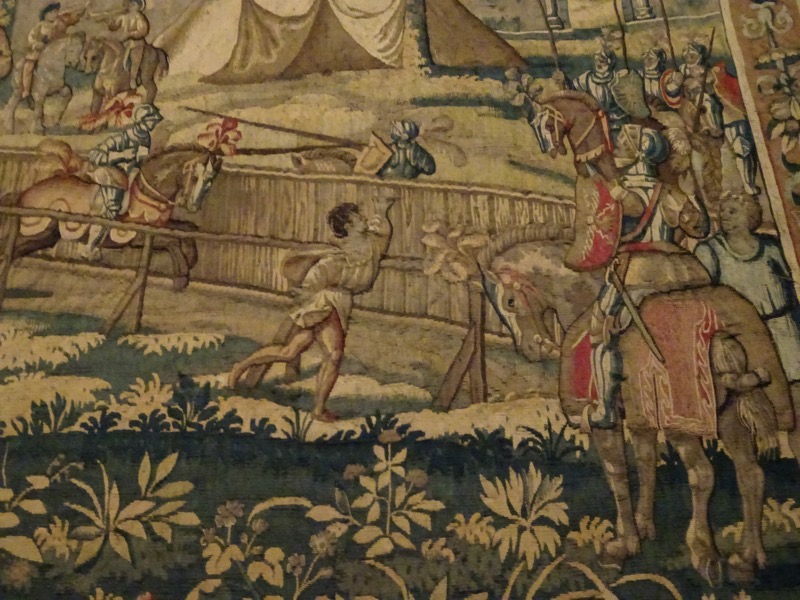 Tapestry depicting Valdemar II “the Victorious” – clad in shining armour, the king caries his crown as the symbol of his royalty and brandishing a sword ready for combat. The verses give a full account of his many successful war campaigns, and it seems at least one king has been remembered kindly by history!
Tapestry depicting Valdemar II “the Victorious” – clad in shining armour, the king caries his crown as the symbol of his royalty and brandishing a sword ready for combat. The verses give a full account of his many successful war campaigns, and it seems at least one king has been remembered kindly by history!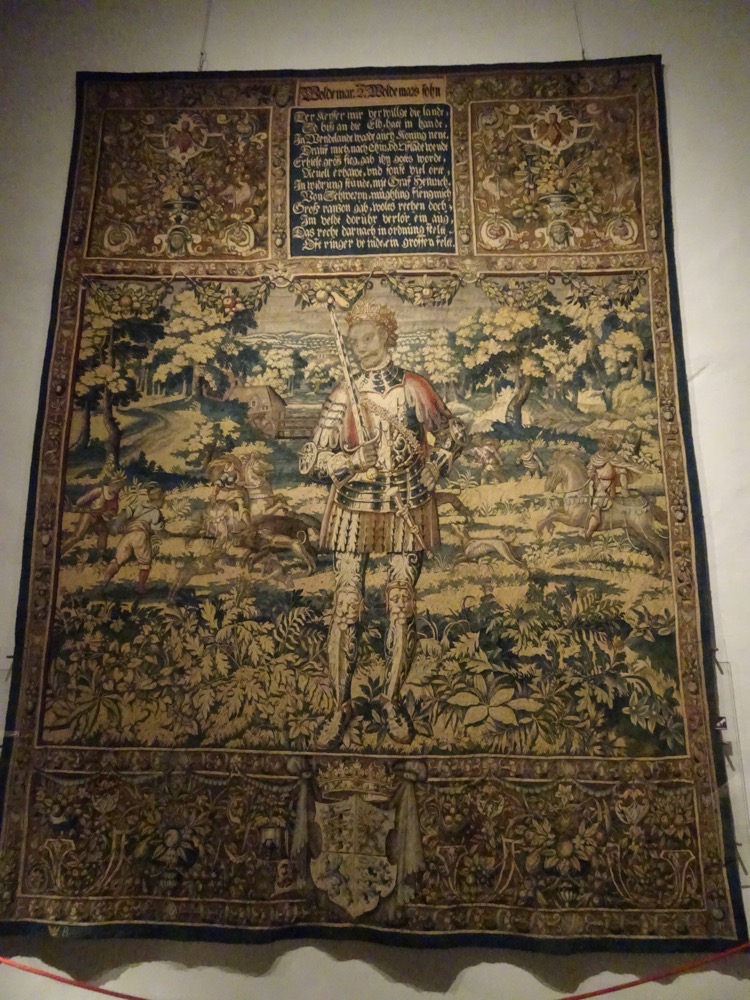
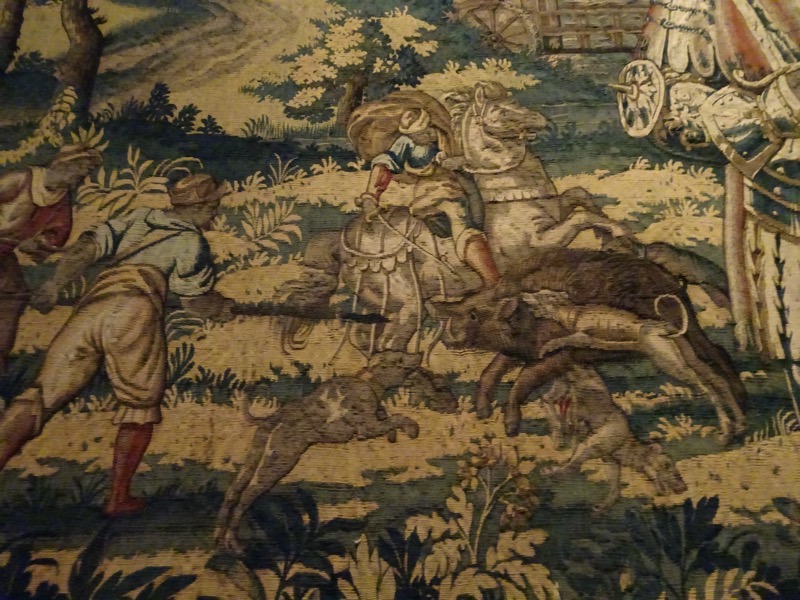 These tapestries are fascinating – I wish there had been decent information on the other seven that we saw at the National Museum.
These tapestries are fascinating – I wish there had been decent information on the other seven that we saw at the National Museum.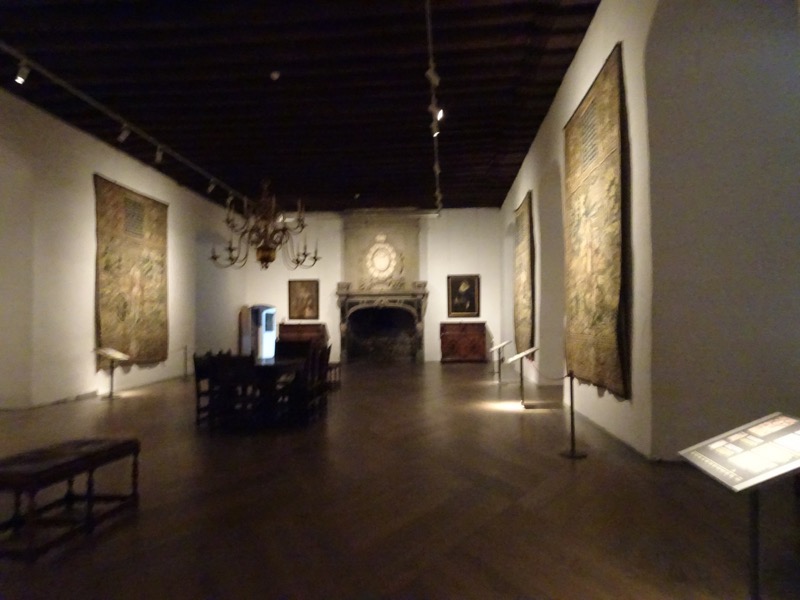 As I was saying earlier, Kronborg is also famous as “Elsinore,” the setting of Shakespeare’s famous tragedy, Hamlet (though how a guy born in Stratford upon Avon with no formal/noble education knew anything about Danish history which is effectively the middle of nowhere to an Englishman from Stratford, is beyond me!?!) Anyway, Hamlet was performed to mark the 200th anniversary of Shakespeare’s death in 1816, complete with a cast of soldiers from the castle garrison. The stage was in the telegraph tower in the southwest corner of the castle. The play has been repeatedly performed in the courtyard by such famous actors as Laurence Olivier, John Gielgud, Christopher Plummer, Derek Jacobi, David Tennant, Jude Law, and of course my own personal hero, Sir Kenneth Branagh.
As I was saying earlier, Kronborg is also famous as “Elsinore,” the setting of Shakespeare’s famous tragedy, Hamlet (though how a guy born in Stratford upon Avon with no formal/noble education knew anything about Danish history which is effectively the middle of nowhere to an Englishman from Stratford, is beyond me!?!) Anyway, Hamlet was performed to mark the 200th anniversary of Shakespeare’s death in 1816, complete with a cast of soldiers from the castle garrison. The stage was in the telegraph tower in the southwest corner of the castle. The play has been repeatedly performed in the courtyard by such famous actors as Laurence Olivier, John Gielgud, Christopher Plummer, Derek Jacobi, David Tennant, Jude Law, and of course my own personal hero, Sir Kenneth Branagh.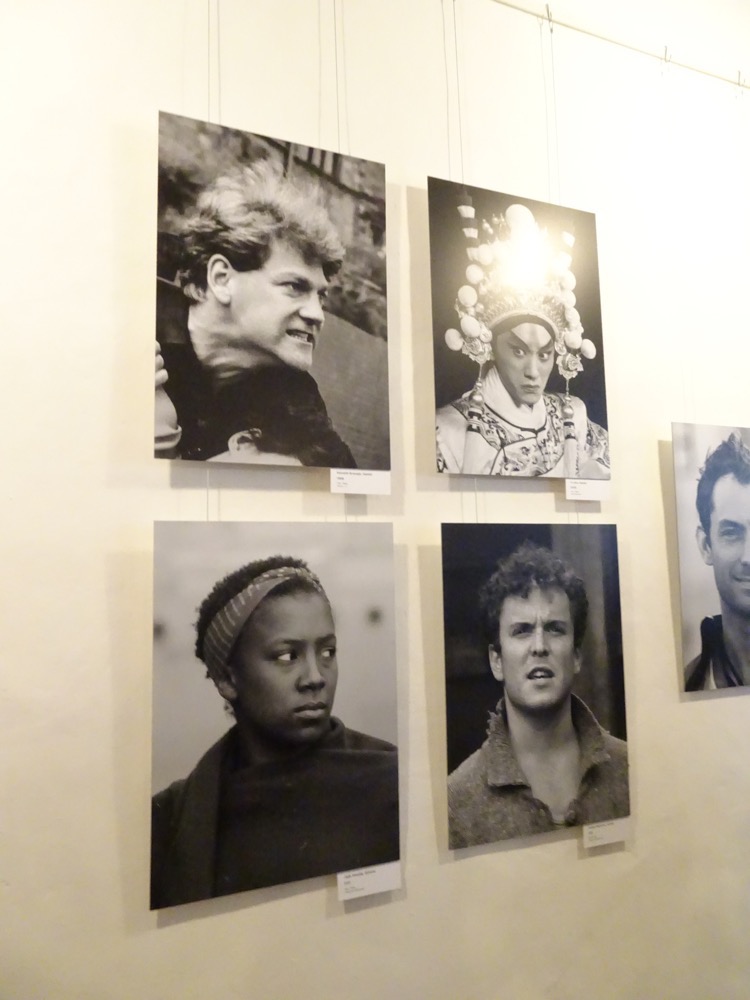
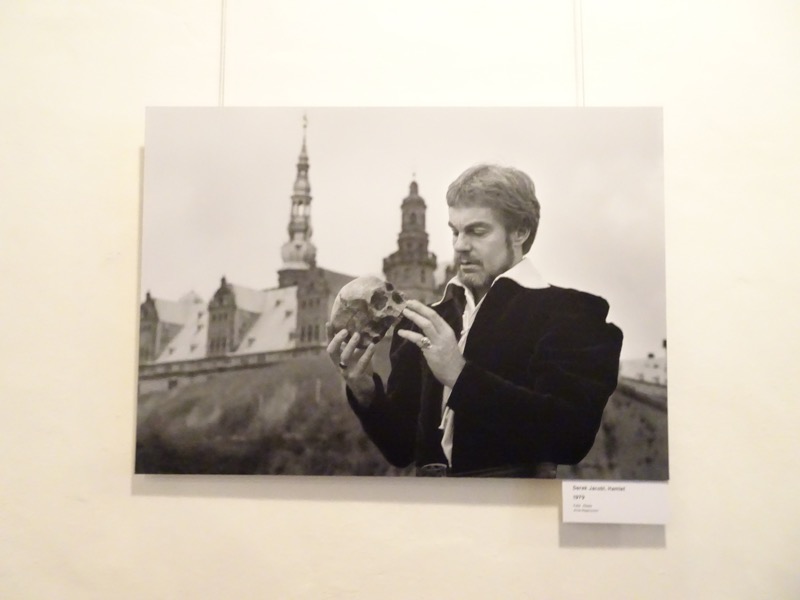
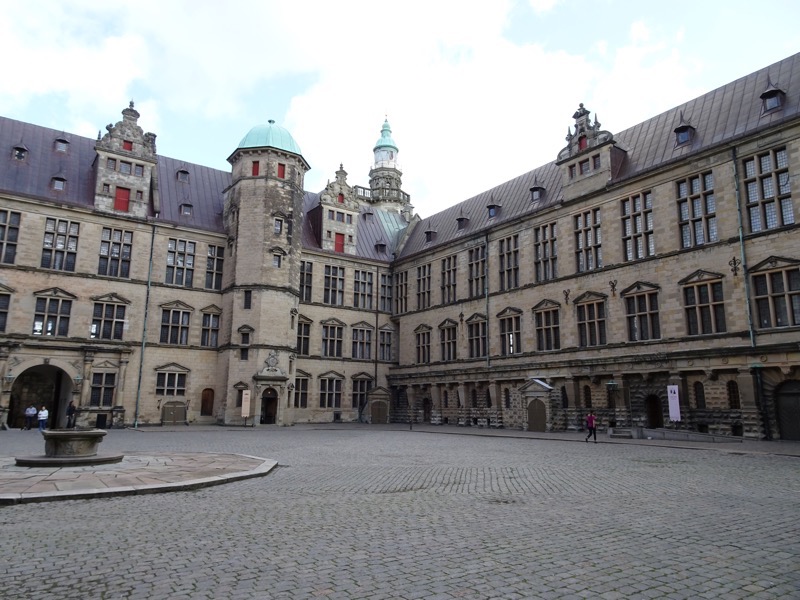 We went back down to the courtyard to find the chapel which is located on the ground floor in the south wing, having been consecrated in 1582. In 1785 the castle was fitted out as an army barracks, and the chapel was temporarily repurposed as a fencing hall and gymnasium with all the furniture thankfully stored away. In the mid-1800s, the chapel was restored and reinaugurated in 1843.
We went back down to the courtyard to find the chapel which is located on the ground floor in the south wing, having been consecrated in 1582. In 1785 the castle was fitted out as an army barracks, and the chapel was temporarily repurposed as a fencing hall and gymnasium with all the furniture thankfully stored away. In the mid-1800s, the chapel was restored and reinaugurated in 1843.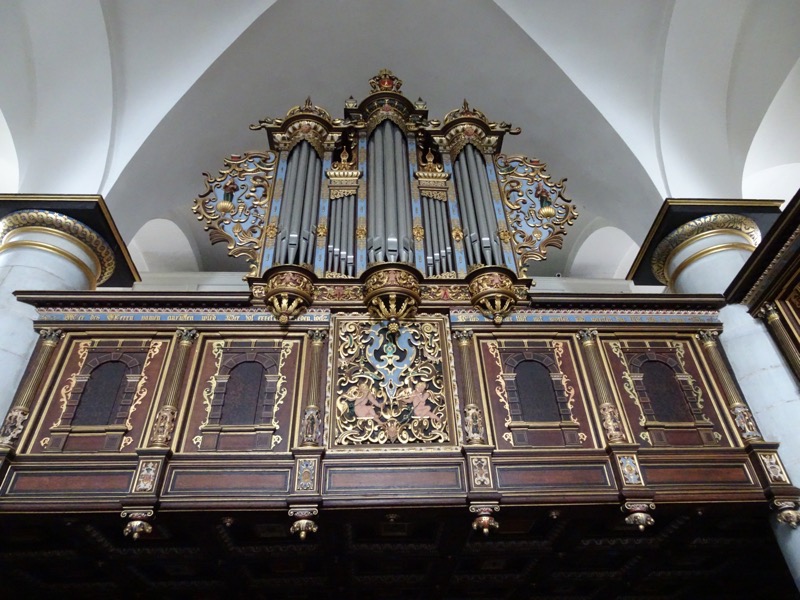 The nave of the Kronborg Chapel.
The nave of the Kronborg Chapel.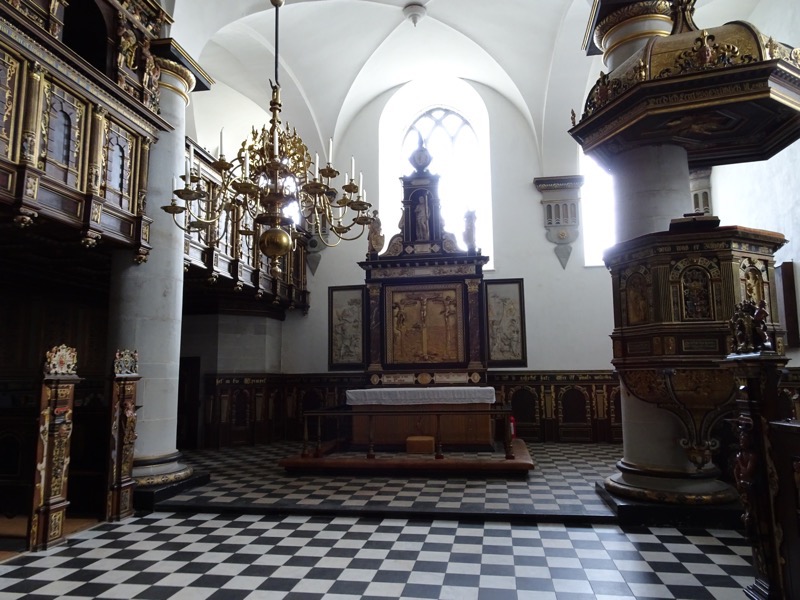
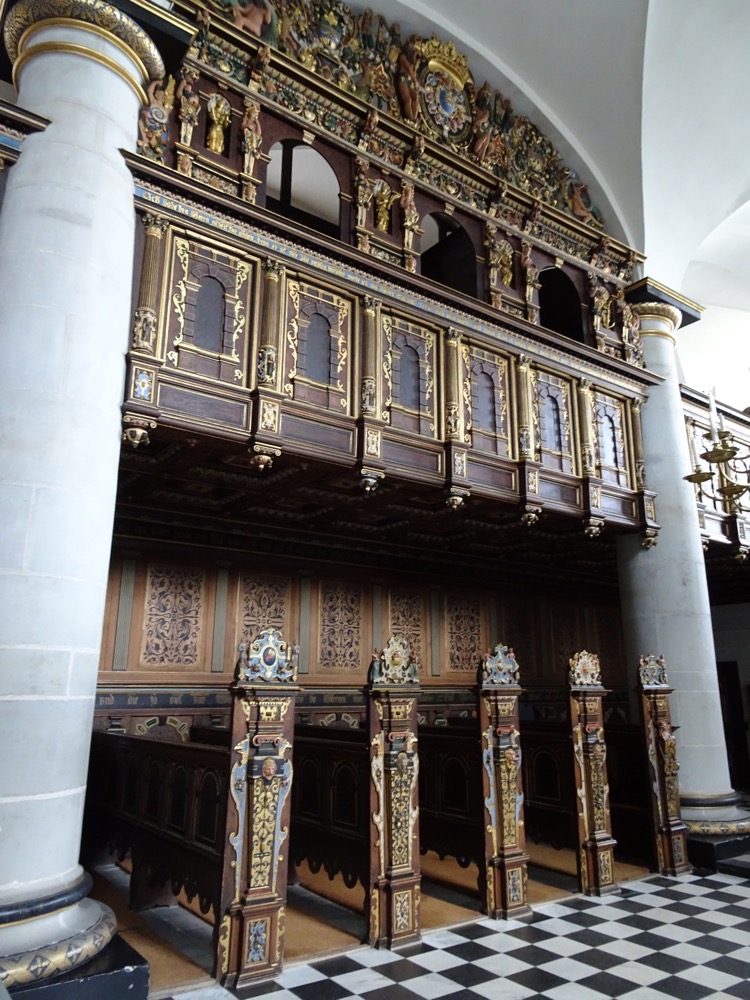
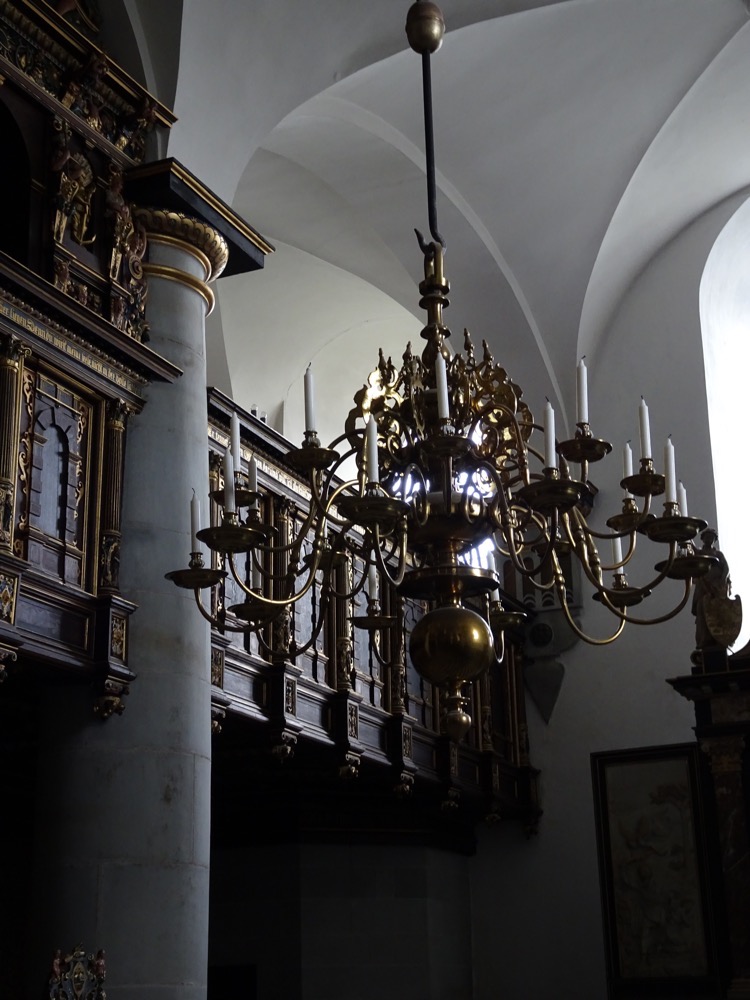 Just gorgeous medieval timberwork, and gilded leather walls.
Just gorgeous medieval timberwork, and gilded leather walls.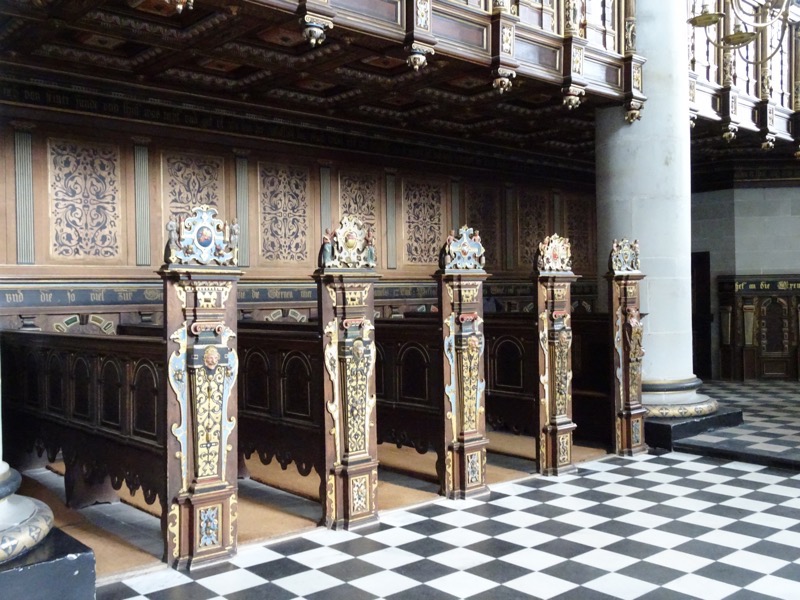
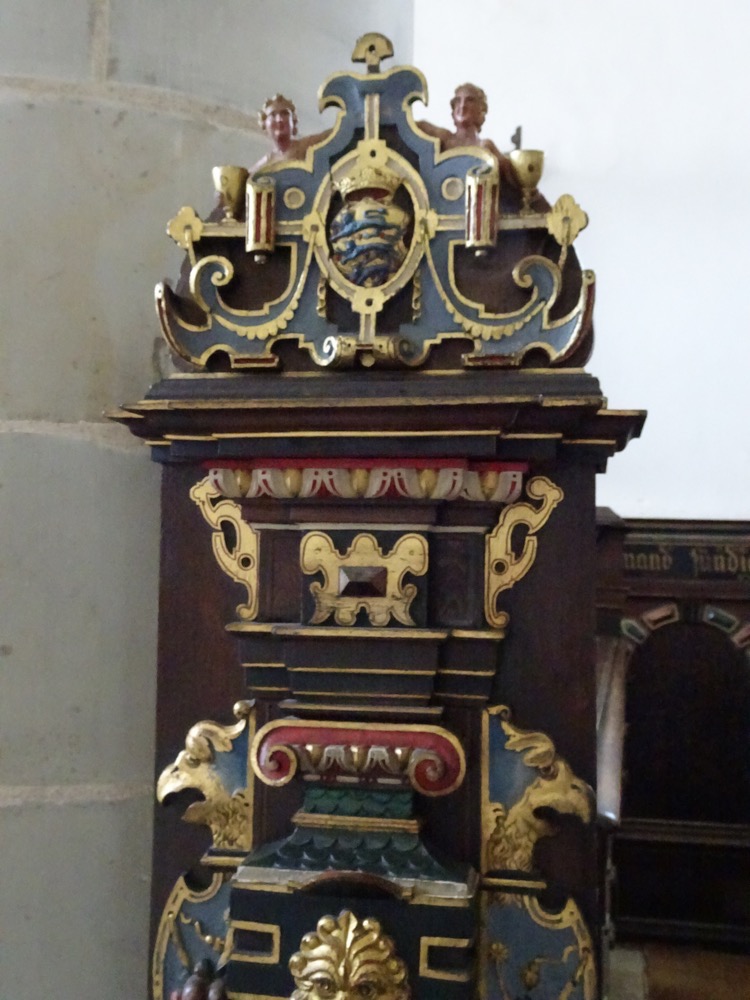
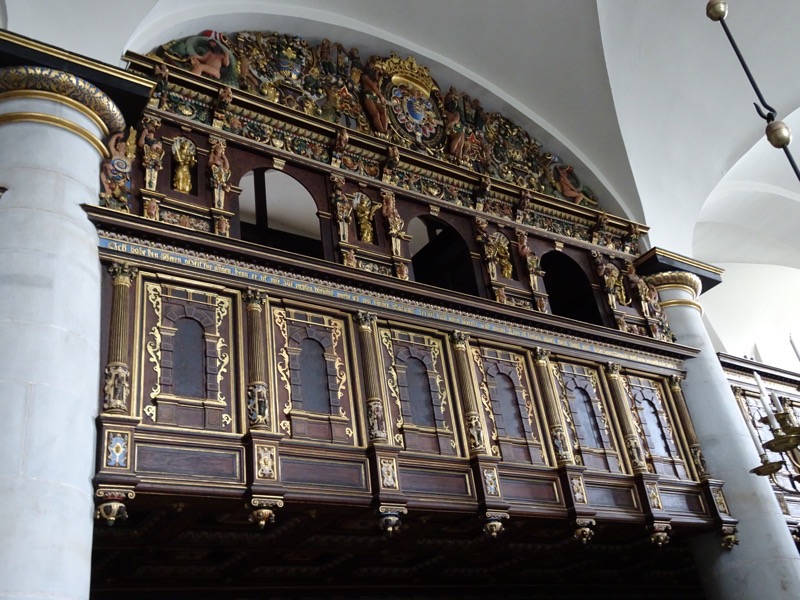
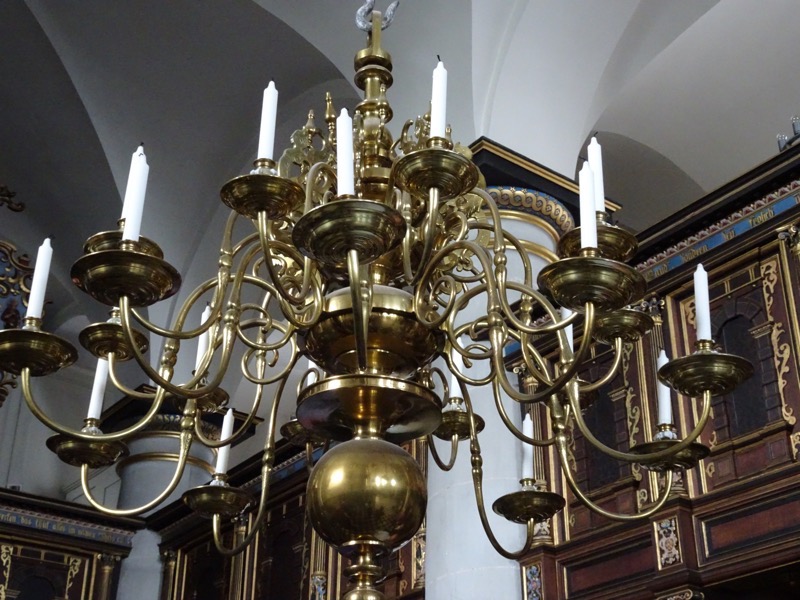
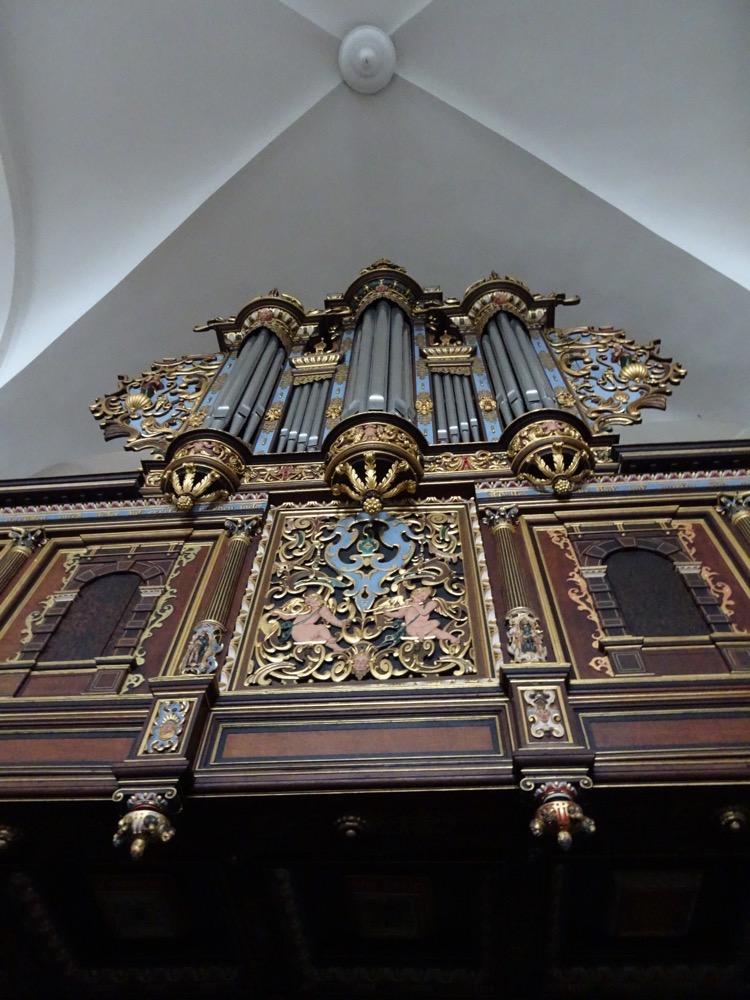
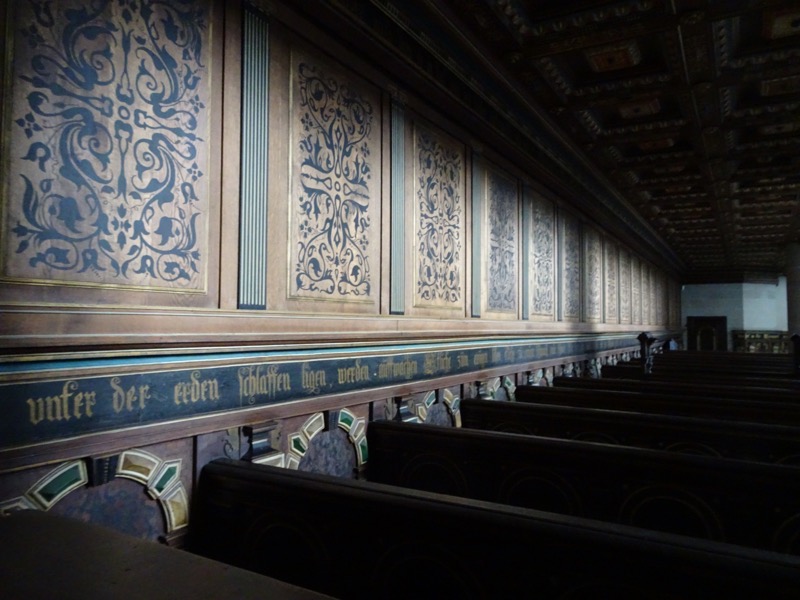
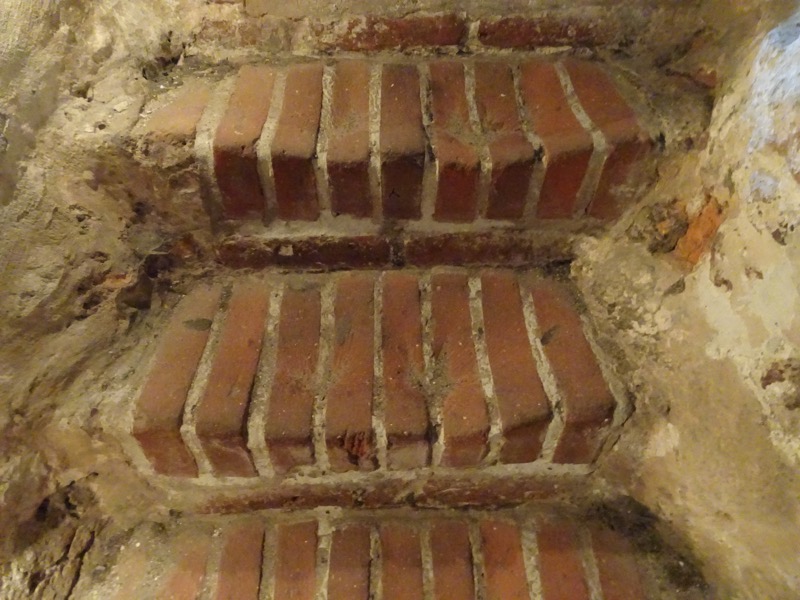 Worn steps leading down the the dark cold cellars.
Worn steps leading down the the dark cold cellars.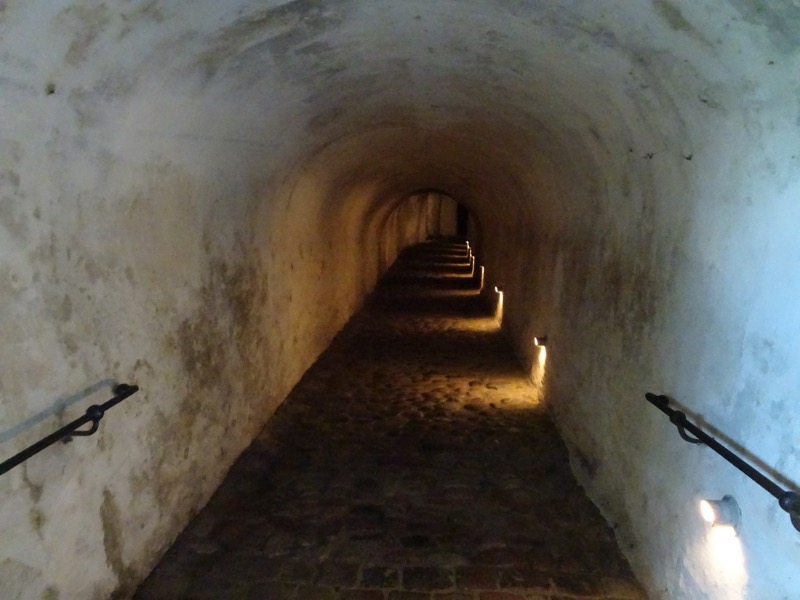 A statue of the sleeping Danish King, Holger, has been placed here, deep in the cellars of the castle… ever vigilant for his homeland.
A statue of the sleeping Danish King, Holger, has been placed here, deep in the cellars of the castle… ever vigilant for his homeland. 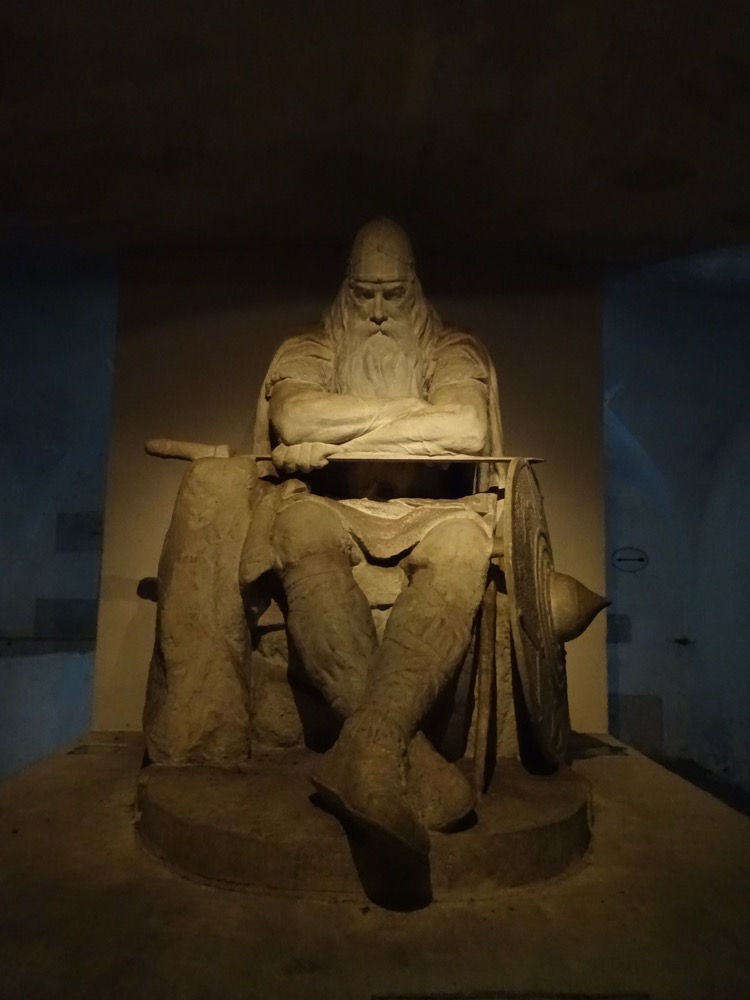
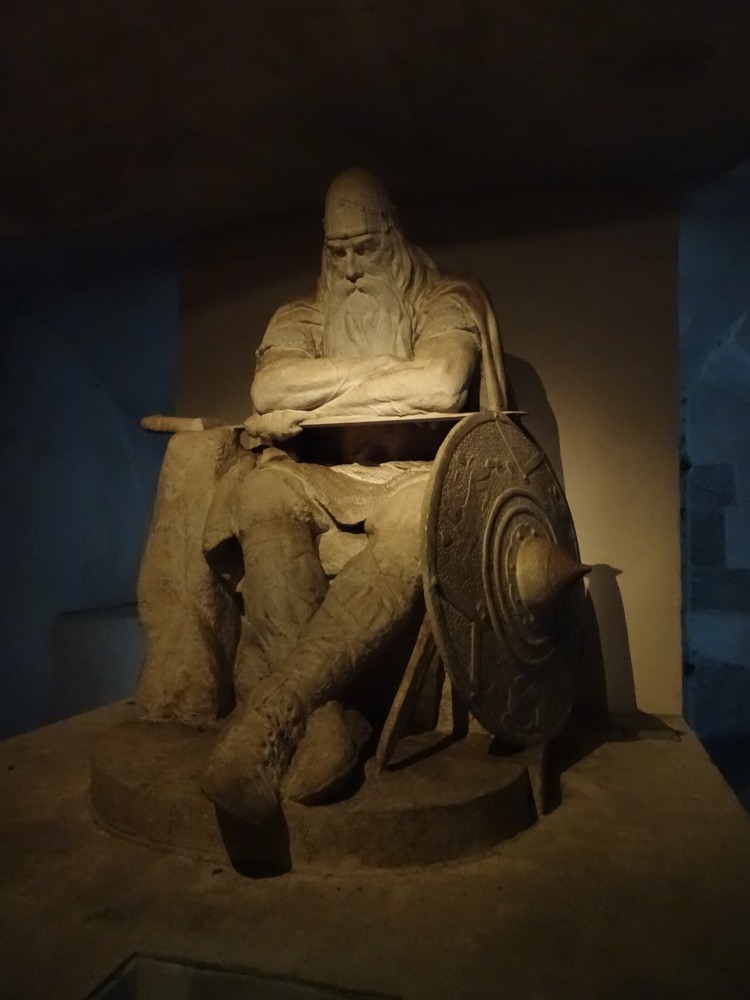 On a less lyrical note – this statue was the most difficult thing to photograph ever! They have him displayed in a pitch black cavern with lighting from several sides that slowly oscillates in brightness from very dim to overly bright. I can think of no other reason for doing so, other than to make him hard to photograph! Anyway, about twelve pics later and job done.
On a less lyrical note – this statue was the most difficult thing to photograph ever! They have him displayed in a pitch black cavern with lighting from several sides that slowly oscillates in brightness from very dim to overly bright. I can think of no other reason for doing so, other than to make him hard to photograph! Anyway, about twelve pics later and job done.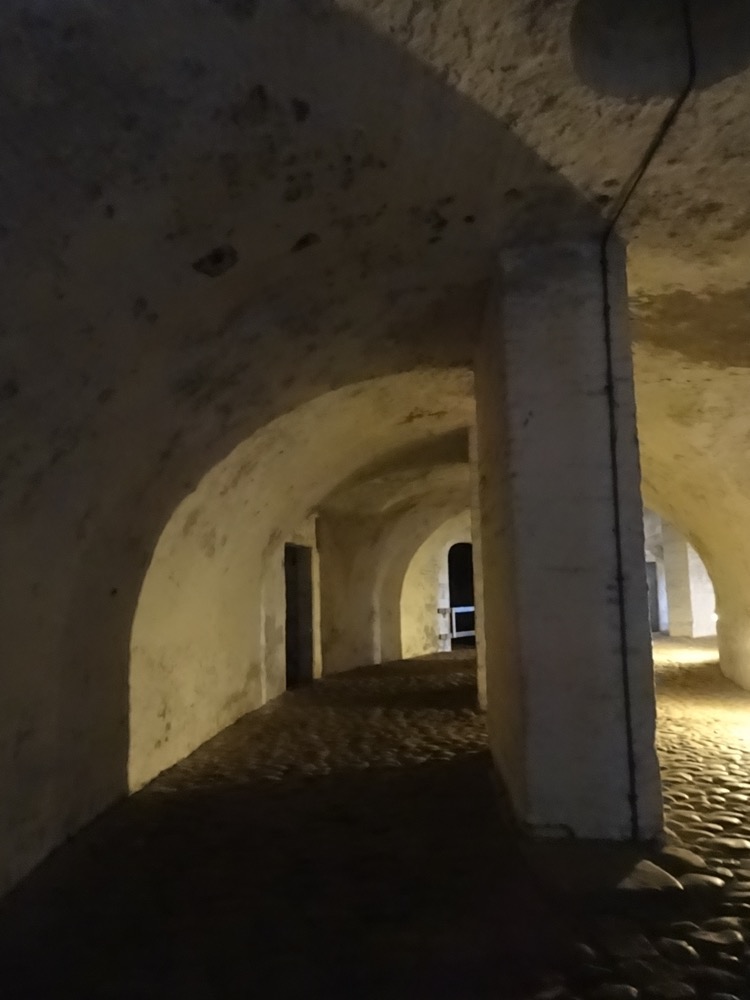 The cellars penetrated even further under the castle than the chambers containing Holger’s sleeping statue to large storage areas.
The cellars penetrated even further under the castle than the chambers containing Holger’s sleeping statue to large storage areas.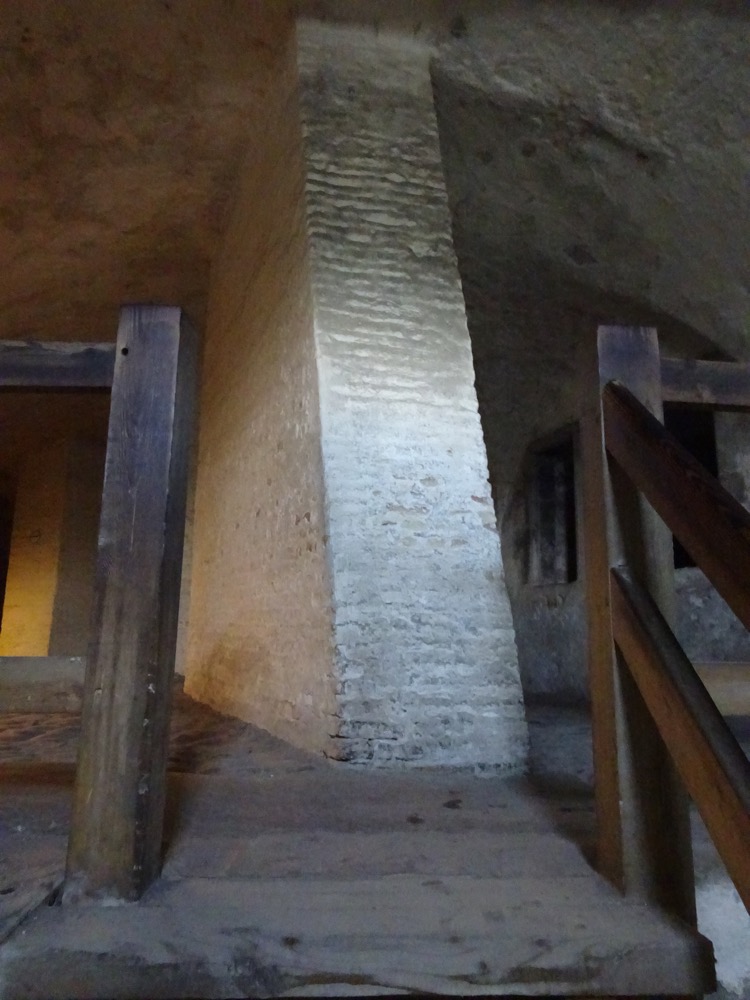
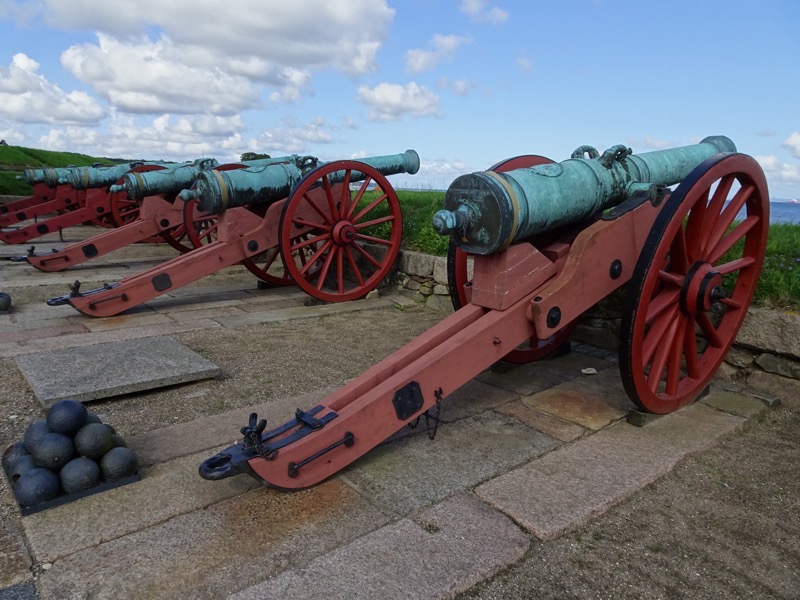
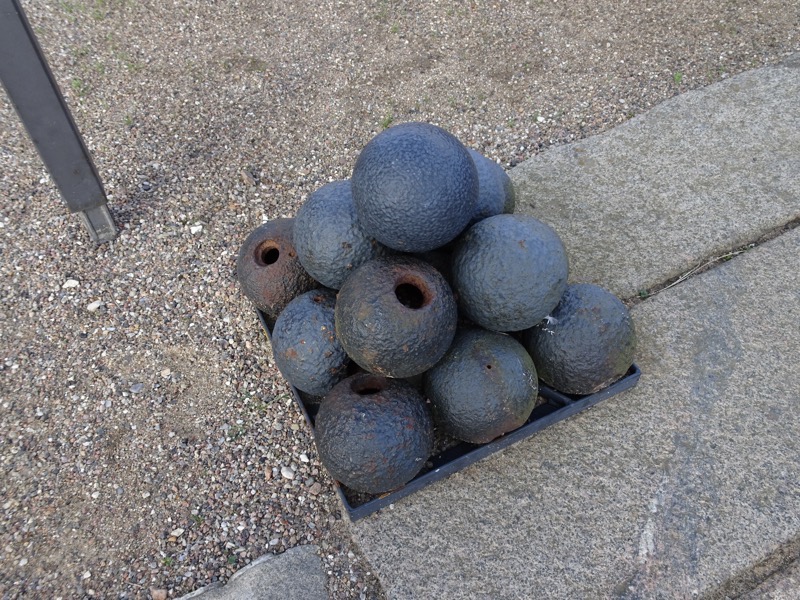
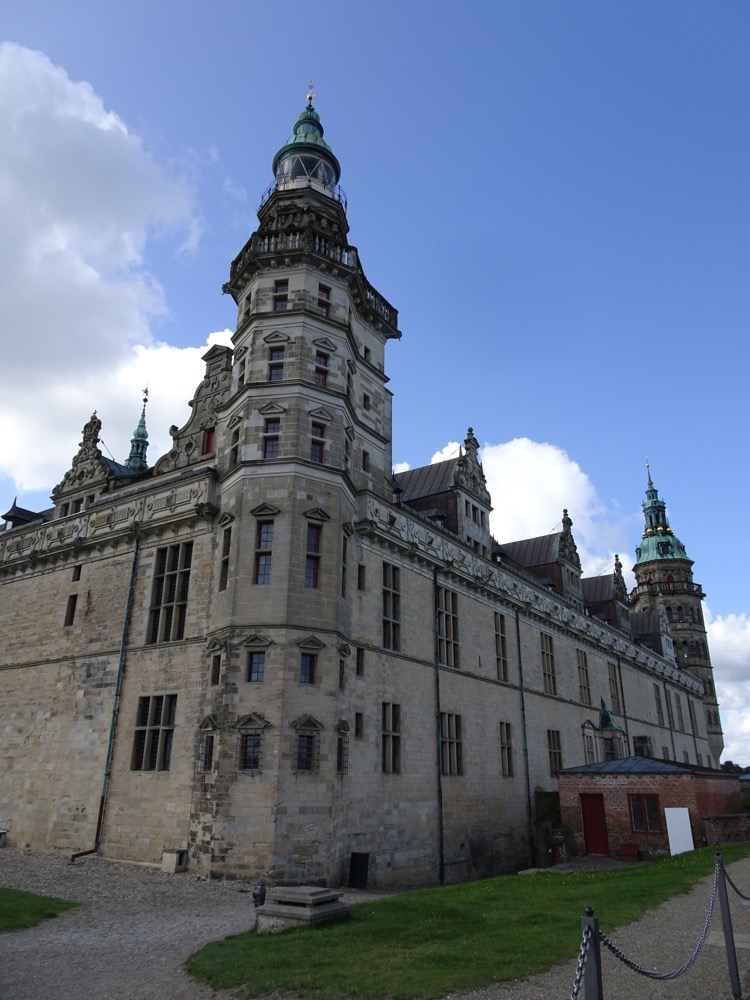 Interestingly, every ship that sailed through the Sound had to pay a toll. These tolls were effectively a tax paid to the King of Denmark, calculated based on the value of the ship’s cargo. The captain of any ship passing the sound had to estimate the value of his cargo and pay the taxes accordingly – to prevent captains from understating the value of their cargo and thereby reduce the toll payable, the King had the right to buy any cargo for the price stated by a ship’s captain… thus very cleverly dissuading the captains from undervaluing their cargo. The Sound toll was only abolished in 1857.
Interestingly, every ship that sailed through the Sound had to pay a toll. These tolls were effectively a tax paid to the King of Denmark, calculated based on the value of the ship’s cargo. The captain of any ship passing the sound had to estimate the value of his cargo and pay the taxes accordingly – to prevent captains from understating the value of their cargo and thereby reduce the toll payable, the King had the right to buy any cargo for the price stated by a ship’s captain… thus very cleverly dissuading the captains from undervaluing their cargo. The Sound toll was only abolished in 1857.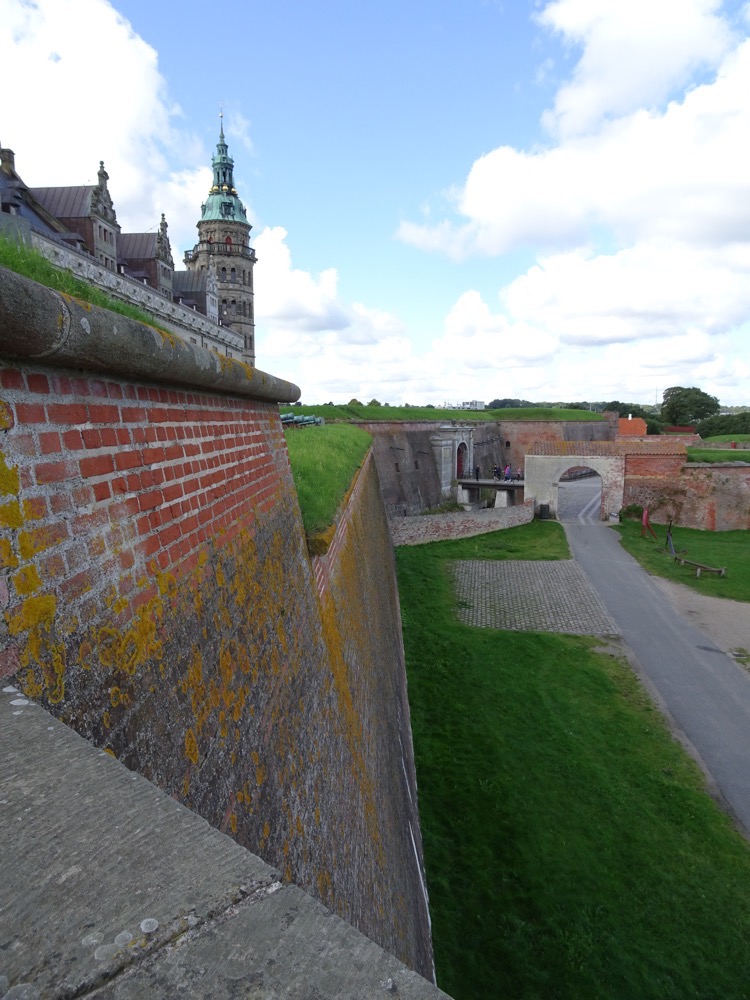 ALL our canon are for you, Sweden!
ALL our canon are for you, Sweden!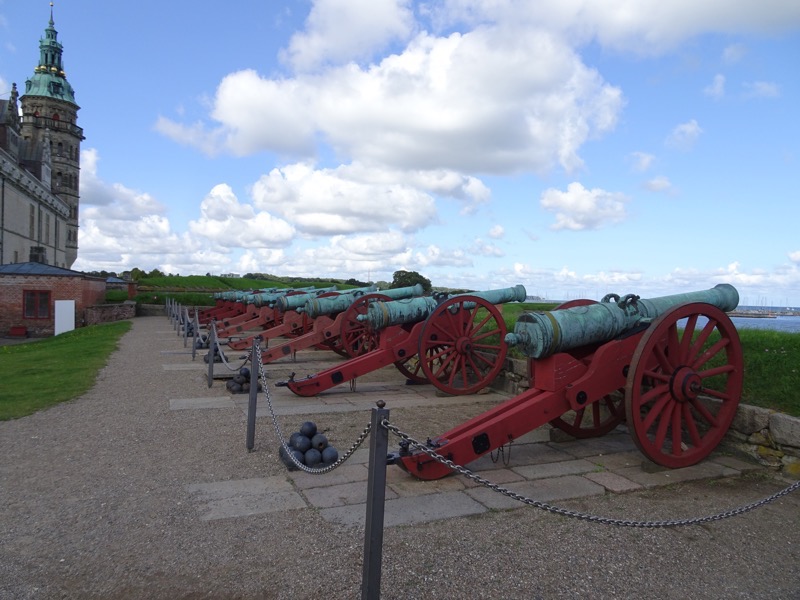 Back into the main courtyard to access the Cannon Tower for views over the castle. Another winding Medieval staircase.
Back into the main courtyard to access the Cannon Tower for views over the castle. Another winding Medieval staircase.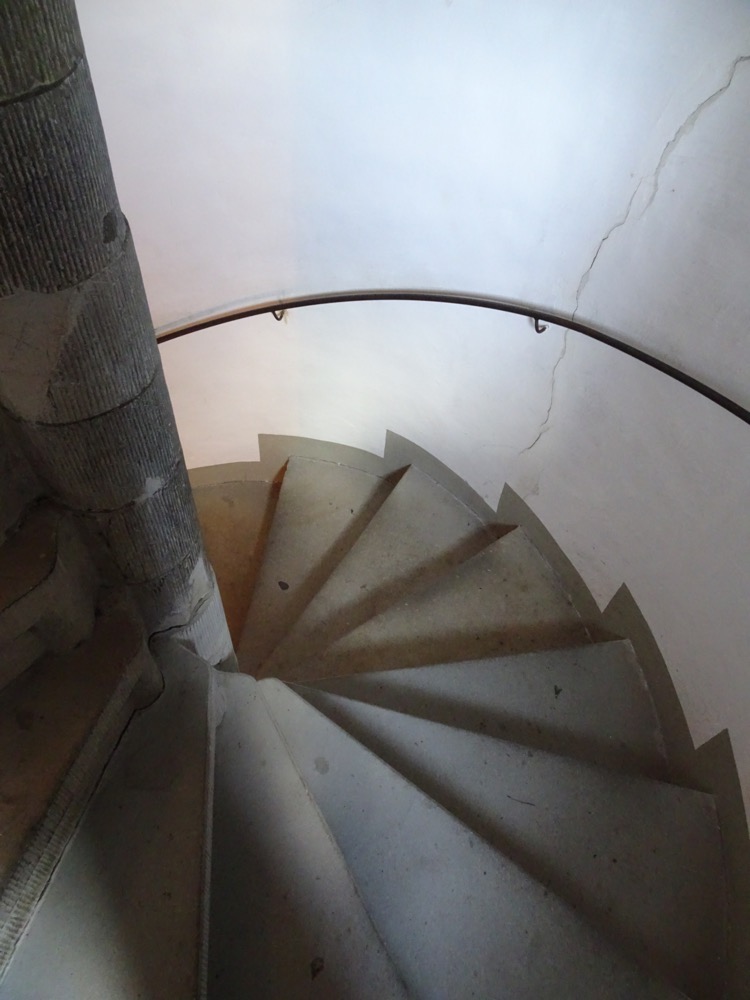
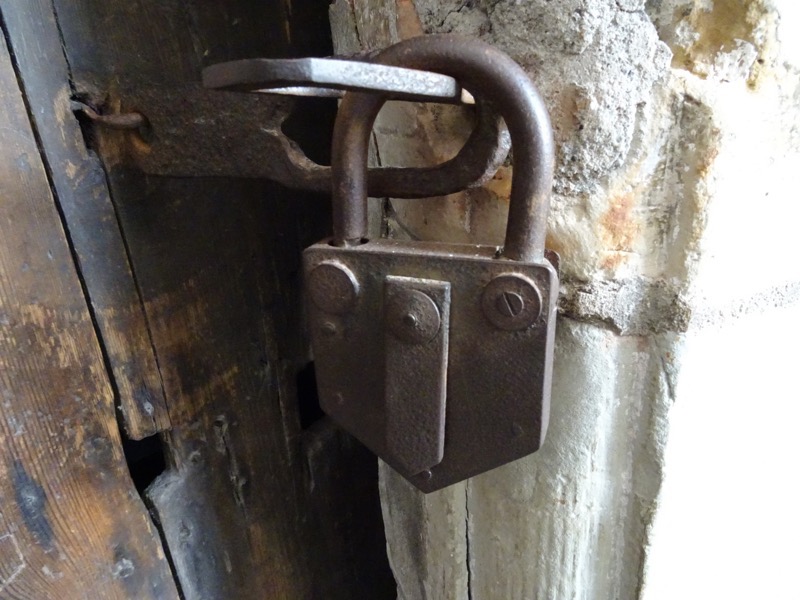
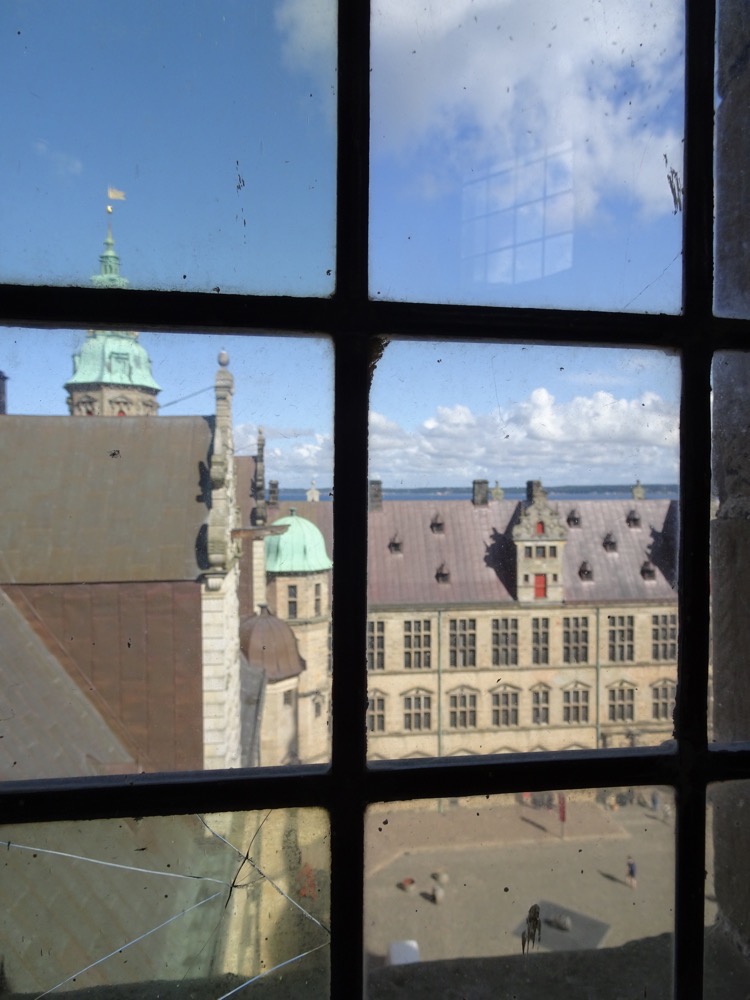 The views are amazing, you can see for miles, well at least 2.3 of them – to Sweden!
The views are amazing, you can see for miles, well at least 2.3 of them – to Sweden!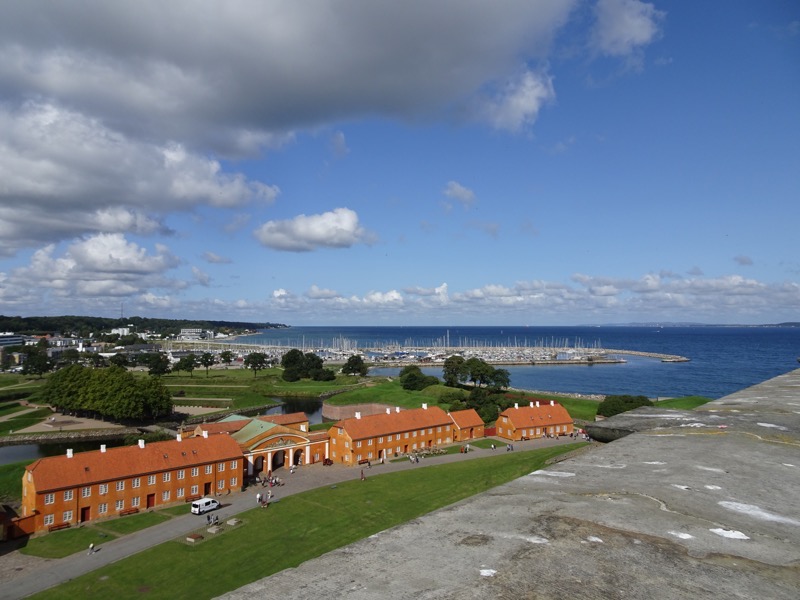 And back to the town of Helsingor.
And back to the town of Helsingor.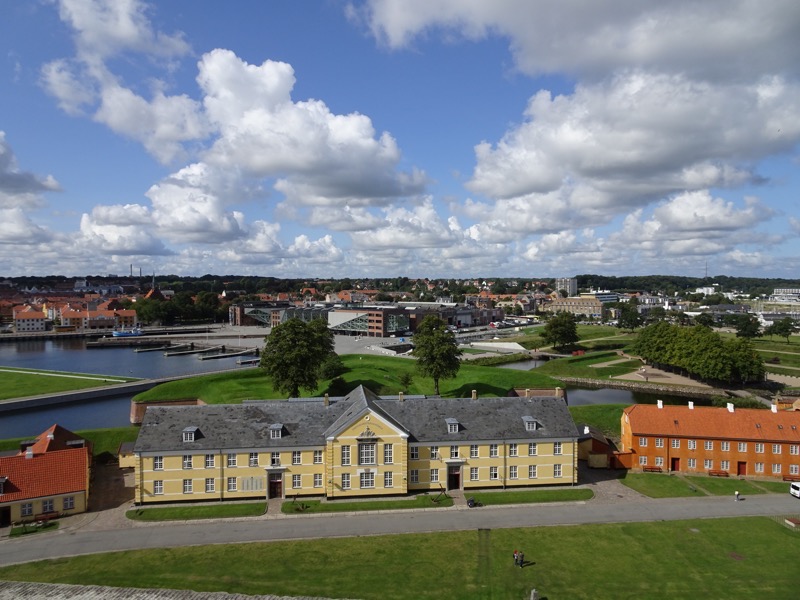
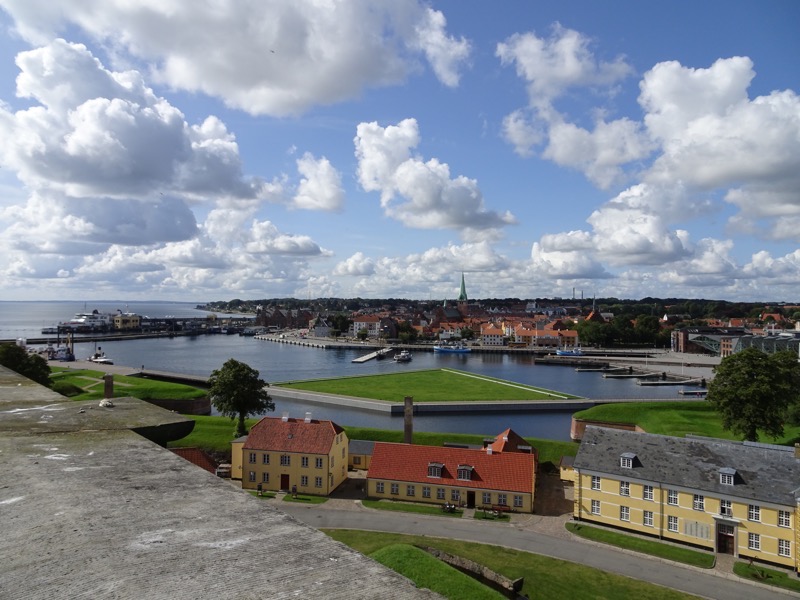
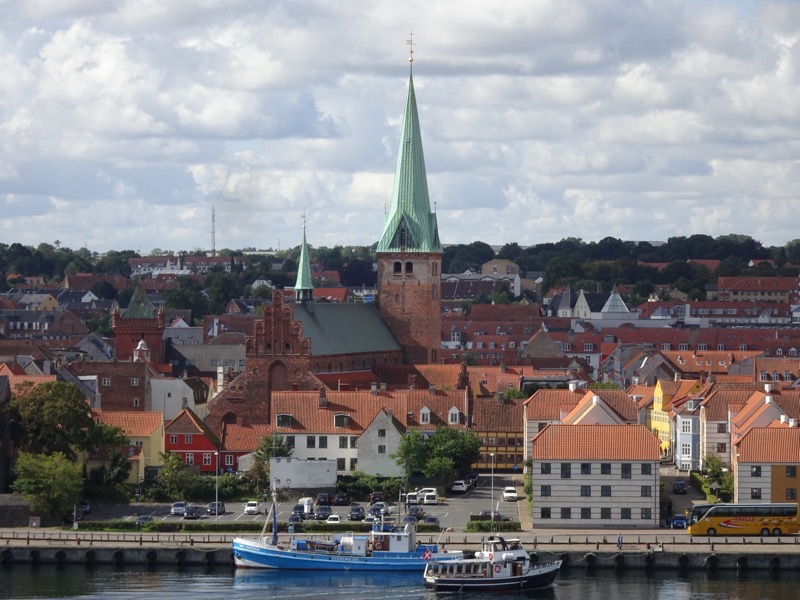
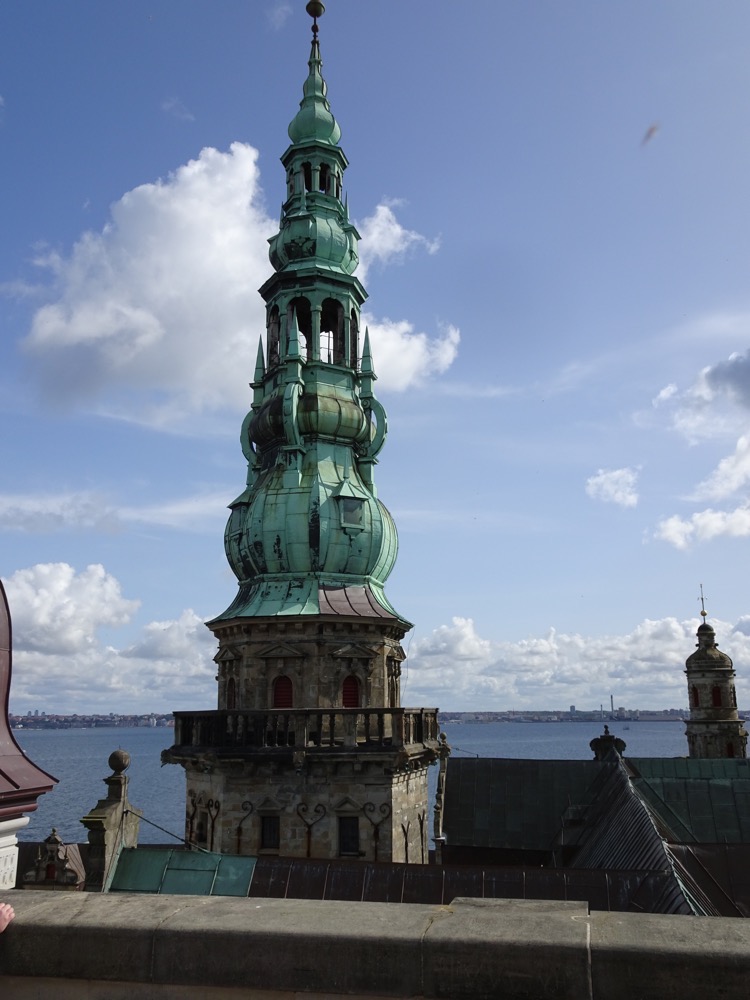
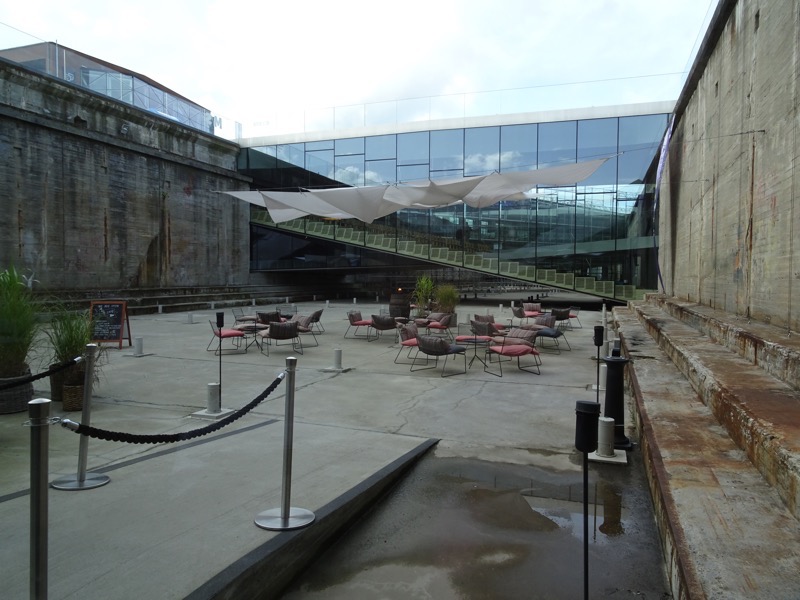 Cafe in the base of the dry dock.
Cafe in the base of the dry dock.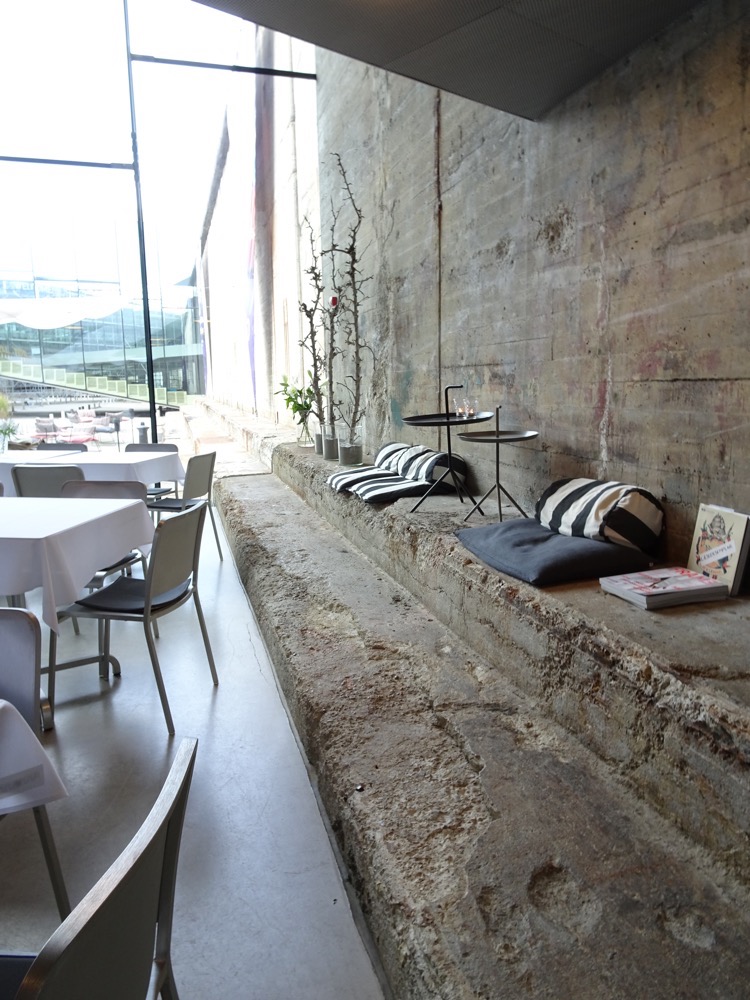
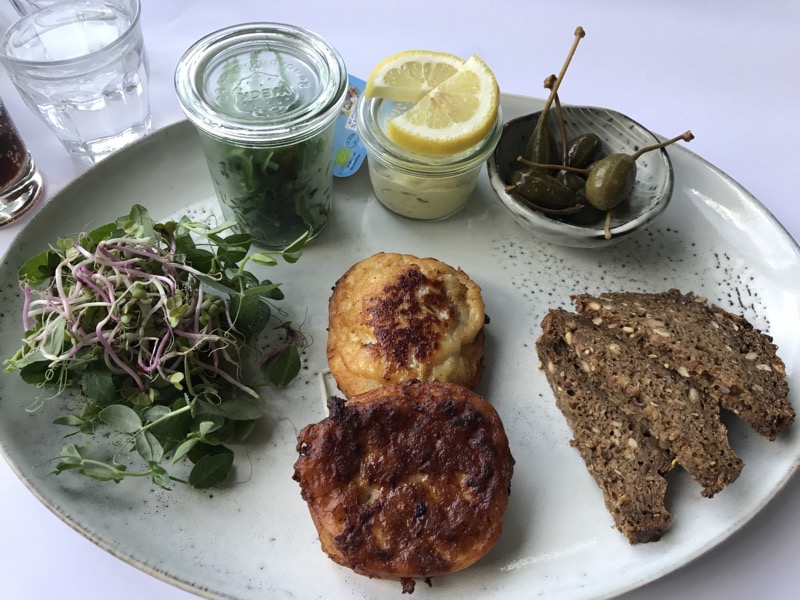 The museum has mostly late period maritime exhibits.
The museum has mostly late period maritime exhibits.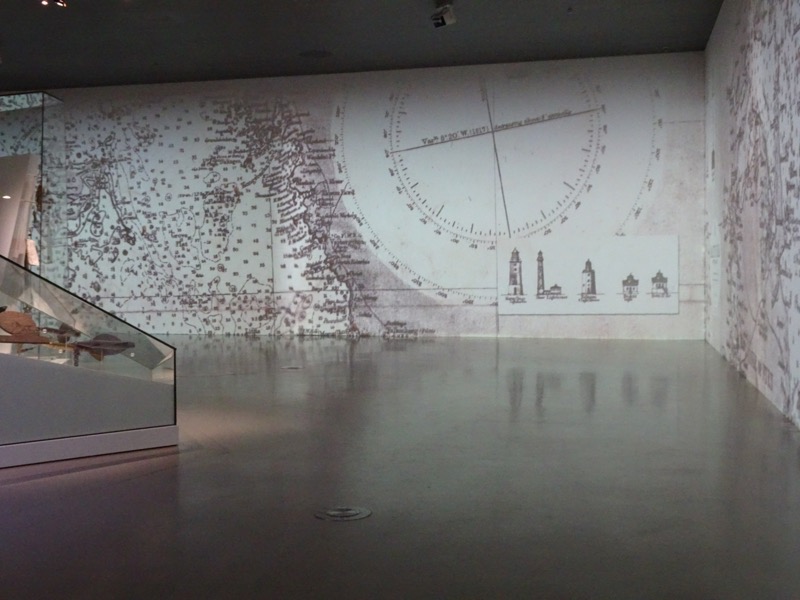
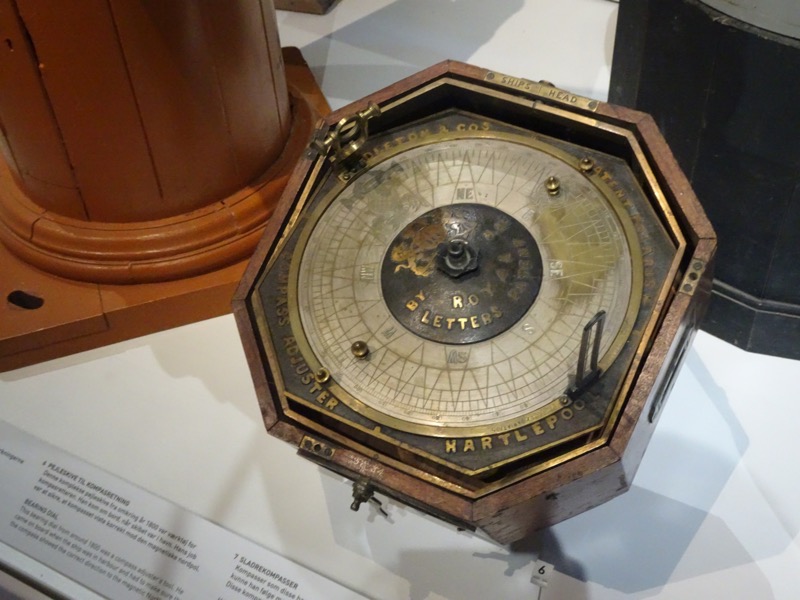
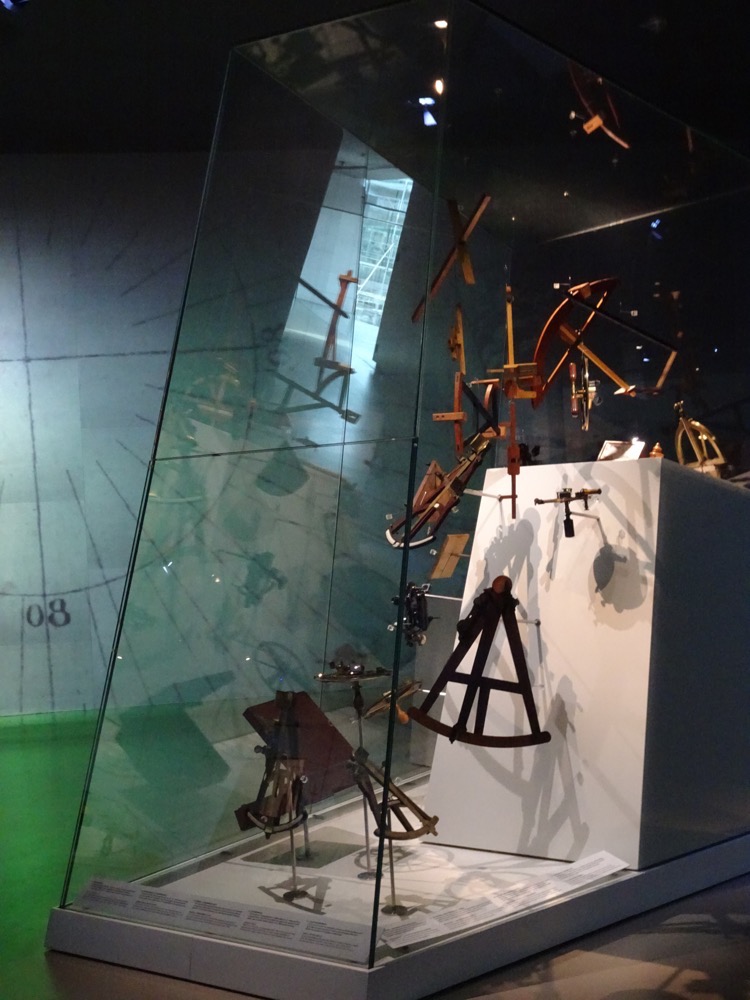 Cafe courtyard.
Cafe courtyard.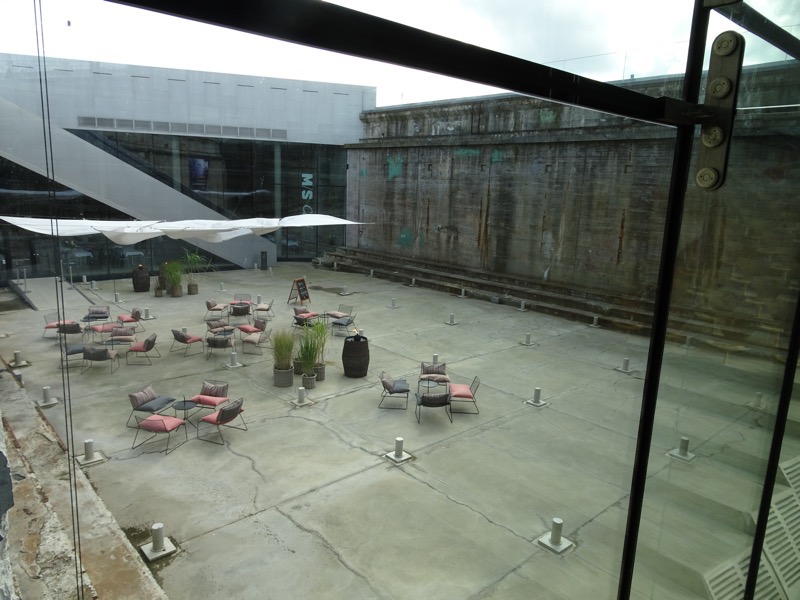 Auditorium in the Maritime Museum.
Auditorium in the Maritime Museum. 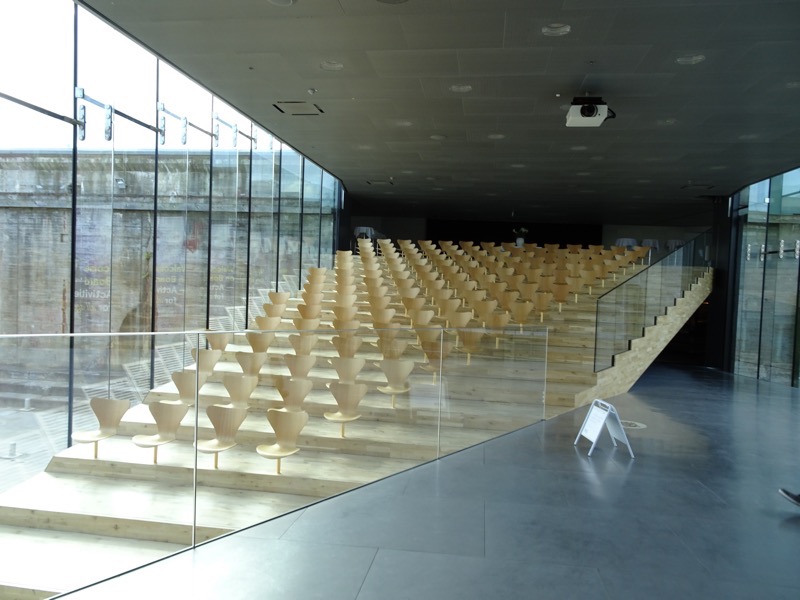
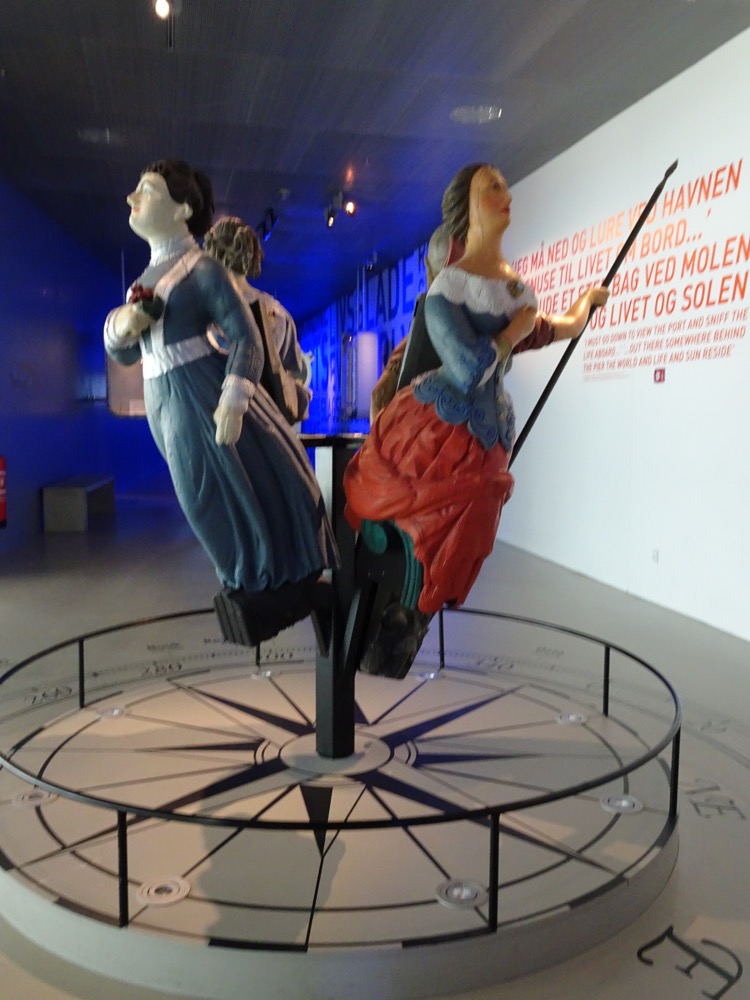 After a quick jaunt through the Maritime Musuem, we head back into the city to partake of some typical ‘postcard’ Copenhagen. The weather was so lovely I took several photos and could not pick my favourite – so I have included a bunch here.
After a quick jaunt through the Maritime Musuem, we head back into the city to partake of some typical ‘postcard’ Copenhagen. The weather was so lovely I took several photos and could not pick my favourite – so I have included a bunch here.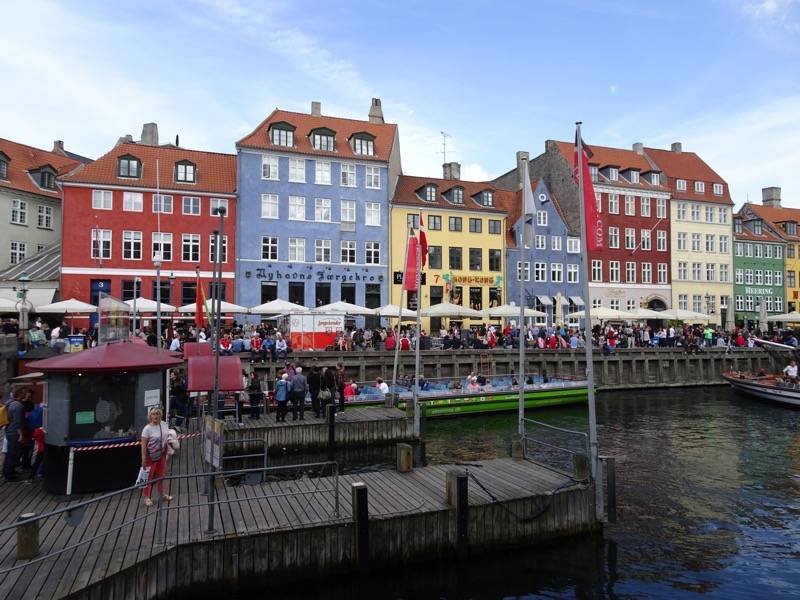
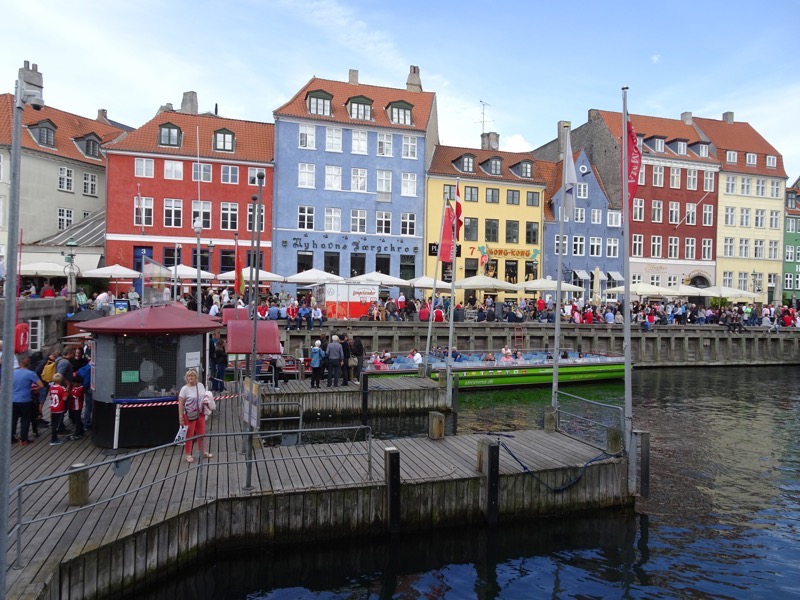 Ann Weiwei, famous Beijing artist who is usually heavily represented at the Asia Pacific Triennial, has done a large installation work at the moment consisting of 3,500 salvaged life jackets that were used by refugees. They have been placed in the window frames of the famous art museum, the Kunsthal Charlottenborg, for World Refugee Day.
Ann Weiwei, famous Beijing artist who is usually heavily represented at the Asia Pacific Triennial, has done a large installation work at the moment consisting of 3,500 salvaged life jackets that were used by refugees. They have been placed in the window frames of the famous art museum, the Kunsthal Charlottenborg, for World Refugee Day.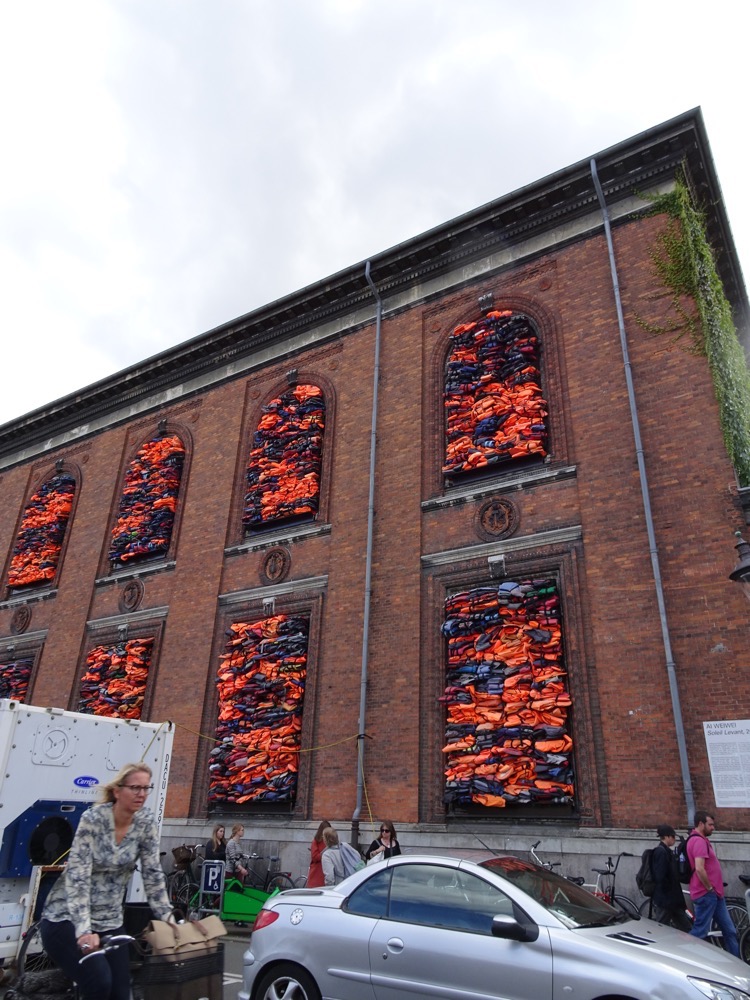
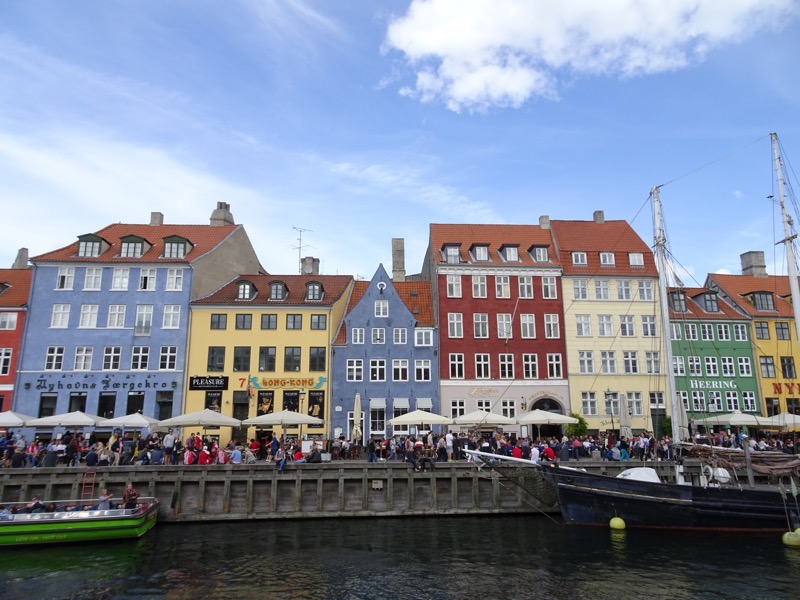
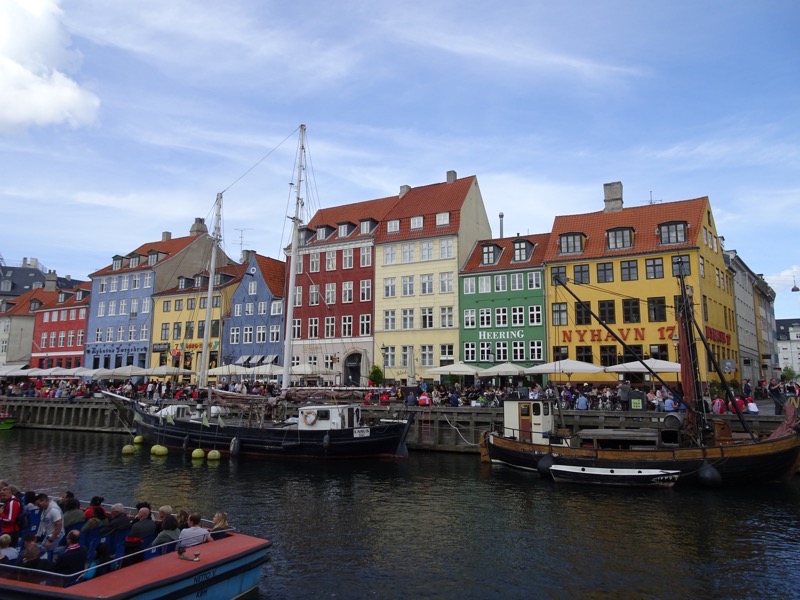
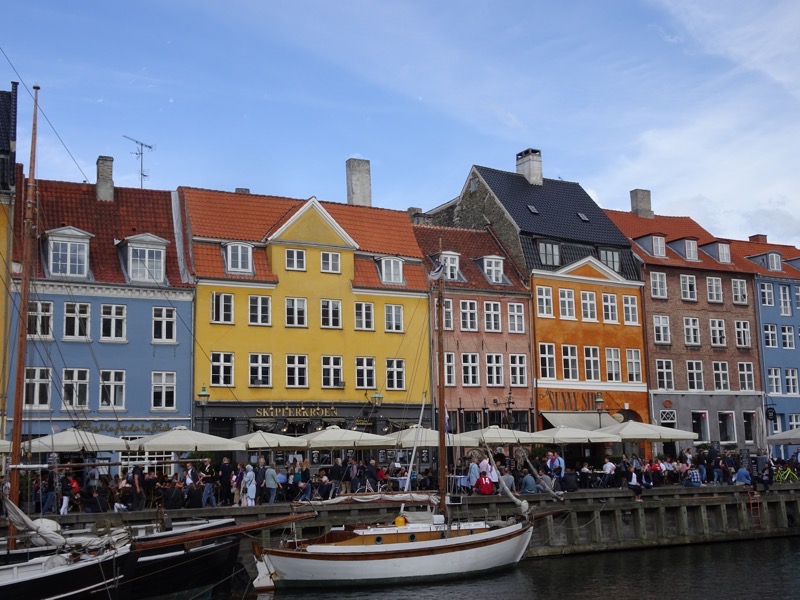
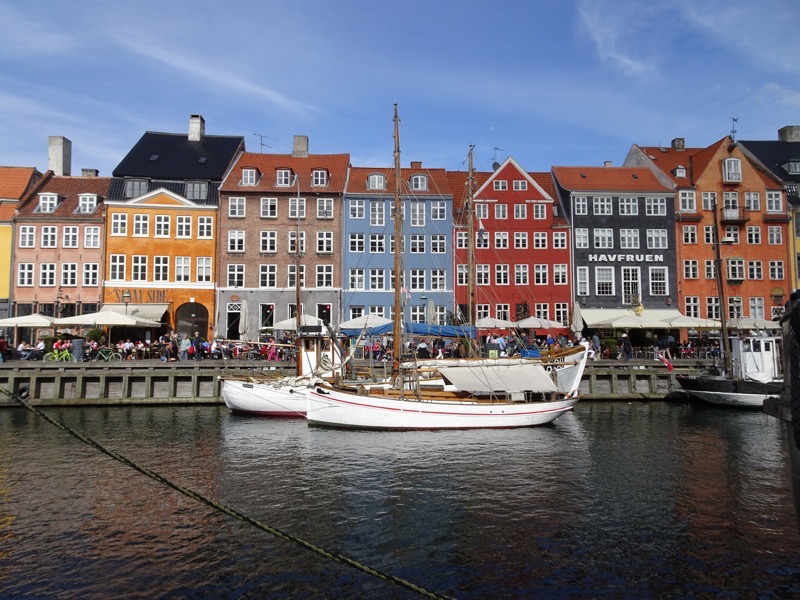
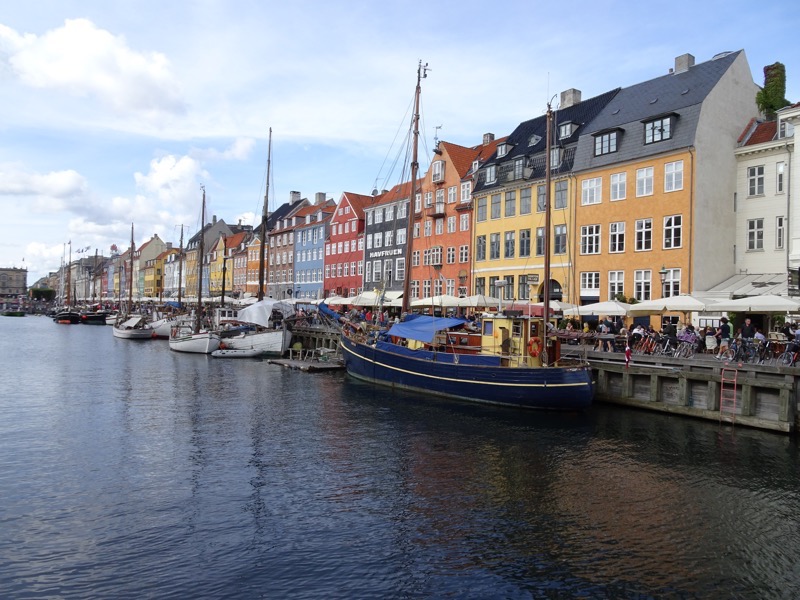
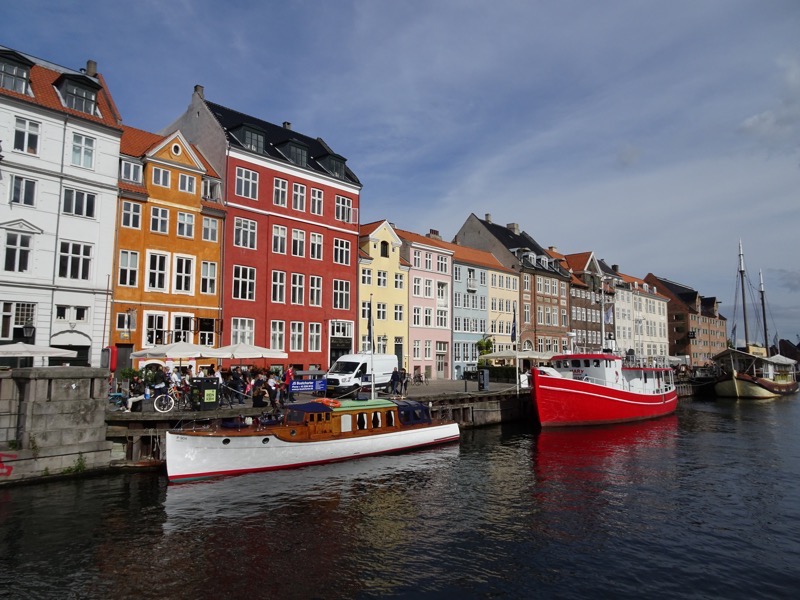
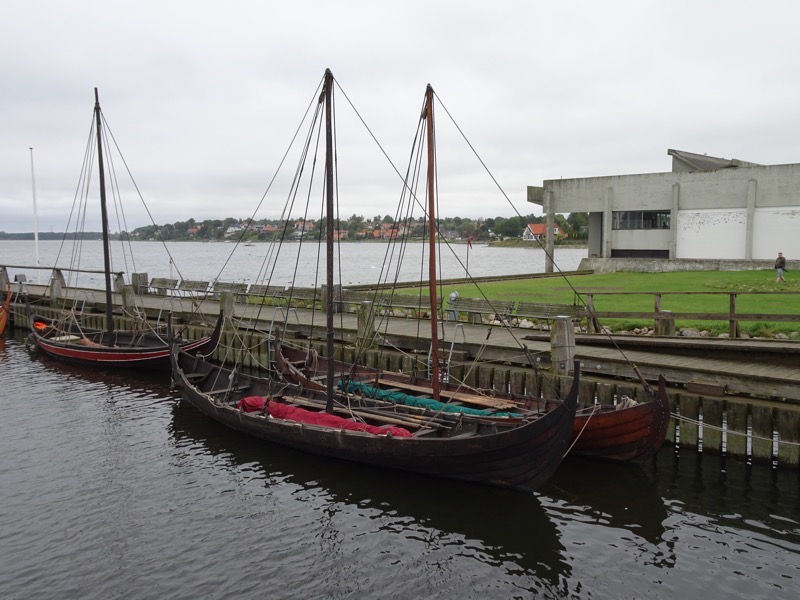 The Viking Ship Museum is an active experimental archaeology research centre, with over thirty years experience in building and sailing, reconstructions of archaeological ship finds. It is a multi-disciplinary working environment with a strong focus on research and education, where experts from many different fields collaborate in several different workshops towards reconstructions.
The Viking Ship Museum is an active experimental archaeology research centre, with over thirty years experience in building and sailing, reconstructions of archaeological ship finds. It is a multi-disciplinary working environment with a strong focus on research and education, where experts from many different fields collaborate in several different workshops towards reconstructions.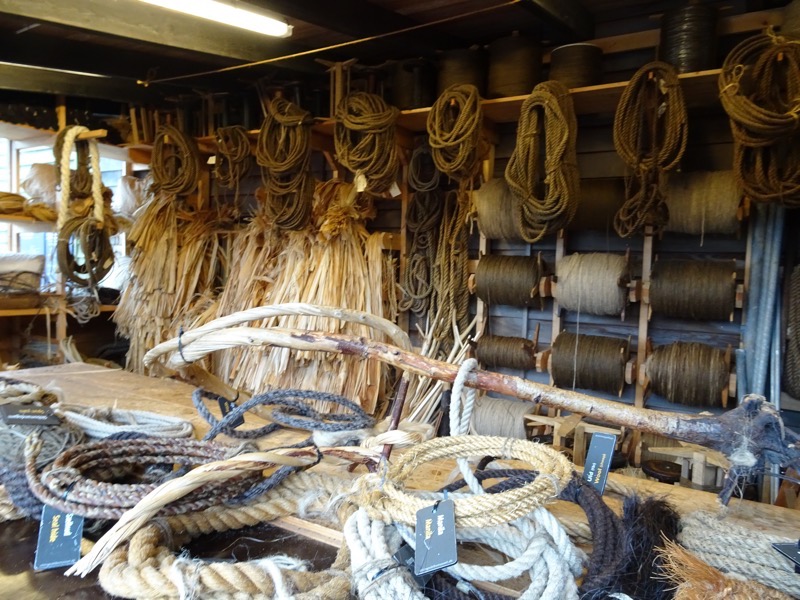 Flax hanging to dry.
Flax hanging to dry.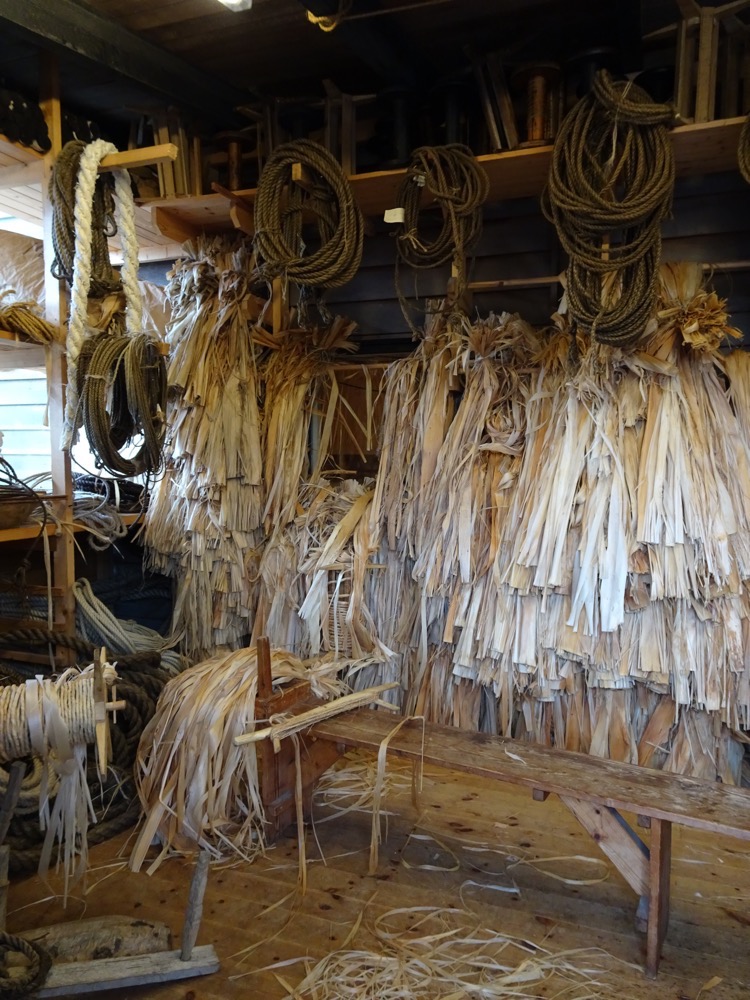 FInished rope lengths that will be used in Viking ship reconstructions.
FInished rope lengths that will be used in Viking ship reconstructions.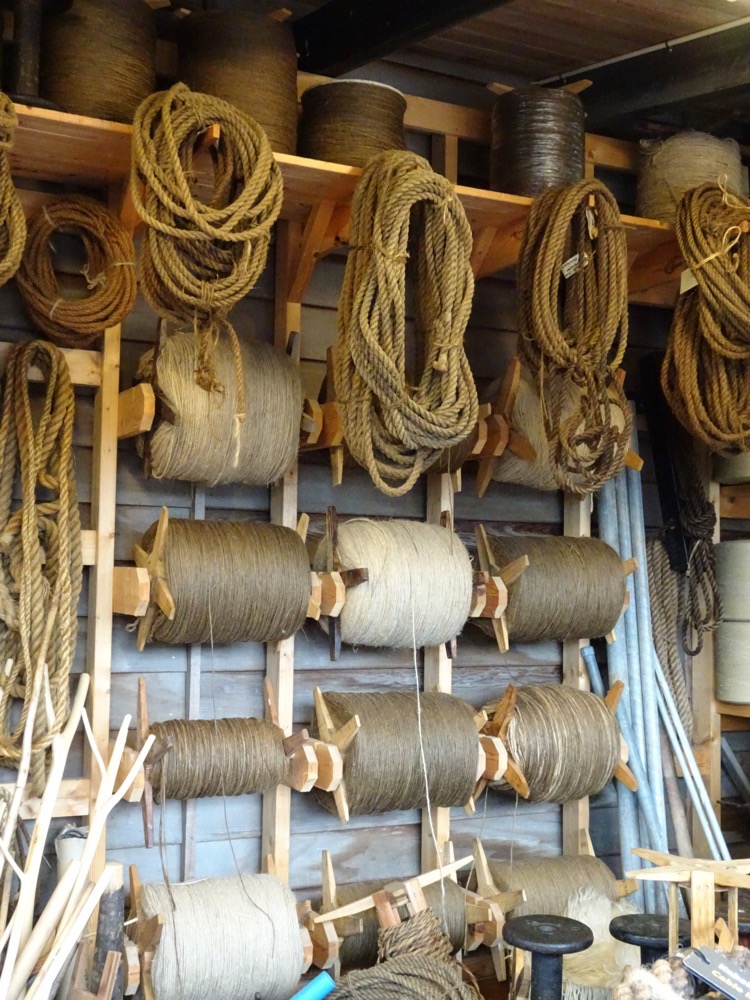
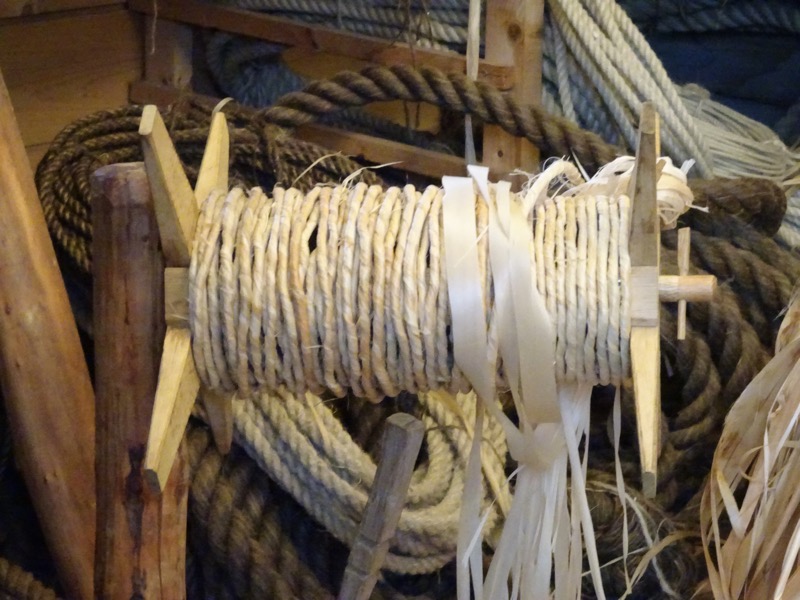 Rope making equipment.
Rope making equipment.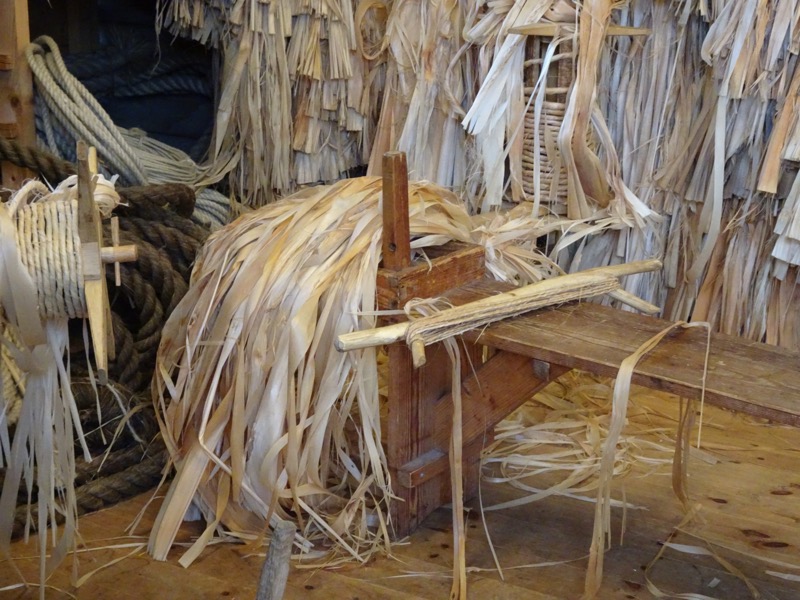 Ropes were made of many differing materials, from bull rushes and flax to elk and seal hides. Most ropes were tarred to retard fungus and bacteria and to protect from weather and deterioration.
Ropes were made of many differing materials, from bull rushes and flax to elk and seal hides. Most ropes were tarred to retard fungus and bacteria and to protect from weather and deterioration.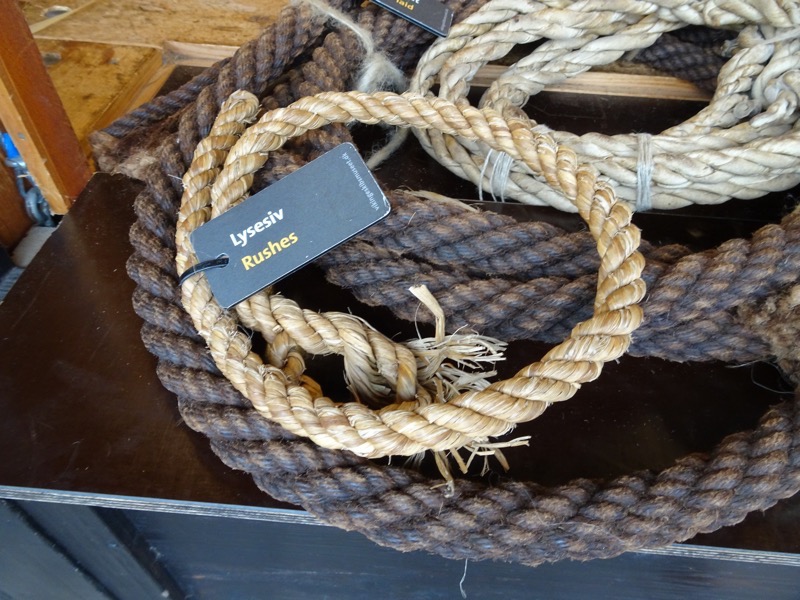
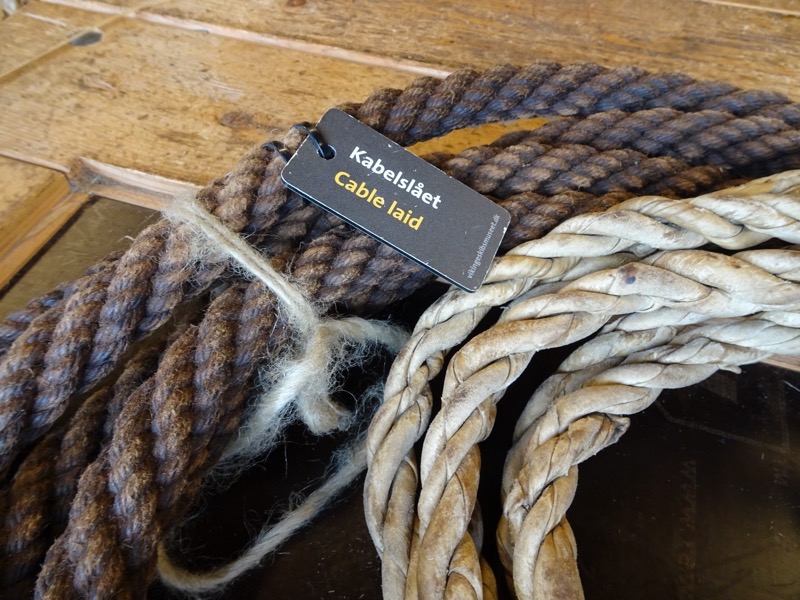 The elk and seal hide ropes had a natural waxy waterproof texture.
The elk and seal hide ropes had a natural waxy waterproof texture.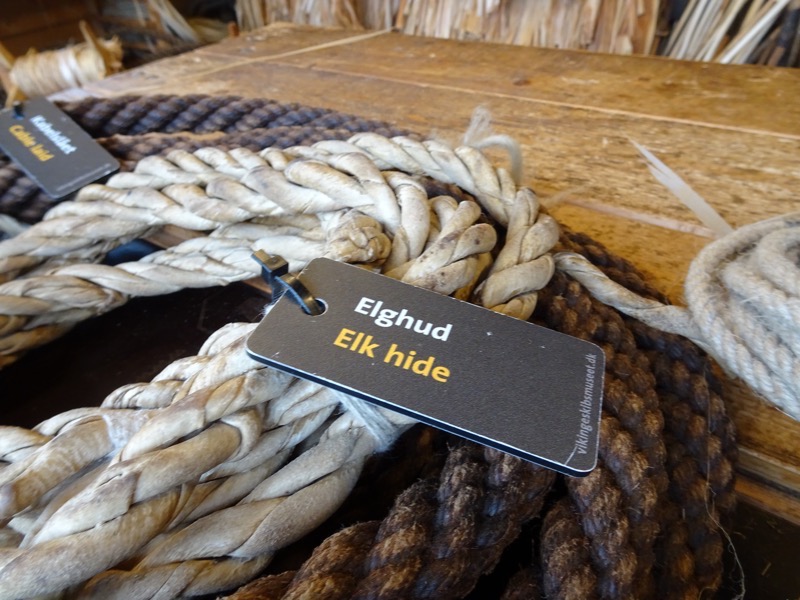
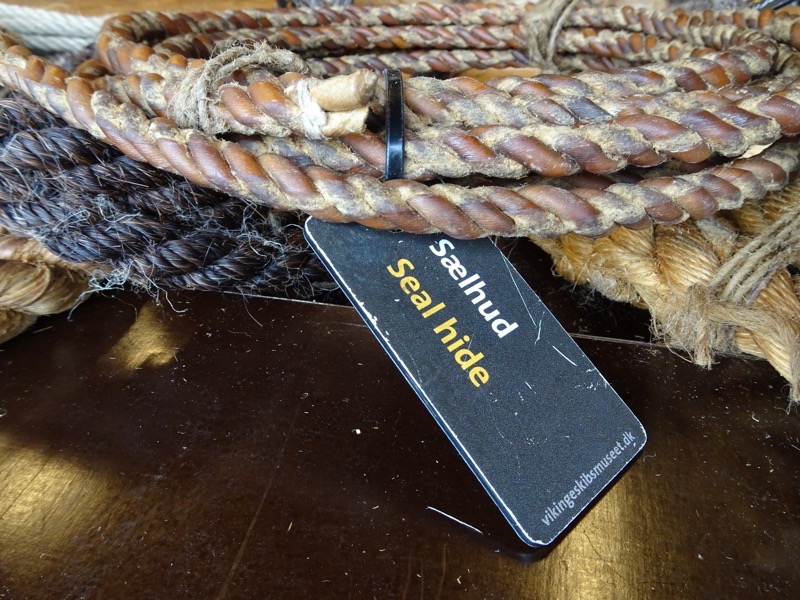
 Clamps to hold timbers during construction.
Clamps to hold timbers during construction.
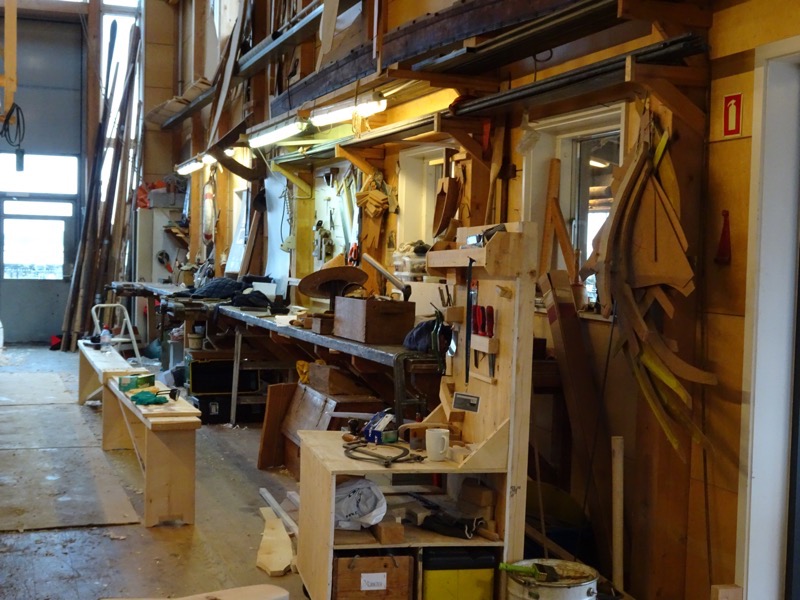
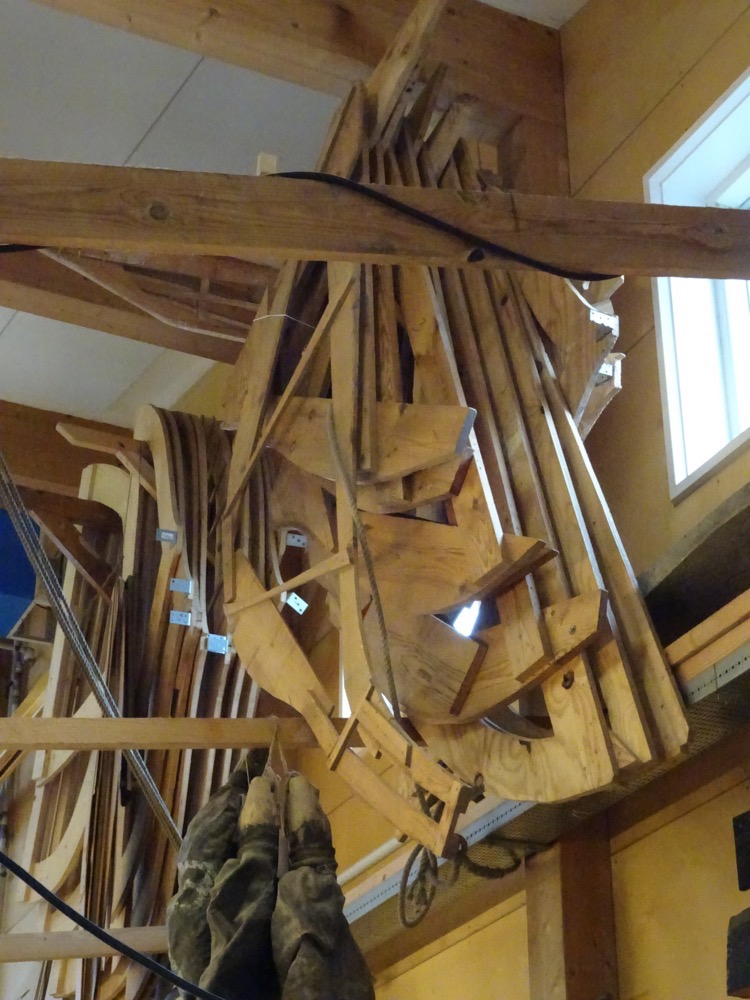 The workshop may look reasonably modern with modern lighting in a modern building, but all the tools used are replicas of period tools that would have been used during the Viking age to build ships.
The workshop may look reasonably modern with modern lighting in a modern building, but all the tools used are replicas of period tools that would have been used during the Viking age to build ships.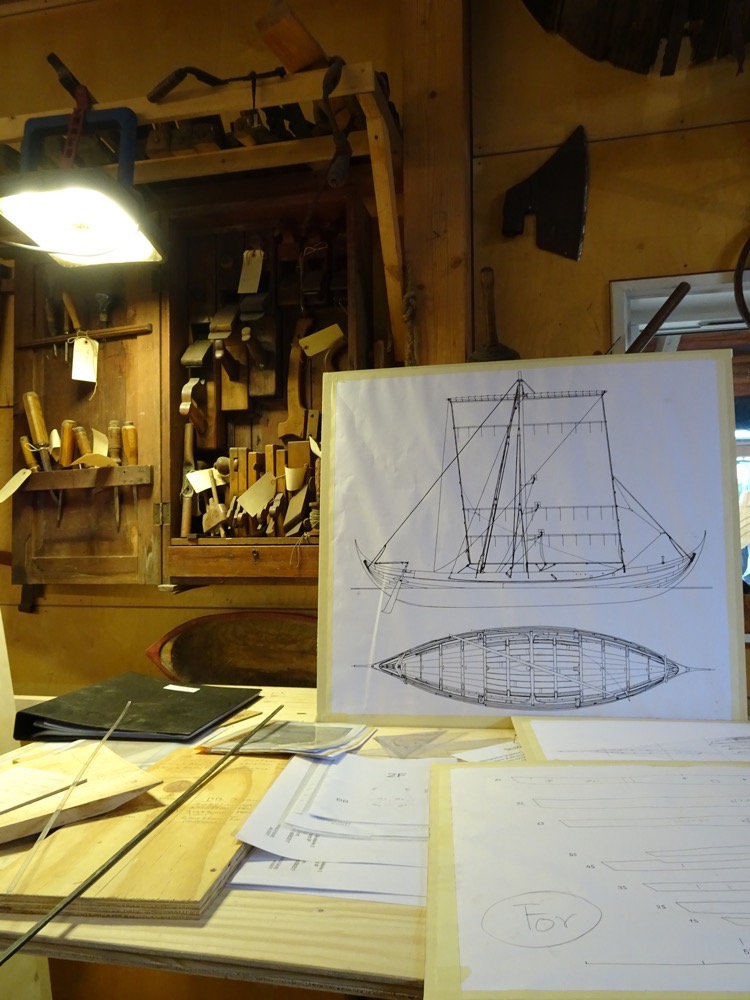
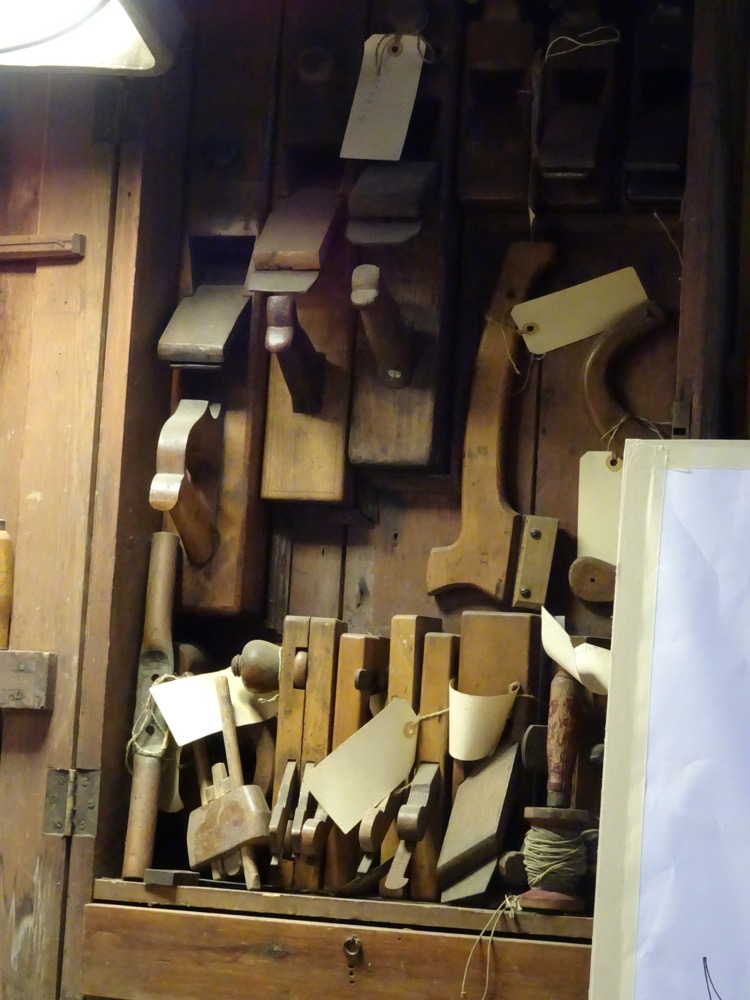
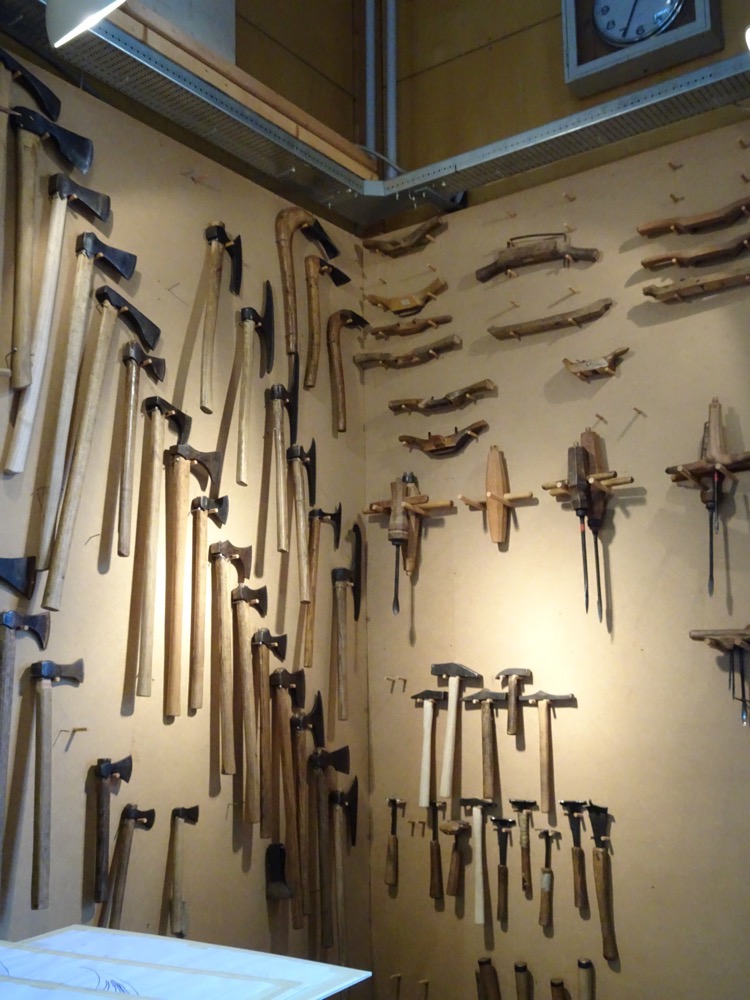
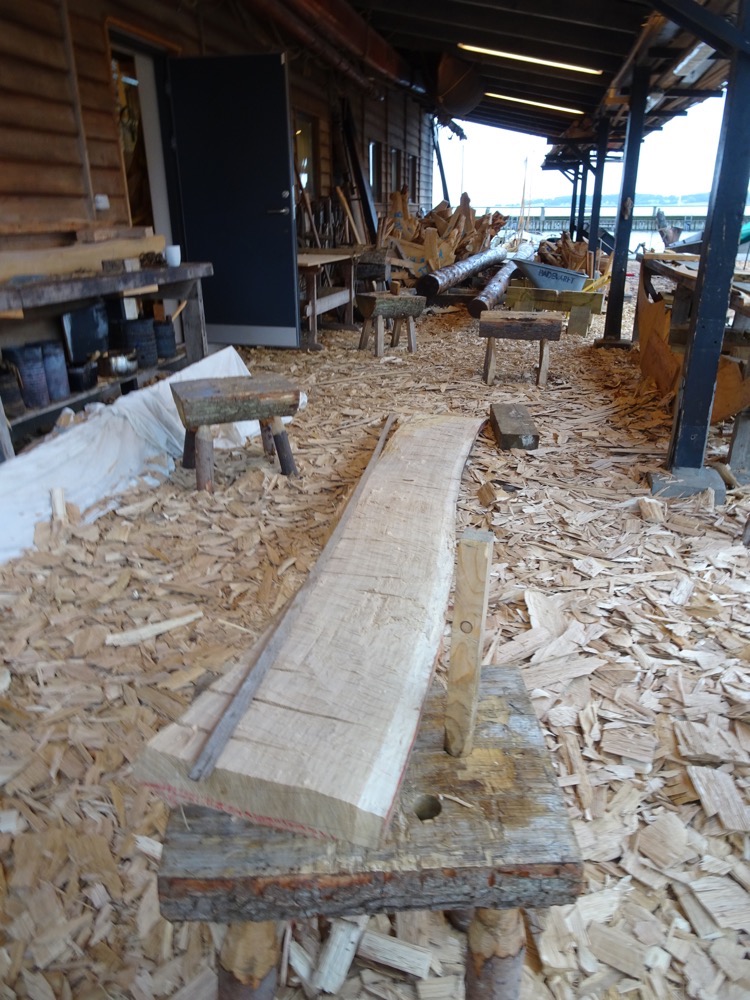
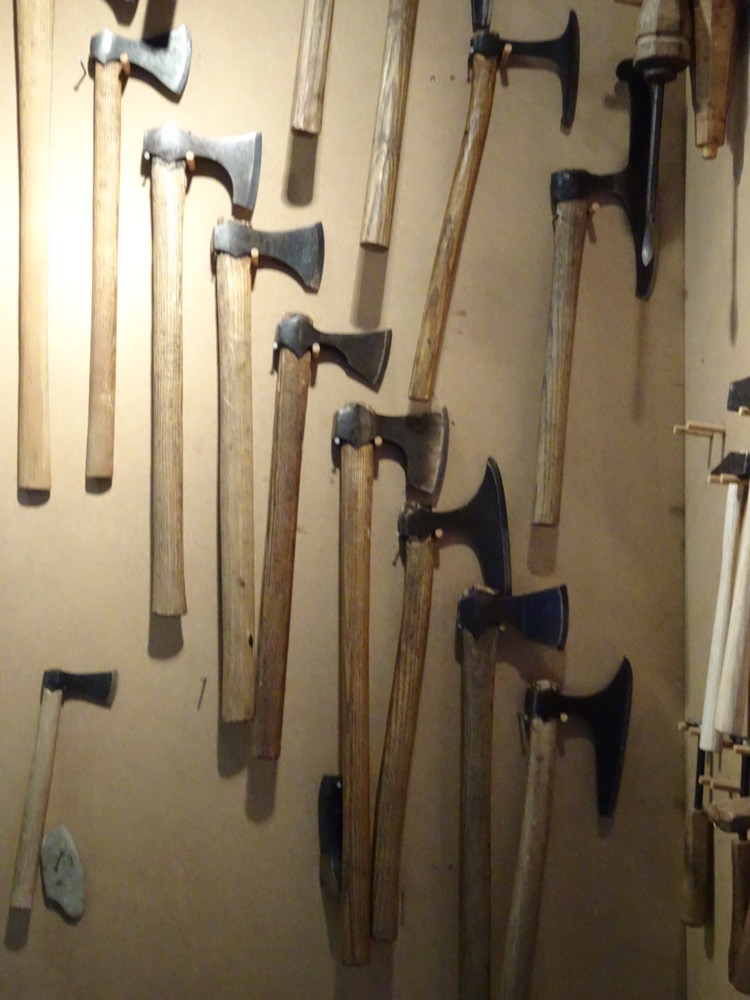
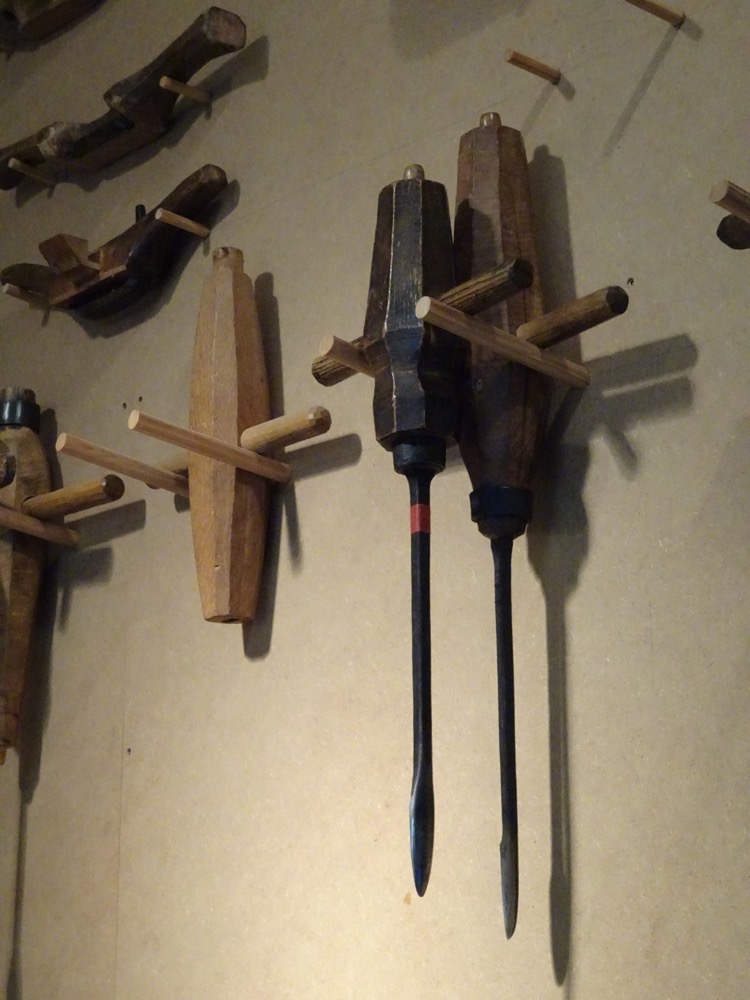
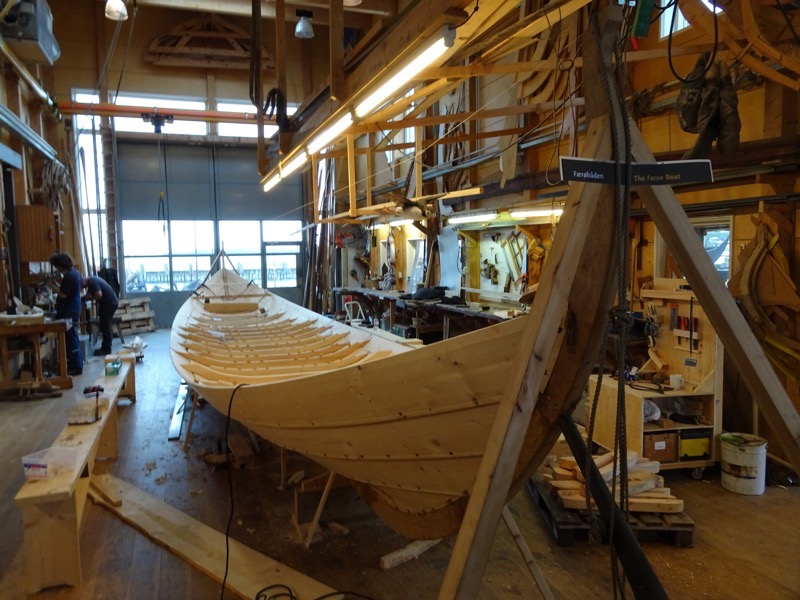 Larger reconstructions are done in the outside part of the shipyard.
Larger reconstructions are done in the outside part of the shipyard. 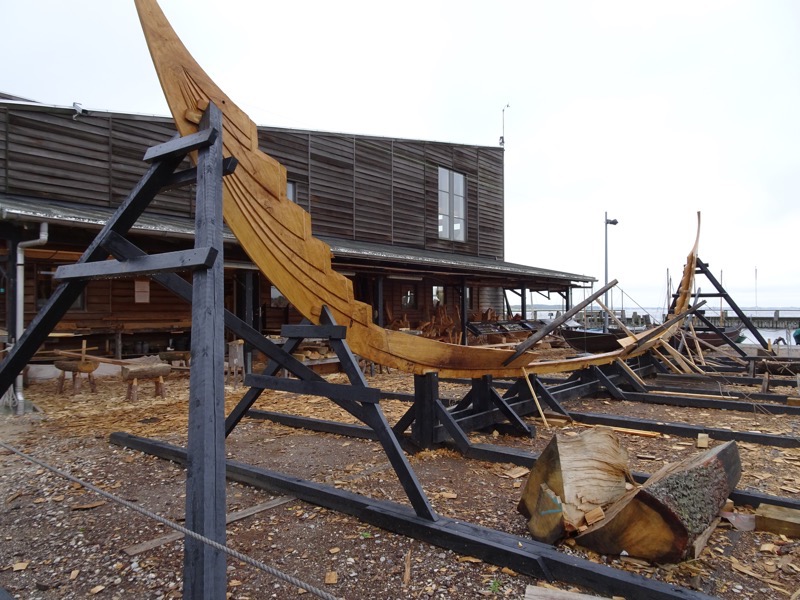
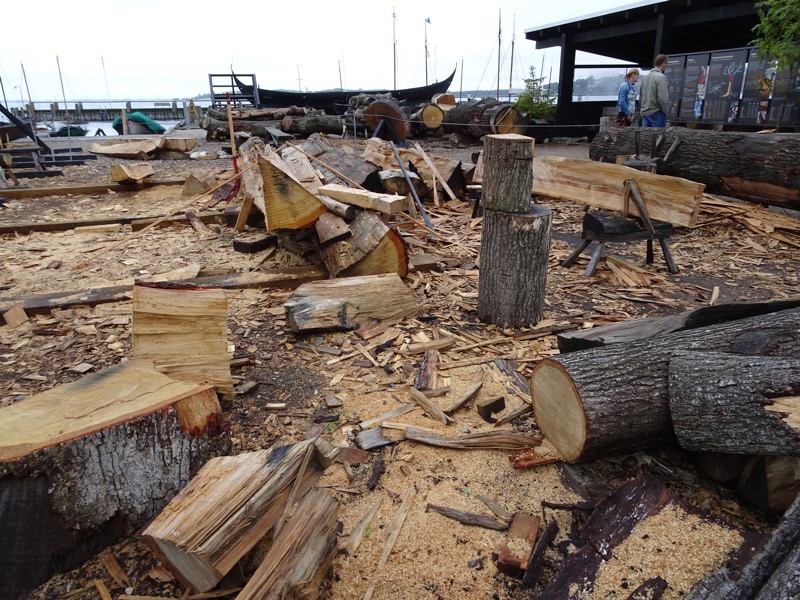
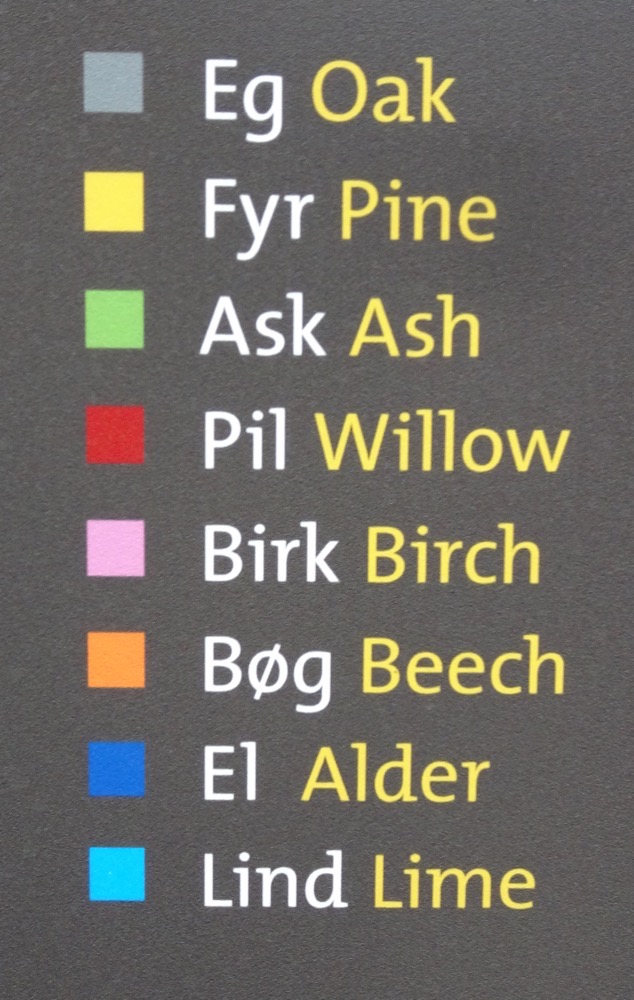
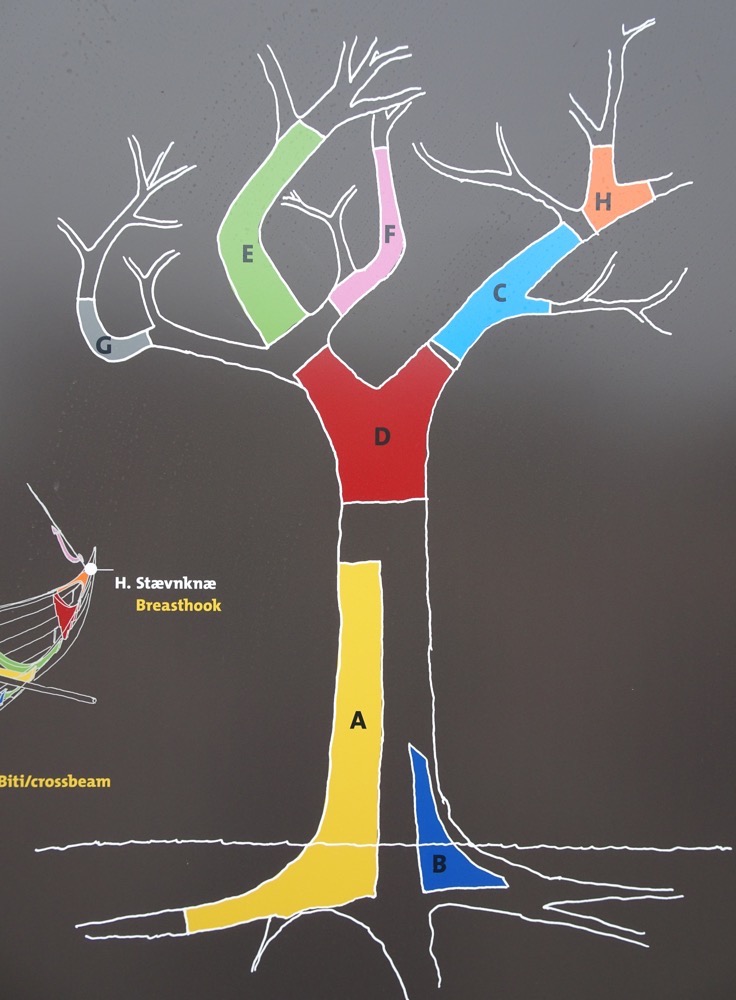
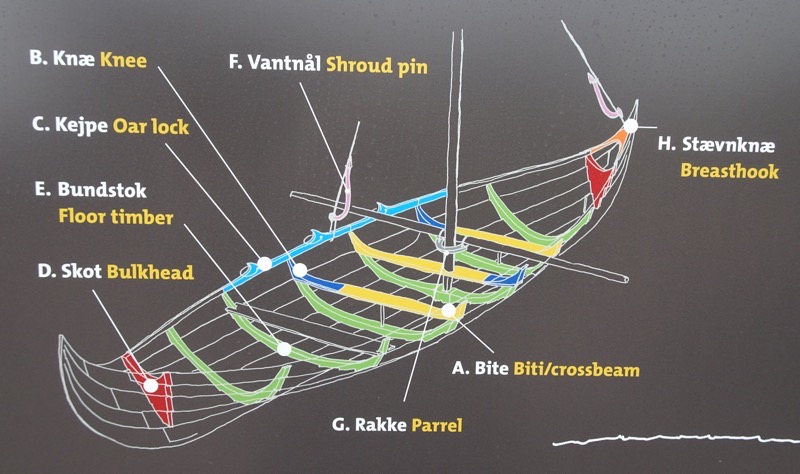
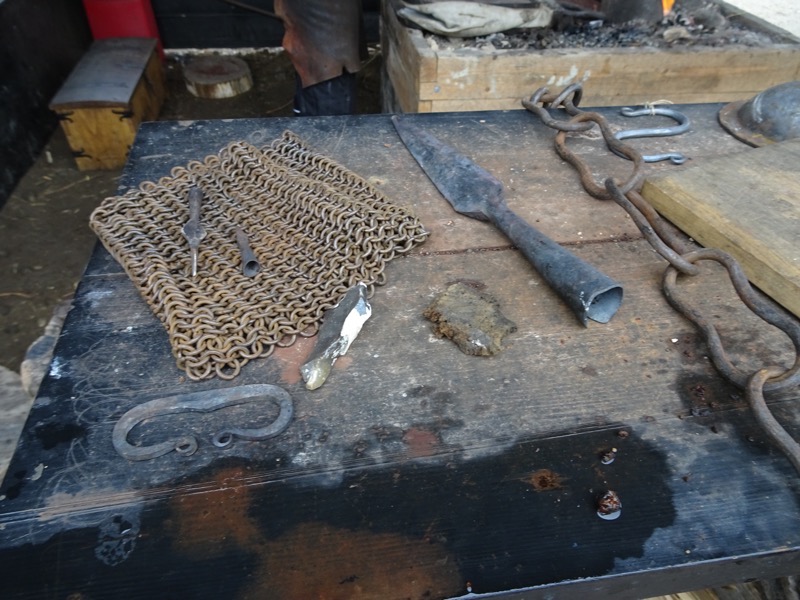
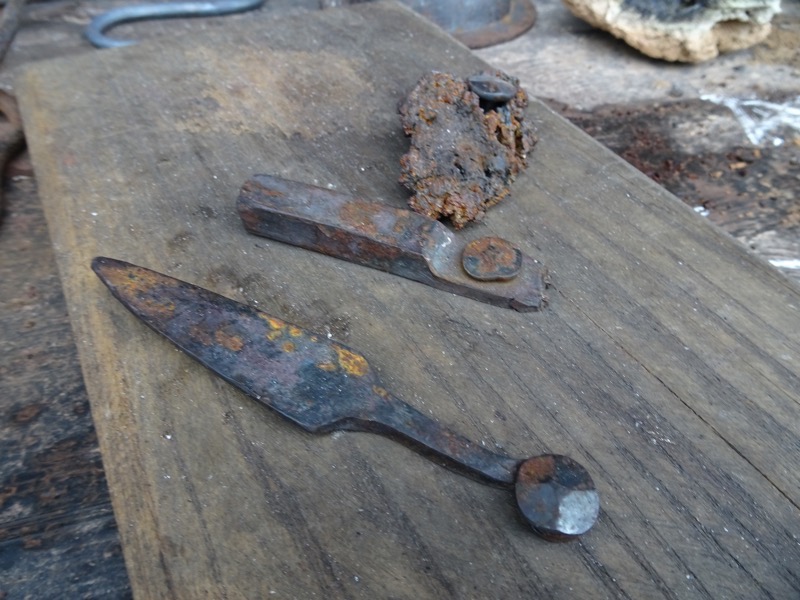 Nails. While it must be boring for the smith to make so many nails, they were integral to the ship building process.
Nails. While it must be boring for the smith to make so many nails, they were integral to the ship building process.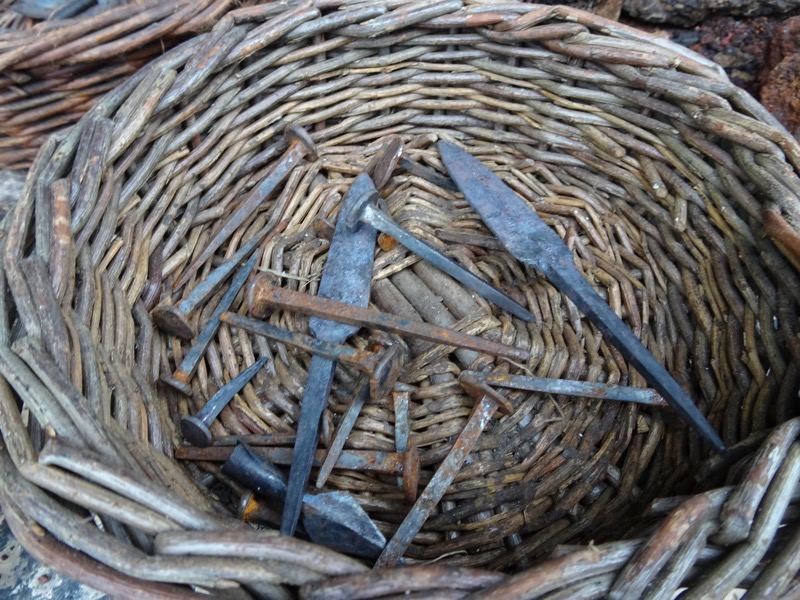
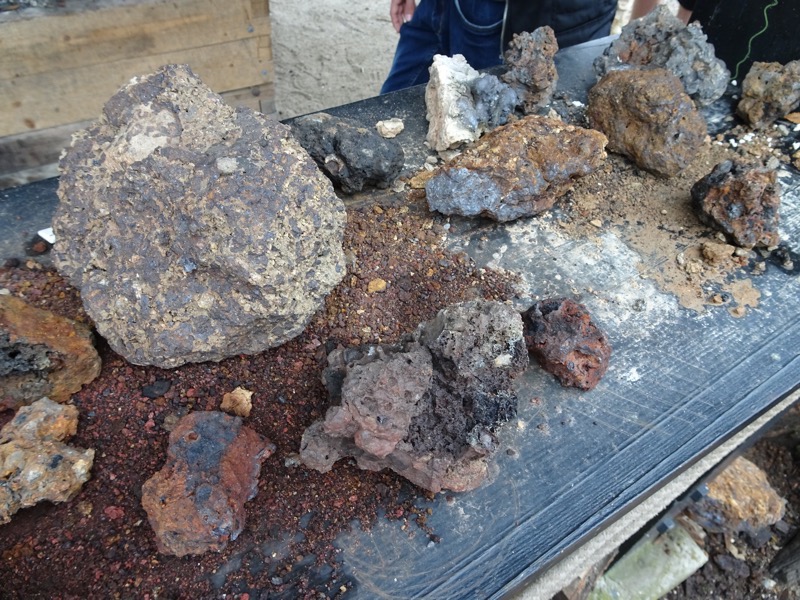

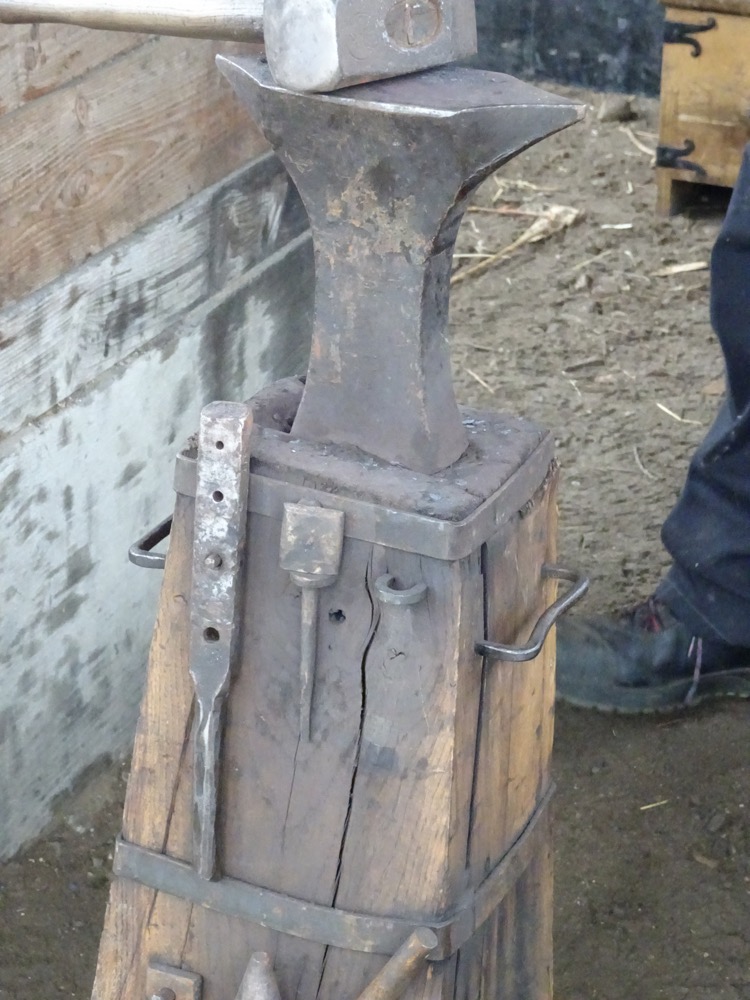
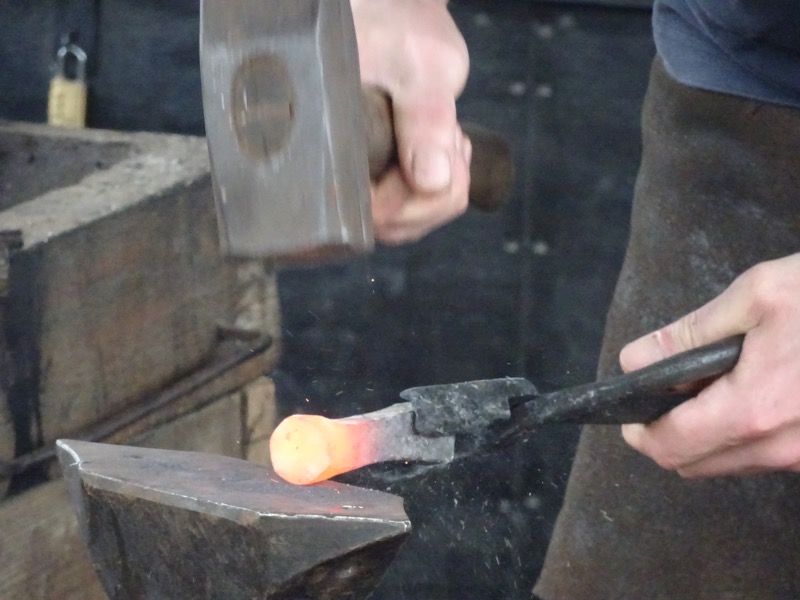
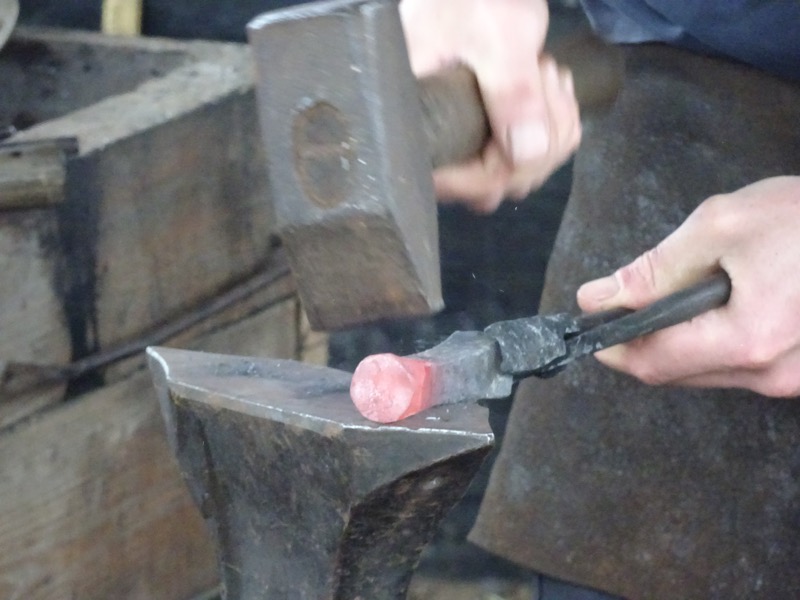
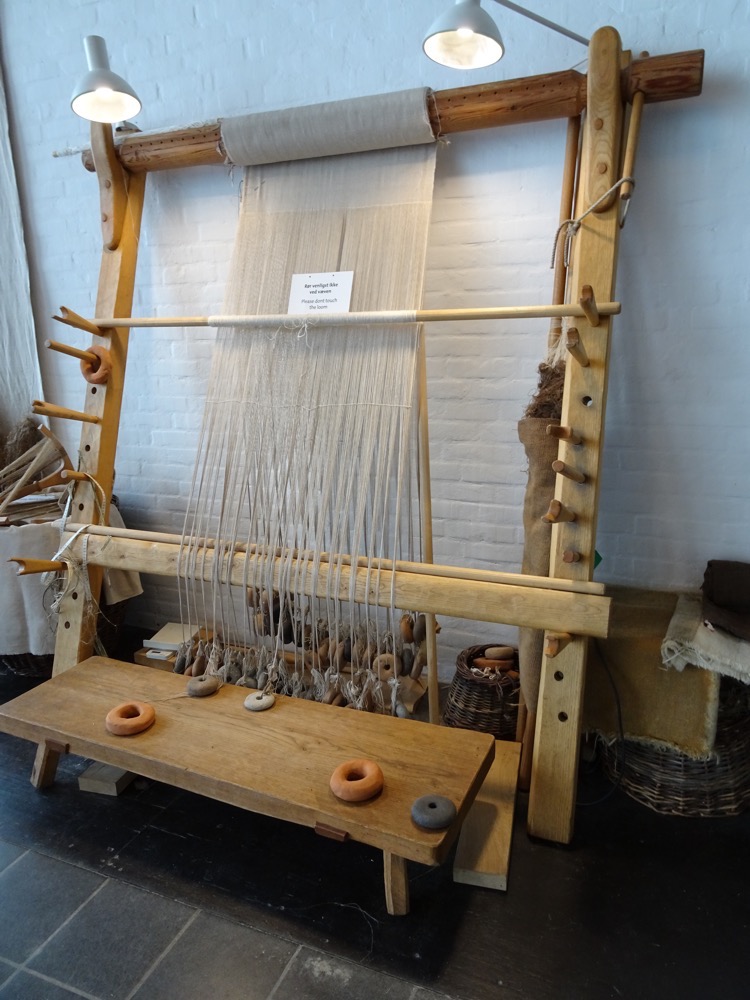
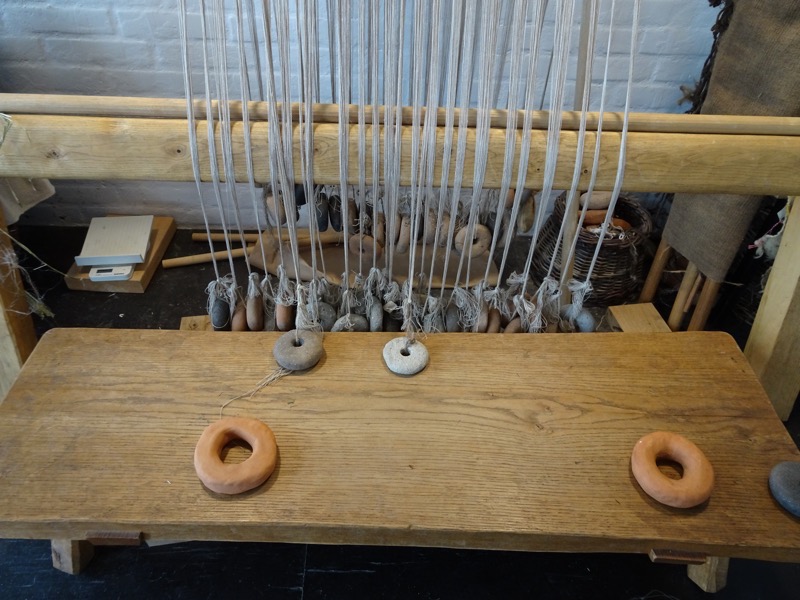
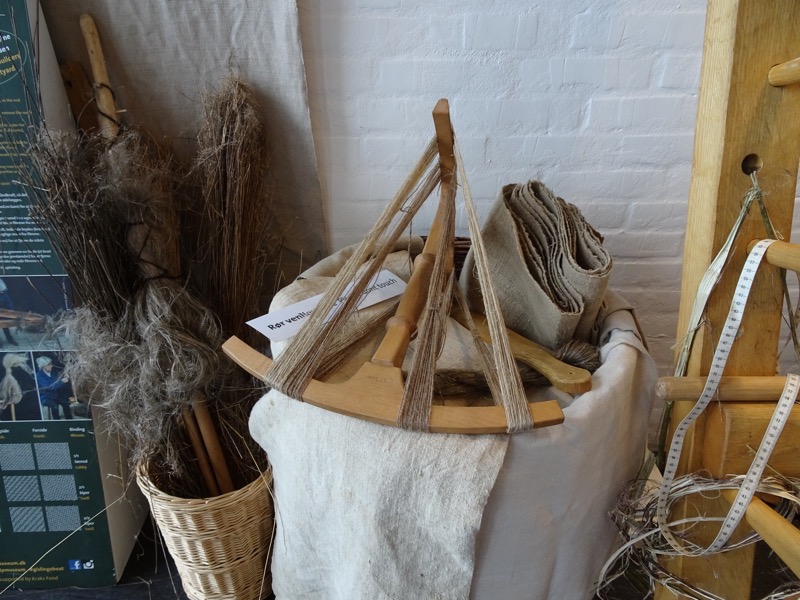
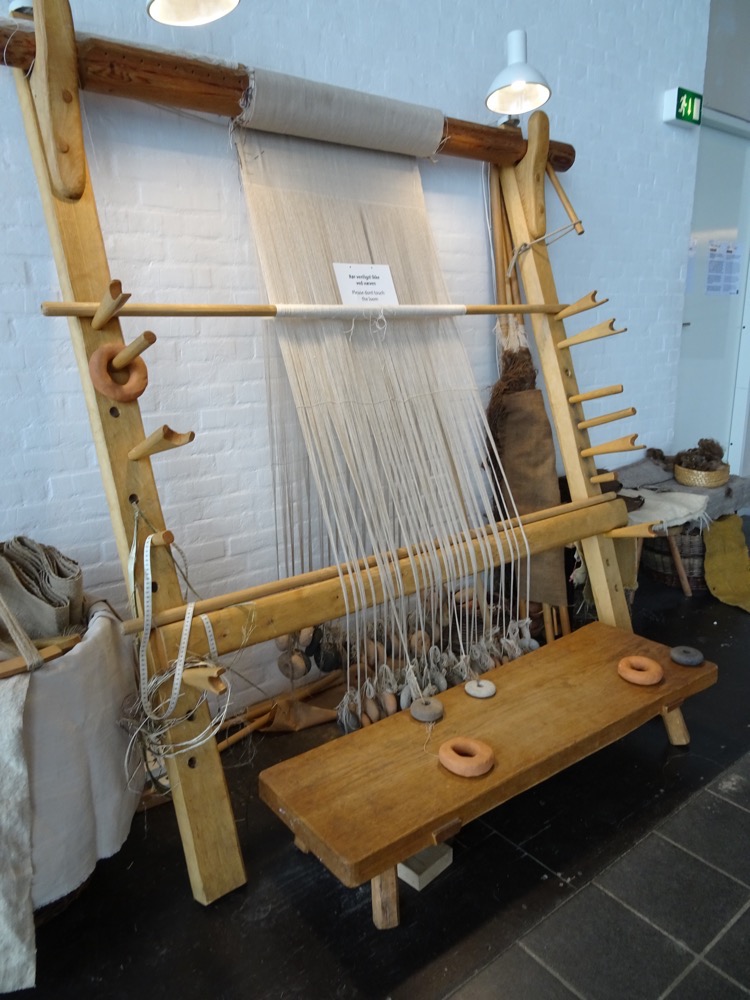
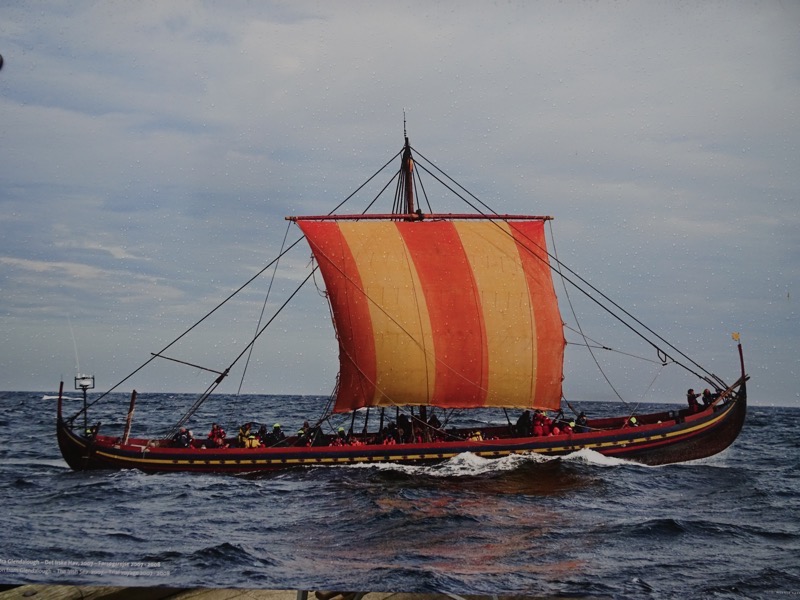
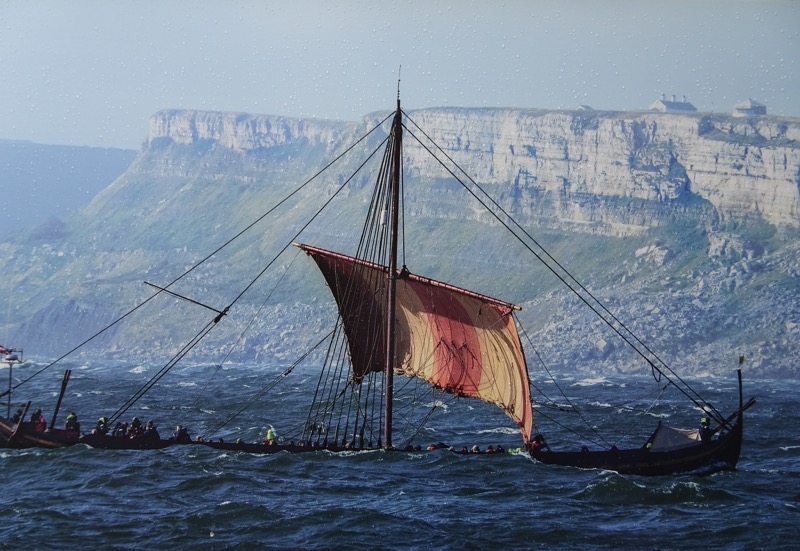
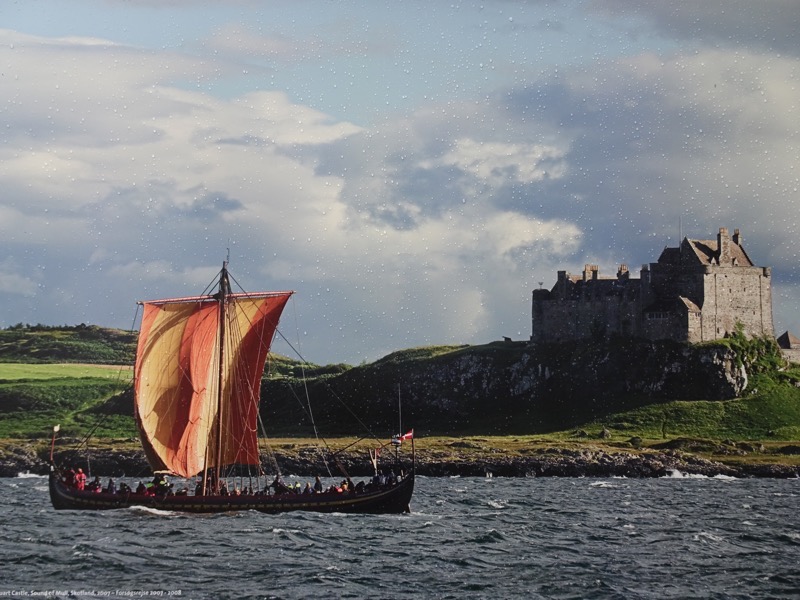 The summer 2007-2008 voyage:
The summer 2007-2008 voyage: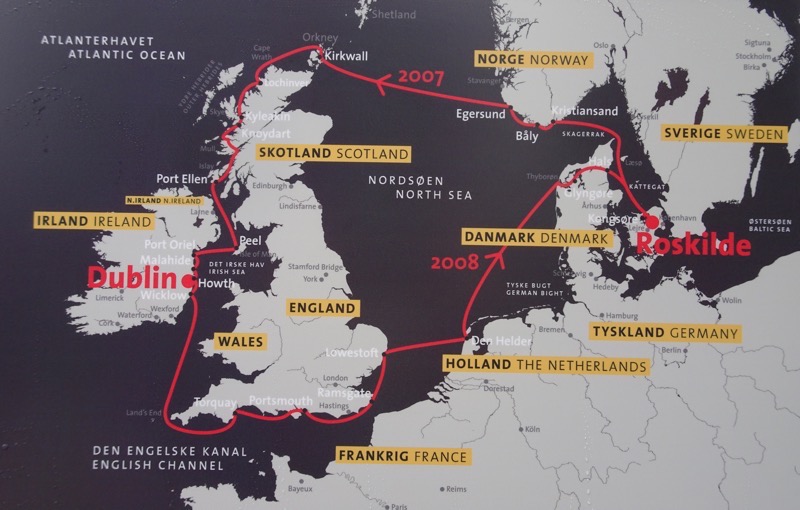
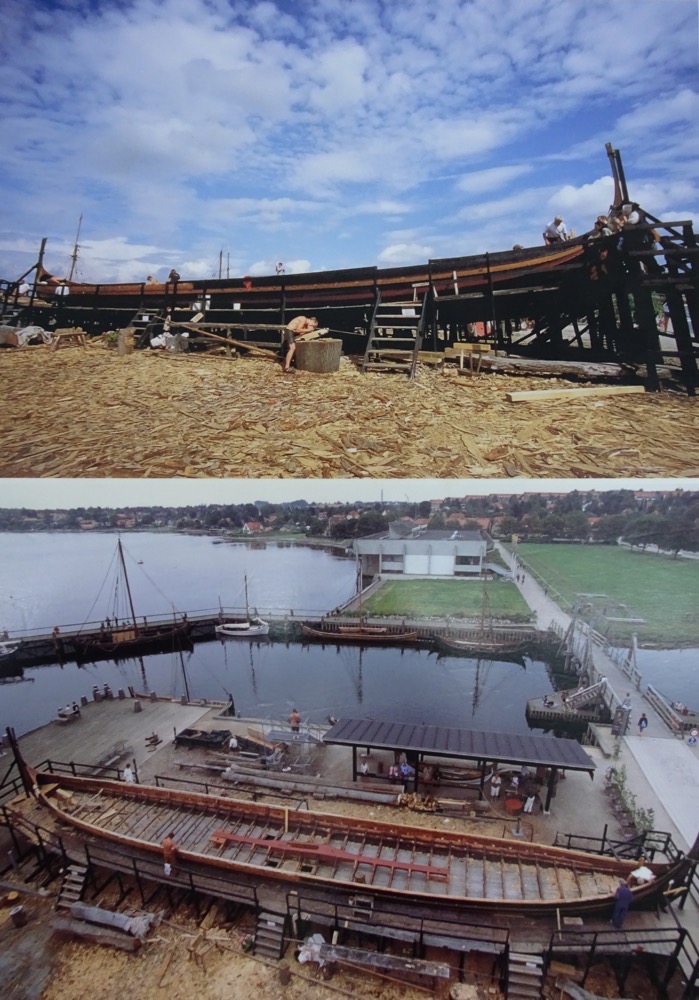 The Sea Stallion today.
The Sea Stallion today.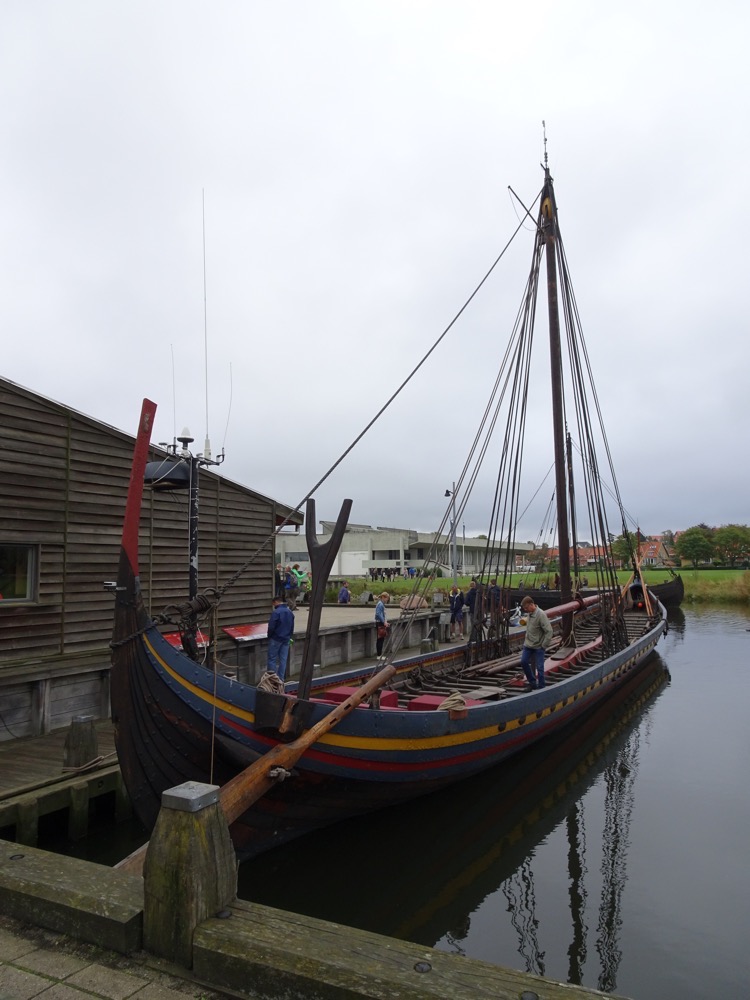
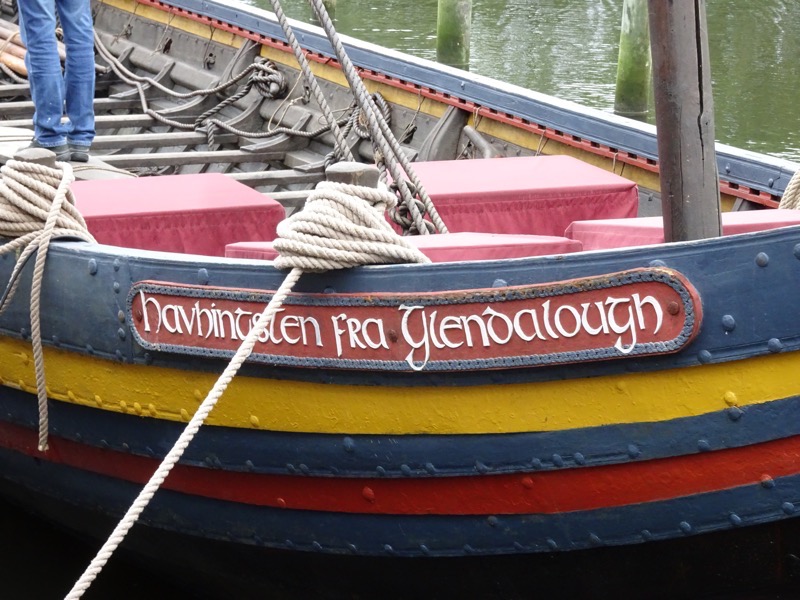
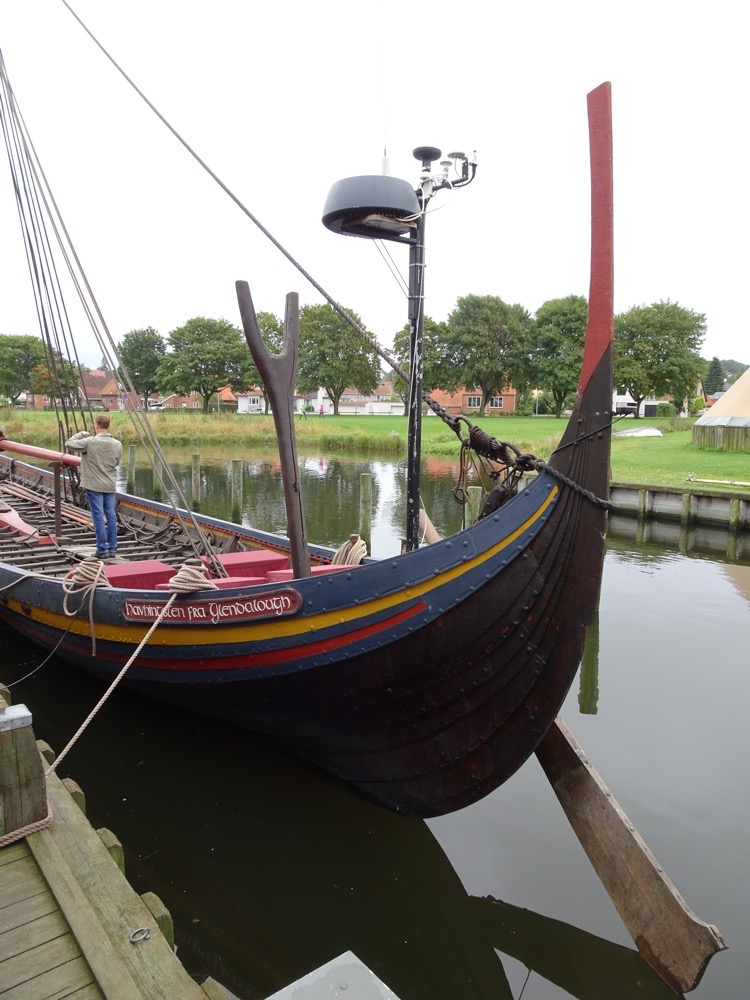
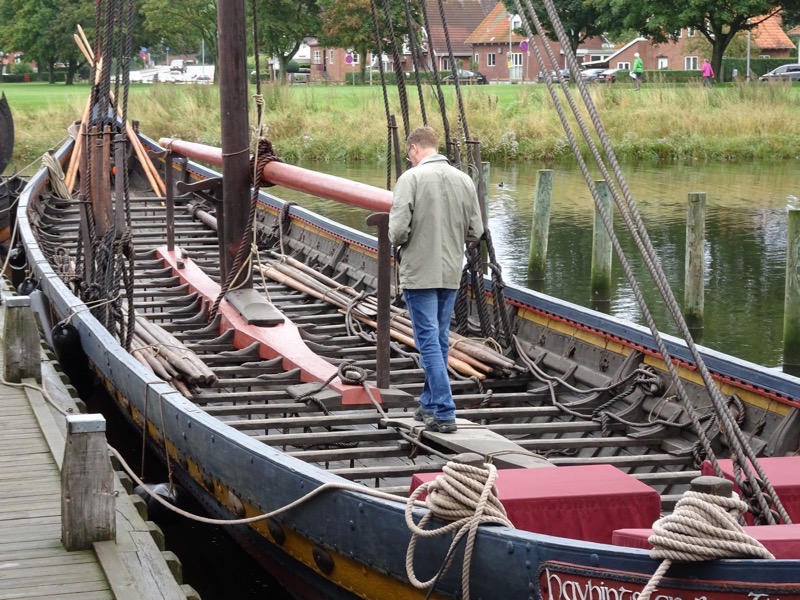
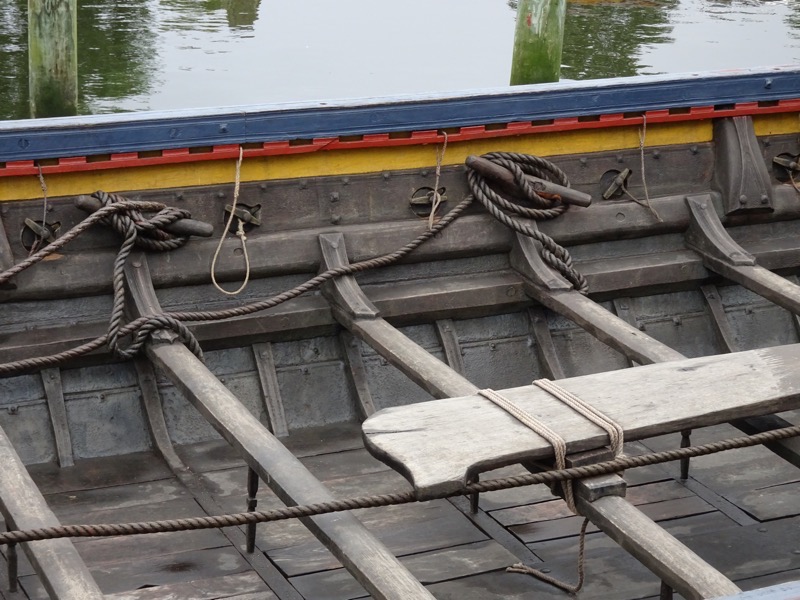
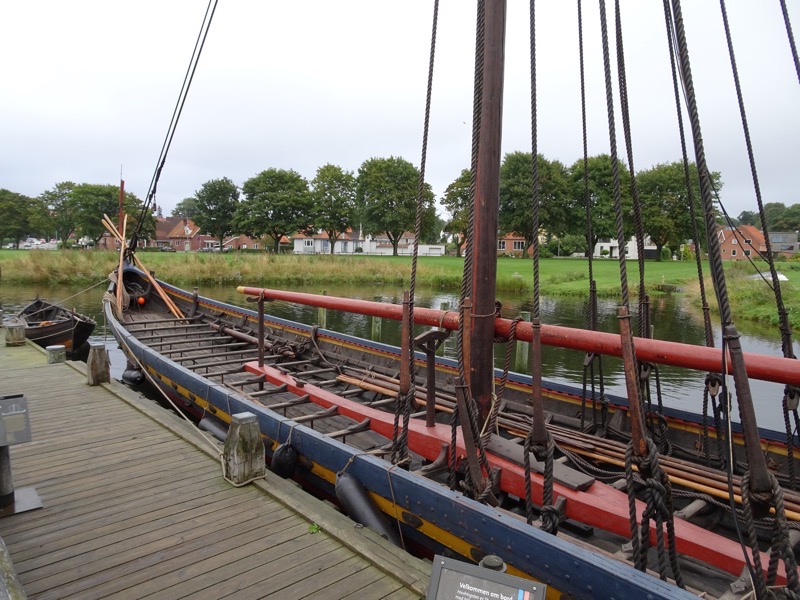
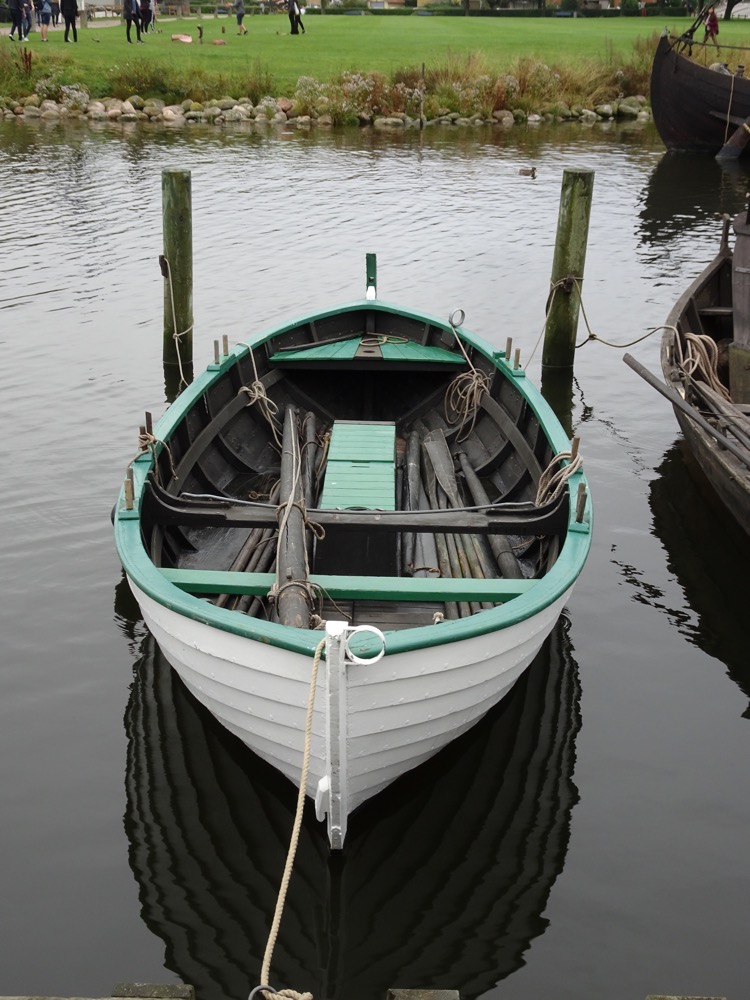 Replica of a 3-sail smack
Replica of a 3-sail smack 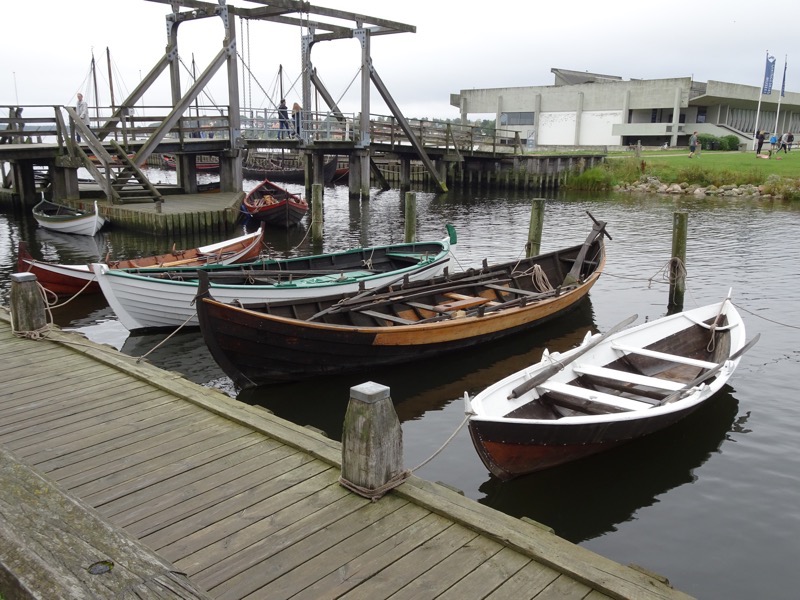 Attamannafar from the Faroe Islands (centre in the picture)
Attamannafar from the Faroe Islands (centre in the picture)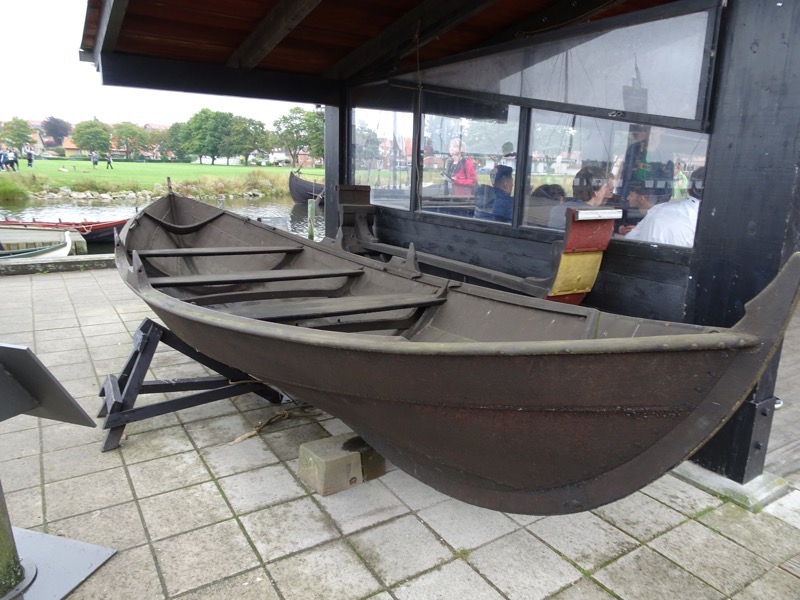
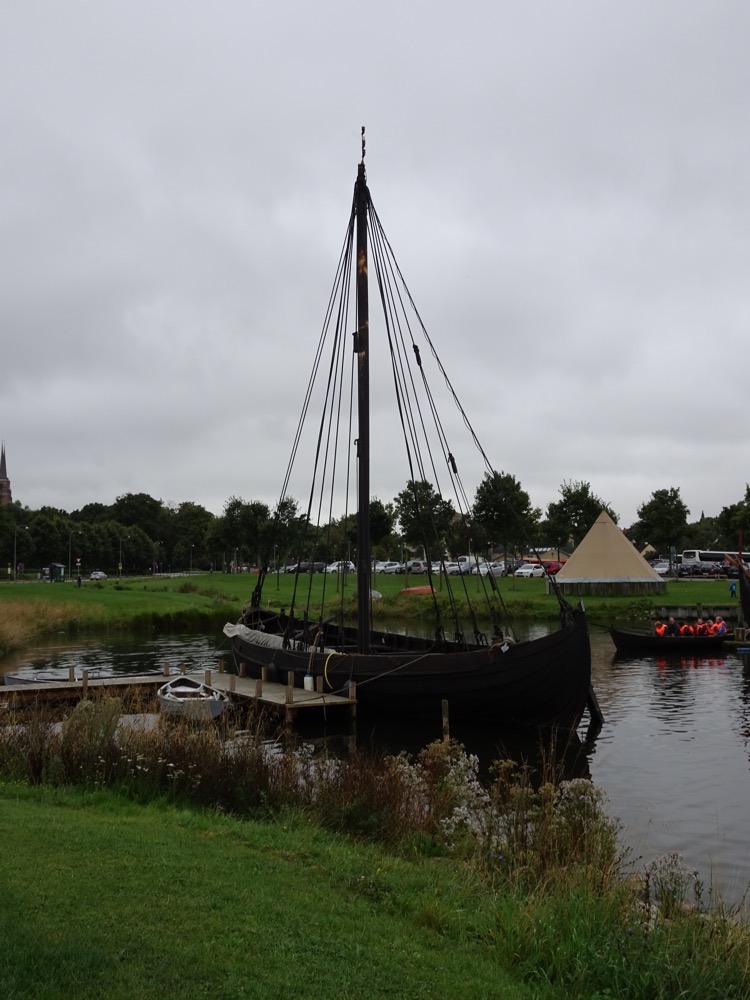
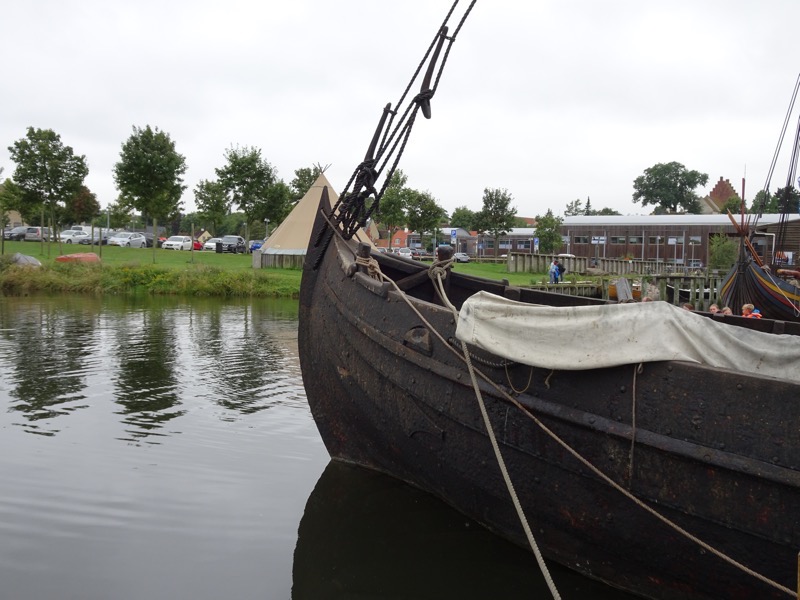
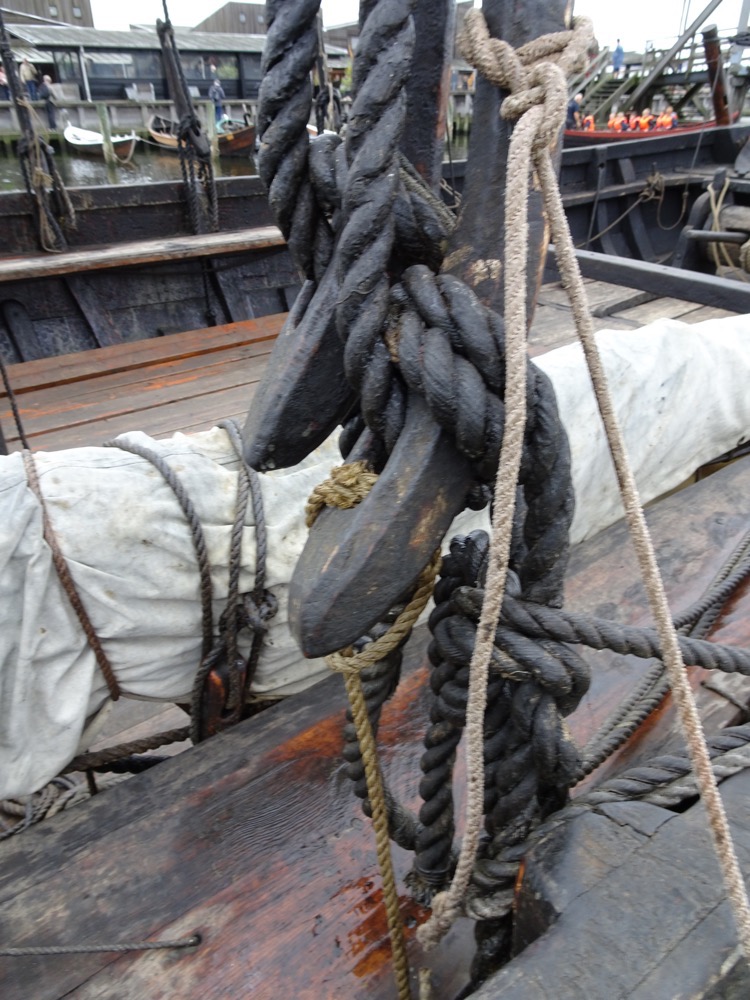
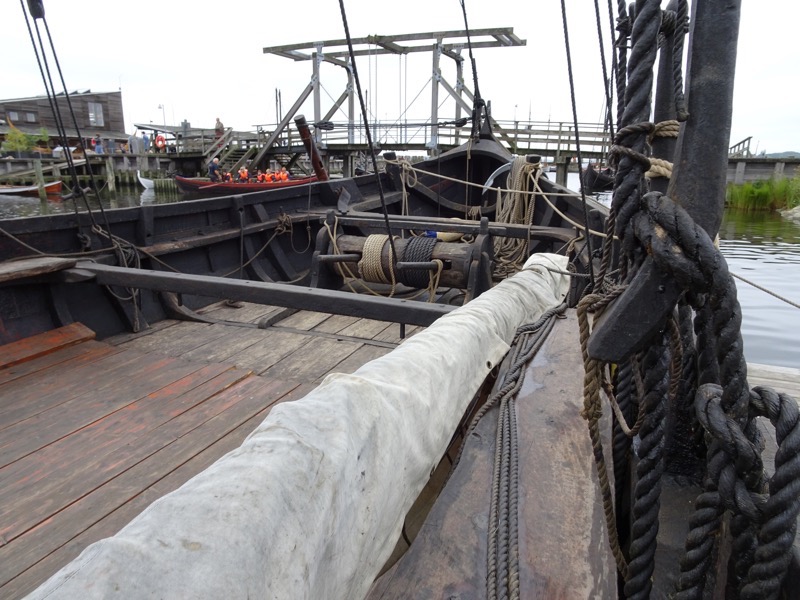
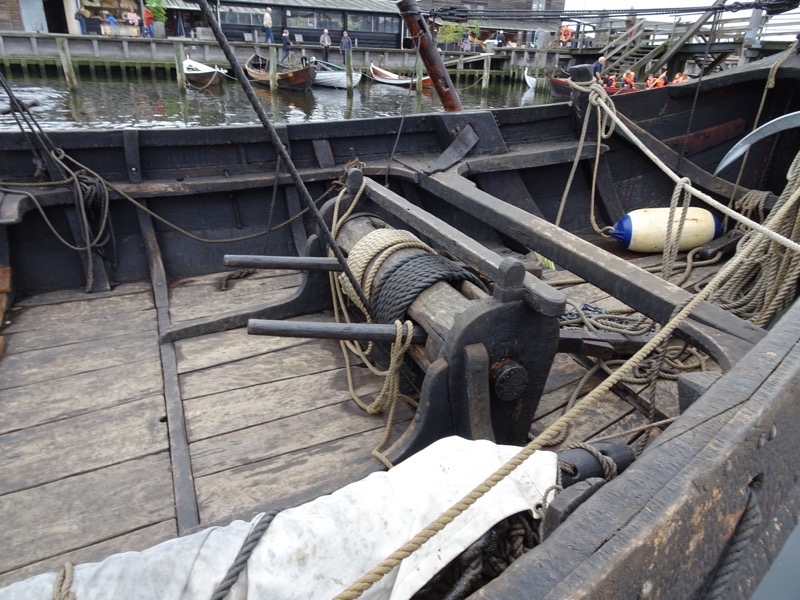
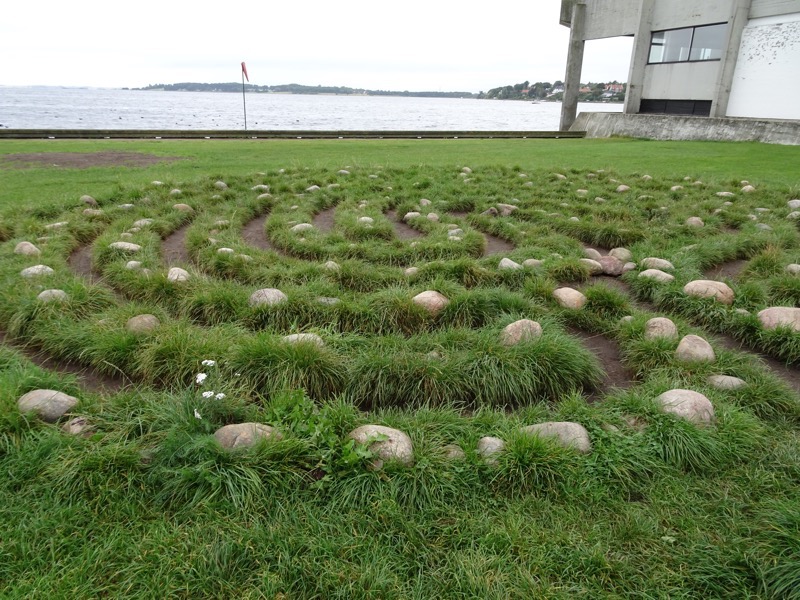
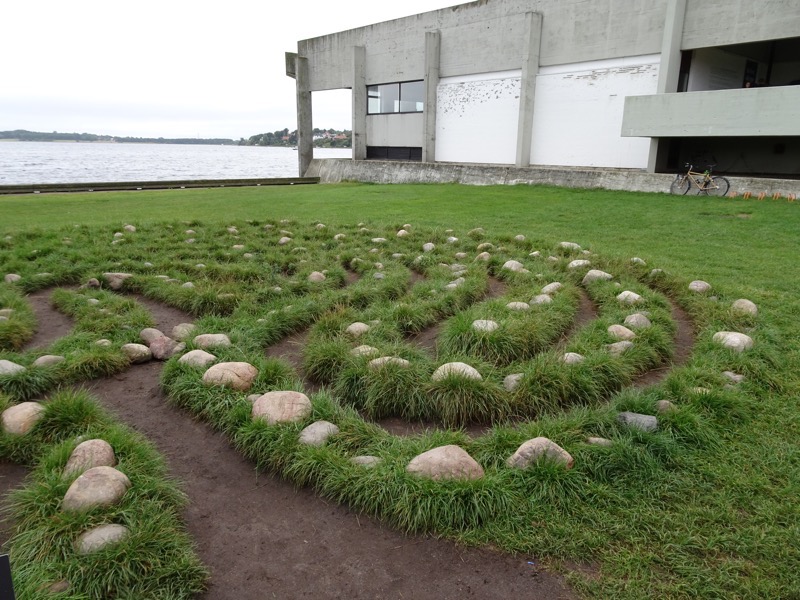
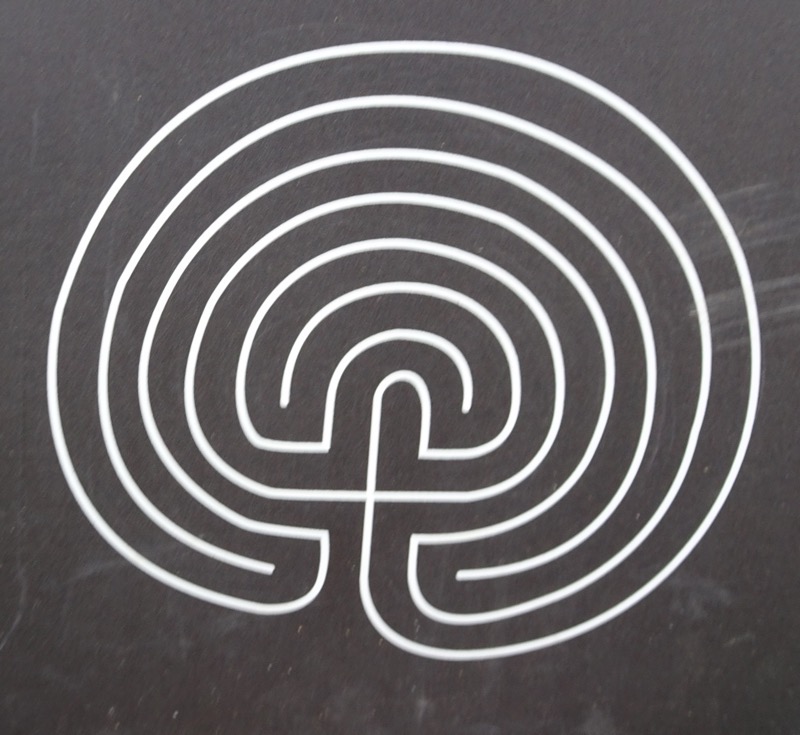 Some other Viking games were also set out for visitors to try:
Some other Viking games were also set out for visitors to try: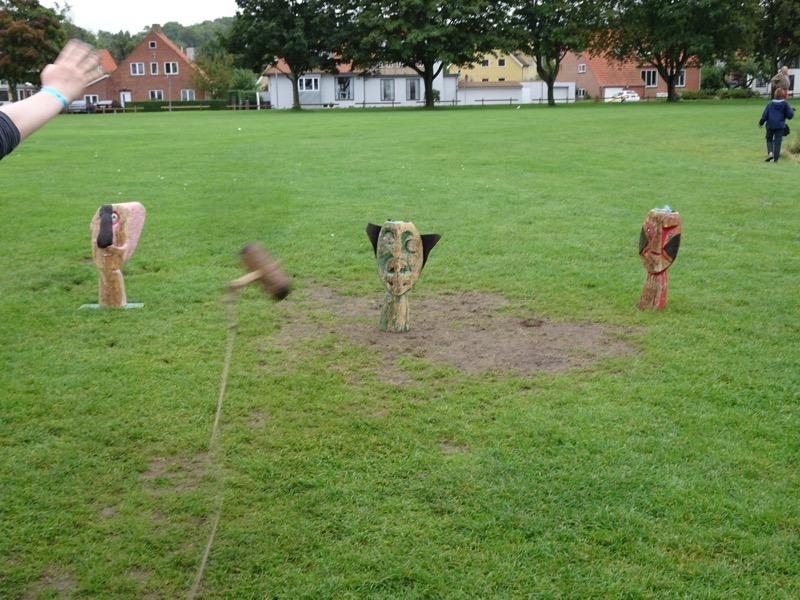 The ‘giants’ are around 45-60cm tall and have different weights and varying degrees of ugly.
The ‘giants’ are around 45-60cm tall and have different weights and varying degrees of ugly.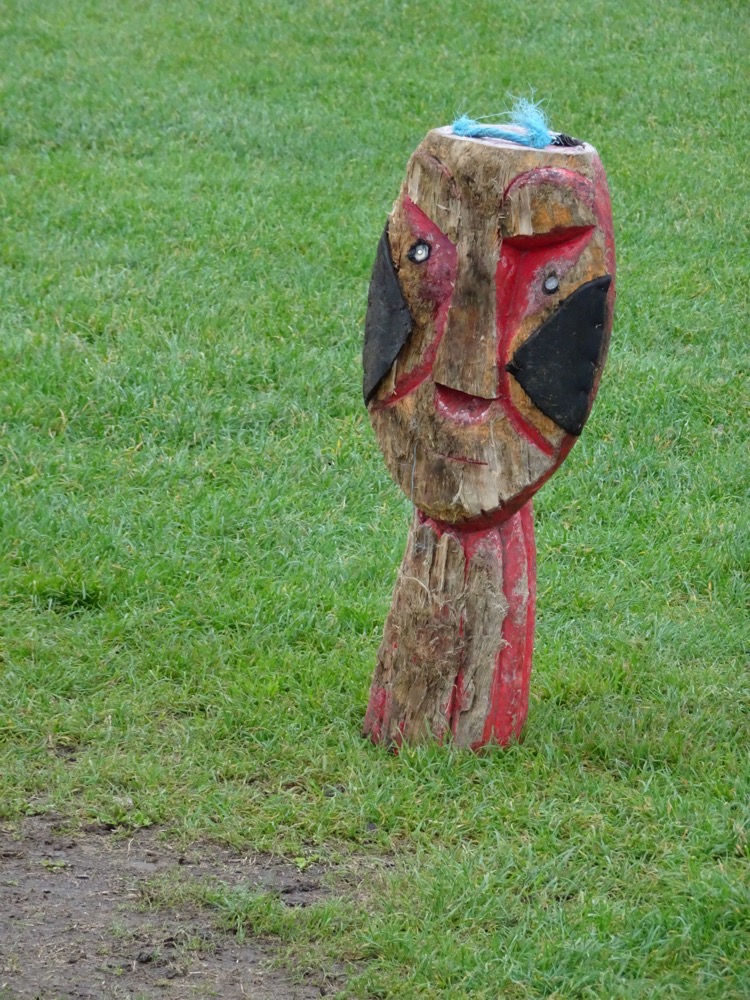
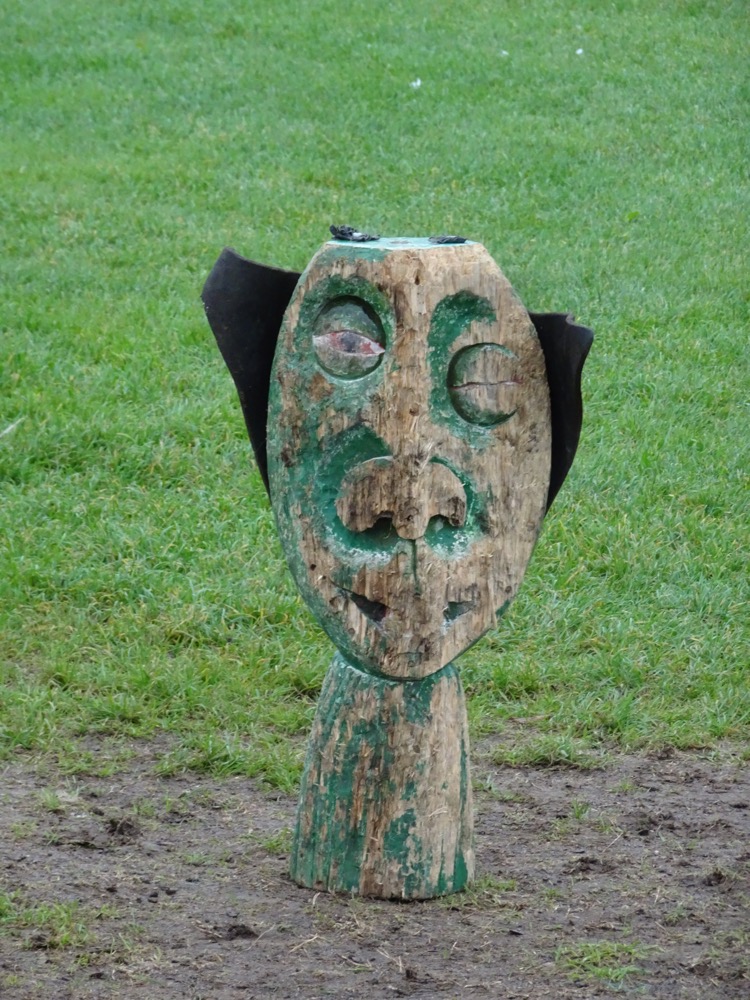
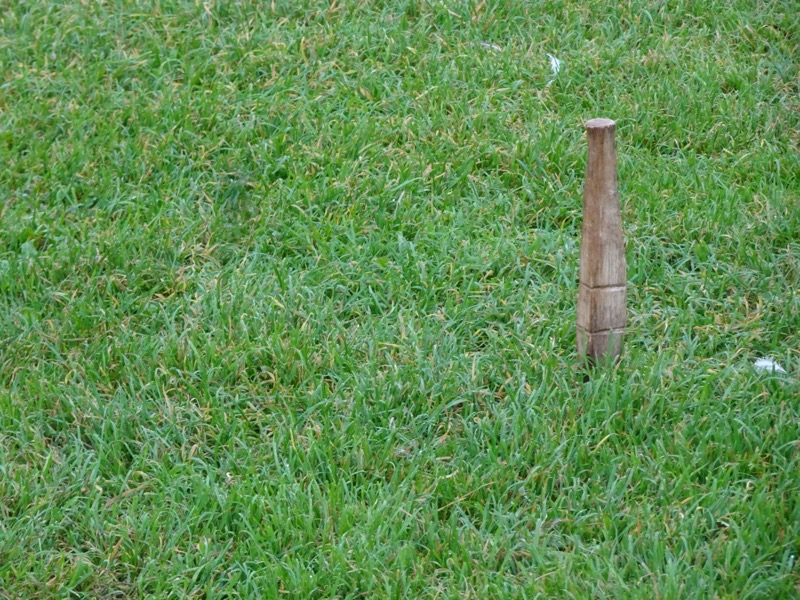 The Troll’s Head
The Troll’s Head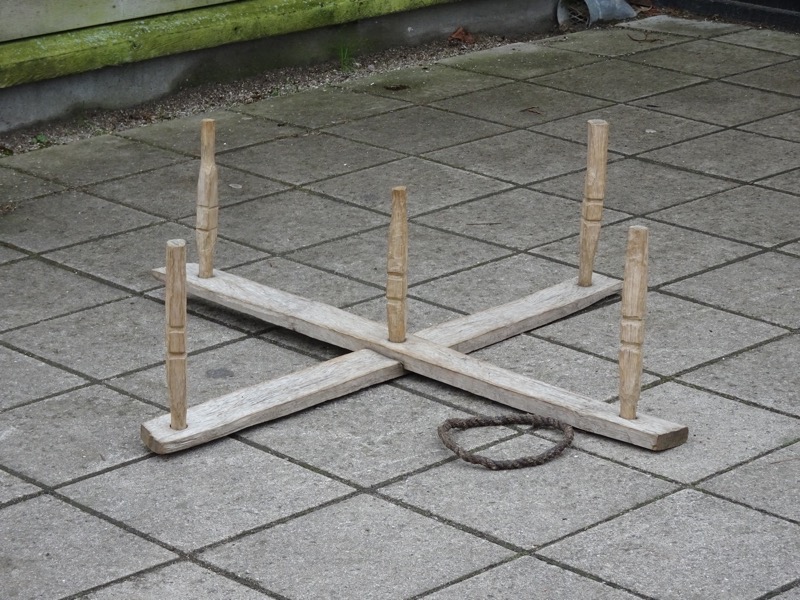 After playing around on the green for a while, it was time to go sailing on a historically accurate Viking ship that had been built by hand, using traditional techniques and tools, right here in the Roskilde Viking shipyard.
After playing around on the green for a while, it was time to go sailing on a historically accurate Viking ship that had been built by hand, using traditional techniques and tools, right here in the Roskilde Viking shipyard. And we have perfect Viking weather for such things – grey, dismal, and constant light drizzly rain.
And we have perfect Viking weather for such things – grey, dismal, and constant light drizzly rain.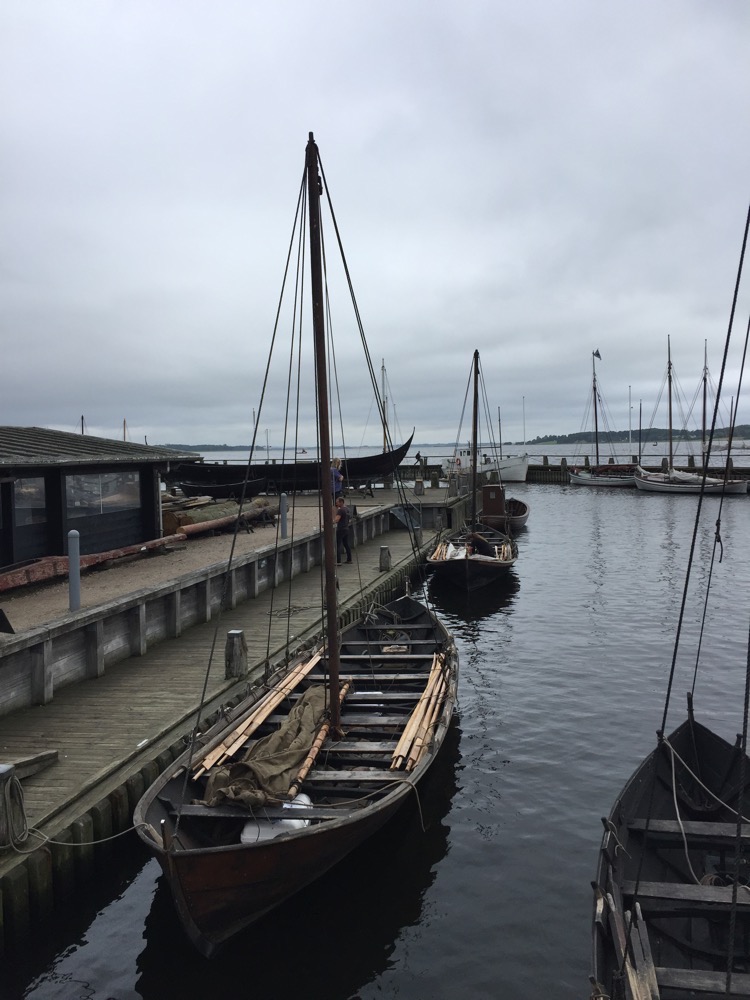 Getting instructions on the various oar commands we needed to use.
Getting instructions on the various oar commands we needed to use.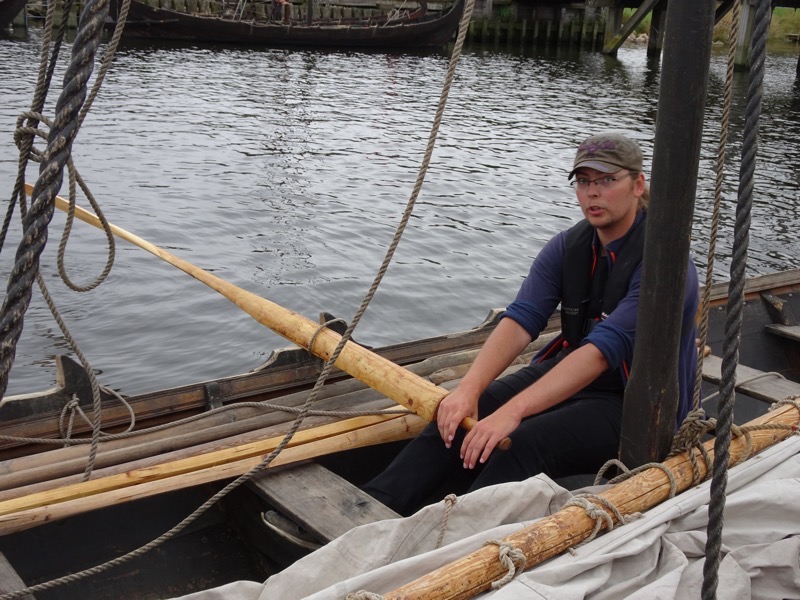
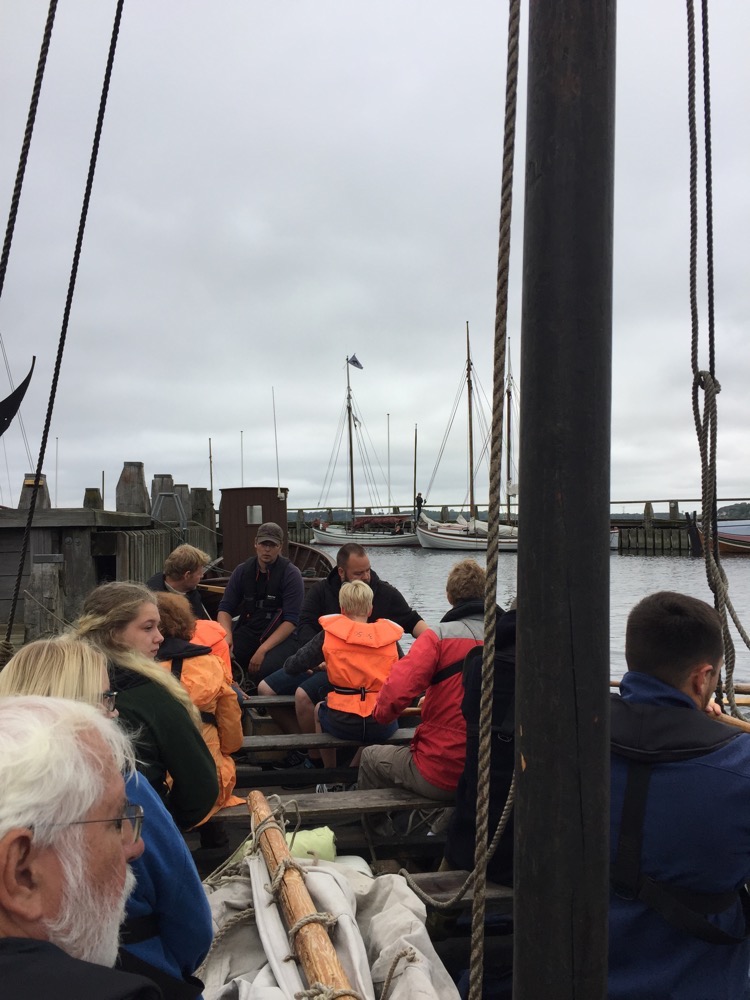
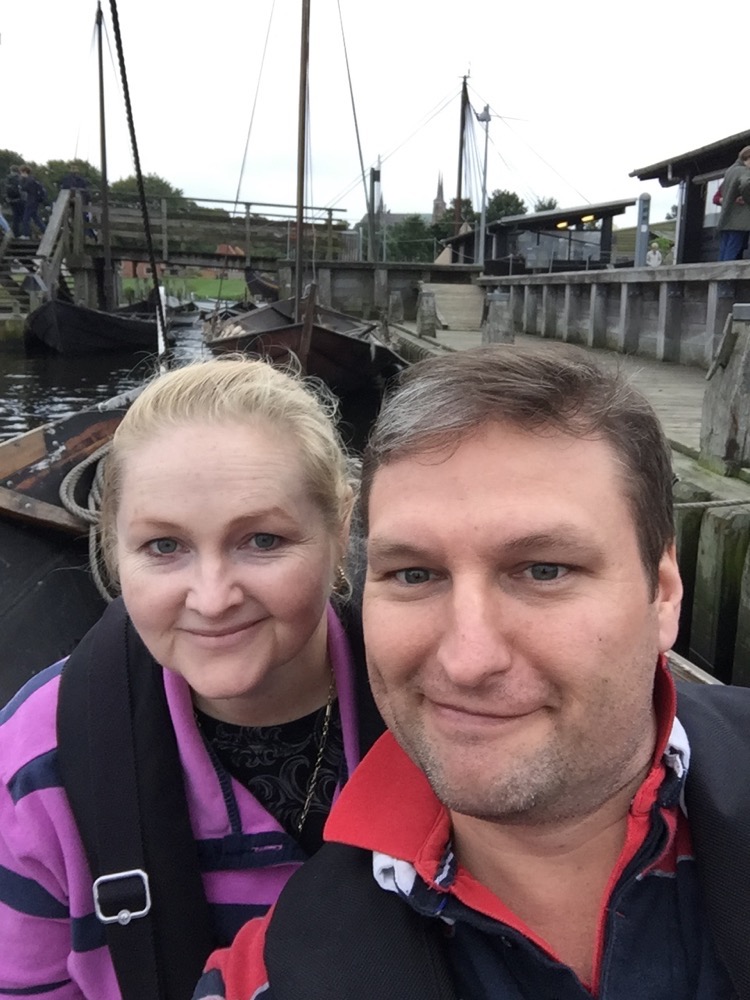 Captain never said, “Row ya bastards!”… not even once! 🙂 He just encouraged people to listen for the slap of the oars in the water and to try and get them in time. Have to admit we were pretty terrible rowers but we managed to manouevre our craft into the open harbour.
Captain never said, “Row ya bastards!”… not even once! 🙂 He just encouraged people to listen for the slap of the oars in the water and to try and get them in time. Have to admit we were pretty terrible rowers but we managed to manouevre our craft into the open harbour.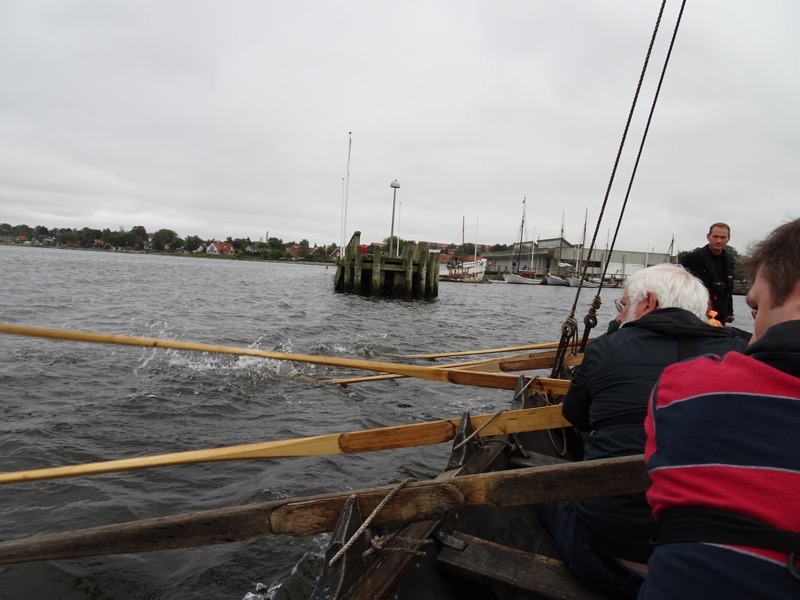
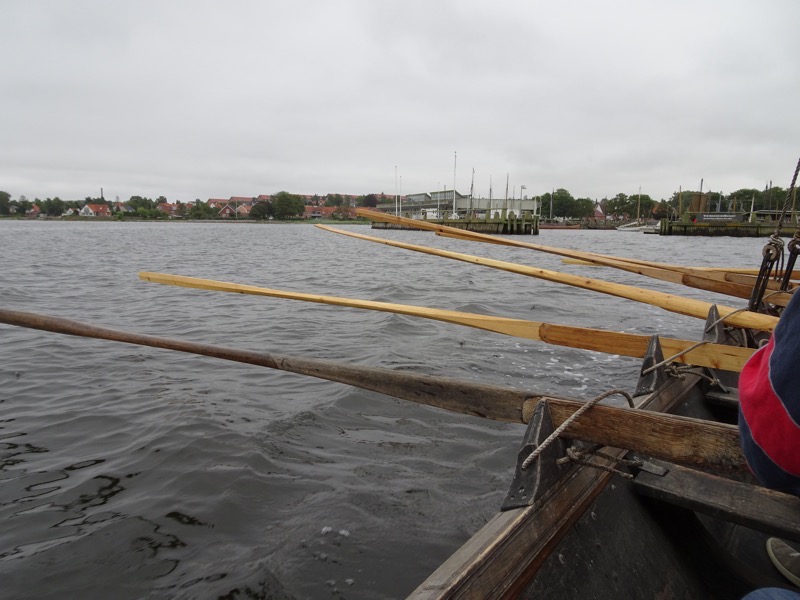 From here the sail was hoisted and we moved along with relative ease.
From here the sail was hoisted and we moved along with relative ease.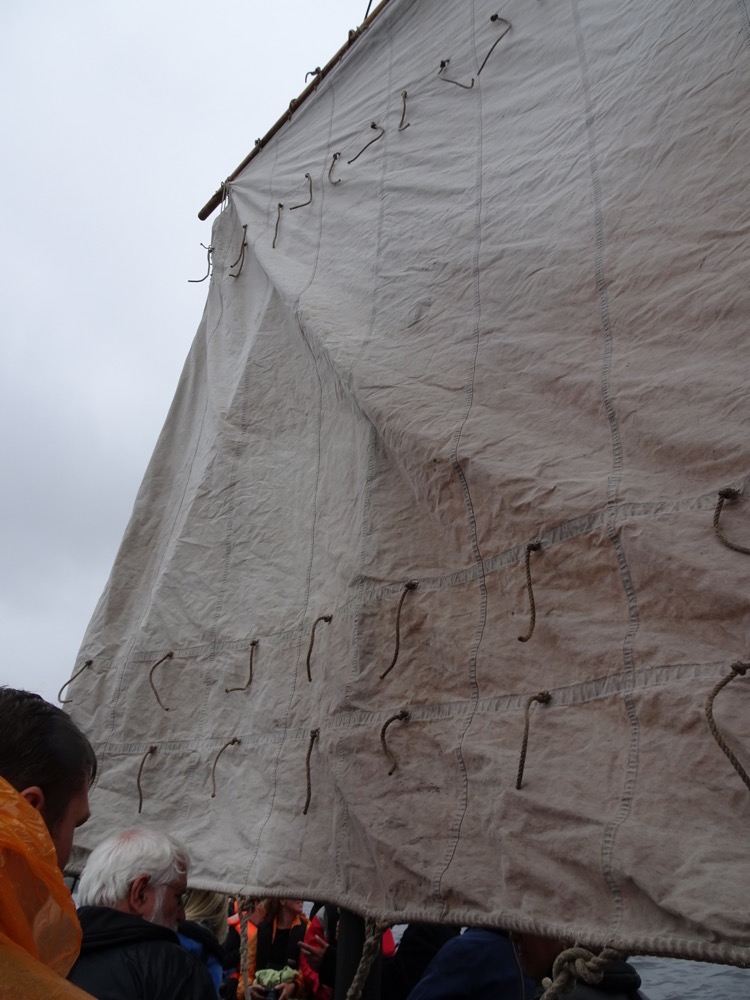
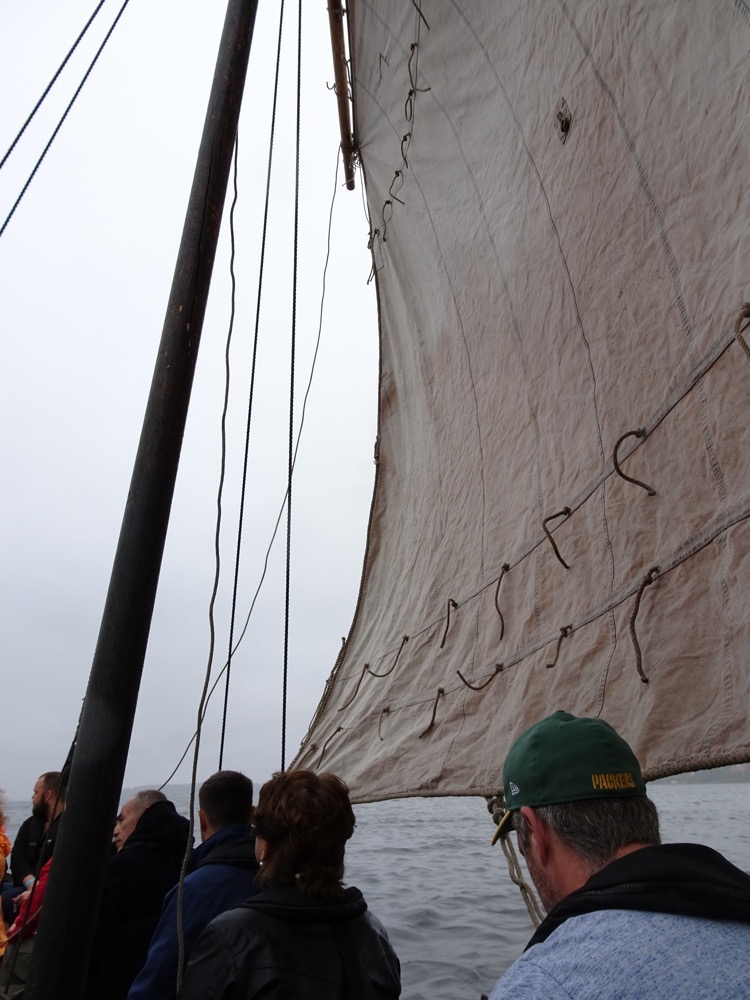 Ballast in the bottom of the boat.
Ballast in the bottom of the boat.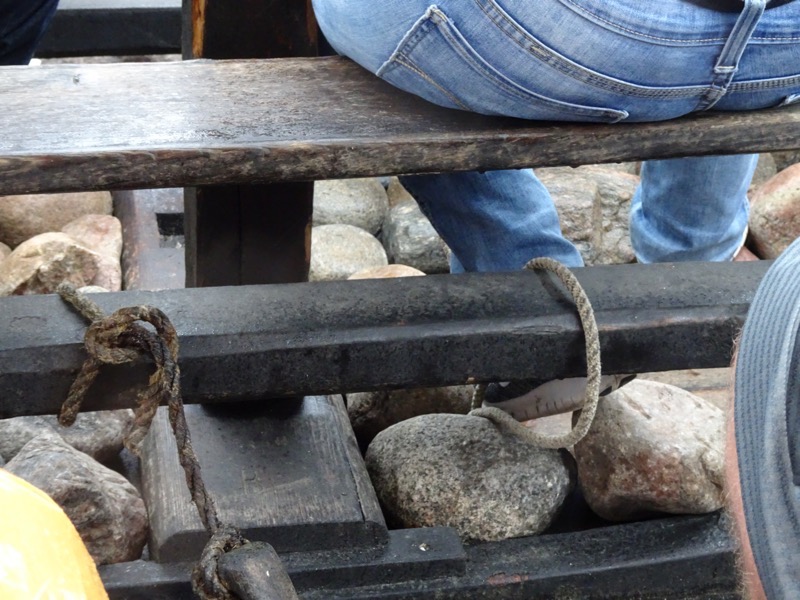 Nearly getting knocked in the head as we tacked.
Nearly getting knocked in the head as we tacked.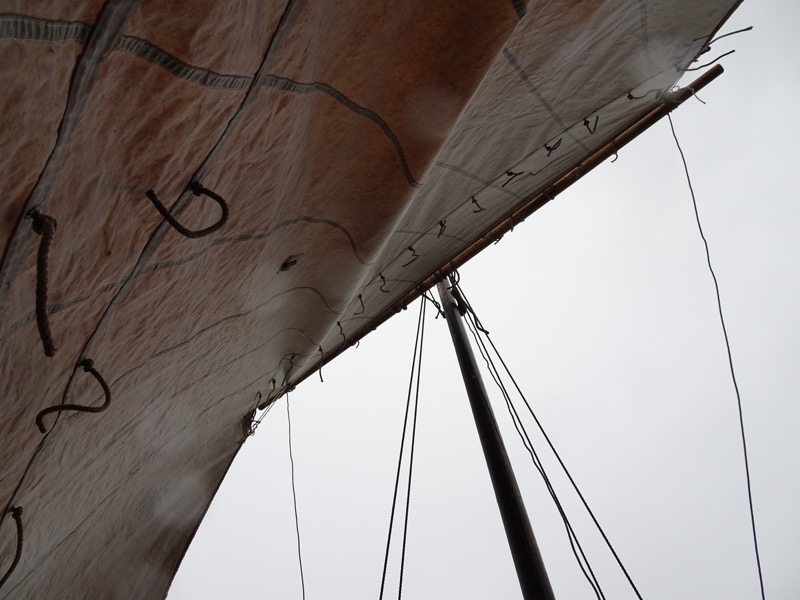 After our bracing sail around the Roskilde harbour, we went over the Vikingskib Museet to see the remnants of some extant Viking ships that had been found in the Roskilde Fjord, and to hopefully warm up!
After our bracing sail around the Roskilde harbour, we went over the Vikingskib Museet to see the remnants of some extant Viking ships that had been found in the Roskilde Fjord, and to hopefully warm up!
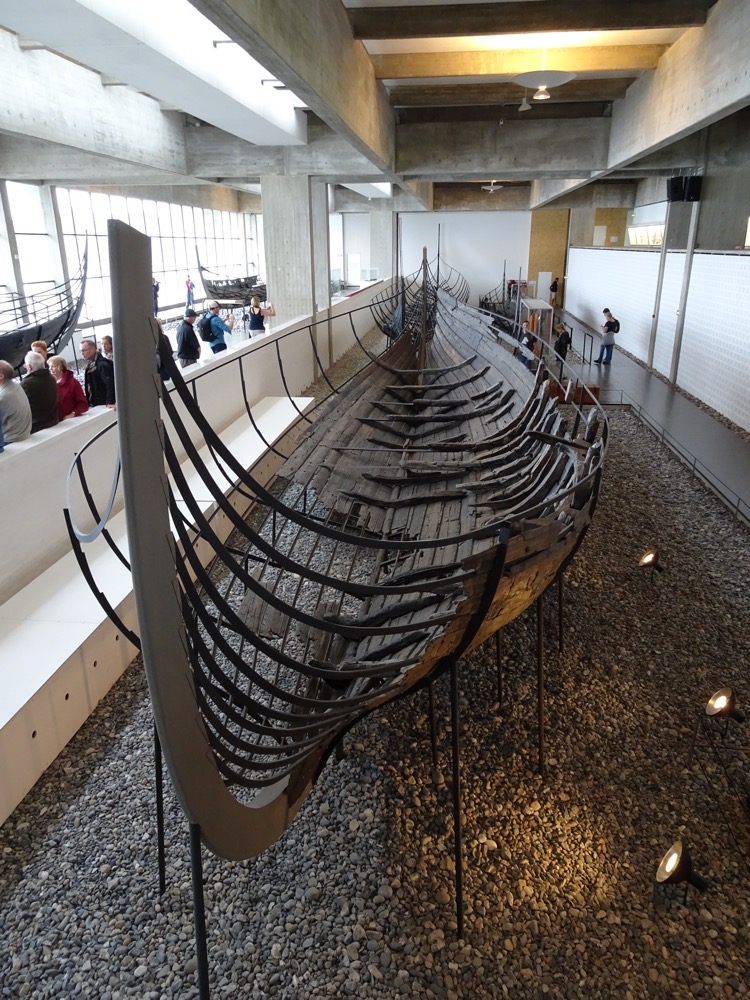 Coastal Trader ship – small elegant trading and transport vessel, of the byrding type. Made of Danish oak, it has decks of loose plans and an open hold for about 4 tons of cargo. The ship would have been crewed by 5-8 men.
Coastal Trader ship – small elegant trading and transport vessel, of the byrding type. Made of Danish oak, it has decks of loose plans and an open hold for about 4 tons of cargo. The ship would have been crewed by 5-8 men.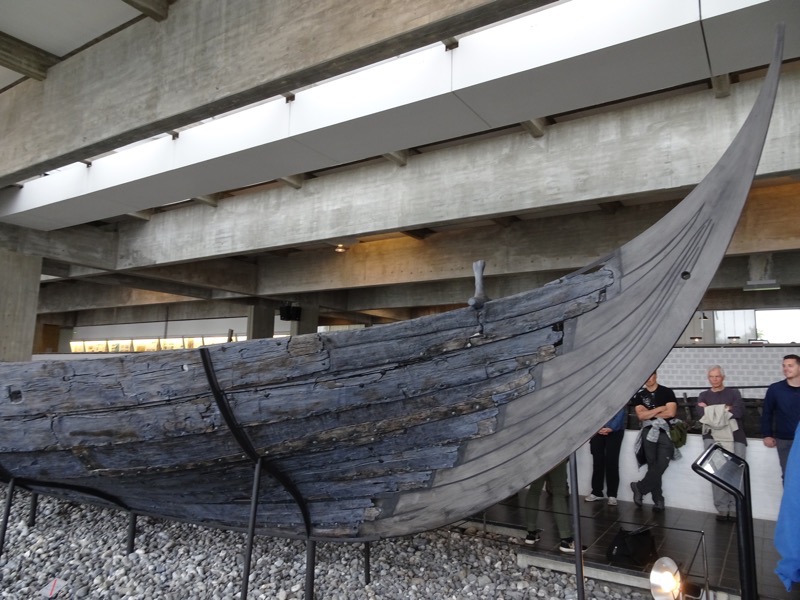
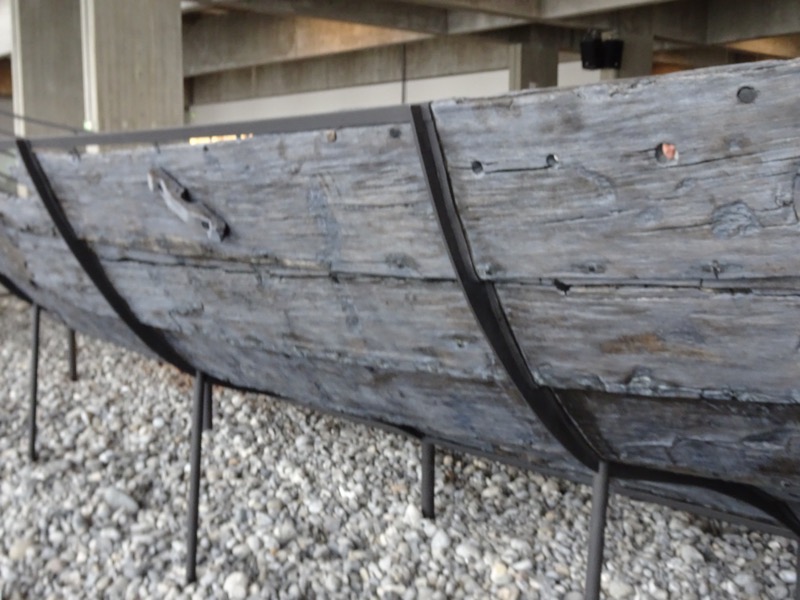
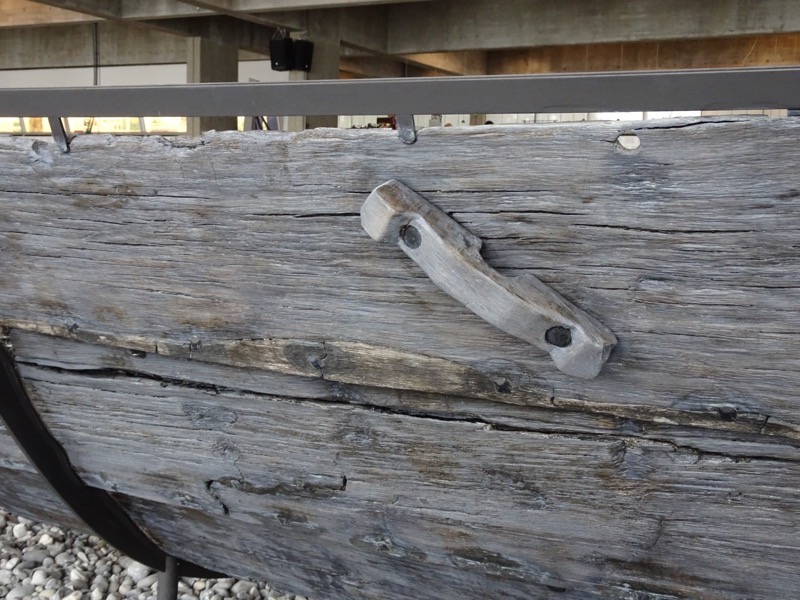
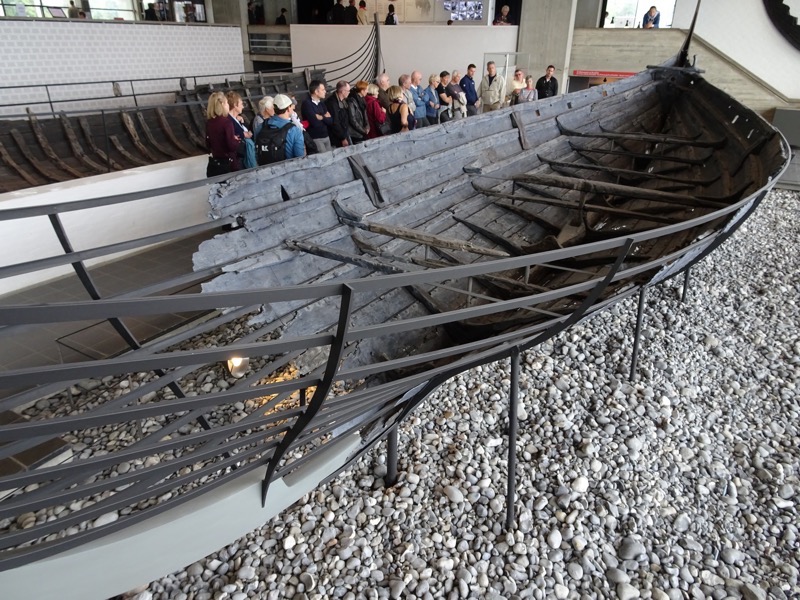
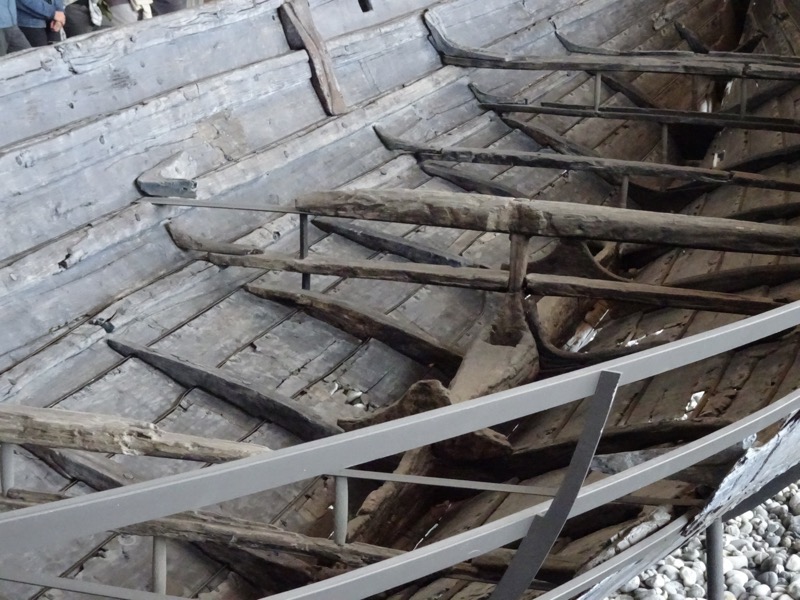
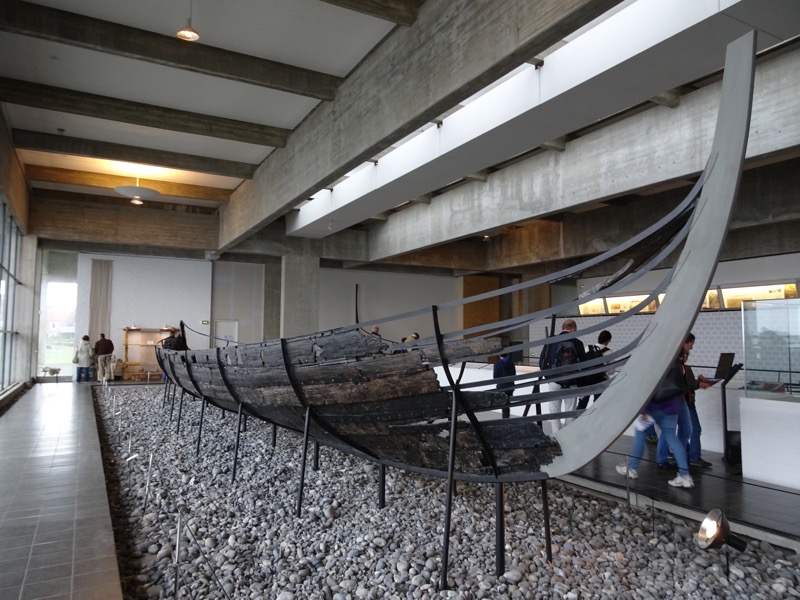
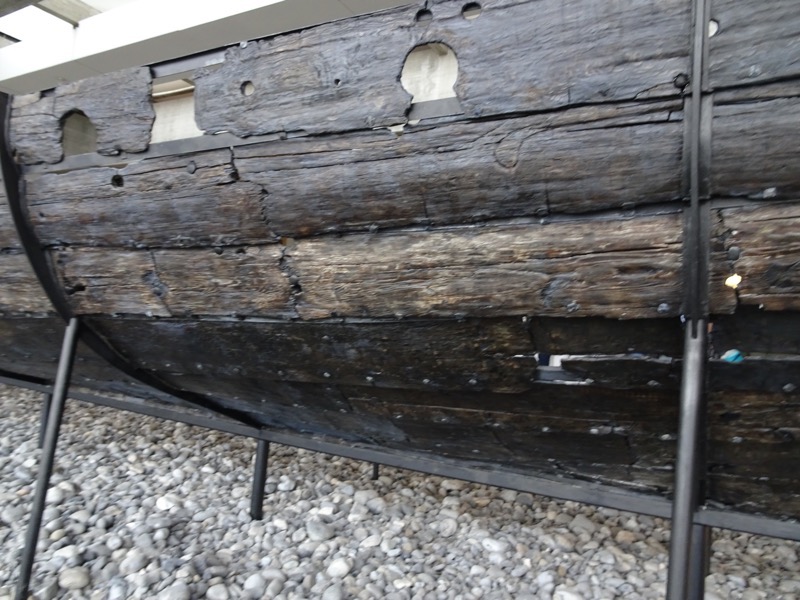
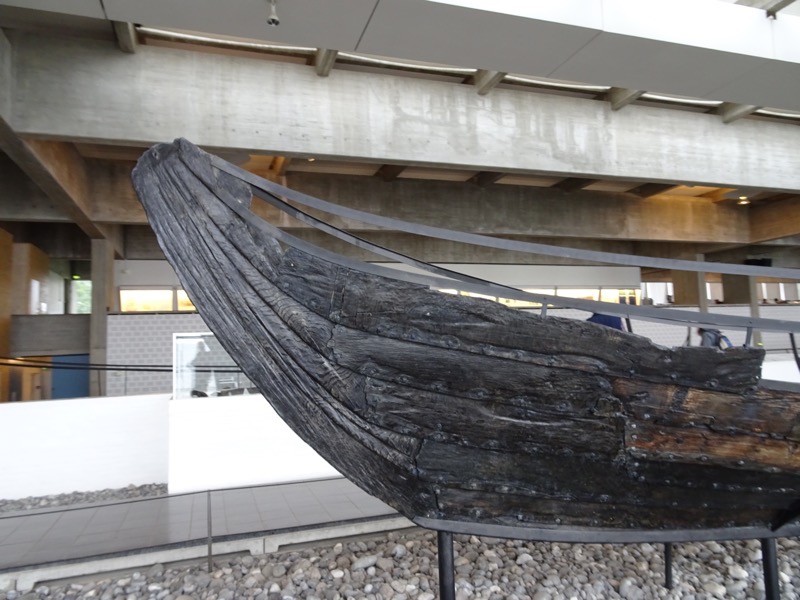
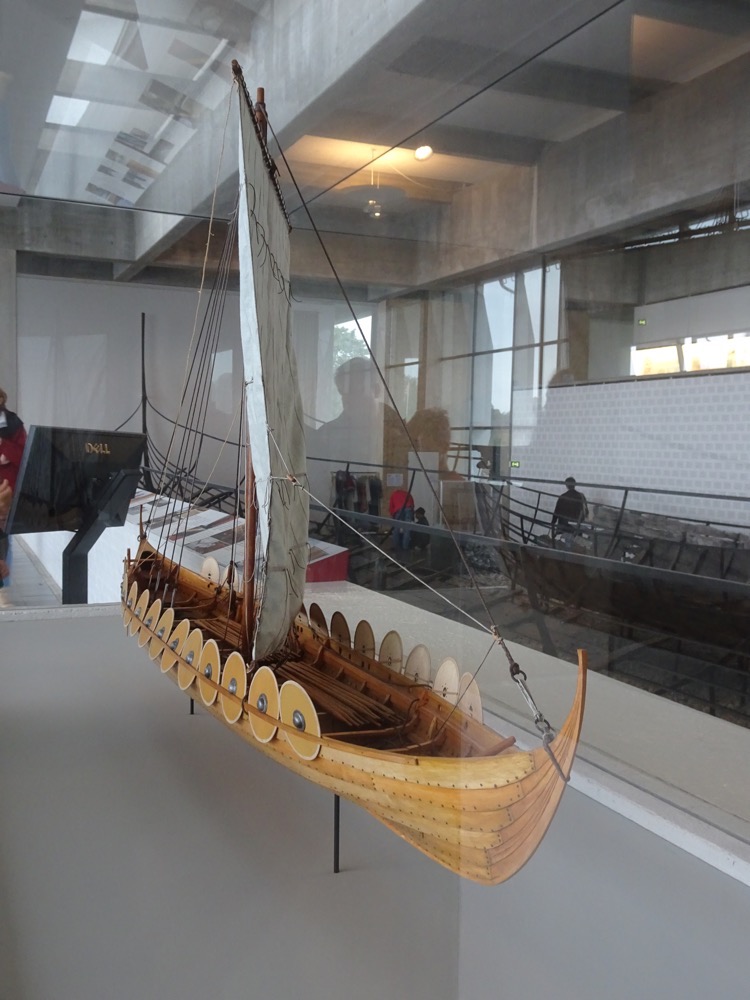
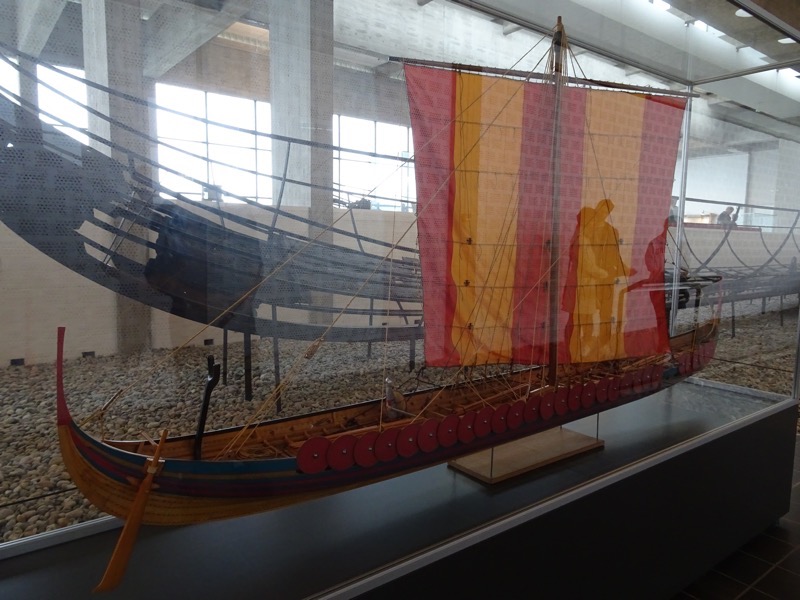
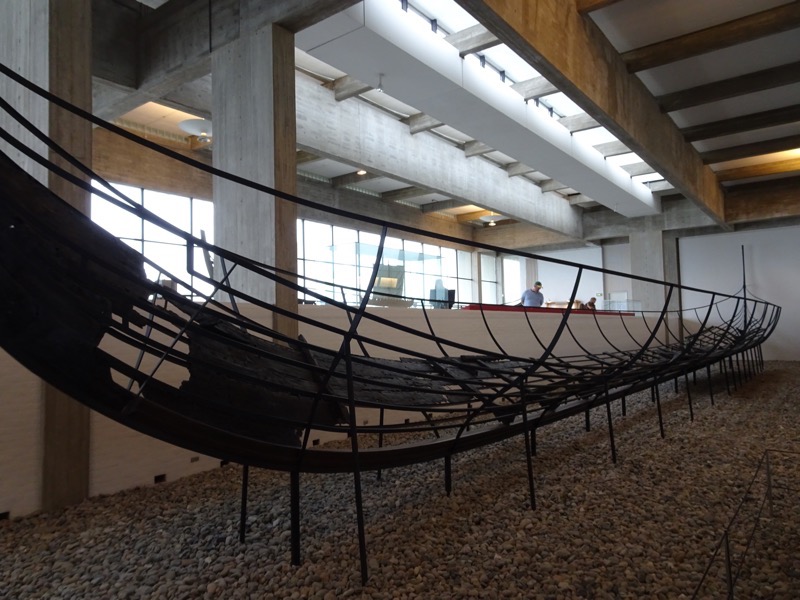 Small Fishing vessel – this ship is a combined rowing and sailing vessel probably built for fishing or seal hunting. It was built of pine planks near Sognefjord in Norway. Later an extra plank was added to increase the height of the side in order to transport more efficiently cargoes of livestock, trading goods or people. During the alterations, the rowlocks were removed and the number of oars reduced. The conversion suggests that the ship was probably used more for transport and less fishing, sailing with a smaller crew.
Small Fishing vessel – this ship is a combined rowing and sailing vessel probably built for fishing or seal hunting. It was built of pine planks near Sognefjord in Norway. Later an extra plank was added to increase the height of the side in order to transport more efficiently cargoes of livestock, trading goods or people. During the alterations, the rowlocks were removed and the number of oars reduced. The conversion suggests that the ship was probably used more for transport and less fishing, sailing with a smaller crew.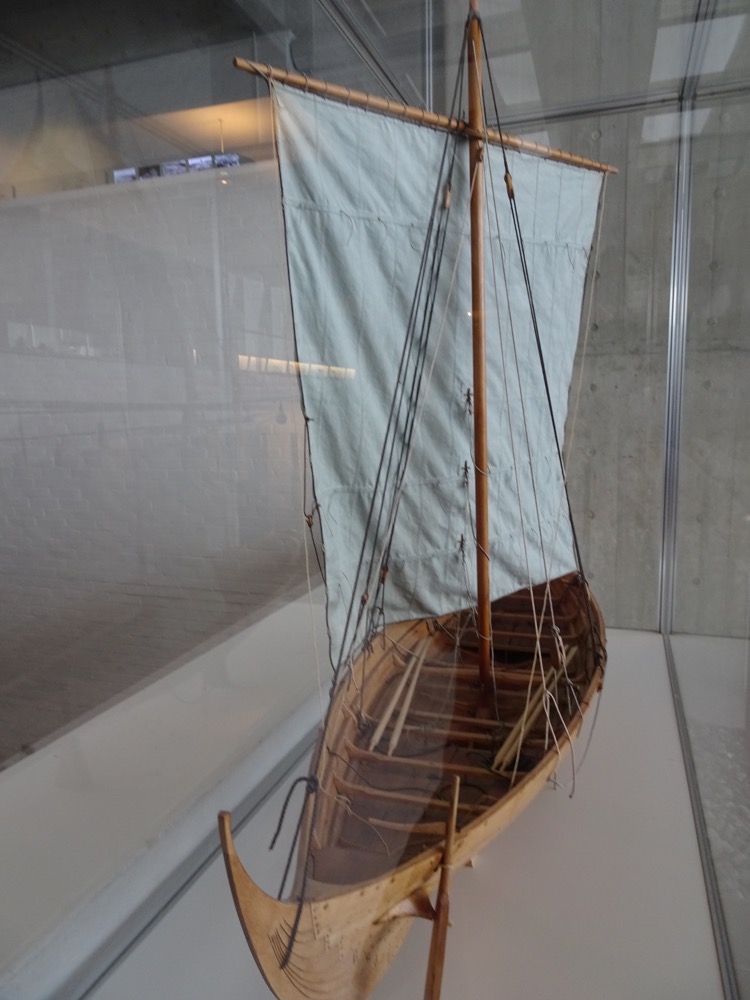
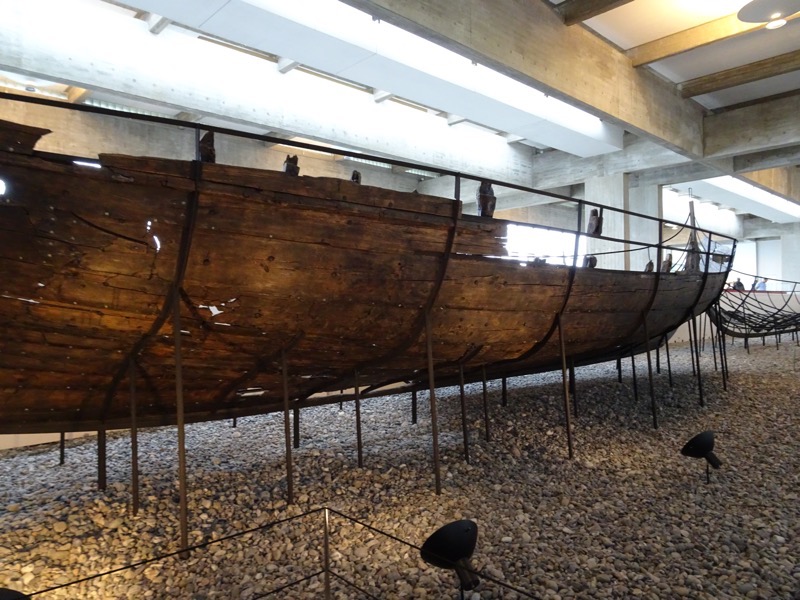
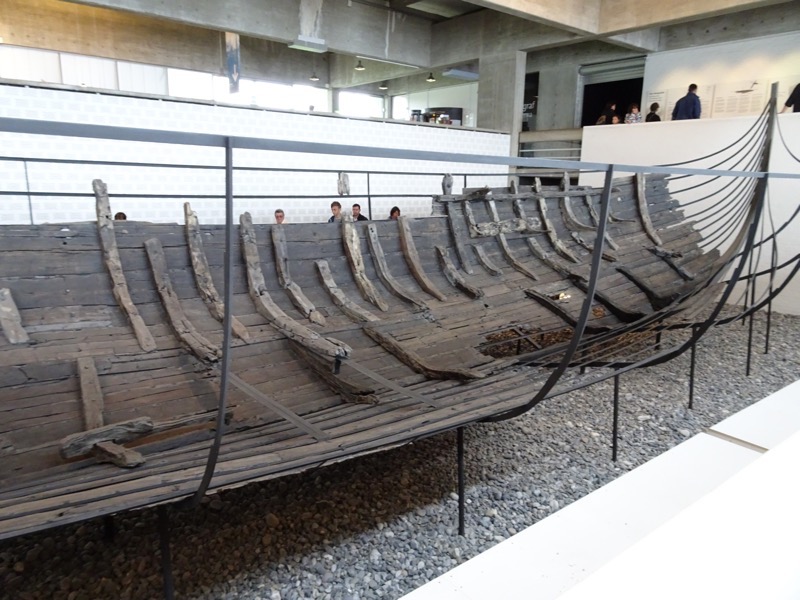
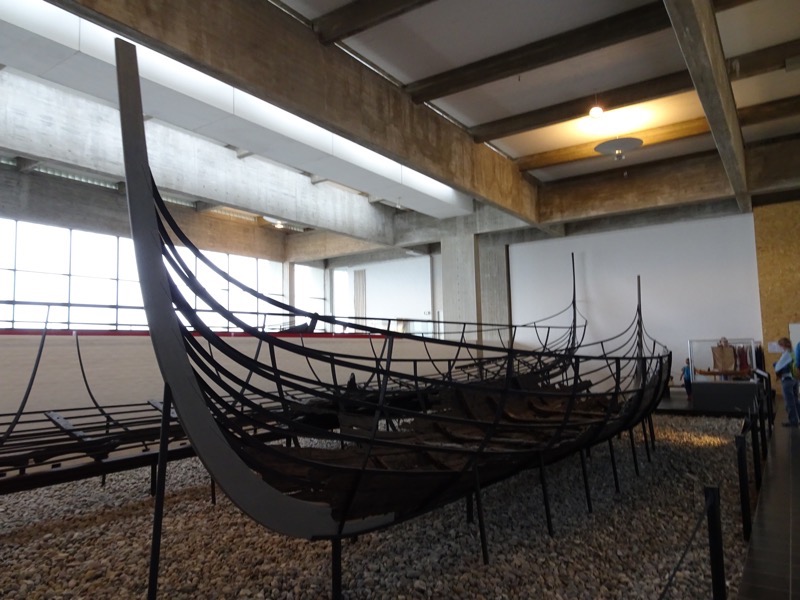
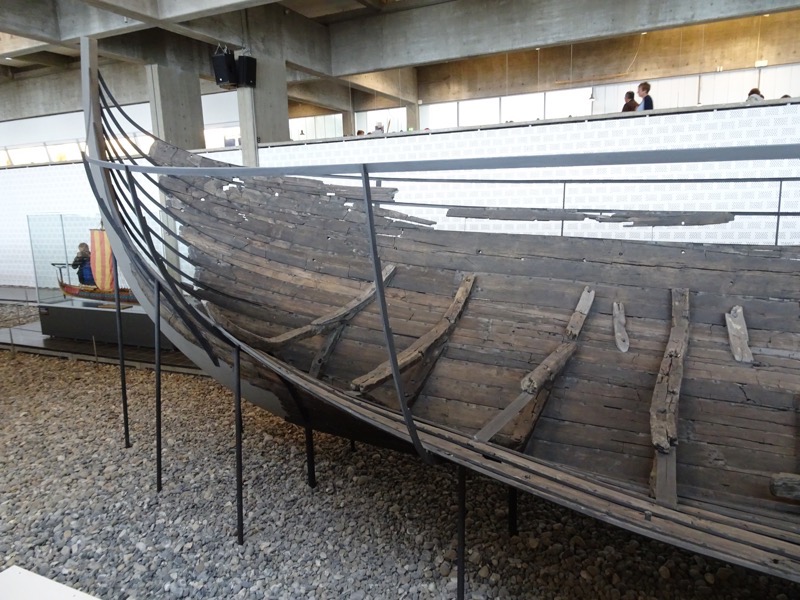
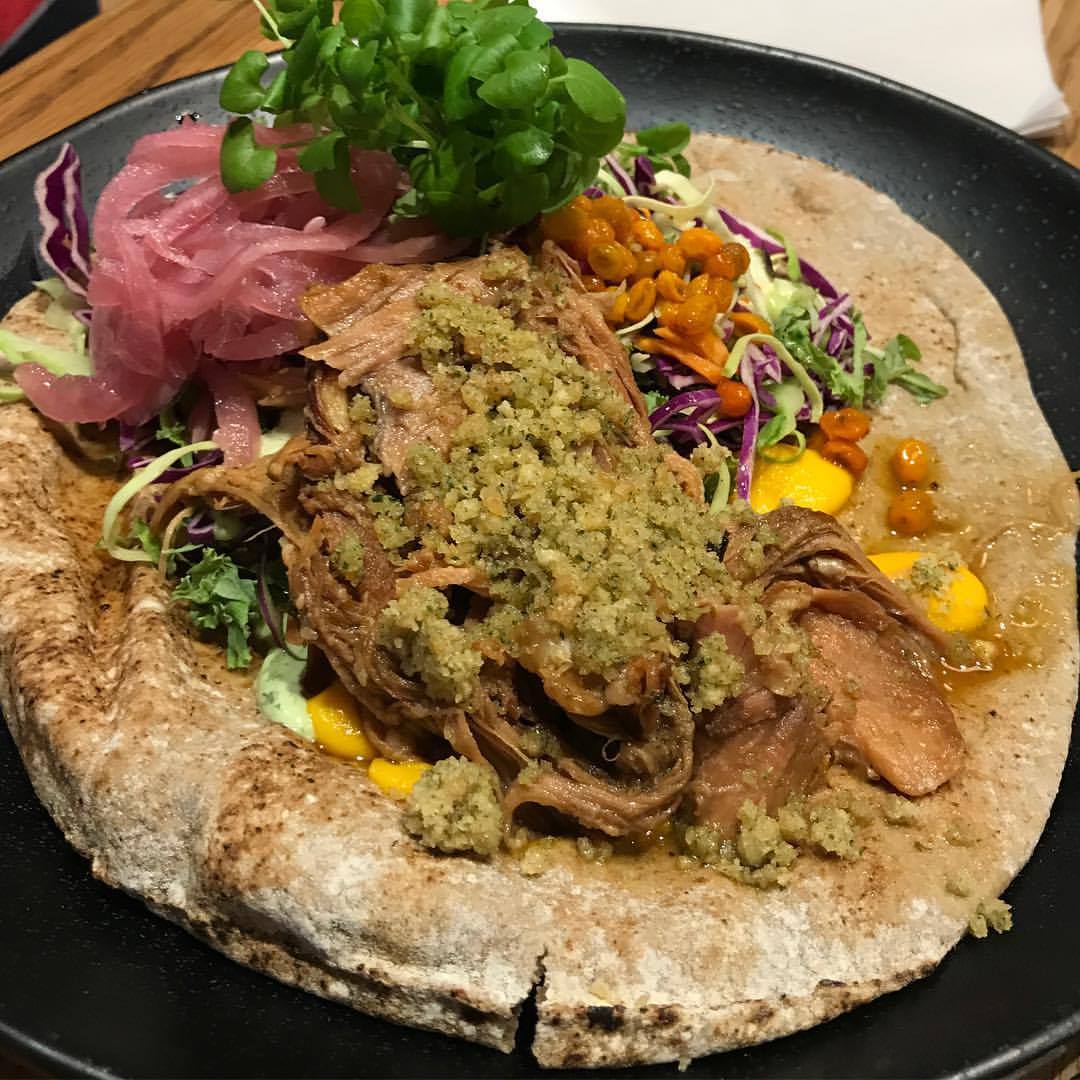 Beer-braised pork with crunchy crackling on flat bread with cabbage, grated carrot, pickled red onion, watercress and sea buckthorn salad with herbed crime fraiche dressing.
Beer-braised pork with crunchy crackling on flat bread with cabbage, grated carrot, pickled red onion, watercress and sea buckthorn salad with herbed crime fraiche dressing.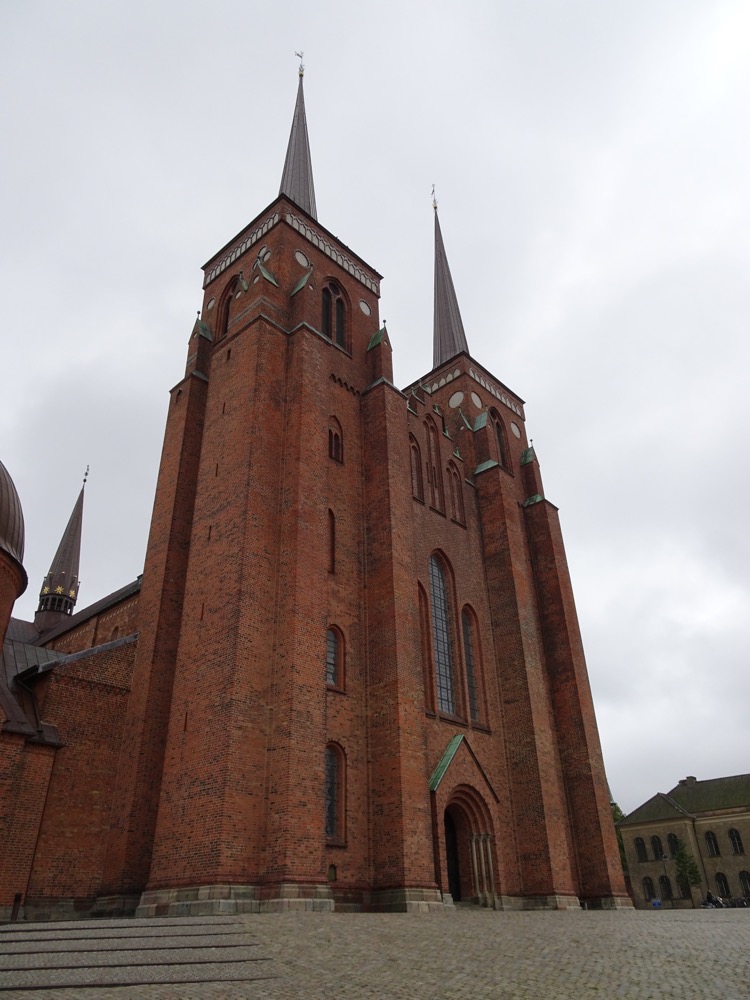 It’s beautiful twin spires dominate the skyline of the city of Roskilde.
It’s beautiful twin spires dominate the skyline of the city of Roskilde.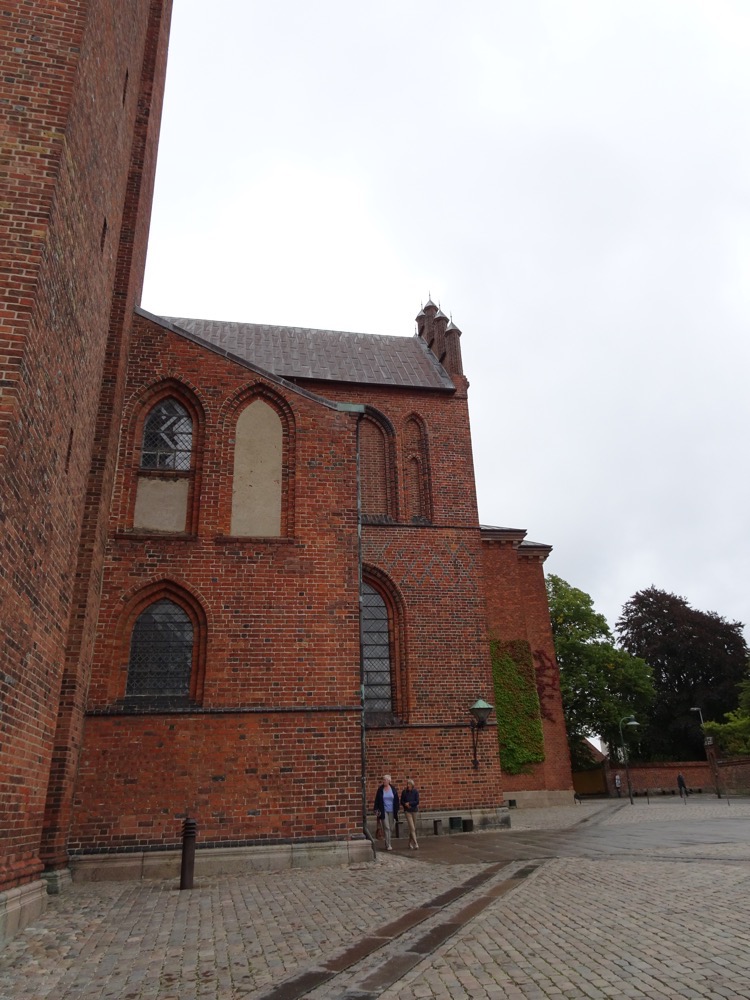
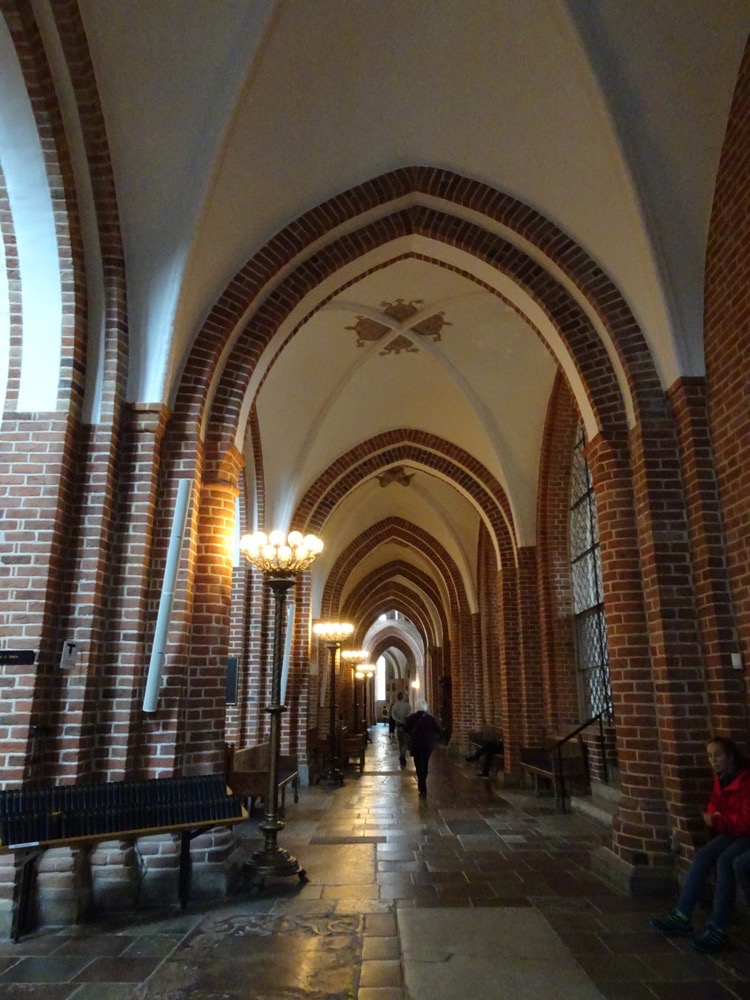 Towards the altar and the nave of the church.
Towards the altar and the nave of the church.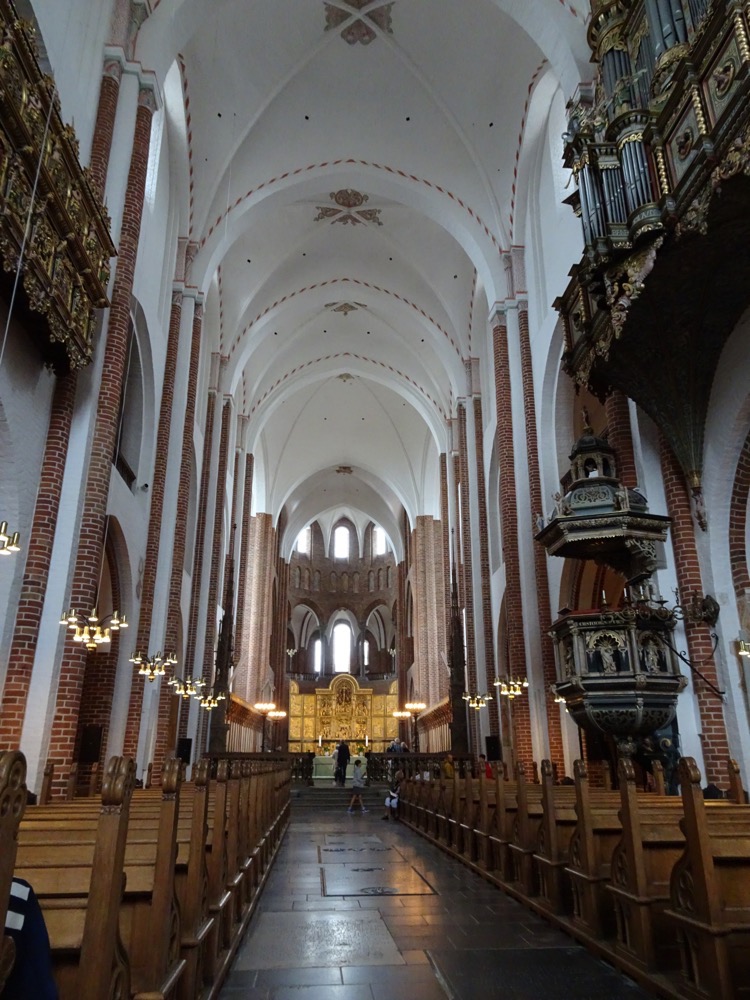 Pulpit, c.1610 AD.
Pulpit, c.1610 AD.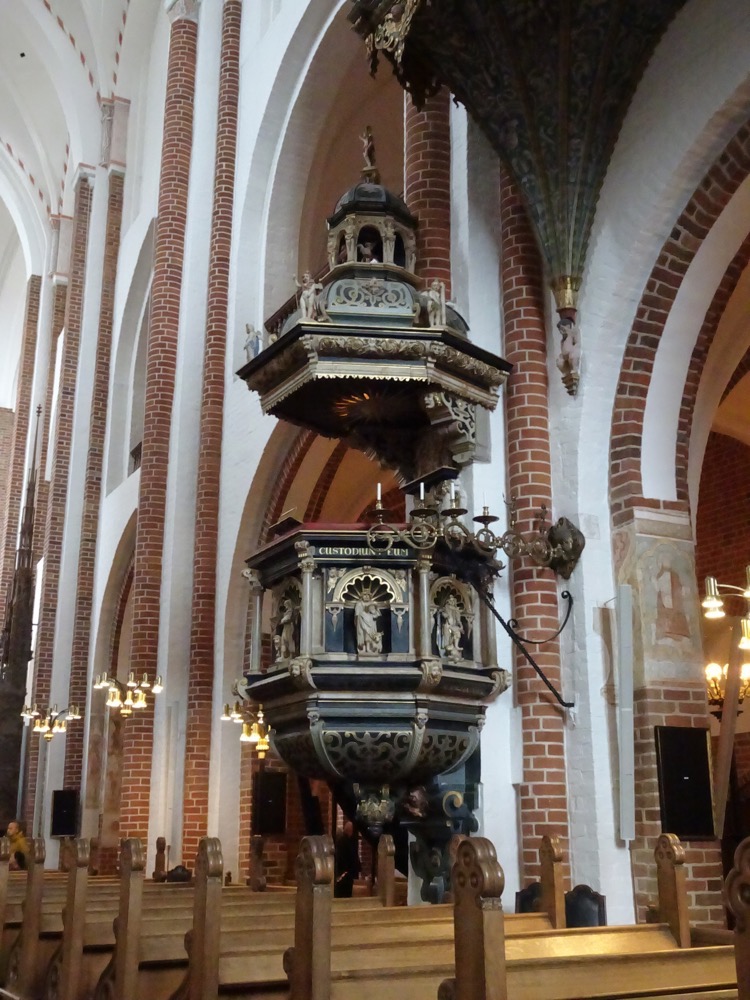 Gorgeous carved timber pews worn with age.
Gorgeous carved timber pews worn with age.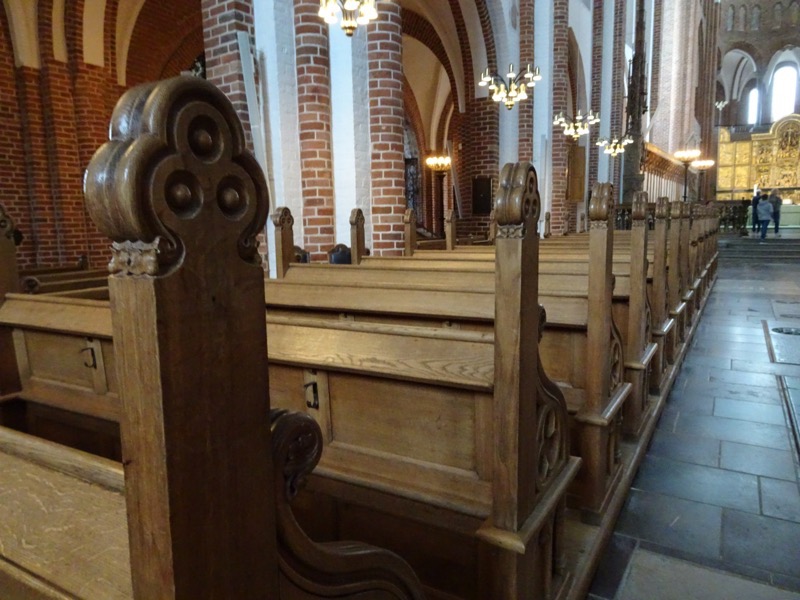 Organ.
Organ.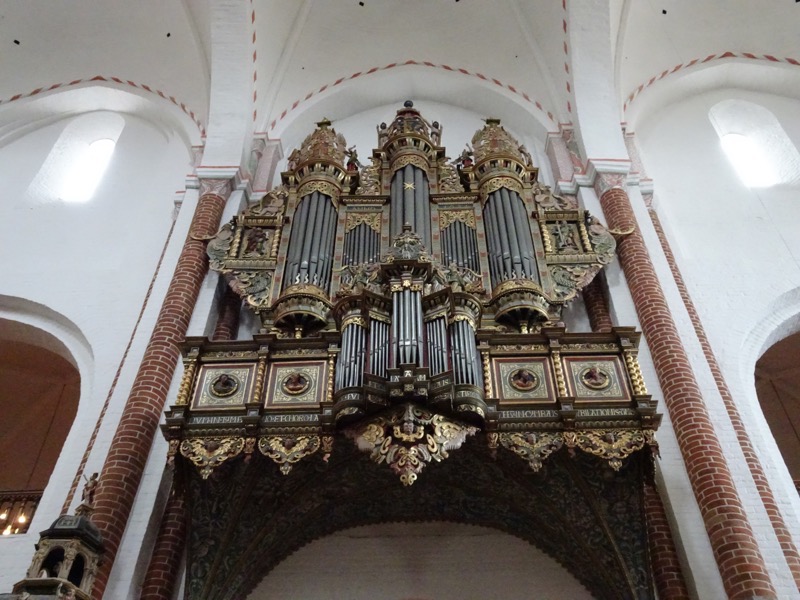
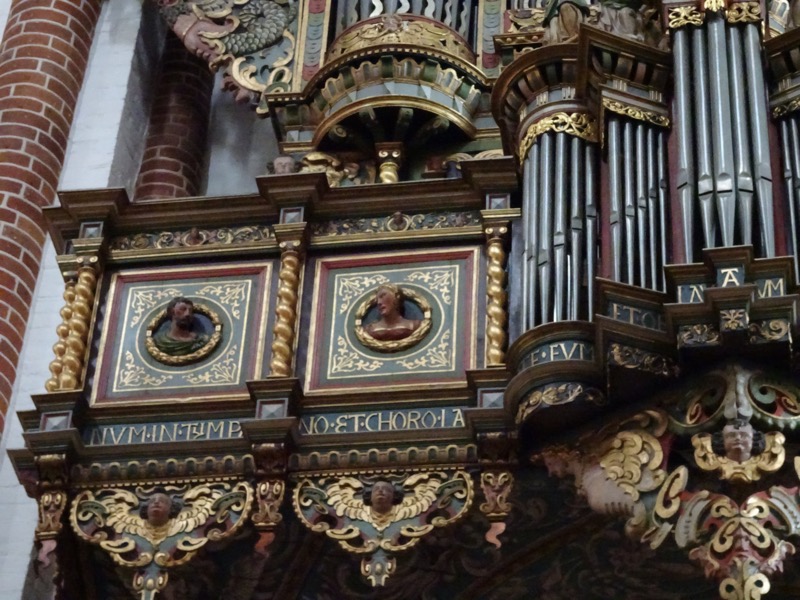 Stalls leading towards the altar.
Stalls leading towards the altar.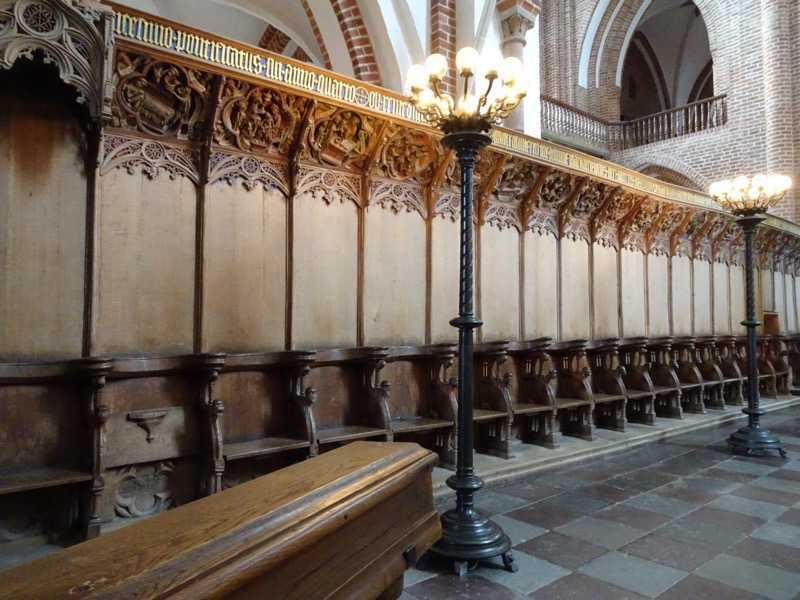
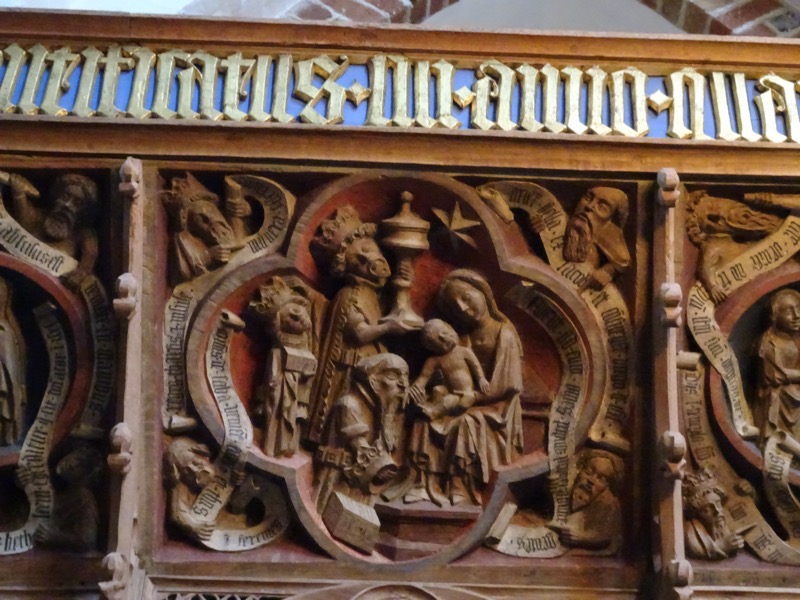 I have no idea what this guy with the club is doing to that baby… but it could be a representation of the Slaughter of the Innocents.
I have no idea what this guy with the club is doing to that baby… but it could be a representation of the Slaughter of the Innocents.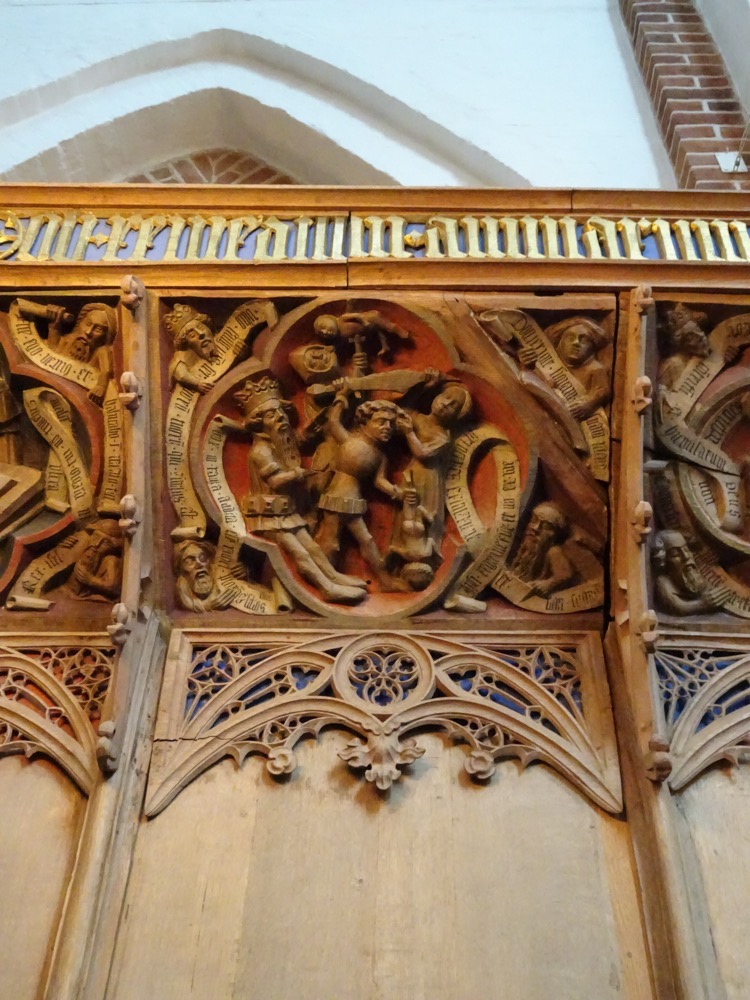 The magnificent altarpiece, c.1555 AD, was a gift from Christian IV of Denmark.
The magnificent altarpiece, c.1555 AD, was a gift from Christian IV of Denmark.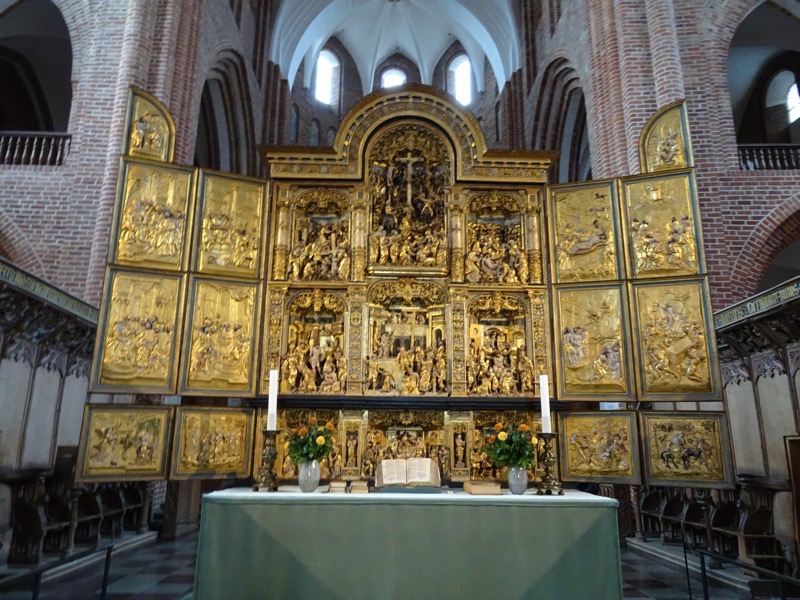
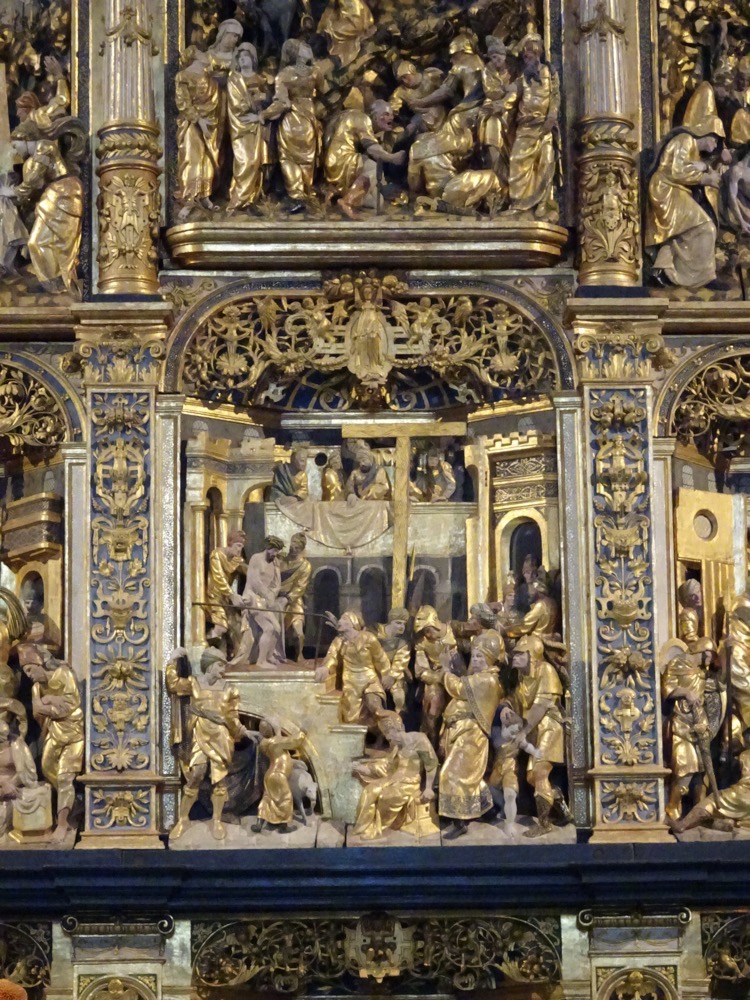 The cathedral has been the primary burial site for Danish monarchs since the 15th century – to accommodate an increasing number of royals over the centuries, it has been extended and altered to contain a considerable number of burial chapels.
The cathedral has been the primary burial site for Danish monarchs since the 15th century – to accommodate an increasing number of royals over the centuries, it has been extended and altered to contain a considerable number of burial chapels.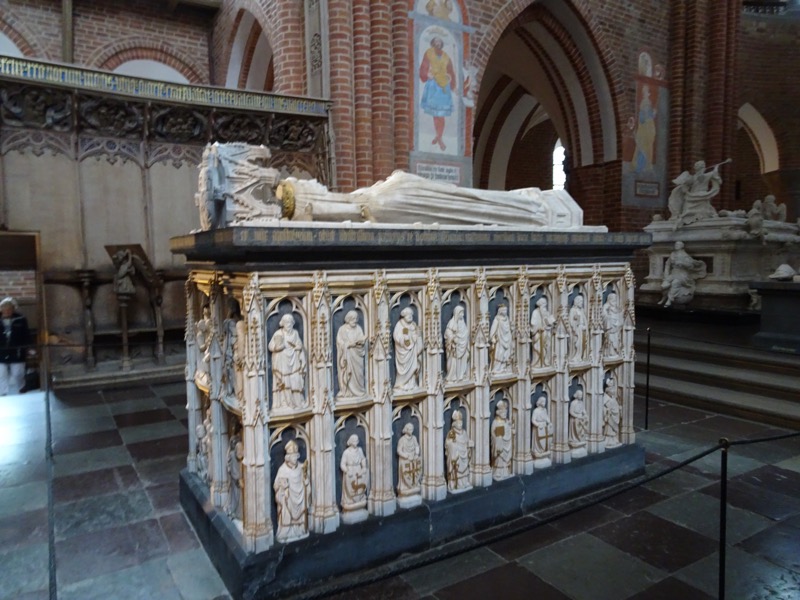 Burial tomb of Margarethe I of Denmark.
Burial tomb of Margarethe I of Denmark.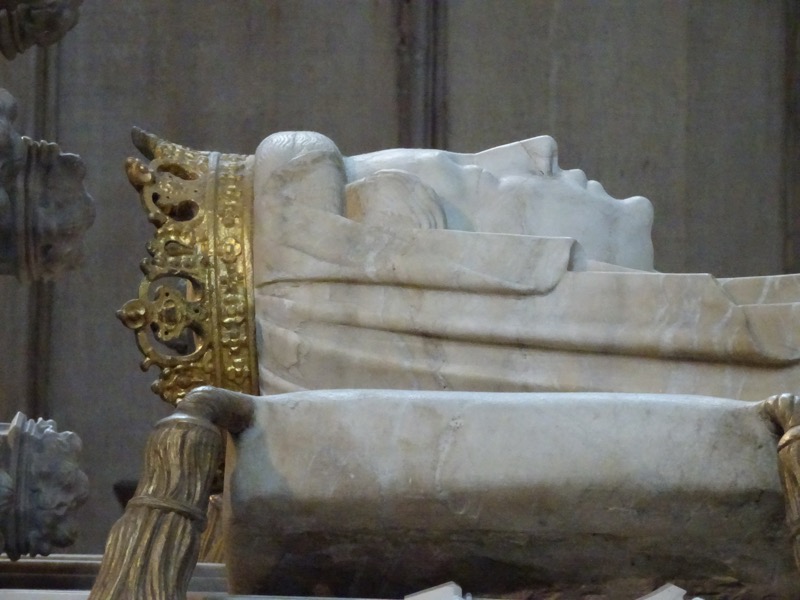
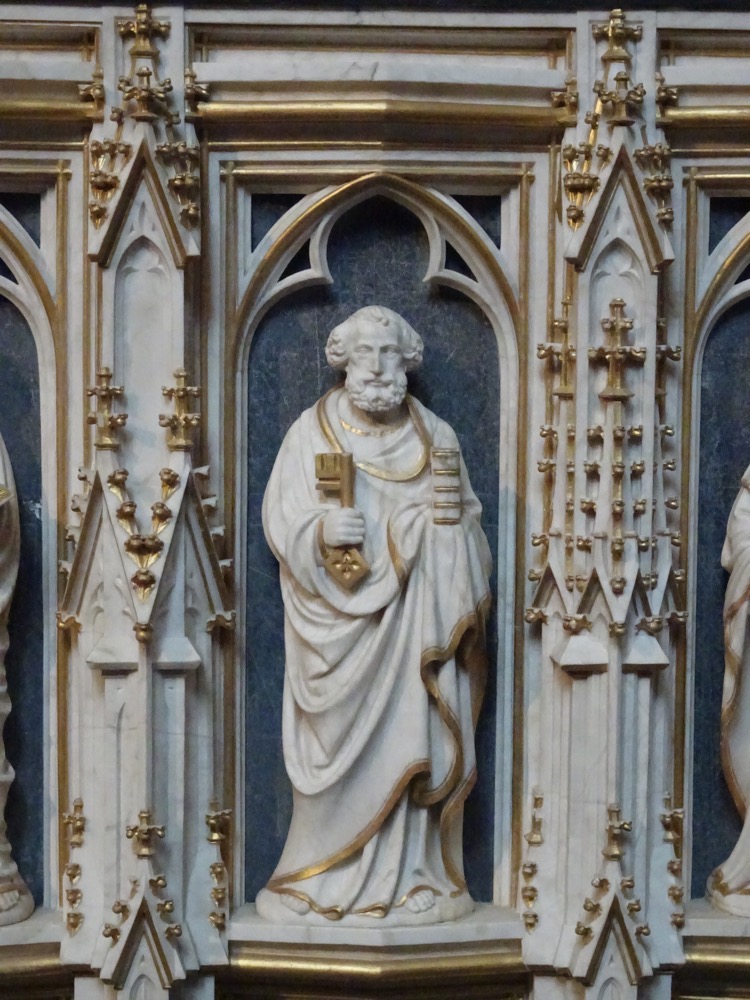
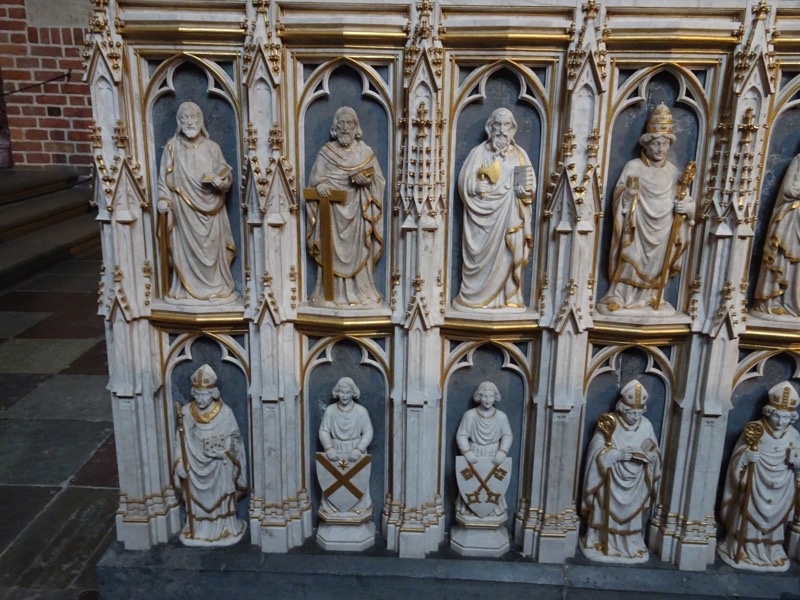
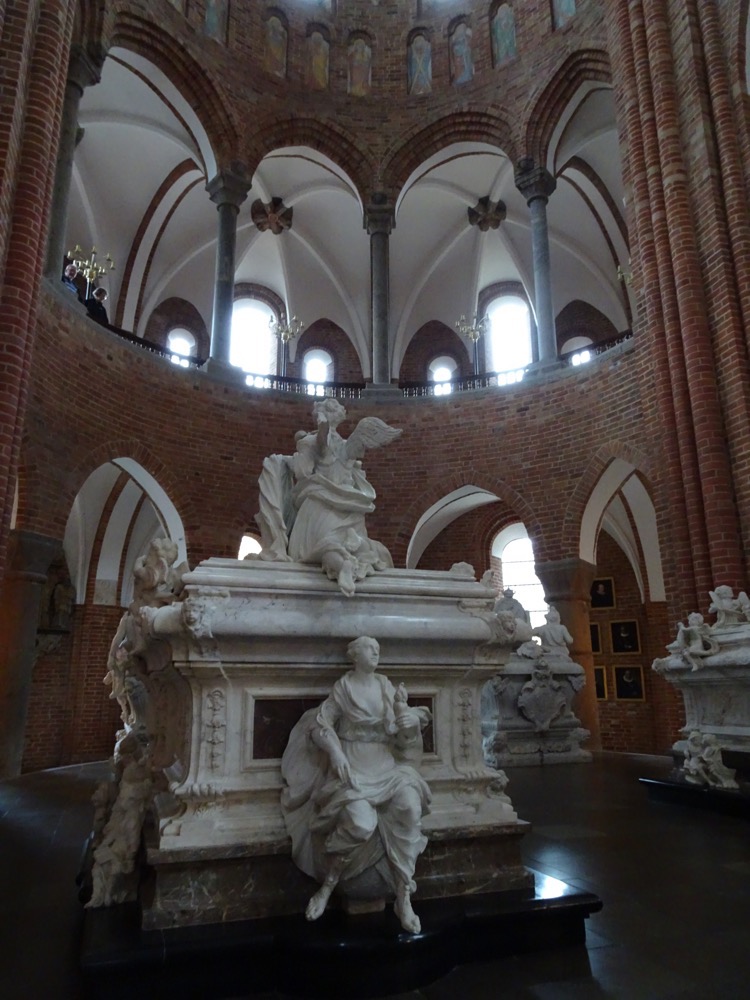
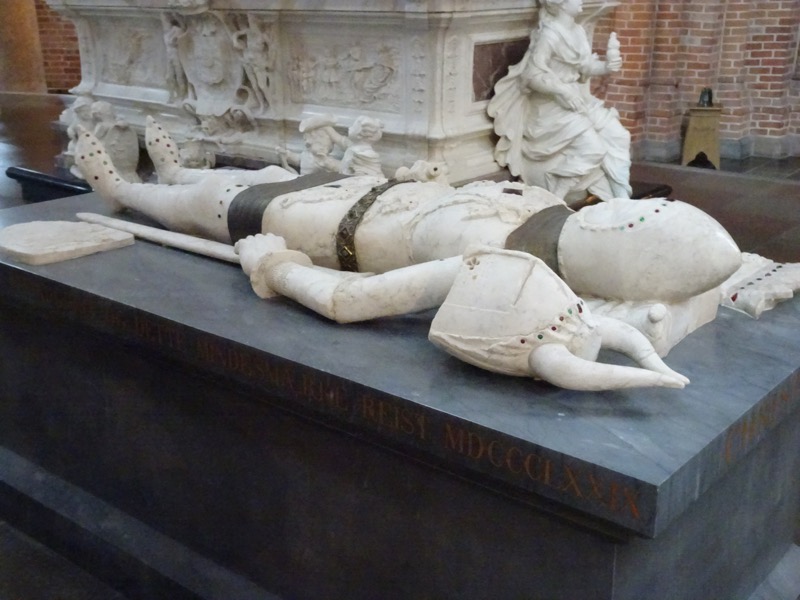
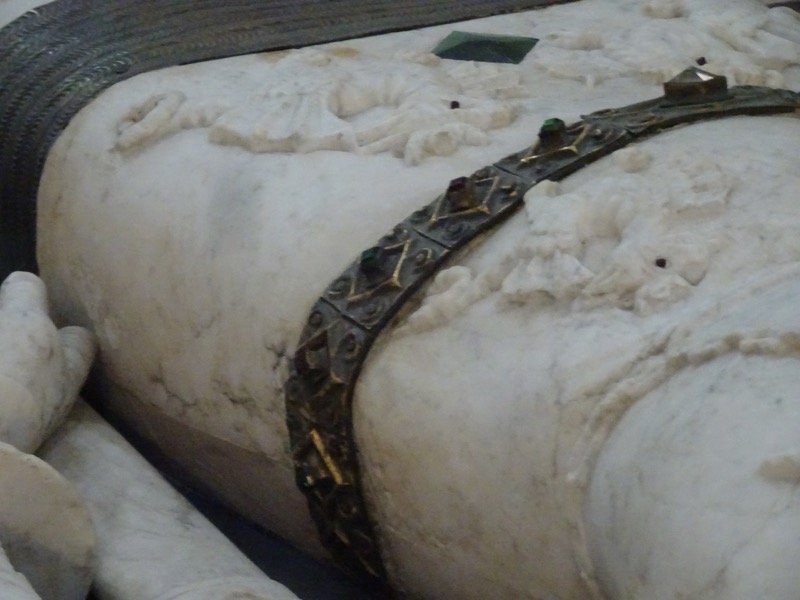
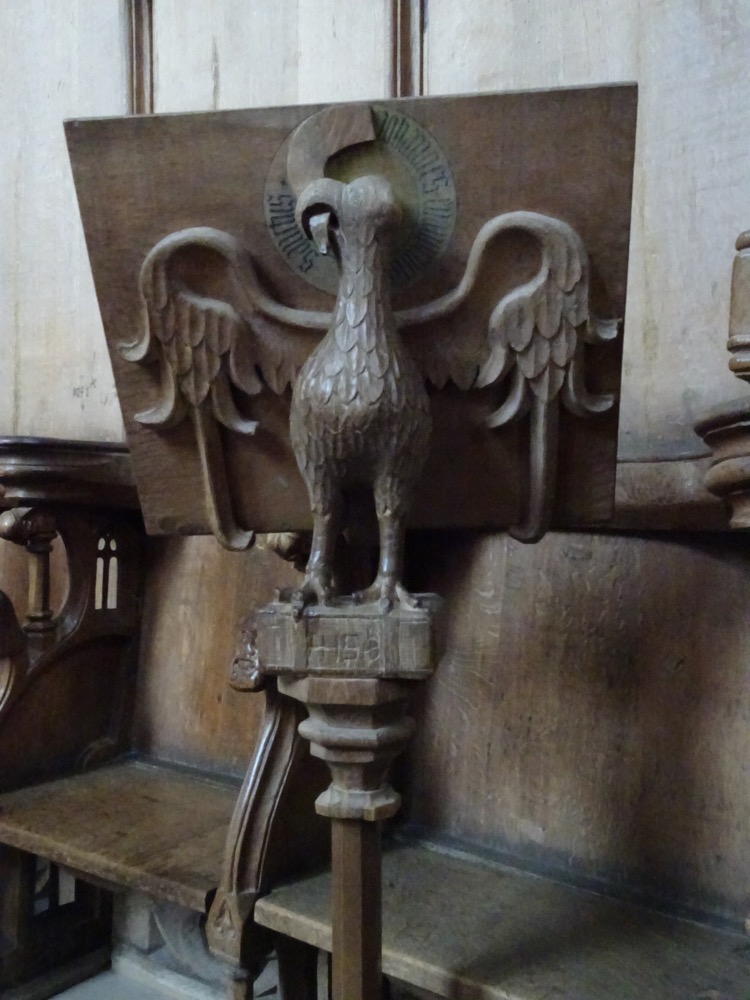
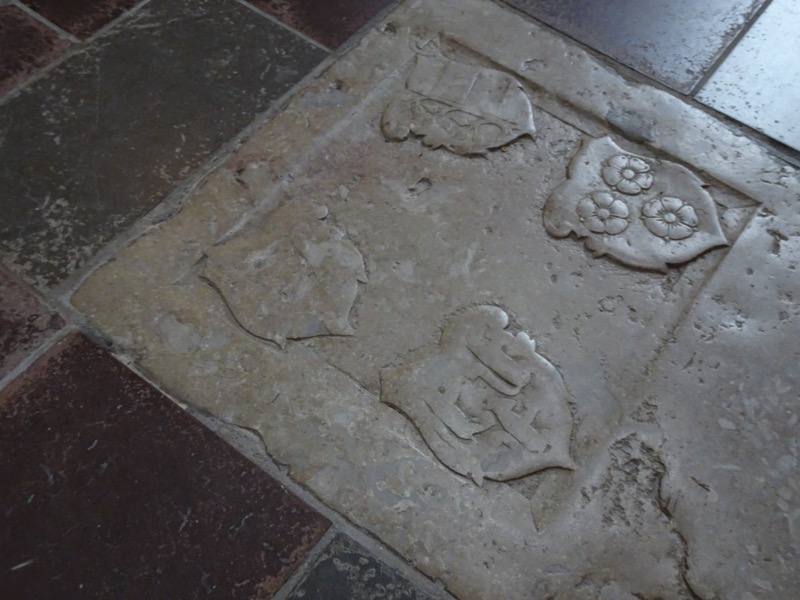
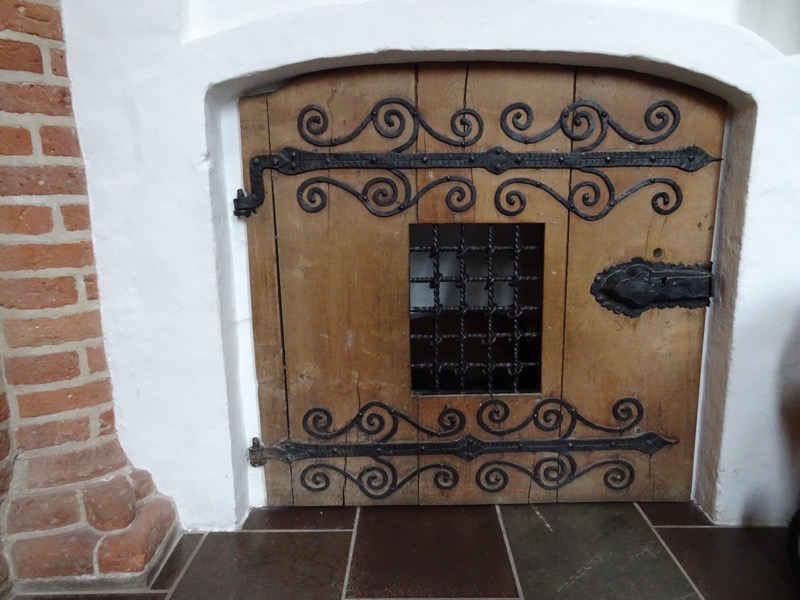 The crypt directly under the altar.
The crypt directly under the altar.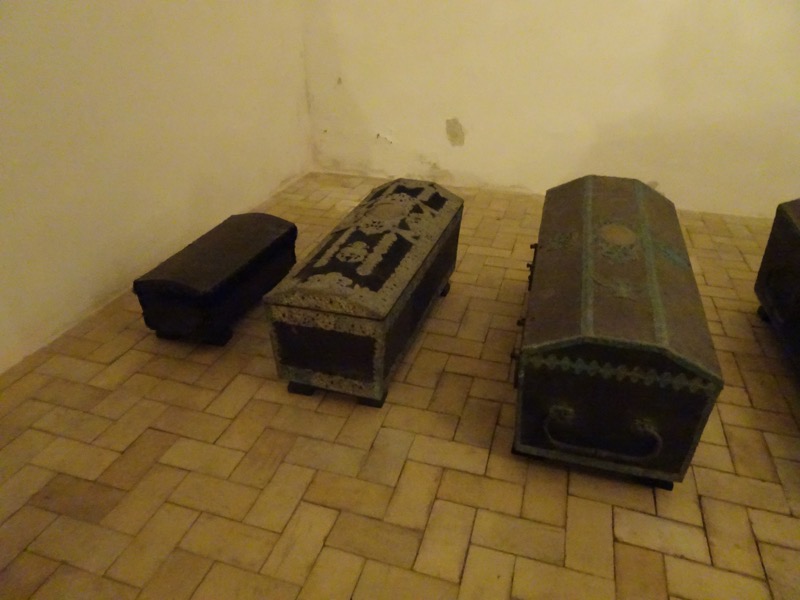
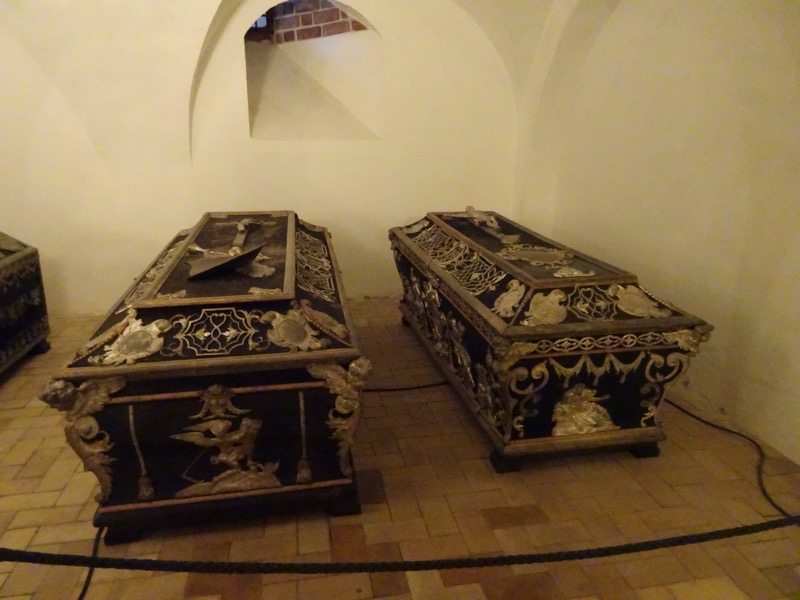
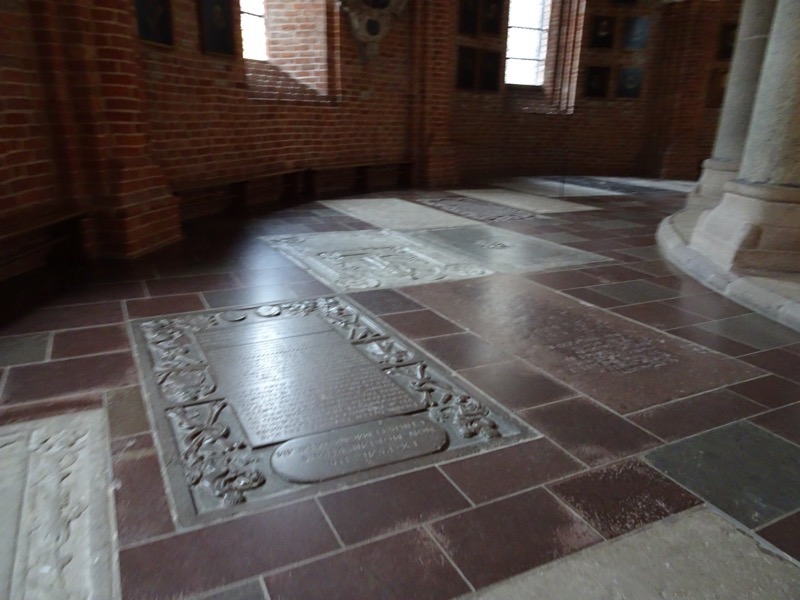
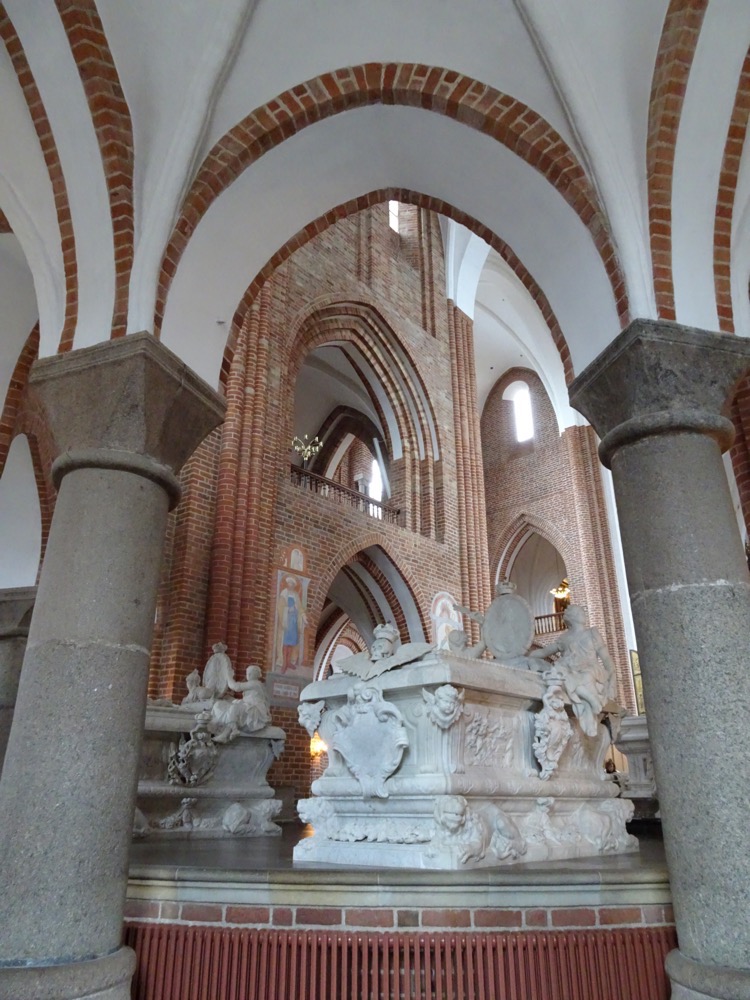
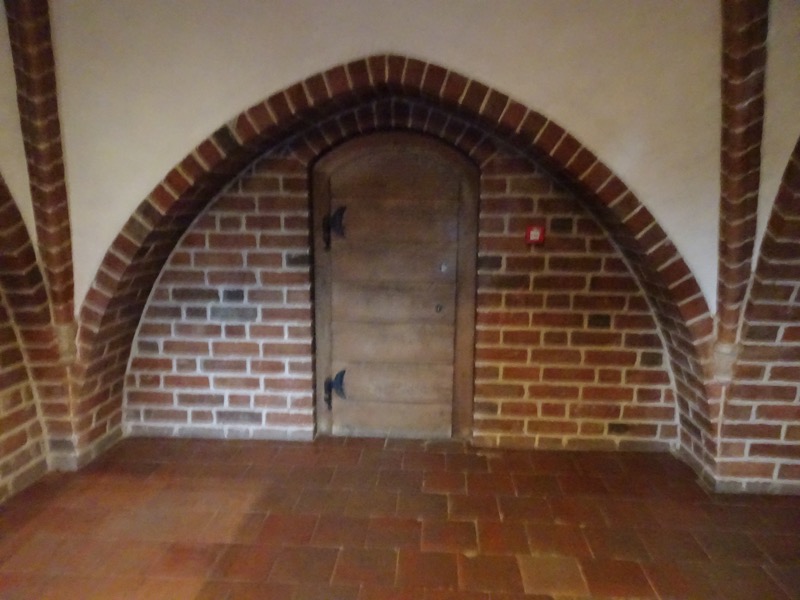 Looking down on the crypts behind the altar from the choir balconies.
Looking down on the crypts behind the altar from the choir balconies.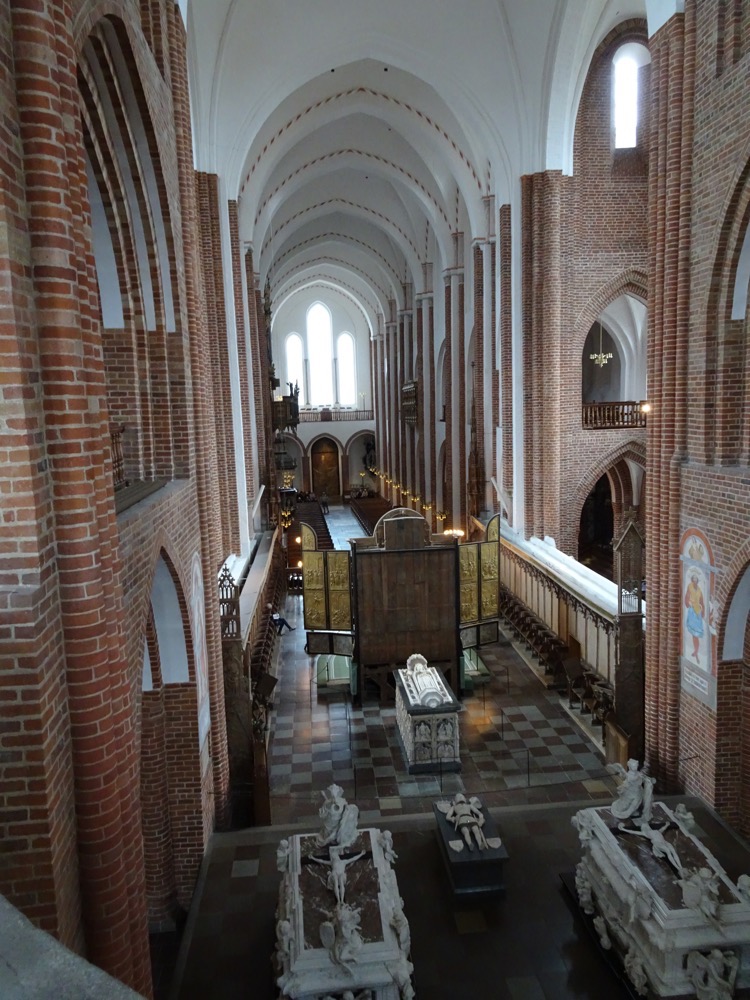
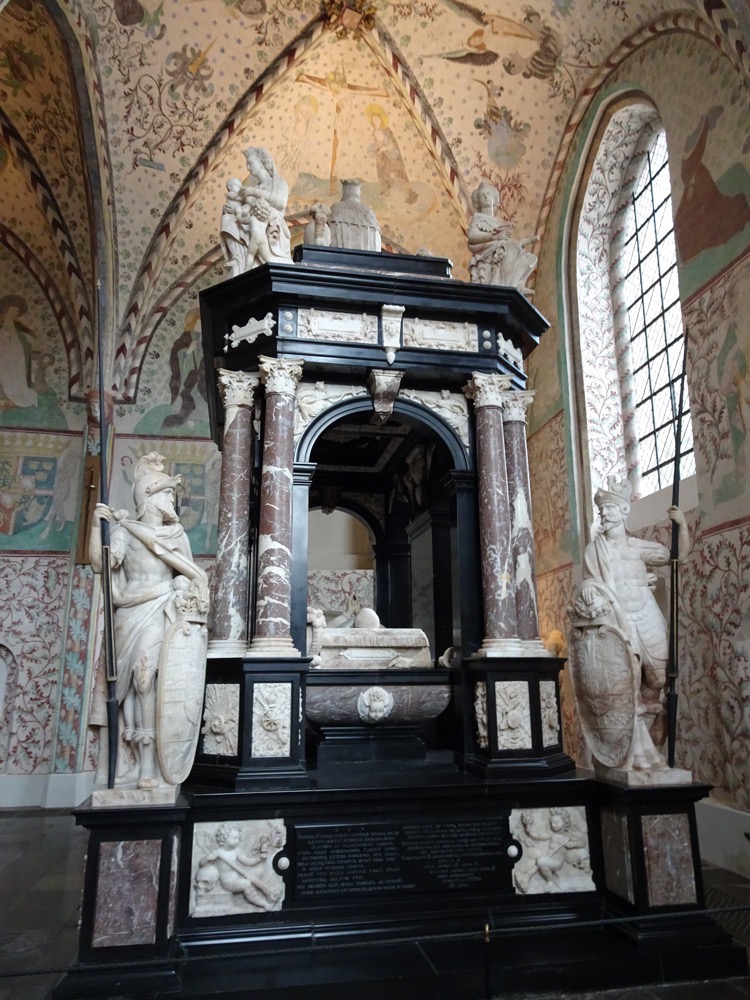 Monument of Frederick II, in the Chapel of the Magi.
Monument of Frederick II, in the Chapel of the Magi.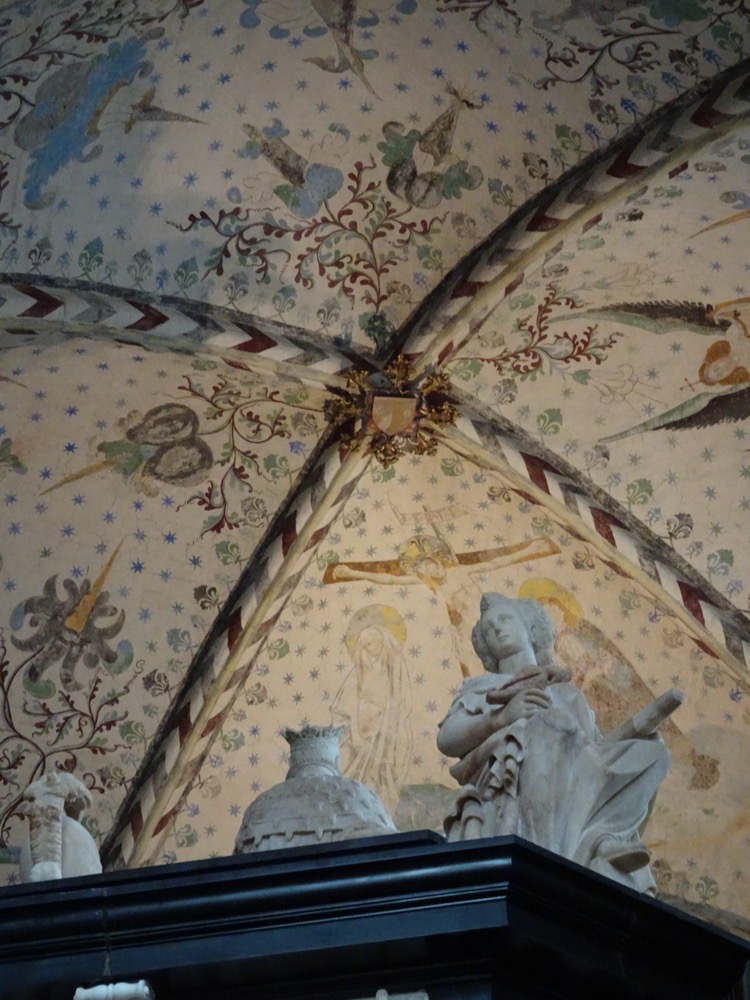
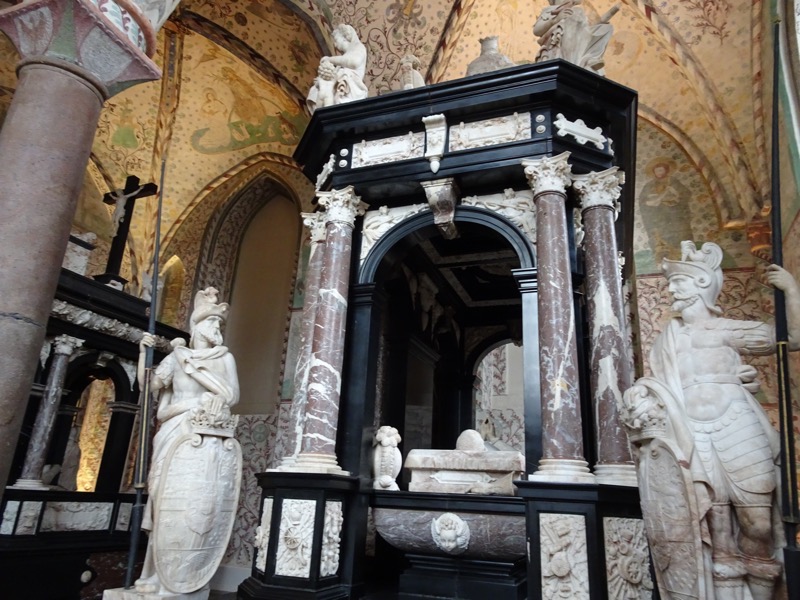
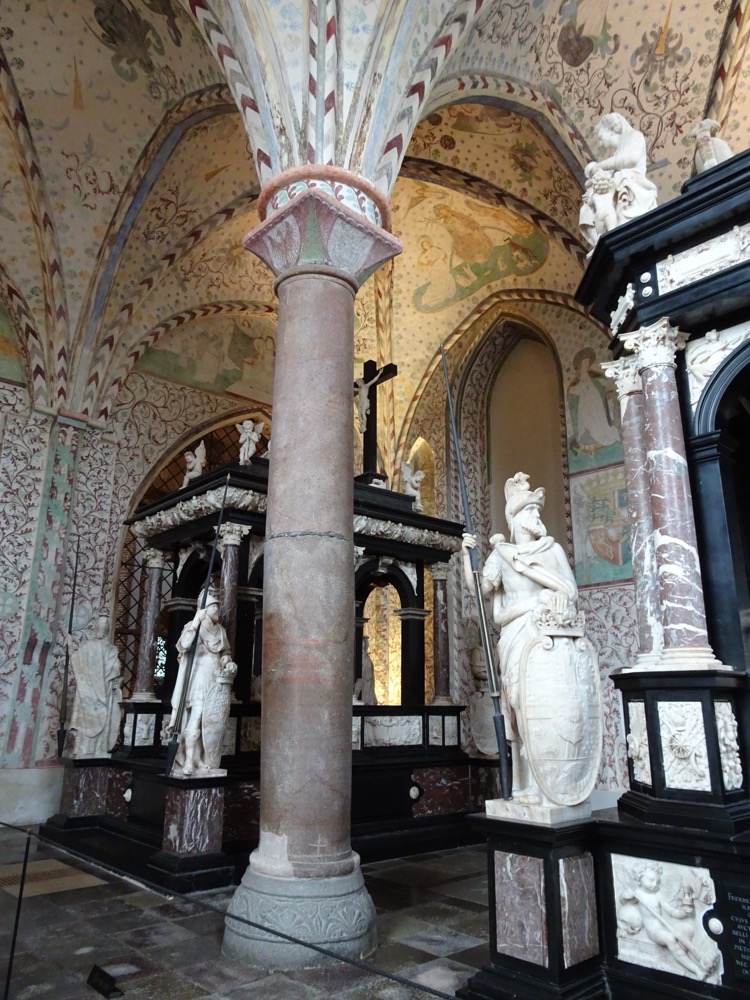
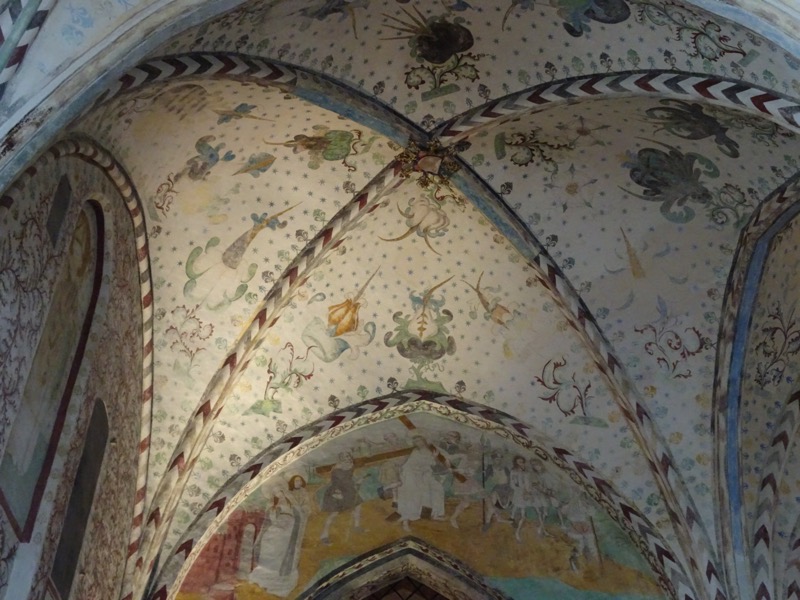 Amusing tourist bus directly outside the cathedral!
Amusing tourist bus directly outside the cathedral!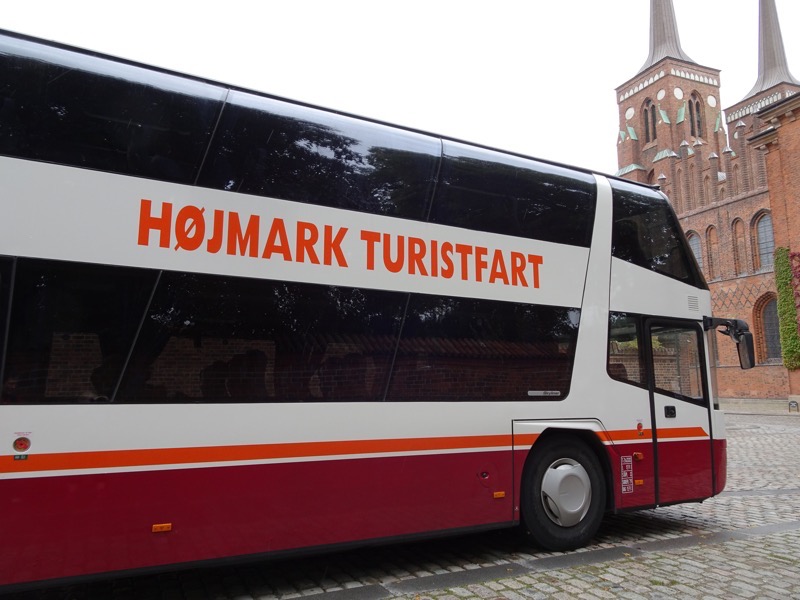 Roskilde pedestrian shopping street – it’s a lovely quiet part of the city. Roskilde Cathedral attracts barely 125,000 visitors each year and as such there is relatively little tourism hustle and bustle here, which makes a nice change from the Copenhagen CBD.
Roskilde pedestrian shopping street – it’s a lovely quiet part of the city. Roskilde Cathedral attracts barely 125,000 visitors each year and as such there is relatively little tourism hustle and bustle here, which makes a nice change from the Copenhagen CBD.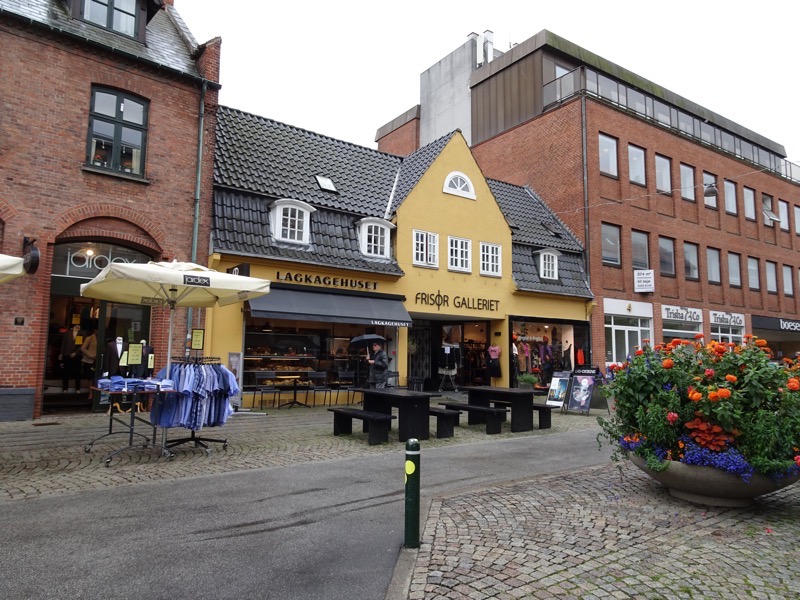 Interesting juxtaposition of street art and period building techniques.
Interesting juxtaposition of street art and period building techniques.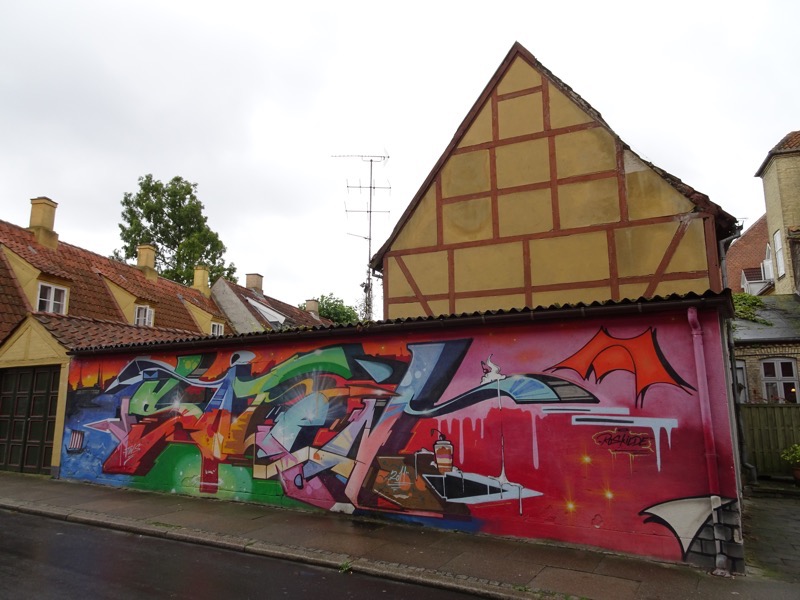 After Roskilde, we head back to Copenhagen to rest our feets before finding somewhere funky and local to have dinner… Sadly, in our quest to avoid another Irish pub, (this area is just littered with them) we ended up at a Hard Rock Cafe ! 😛
After Roskilde, we head back to Copenhagen to rest our feets before finding somewhere funky and local to have dinner… Sadly, in our quest to avoid another Irish pub, (this area is just littered with them) we ended up at a Hard Rock Cafe ! 😛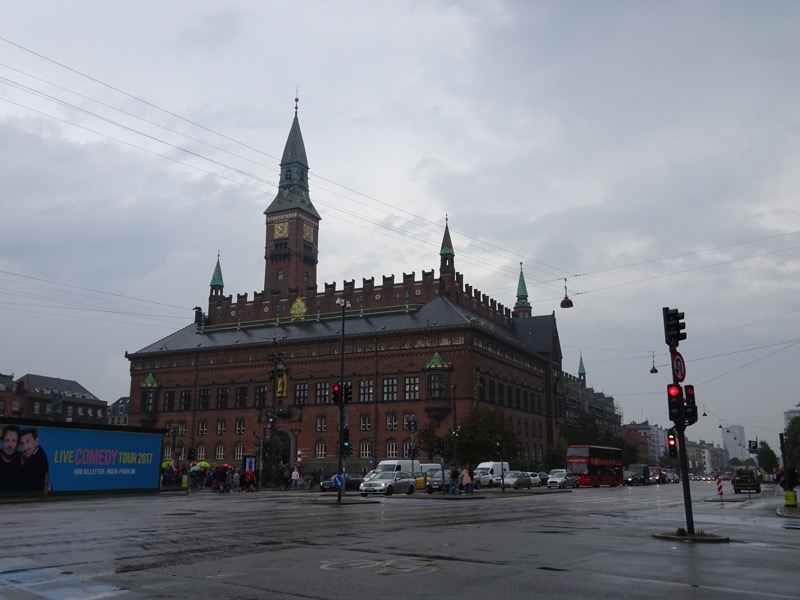 Bit dismal, but the rain didn’t bother Hans Christian Anderson over there.
Bit dismal, but the rain didn’t bother Hans Christian Anderson over there.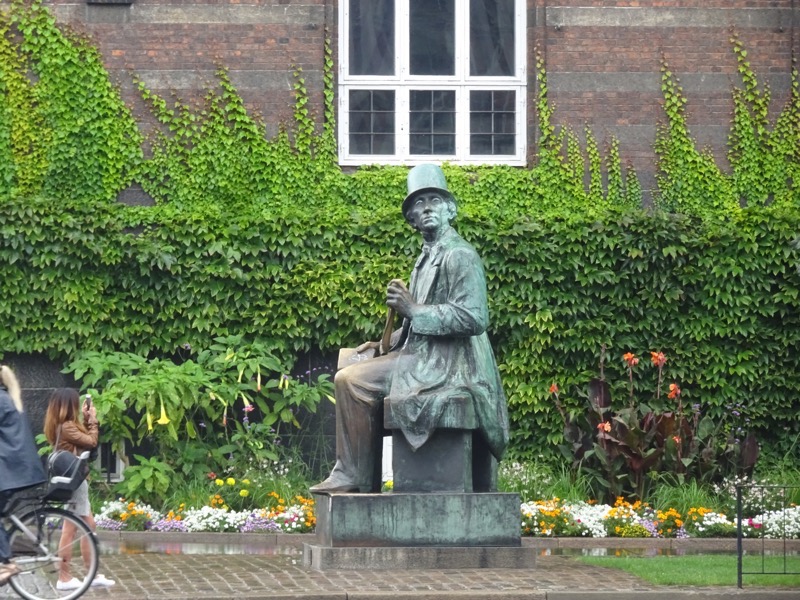 The museum is amazing! So many wonderful artefacts to wander through and a lot of it well signed in English. I am half way through doing up a separate post about all the things I saw there for my dark ages and medieval history friends so I won’t go into too much detail or include too many photos in this post.
The museum is amazing! So many wonderful artefacts to wander through and a lot of it well signed in English. I am half way through doing up a separate post about all the things I saw there for my dark ages and medieval history friends so I won’t go into too much detail or include too many photos in this post.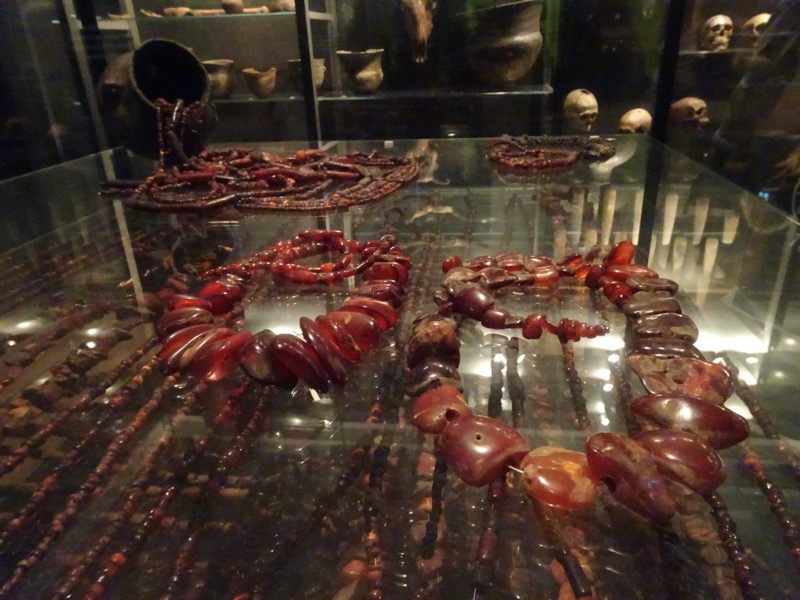 Some horned helmets from around the same period…
Some horned helmets from around the same period…
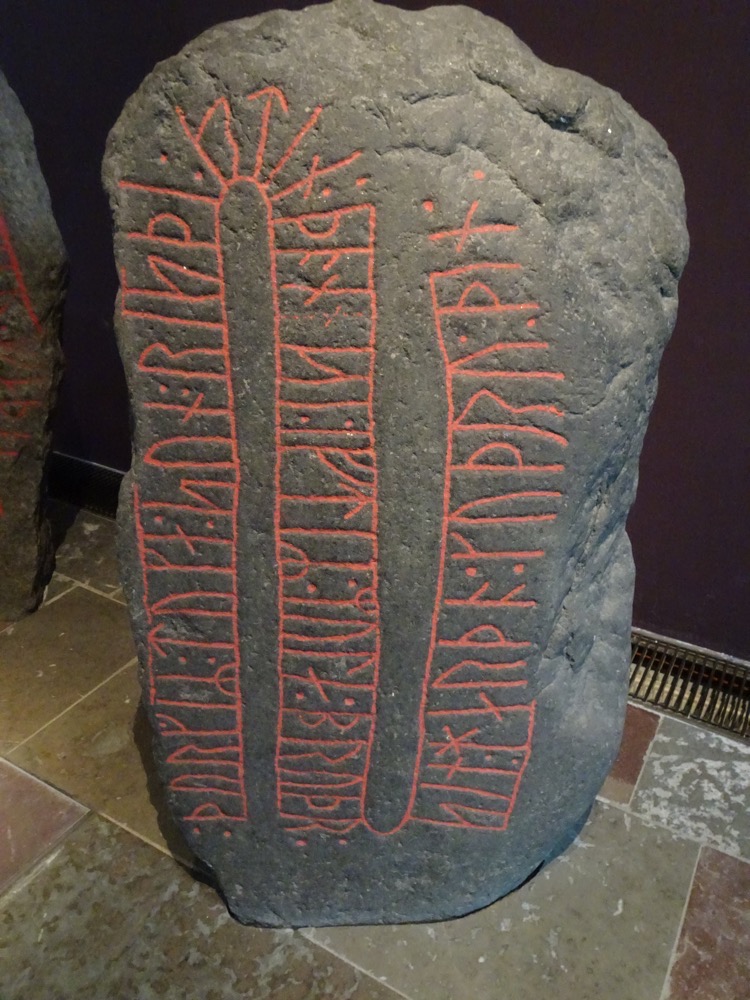 Runestones of varying sizes – above: about 120cm tall; below: Mr K for scale. 🙂
Runestones of varying sizes – above: about 120cm tall; below: Mr K for scale. 🙂 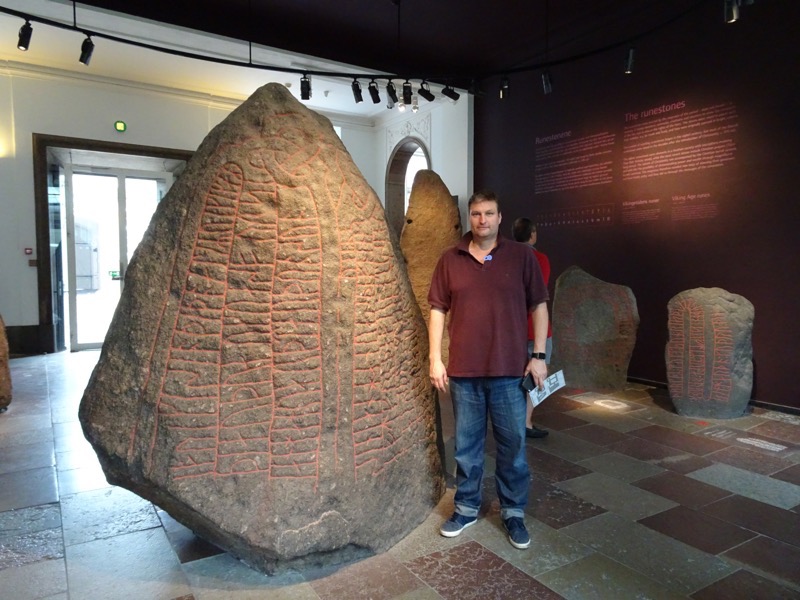 The Gundestrup Cauldron. Found in a Jutland bog, its origins are unknown, definitely created in the south, depictions of elephants and what not, possibly Viking loot or a gift.
The Gundestrup Cauldron. Found in a Jutland bog, its origins are unknown, definitely created in the south, depictions of elephants and what not, possibly Viking loot or a gift.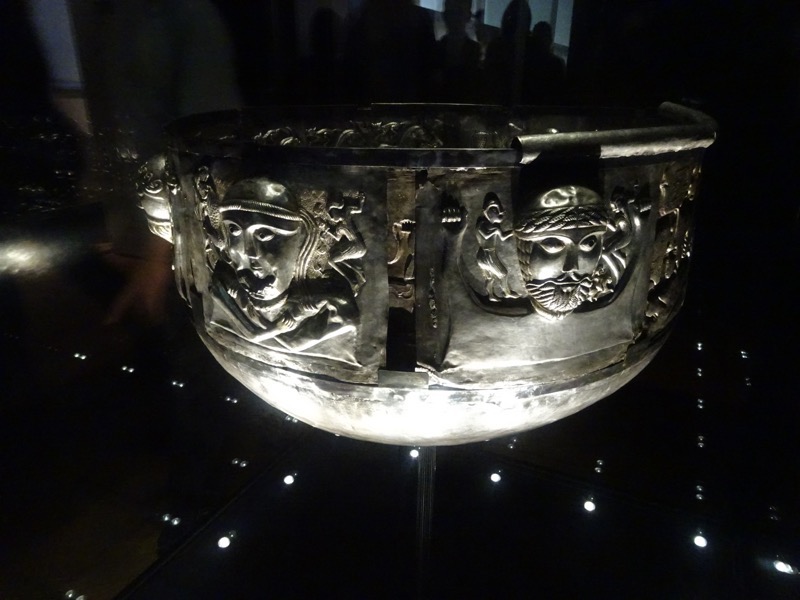
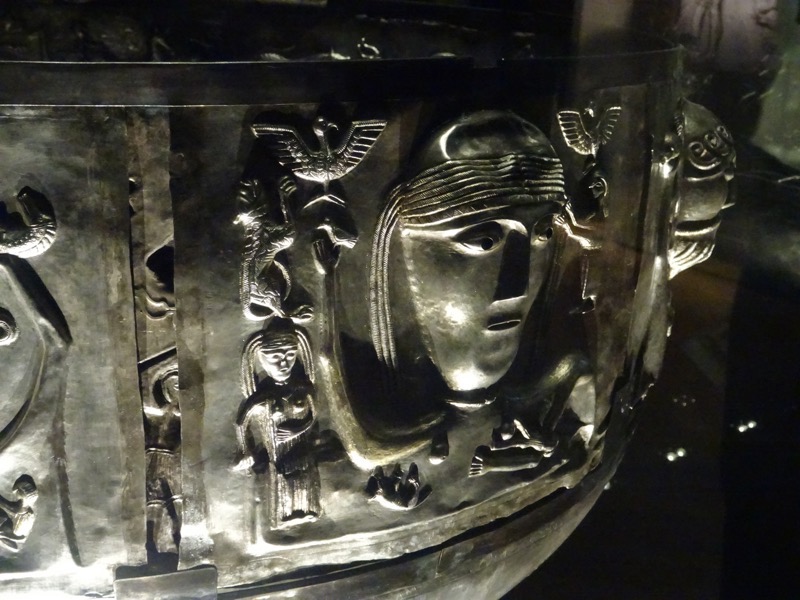
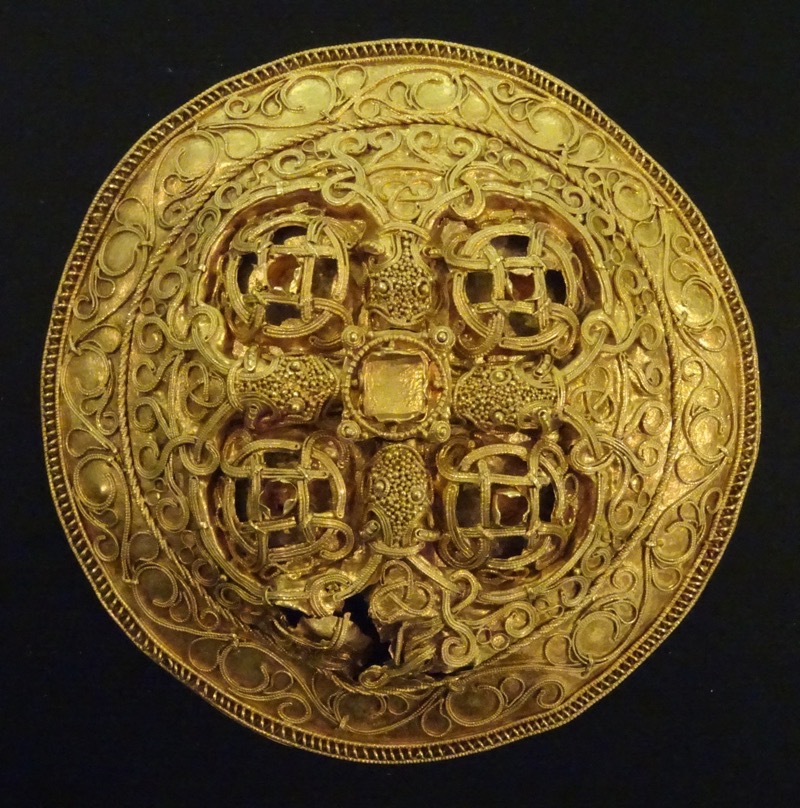 Beautifully filigreed and granulated brooches incorporating Christian art and Norse designs, made by Danish artist in 10th century AD.
Beautifully filigreed and granulated brooches incorporating Christian art and Norse designs, made by Danish artist in 10th century AD.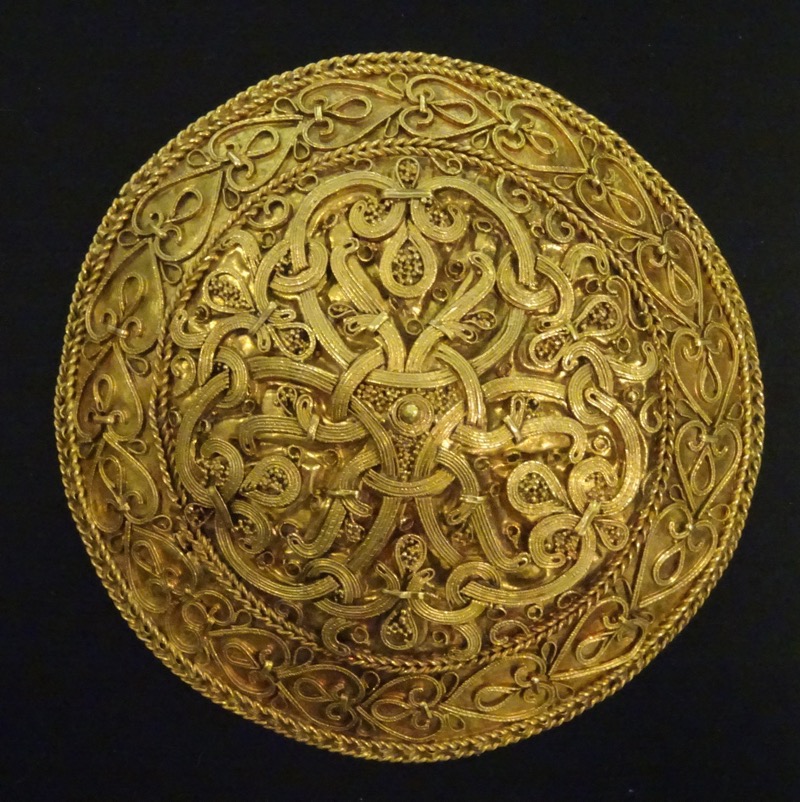 Gold finger rings from the 2nd to 4th centuries AD. Collected from various finds.
Gold finger rings from the 2nd to 4th centuries AD. Collected from various finds.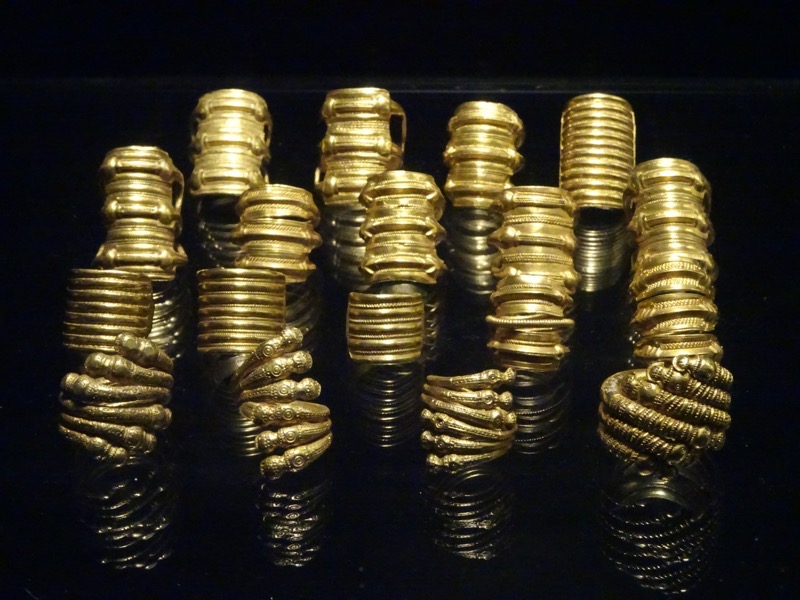 Golden Horns – reconstructions made in 1861. These golden horns were recreated from the drawings of antiquarian, J.R Paulli who documented a find that was later stolen and melted down. King Frederik VII had these copies made for the musuem, based on Paulli’s drawings and descriptions. I can’t imagine who would steal and melt down such treasures!
Golden Horns – reconstructions made in 1861. These golden horns were recreated from the drawings of antiquarian, J.R Paulli who documented a find that was later stolen and melted down. King Frederik VII had these copies made for the musuem, based on Paulli’s drawings and descriptions. I can’t imagine who would steal and melt down such treasures!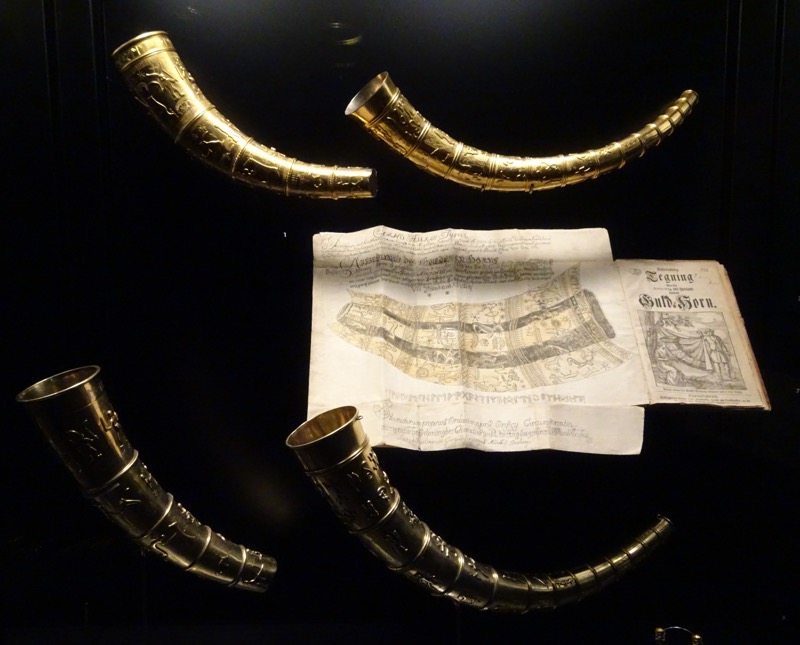
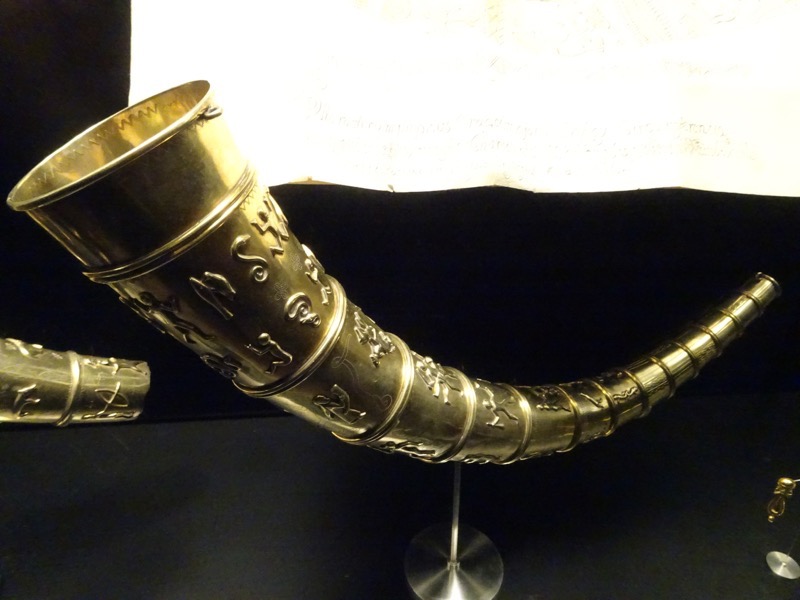 The famous Jelling cup… you can buy a recreation in the gift shop – approximately $60 for a silver plated pewter one, or approximately $950 for a solid silver one!
The famous Jelling cup… you can buy a recreation in the gift shop – approximately $60 for a silver plated pewter one, or approximately $950 for a solid silver one!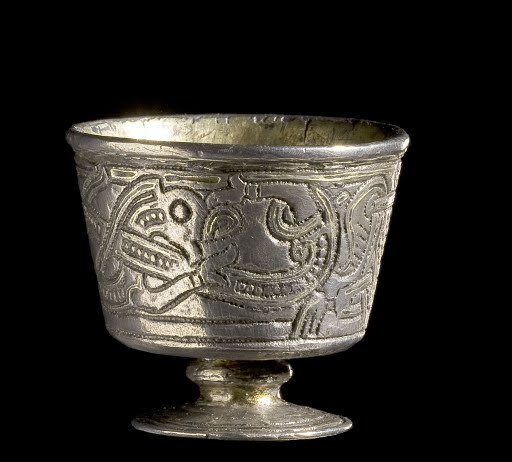
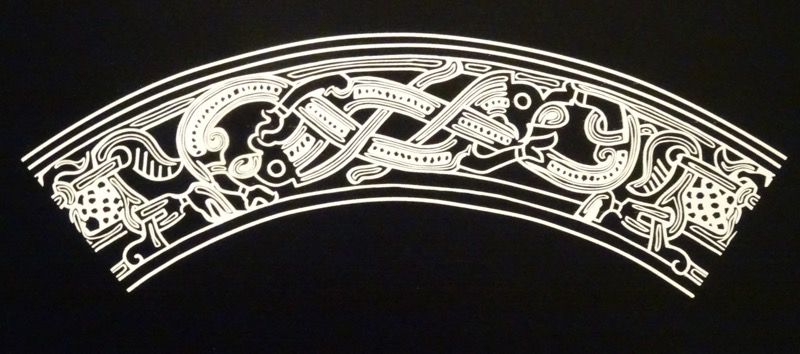 The Medieval galleries were not so well kept (or well labeled!) in comparison to the prehistory and iron age galleries. But still full of beautiful items.
The Medieval galleries were not so well kept (or well labeled!) in comparison to the prehistory and iron age galleries. But still full of beautiful items.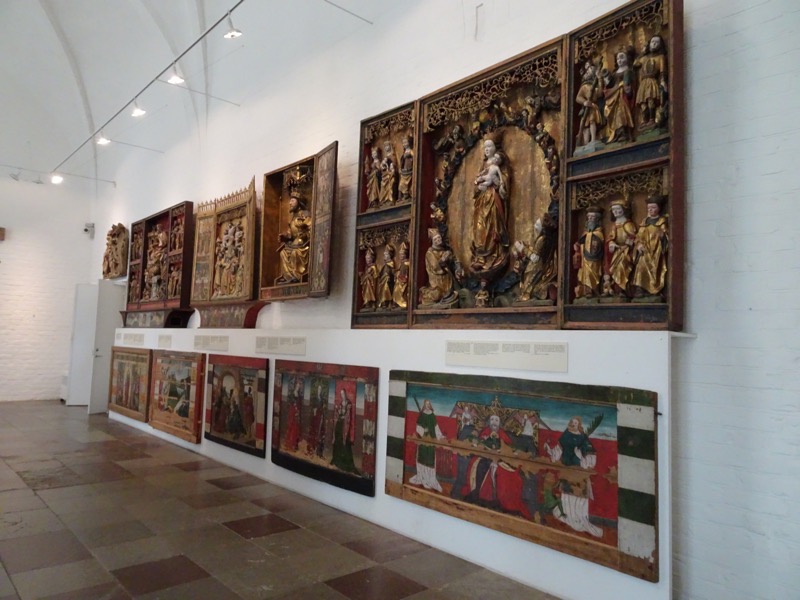 Altarpiece Northern Germany c.1511 AD
Altarpiece Northern Germany c.1511 AD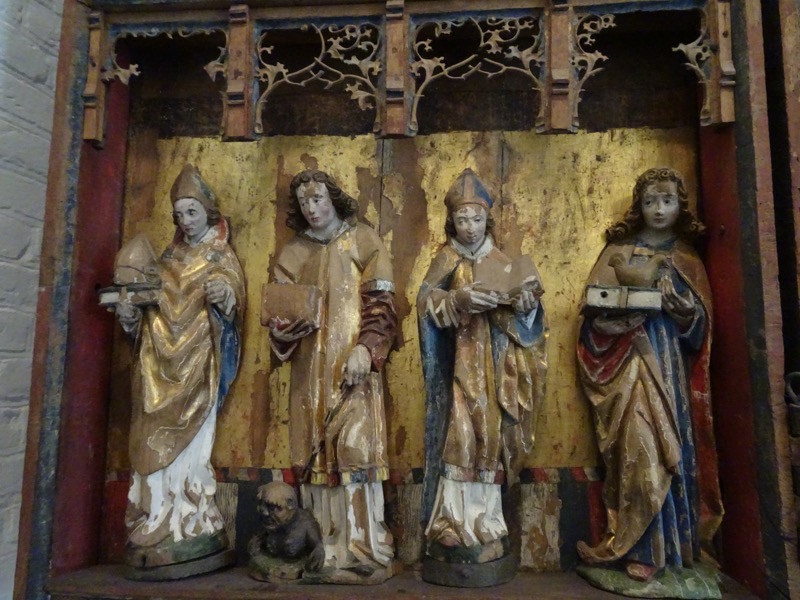 Altarpiece depicting the Holy Family. c1522 AD.
Altarpiece depicting the Holy Family. c1522 AD.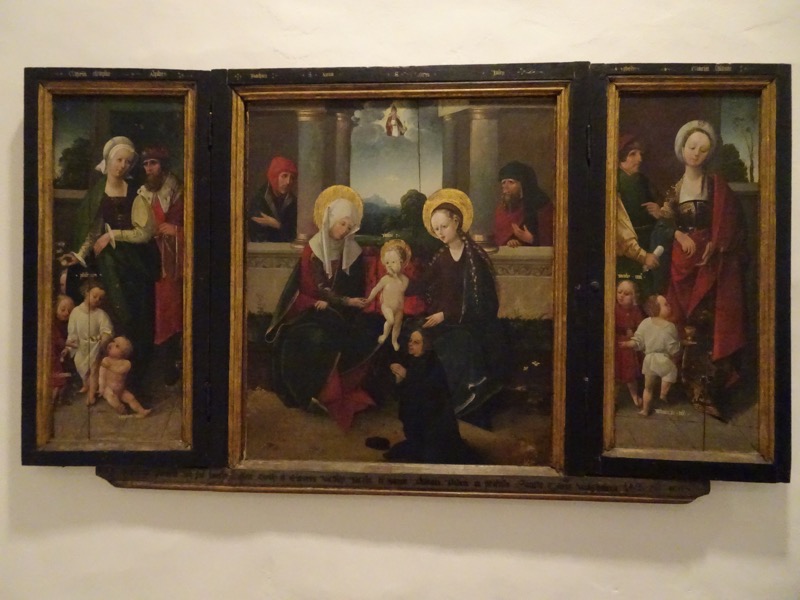 detail:
detail: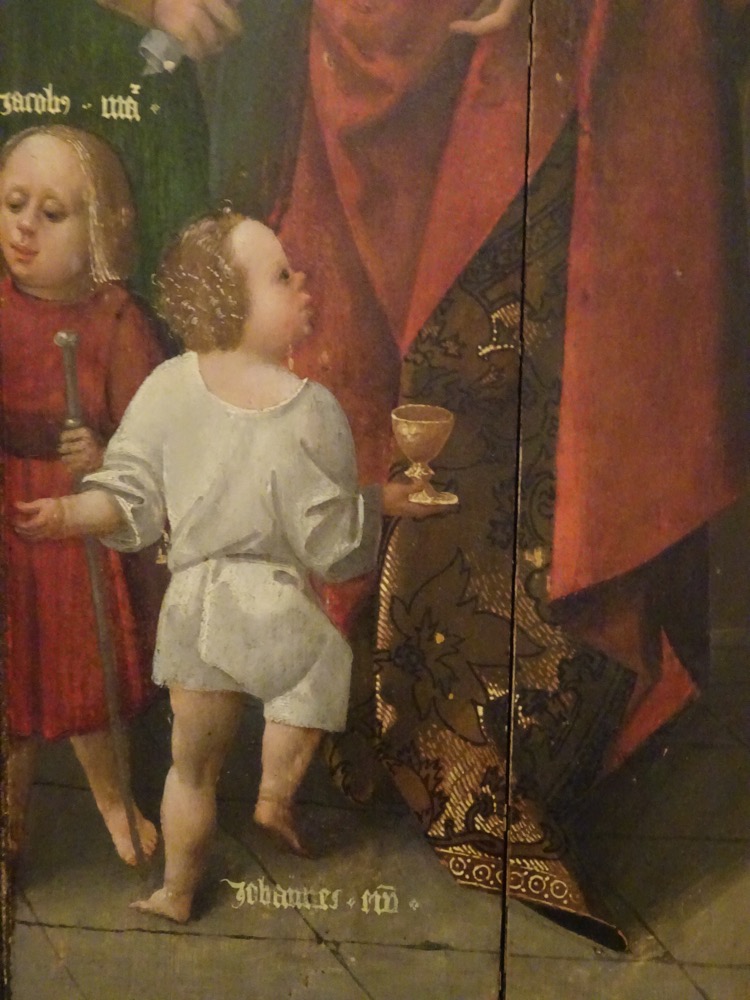
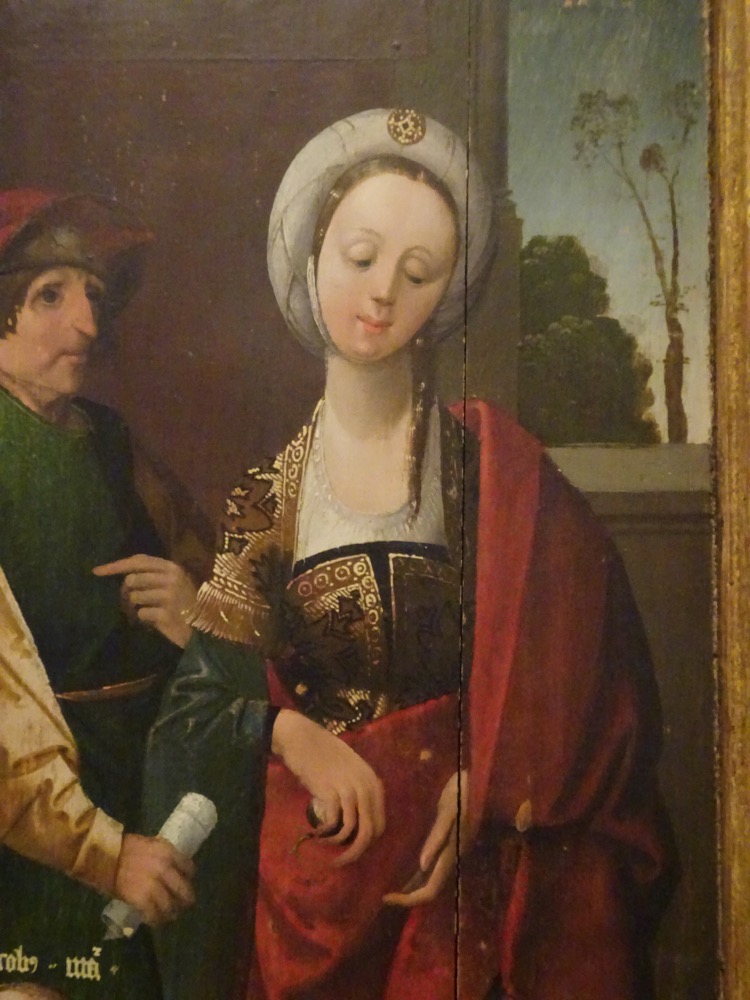 Full armour for horse and man. Innsbruck Austria, c.1545 AD.
Full armour for horse and man. Innsbruck Austria, c.1545 AD.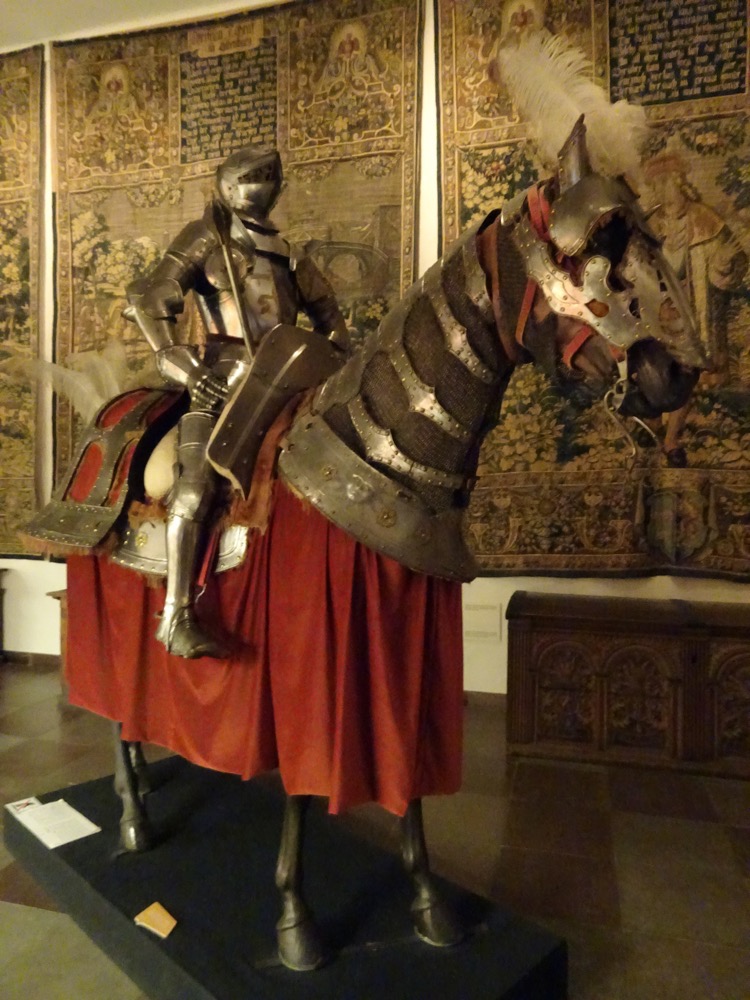 Dower chest or hope chest designed to hold a trousseau. Renaissance style, c.1549.
Dower chest or hope chest designed to hold a trousseau. Renaissance style, c.1549.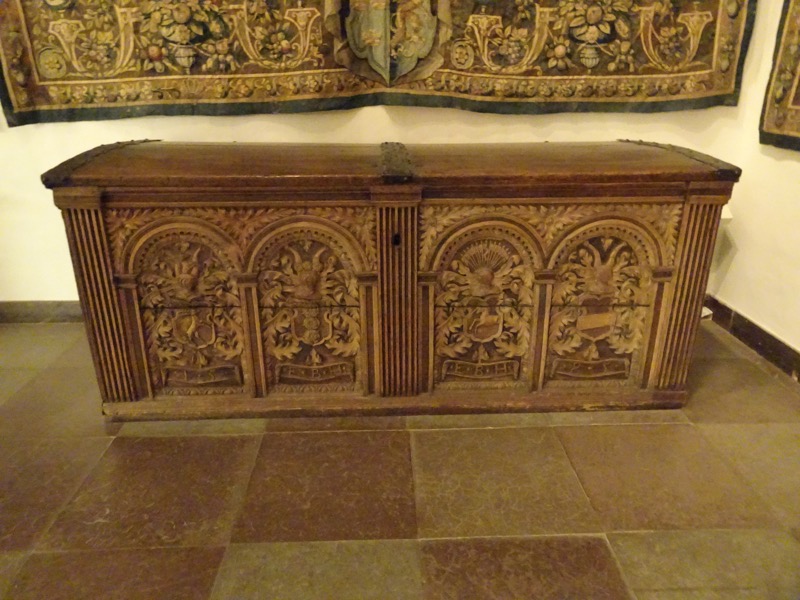 Faience Portuguese jars, c.1641.
Faience Portuguese jars, c.1641. Recreation of a medieval room with extant artefacts.
Recreation of a medieval room with extant artefacts.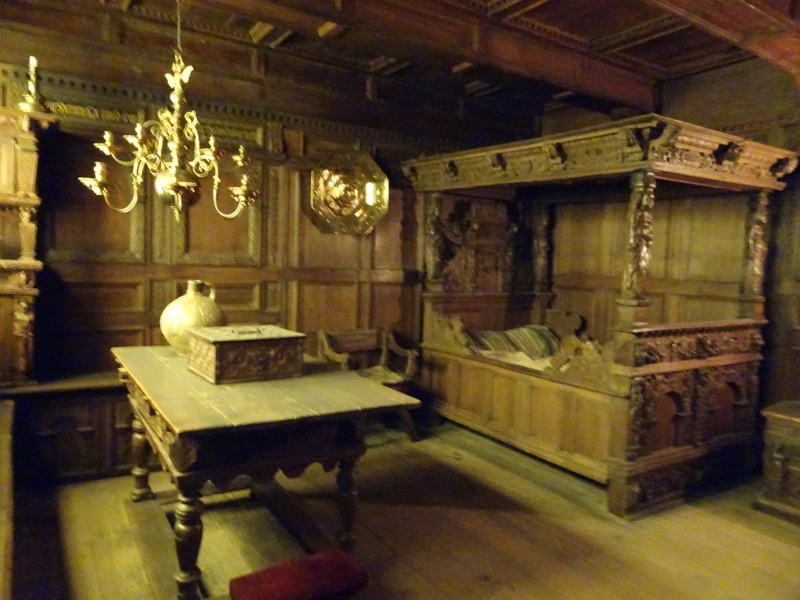 Cooking cauldrons. c.15-16th centuries.
Cooking cauldrons. c.15-16th centuries.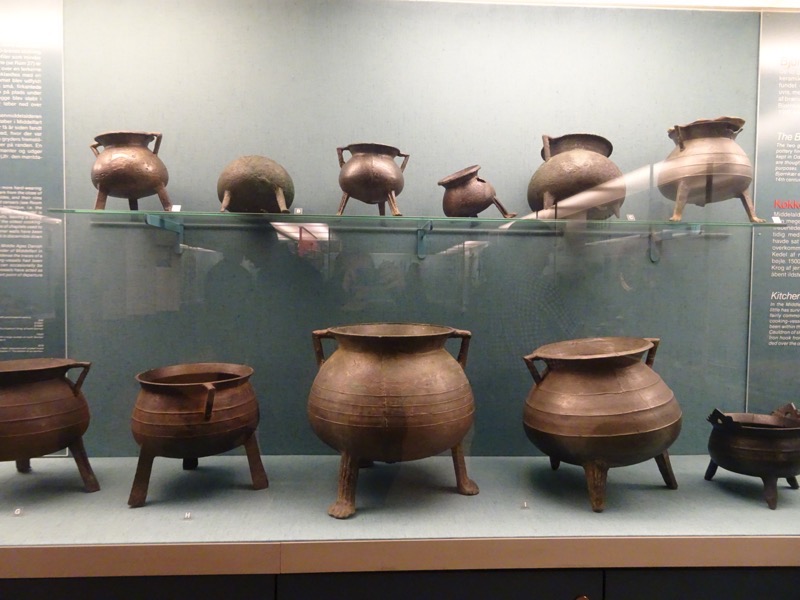
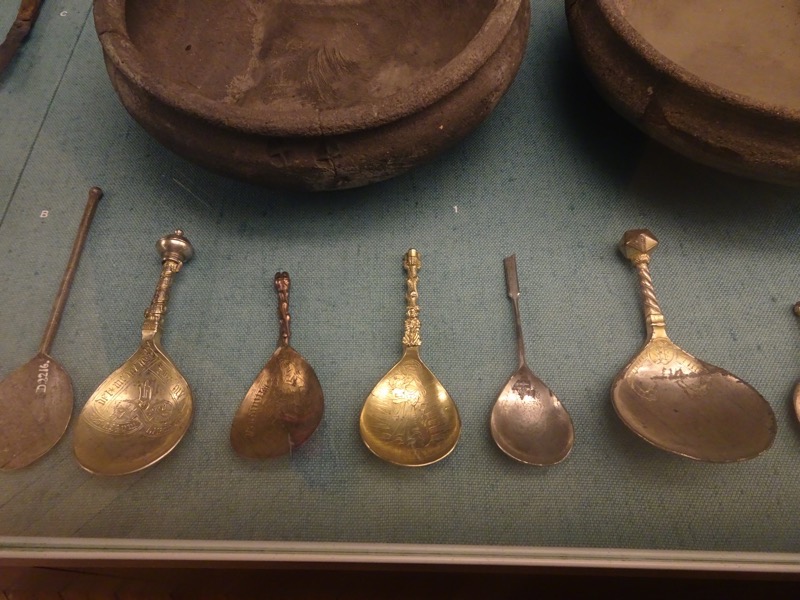 Reliquary boxes. c.1200s
Reliquary boxes. c.1200s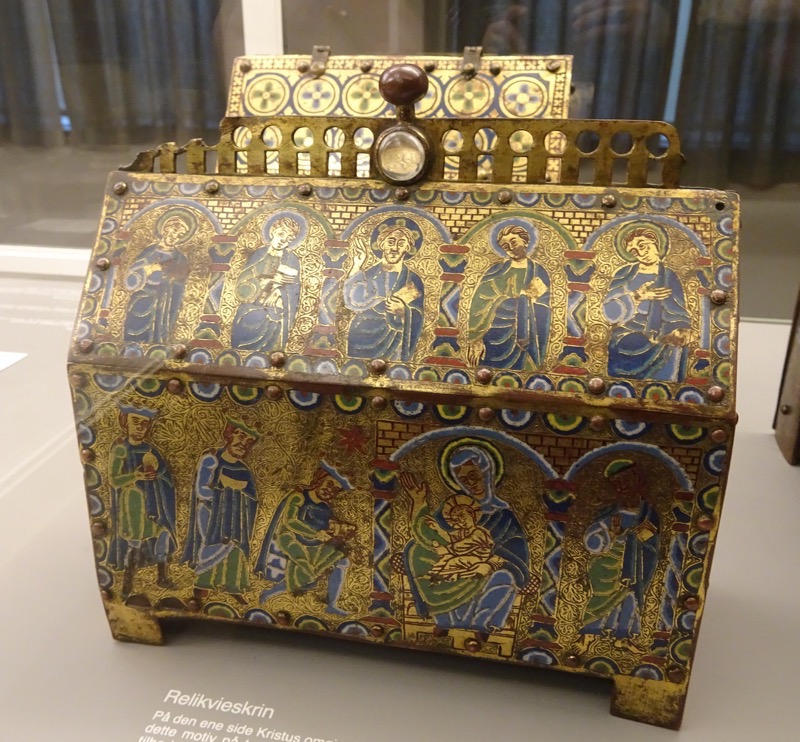
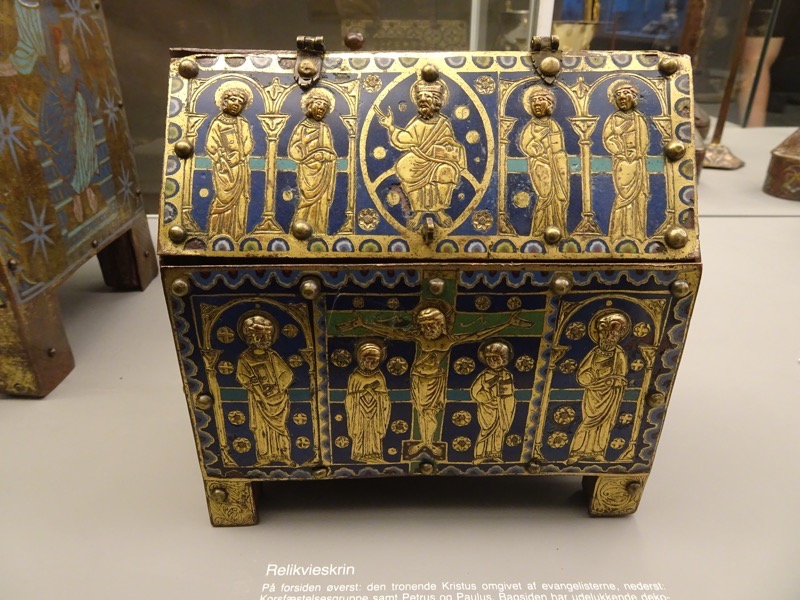
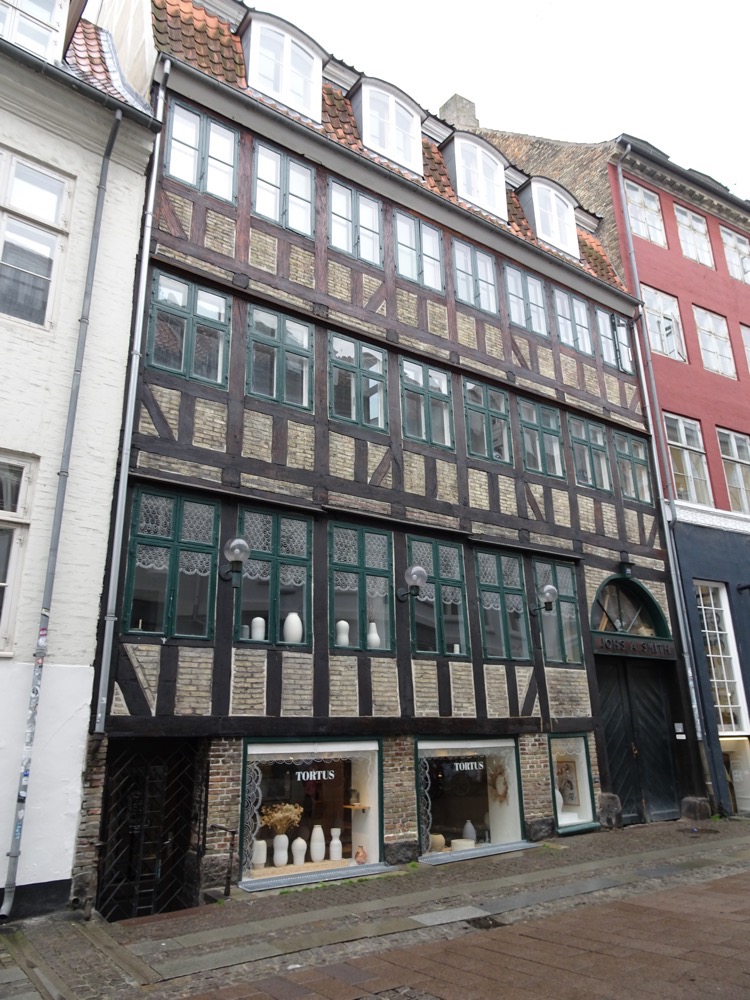
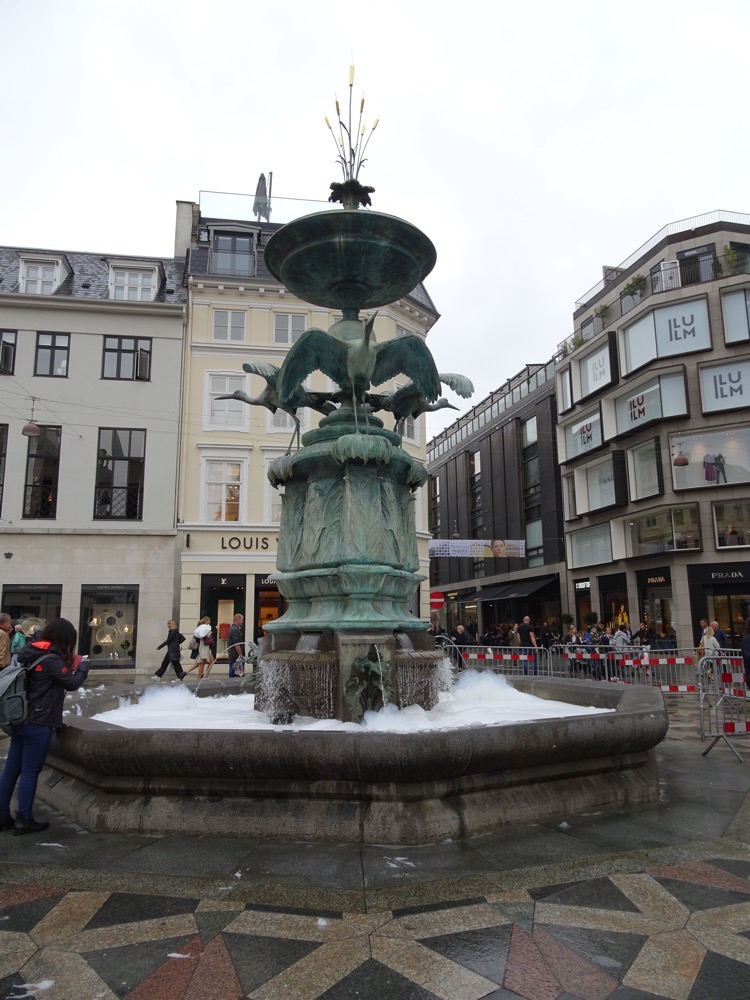
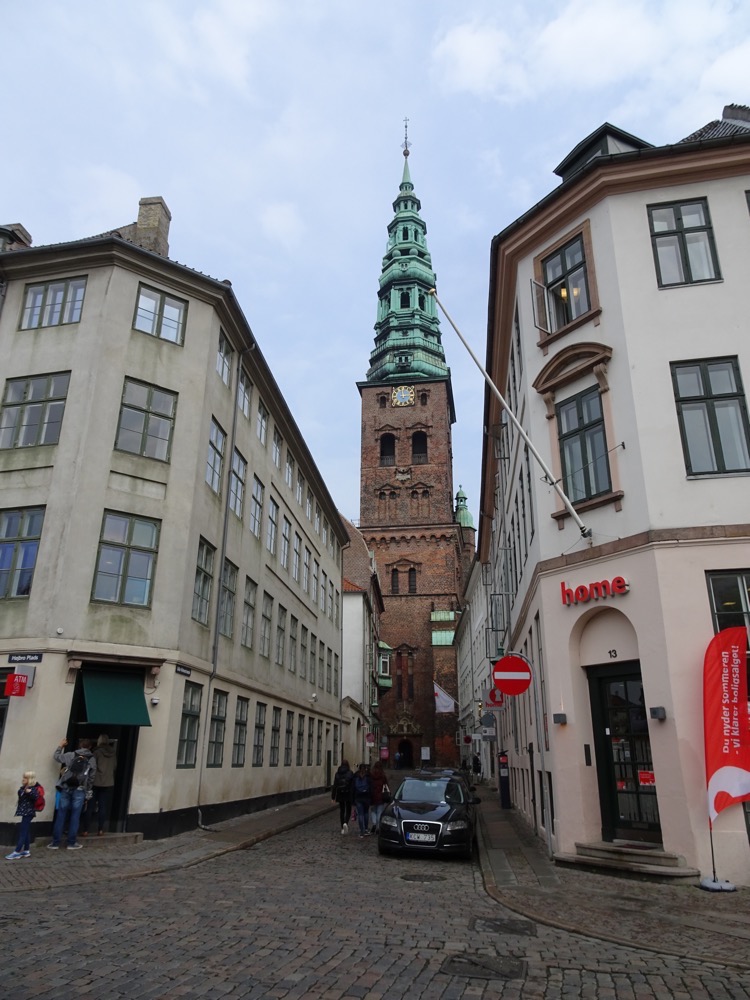 After spilling out of the amazing museum and spending no small amount of time in the gift shop, lamenting the lack of English catalogues, I might add (I could have cried!), we wandered the streets of Copenhagen for a while until we found another Irish pub for lunch – the Irish Rover, where we had a weird Danish smorgasbord lunch and massive pints of cider and beer, as you do!
After spilling out of the amazing museum and spending no small amount of time in the gift shop, lamenting the lack of English catalogues, I might add (I could have cried!), we wandered the streets of Copenhagen for a while until we found another Irish pub for lunch – the Irish Rover, where we had a weird Danish smorgasbord lunch and massive pints of cider and beer, as you do!
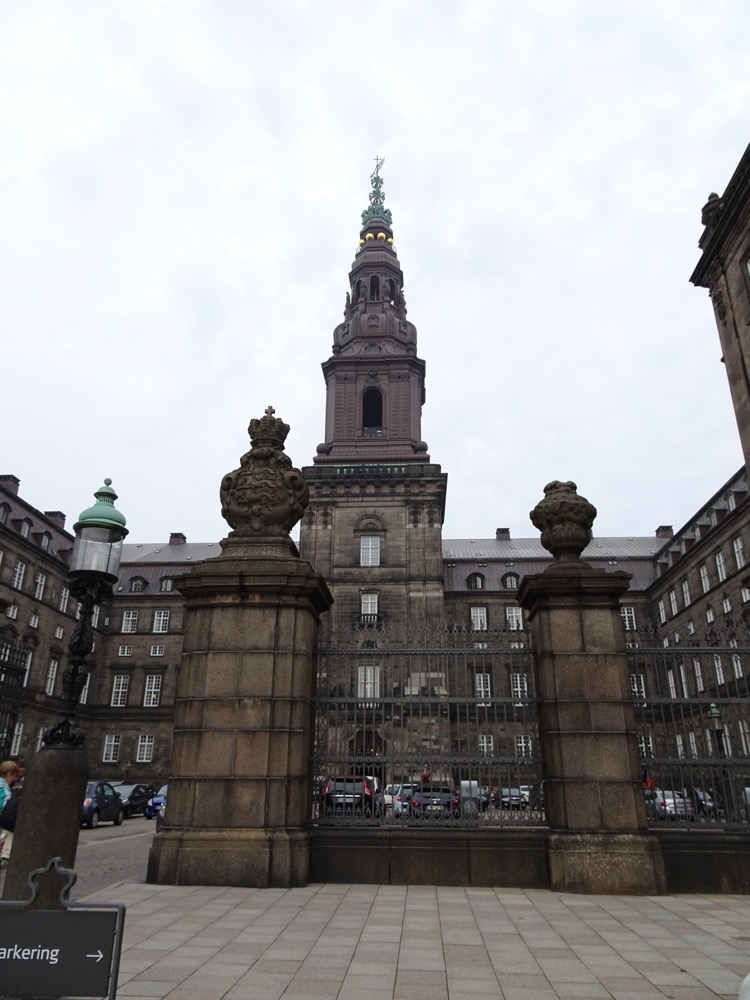 Christiansborg Slot (or Christiansborg Palace) is both palace and government building on the island of Sltosholmen in the middle of town. It is the seat of the Danish Parliament, contains the Prime Minister’s Offices, and also the Supreme Court of Denmark is here. Several parts of the palace are also still used by the Danish monarchy, including the Royal Reception Rooms and Royal Stables. Interesting tidbit for the day – this is the only place in the world where the executive, legislative and judicial branches government are contained all in one building/complex.
Christiansborg Slot (or Christiansborg Palace) is both palace and government building on the island of Sltosholmen in the middle of town. It is the seat of the Danish Parliament, contains the Prime Minister’s Offices, and also the Supreme Court of Denmark is here. Several parts of the palace are also still used by the Danish monarchy, including the Royal Reception Rooms and Royal Stables. Interesting tidbit for the day – this is the only place in the world where the executive, legislative and judicial branches government are contained all in one building/complex.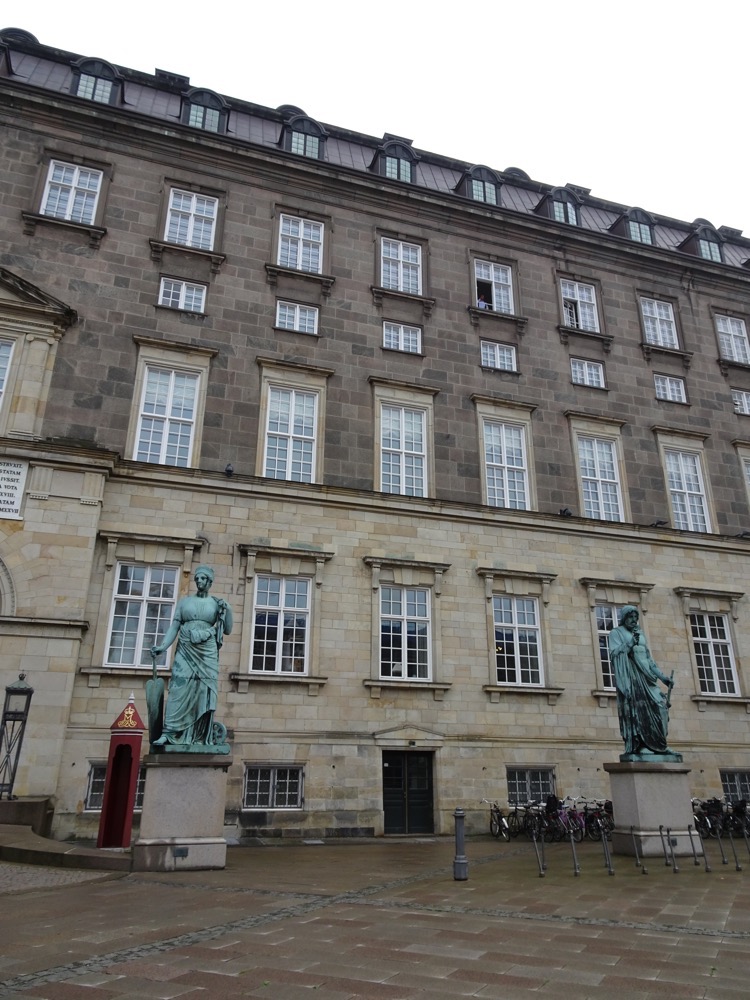 Grand Hallway leading to the Royal Reception Rooms, also known as the Queen’s Staircase (though I know not why).
Grand Hallway leading to the Royal Reception Rooms, also known as the Queen’s Staircase (though I know not why).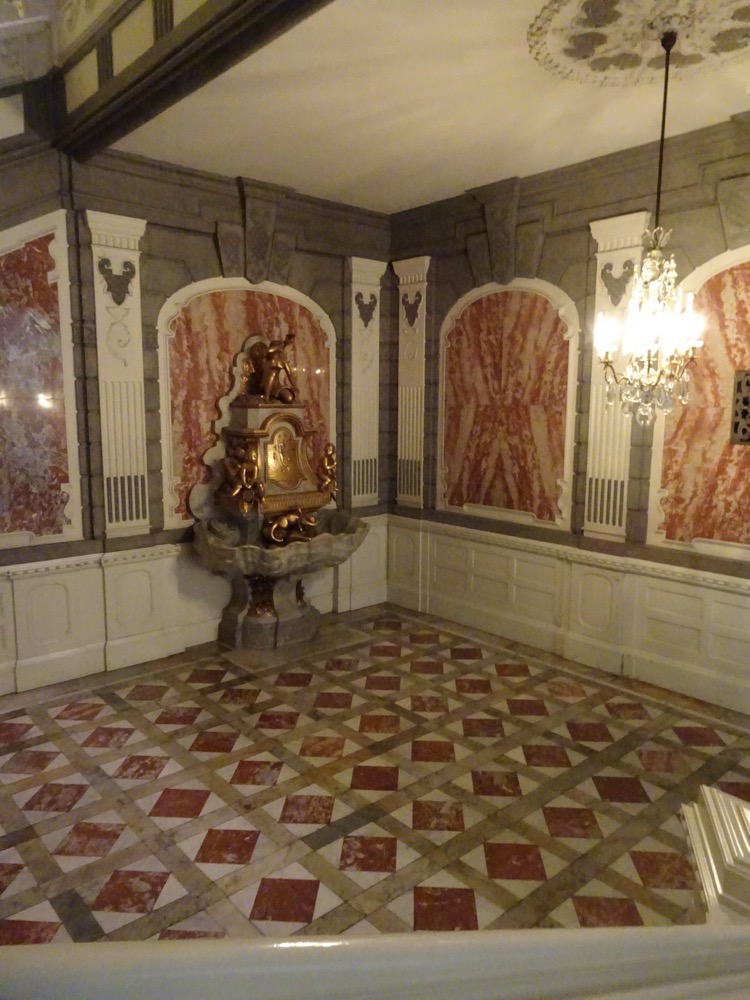 The Alexander Hall.
The Alexander Hall.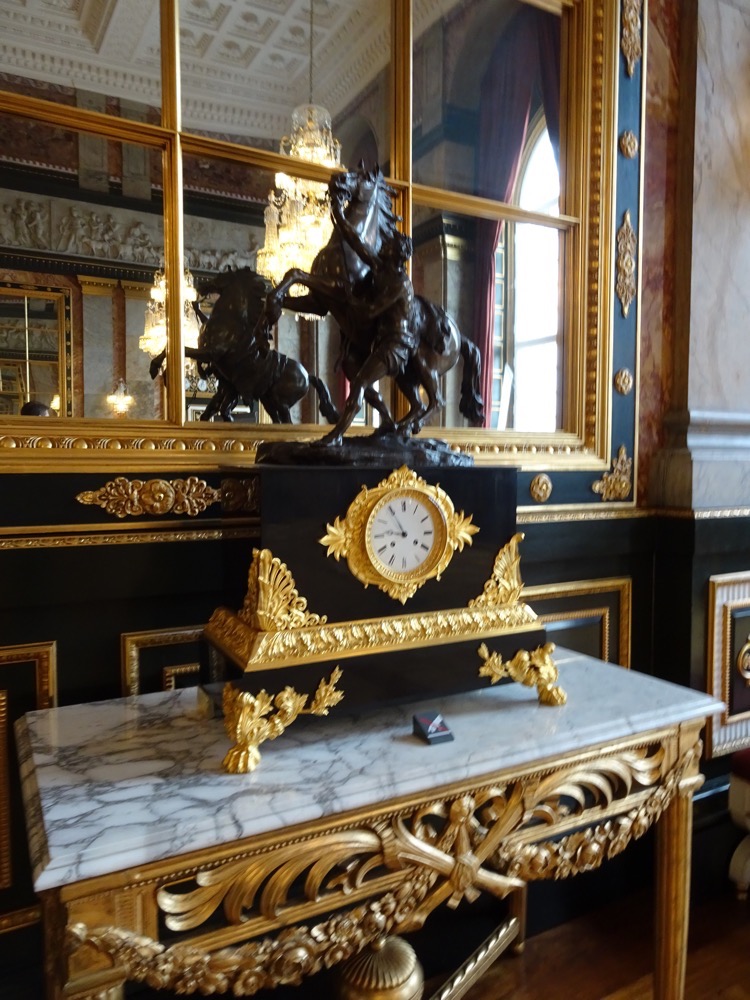
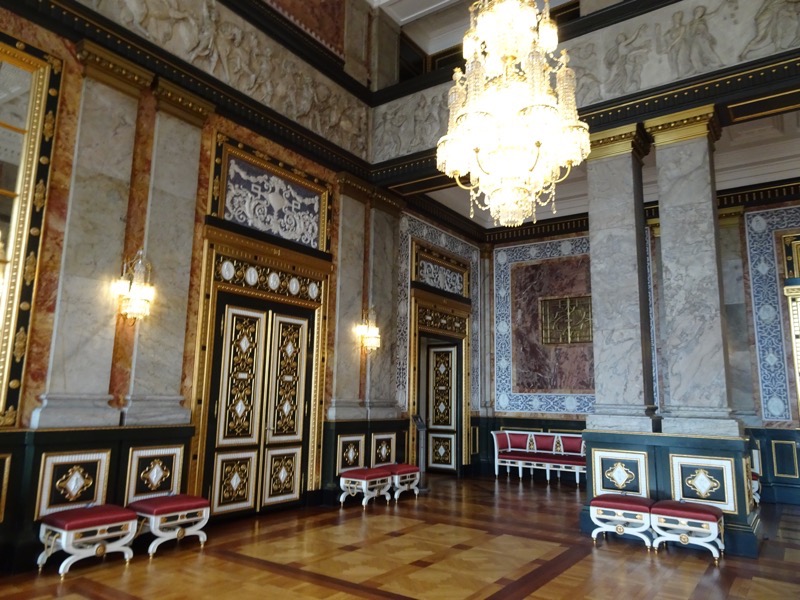
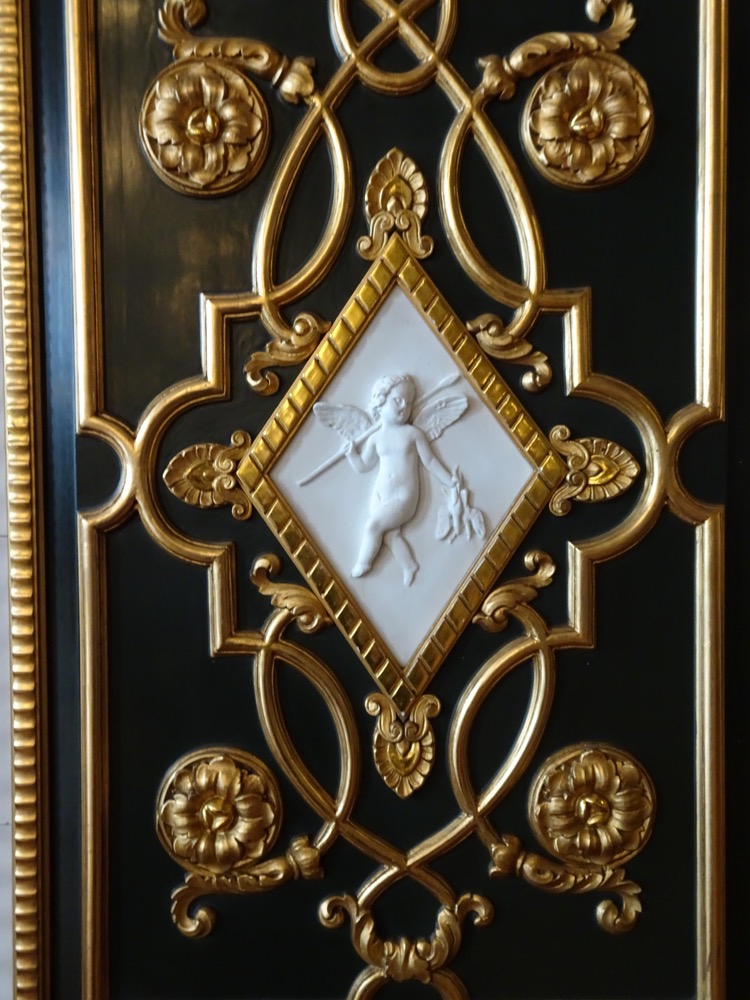 The Flora Danica Cabinet containing all the royal flatware.
The Flora Danica Cabinet containing all the royal flatware.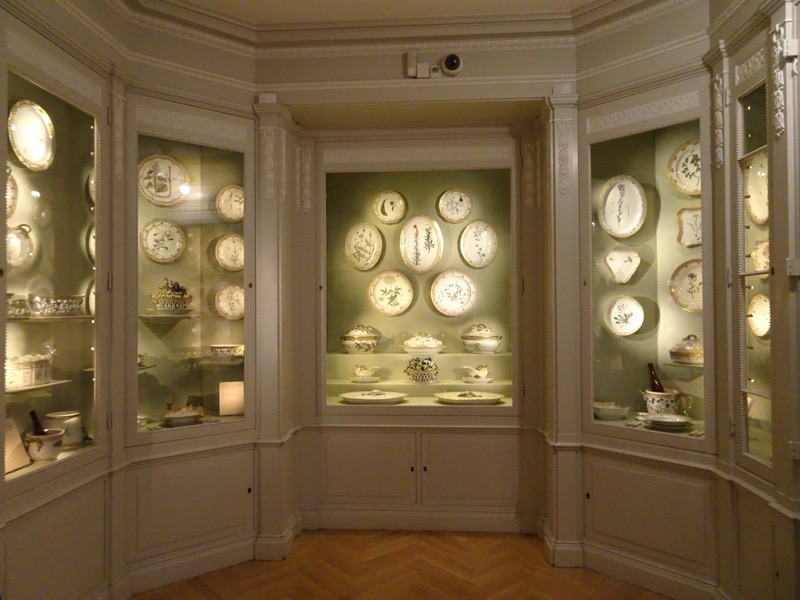
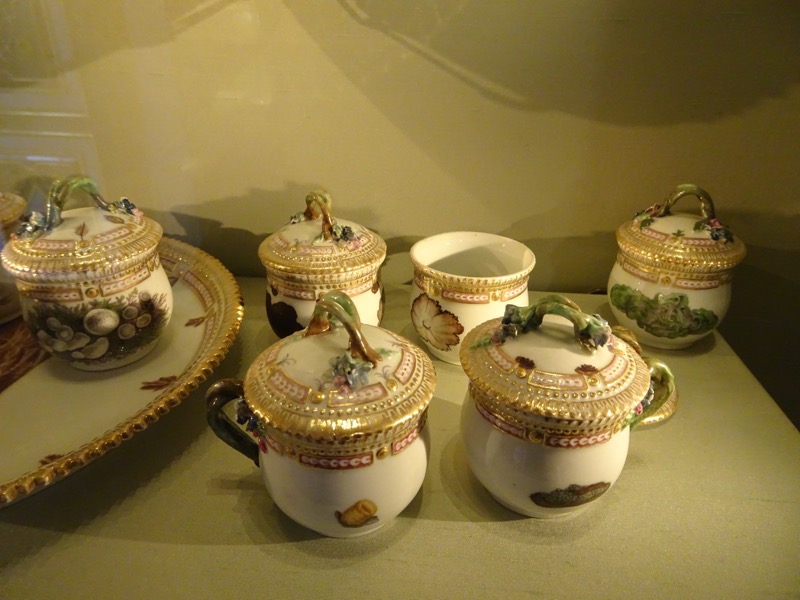 The Princess Chamber.
The Princess Chamber.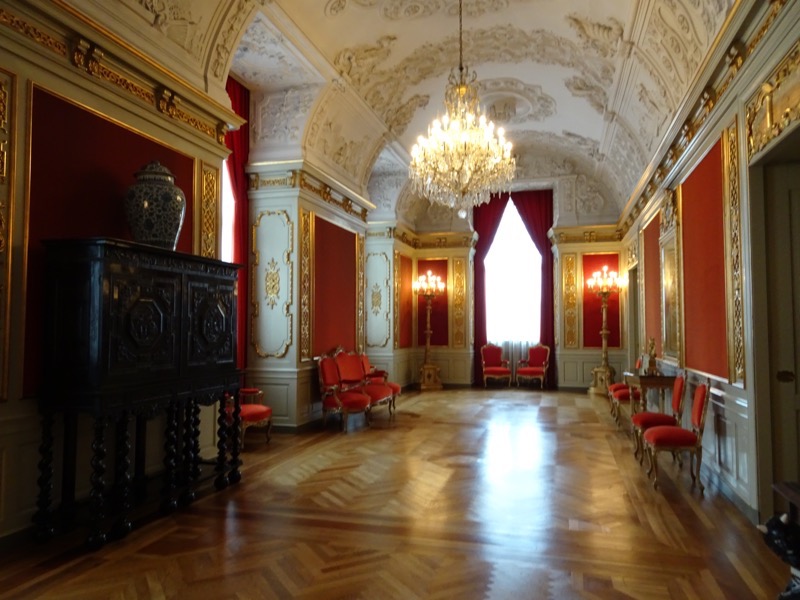
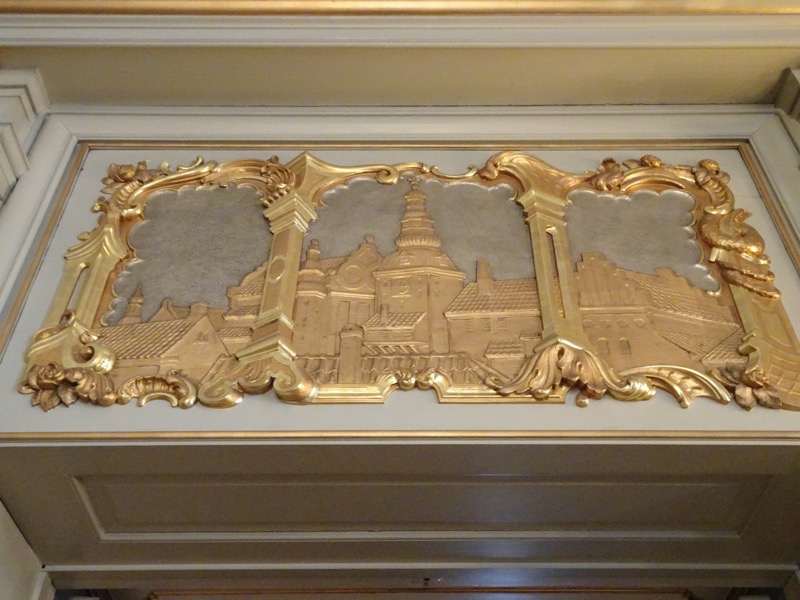 The Queen’s Library – never been jealous of a Queen before, but I would LOVE a library like this!
The Queen’s Library – never been jealous of a Queen before, but I would LOVE a library like this! 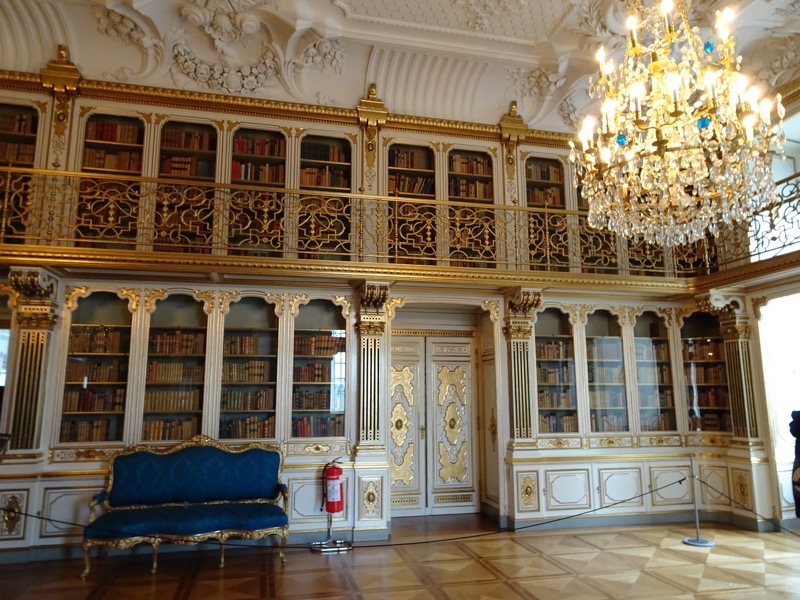 Gorgeous, and so much space for books!
Gorgeous, and so much space for books!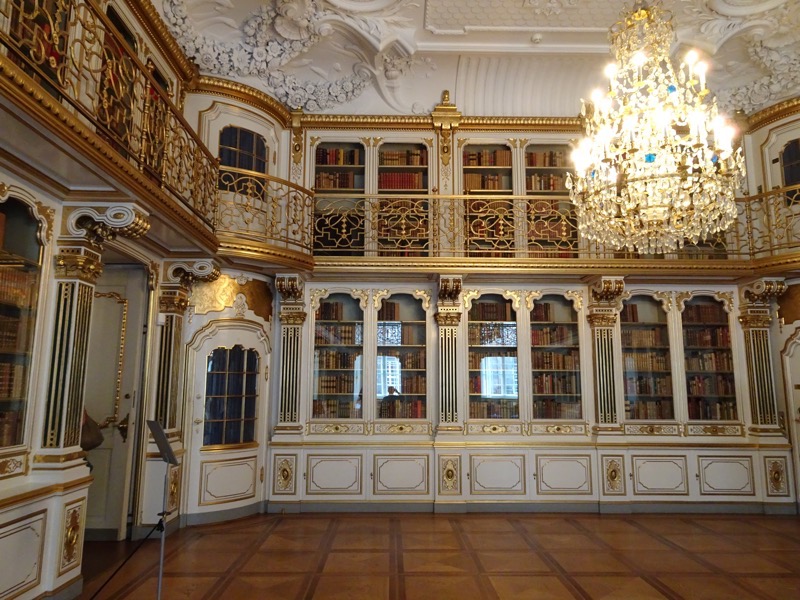 The Abilgaard Room.
The Abilgaard Room.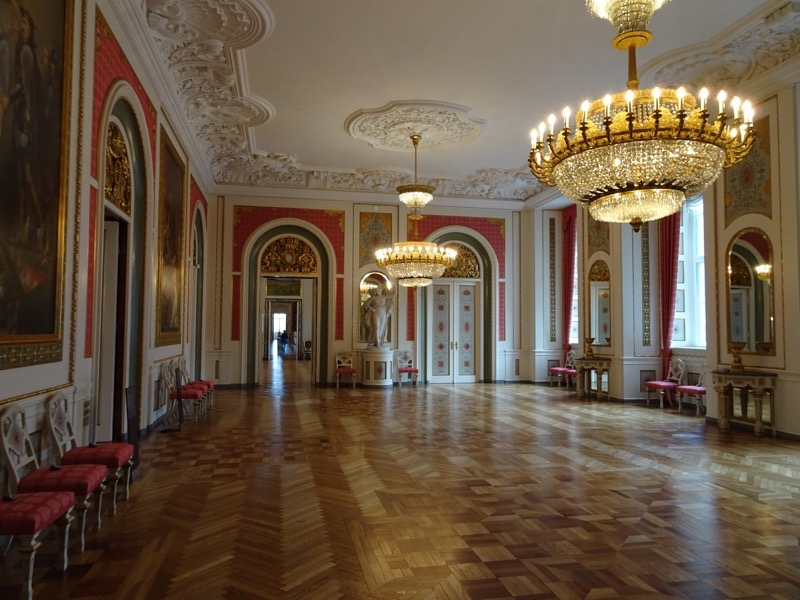 The Dining Hall, which has a beautfiul table that can comfortably accommodate fifty guests.
The Dining Hall, which has a beautfiul table that can comfortably accommodate fifty guests.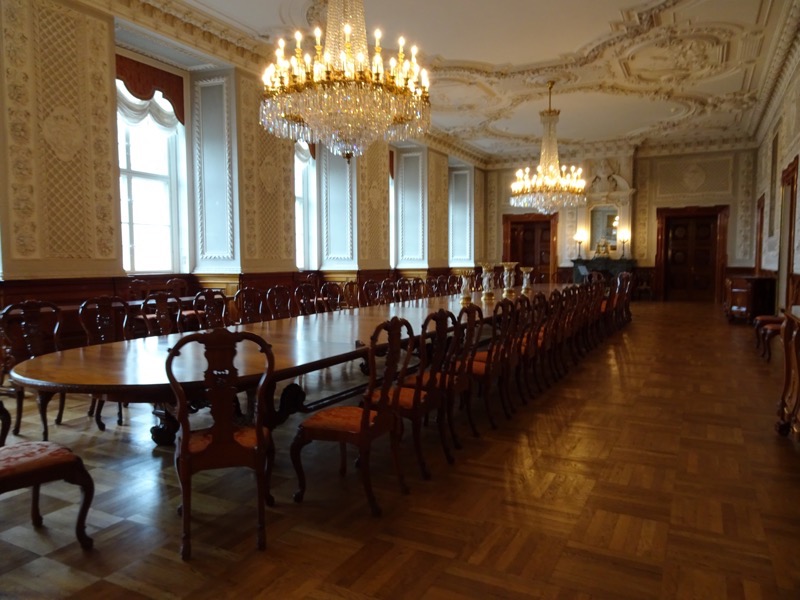
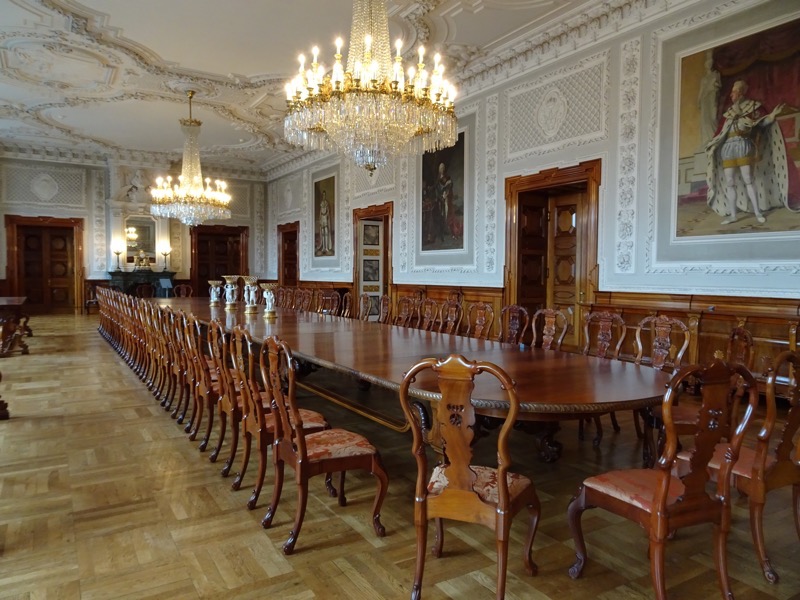 The Green Room (I do not know why so many of these palaces all have a ‘Green Room’ a ‘Red Room’ a ‘Blue Room’ etc, but it seems to be de rigeur for European castles.
The Green Room (I do not know why so many of these palaces all have a ‘Green Room’ a ‘Red Room’ a ‘Blue Room’ etc, but it seems to be de rigeur for European castles. 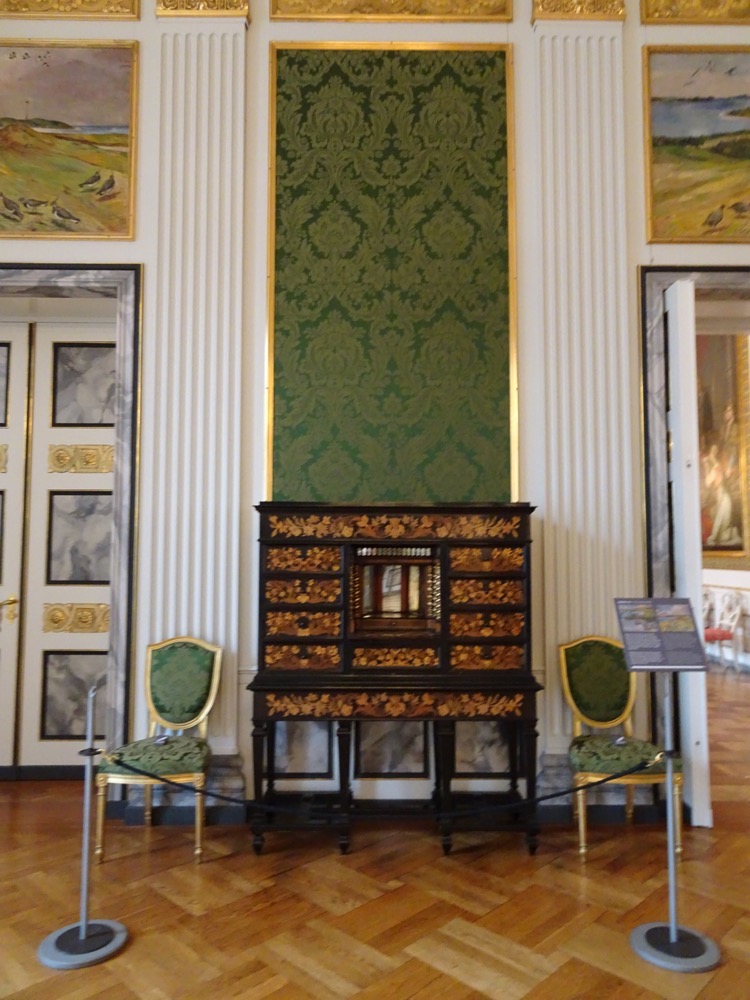
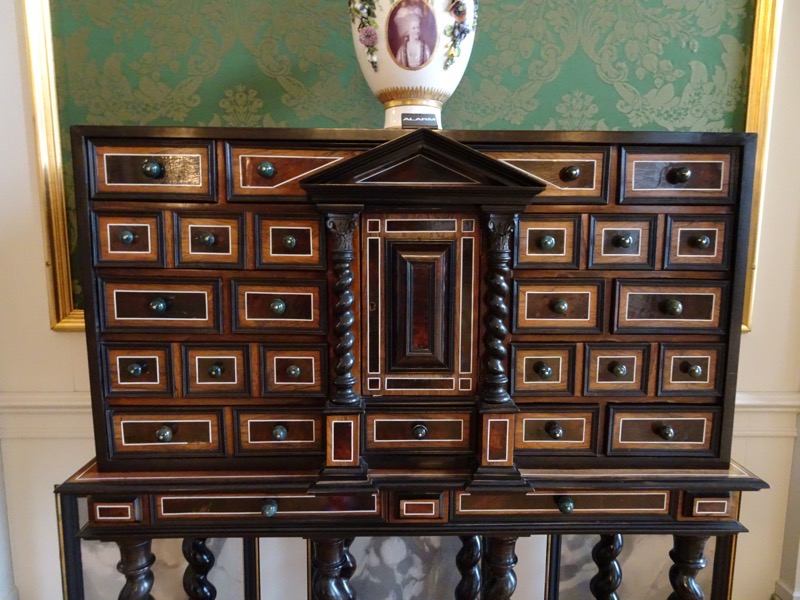 The Swedish Gallery.
The Swedish Gallery.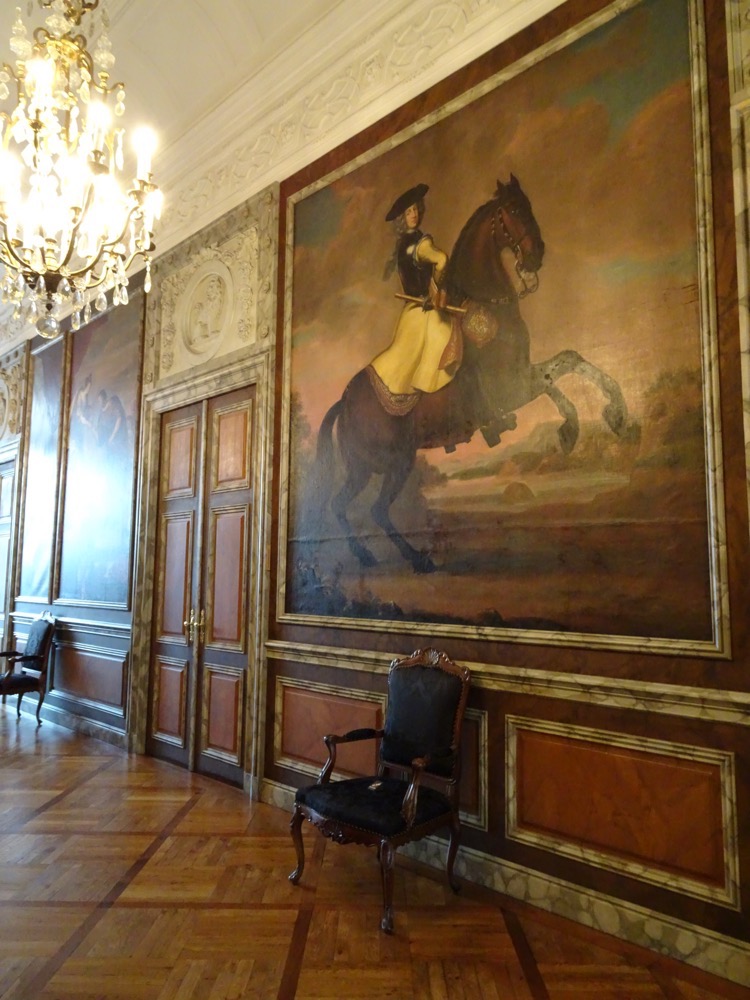 The Great Gallery – whereupon we were greeted by a Great Surprise.
The Great Gallery – whereupon we were greeted by a Great Surprise.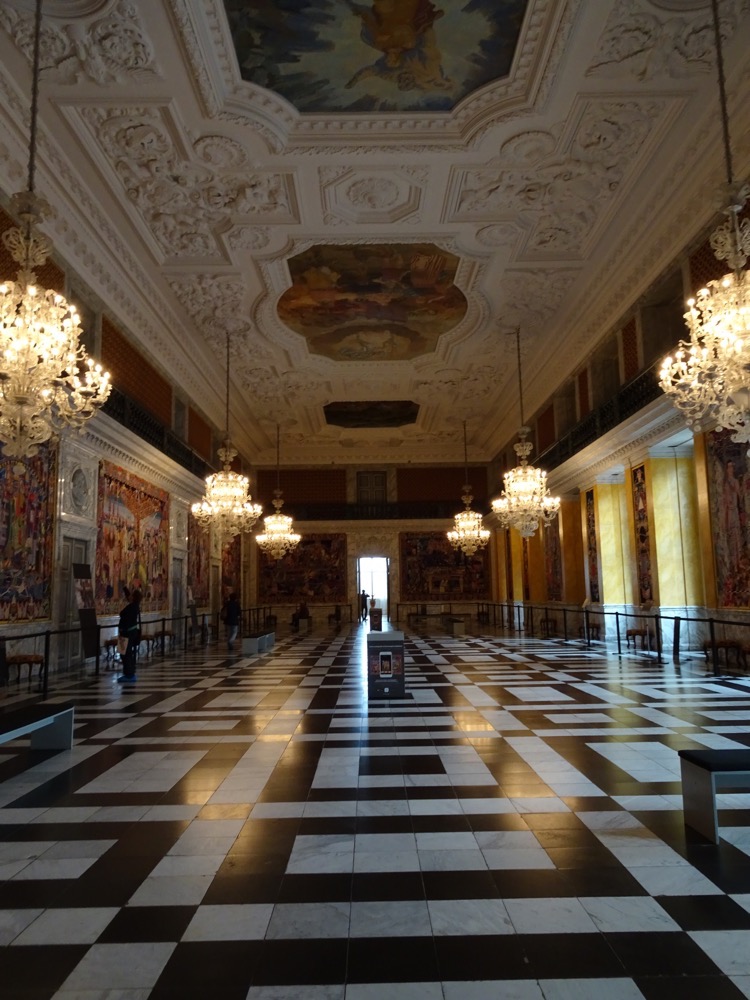 Tapestries. Oh dear God, SEVENTEEN of them. The Great Hall is decorated with ’17 richly coloured, modern tapestries’. The tapestries were a gift from Danish companies, organisations and foundations to mark Queen Margarethe II’s 50th birthday on 16th of April, 2000.
Tapestries. Oh dear God, SEVENTEEN of them. The Great Hall is decorated with ’17 richly coloured, modern tapestries’. The tapestries were a gift from Danish companies, organisations and foundations to mark Queen Margarethe II’s 50th birthday on 16th of April, 2000.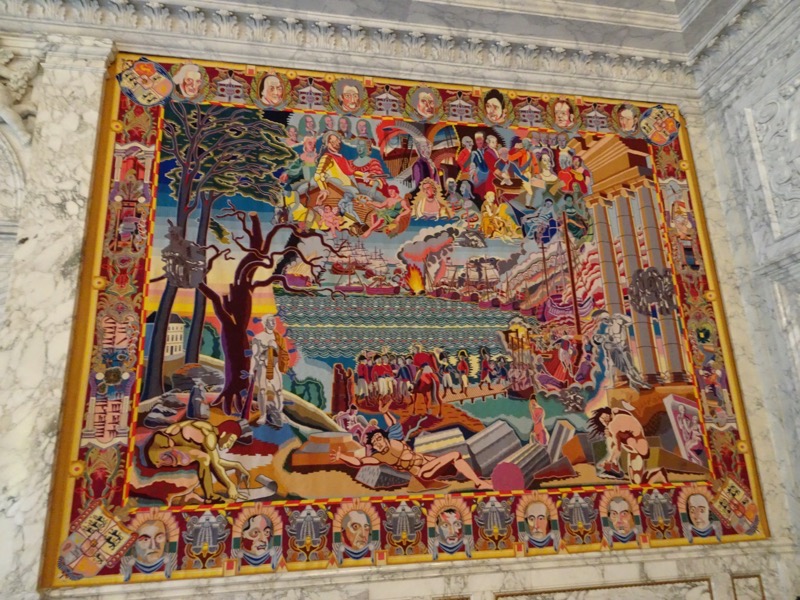
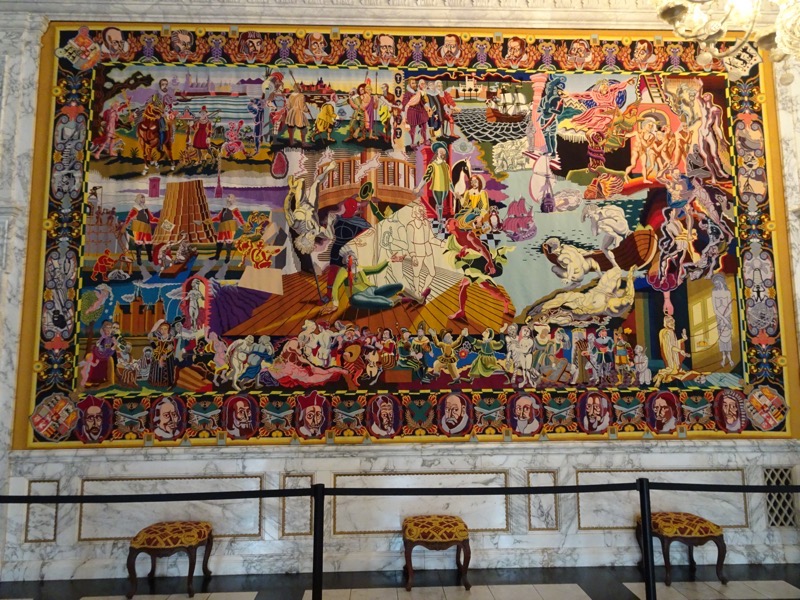
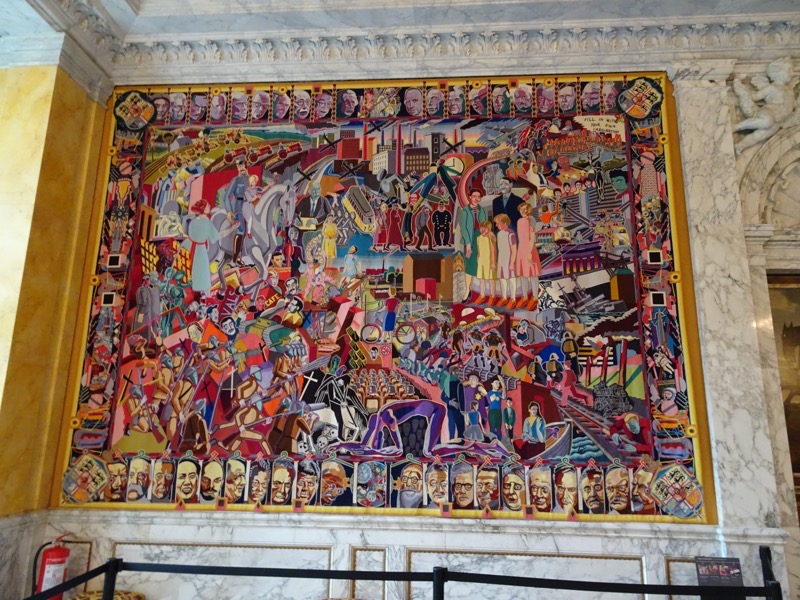
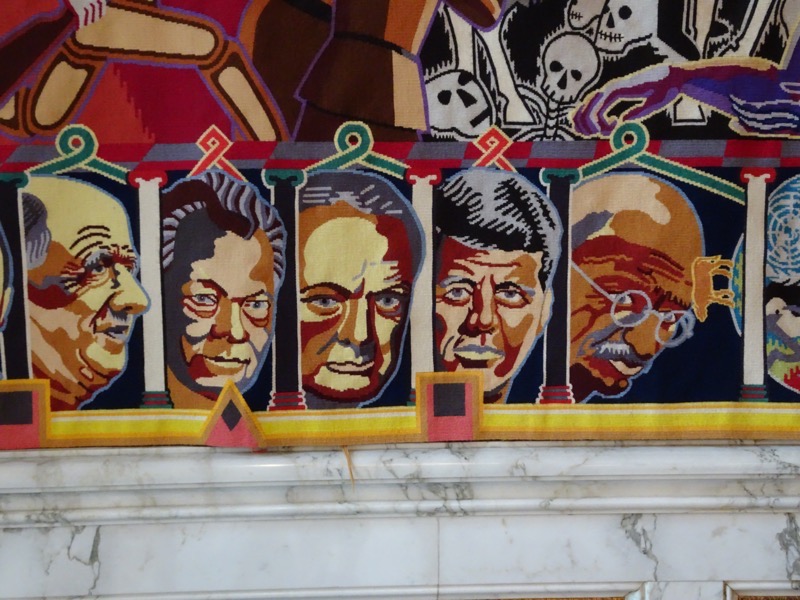 It was at this point that I stopped being jealous of Queen Margrethe’s fabulous library… if the cost of owning that fabulous library is also having to receive things, like these tapestries, with some form of grace and decorum, well, there goes my pretensions towards Queenliness! I think if someone presented me with something that had obviously taken so much work but was so positively hideous, I could not possibly have received it with any other expression, other than incredulity.
It was at this point that I stopped being jealous of Queen Margrethe’s fabulous library… if the cost of owning that fabulous library is also having to receive things, like these tapestries, with some form of grace and decorum, well, there goes my pretensions towards Queenliness! I think if someone presented me with something that had obviously taken so much work but was so positively hideous, I could not possibly have received it with any other expression, other than incredulity.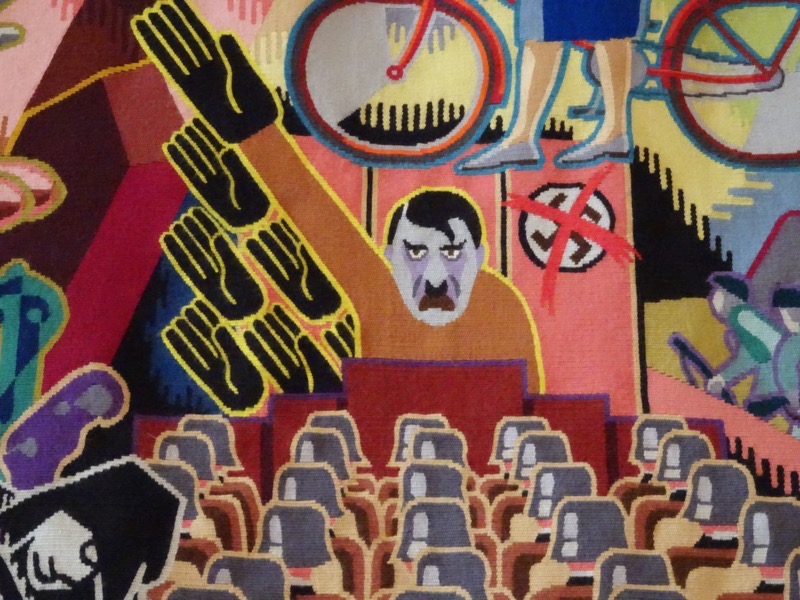 BUTT FUCKING UGLY! It makes me sad to think so much time, energy and work went into making something like this. 🙁
BUTT FUCKING UGLY! It makes me sad to think so much time, energy and work went into making something like this. 🙁 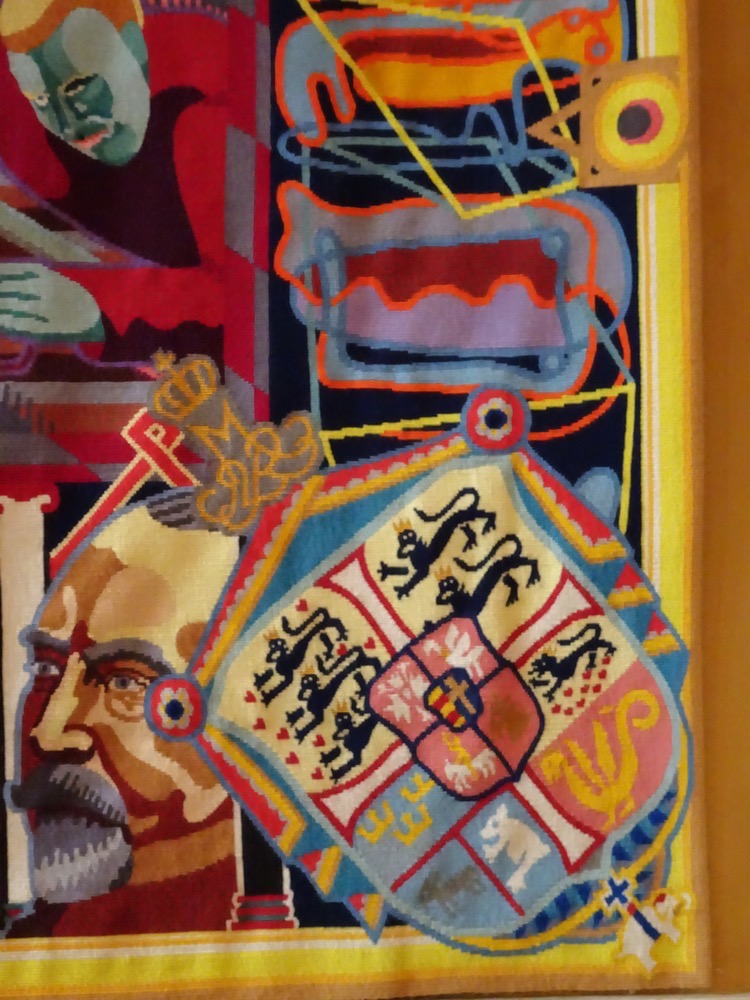
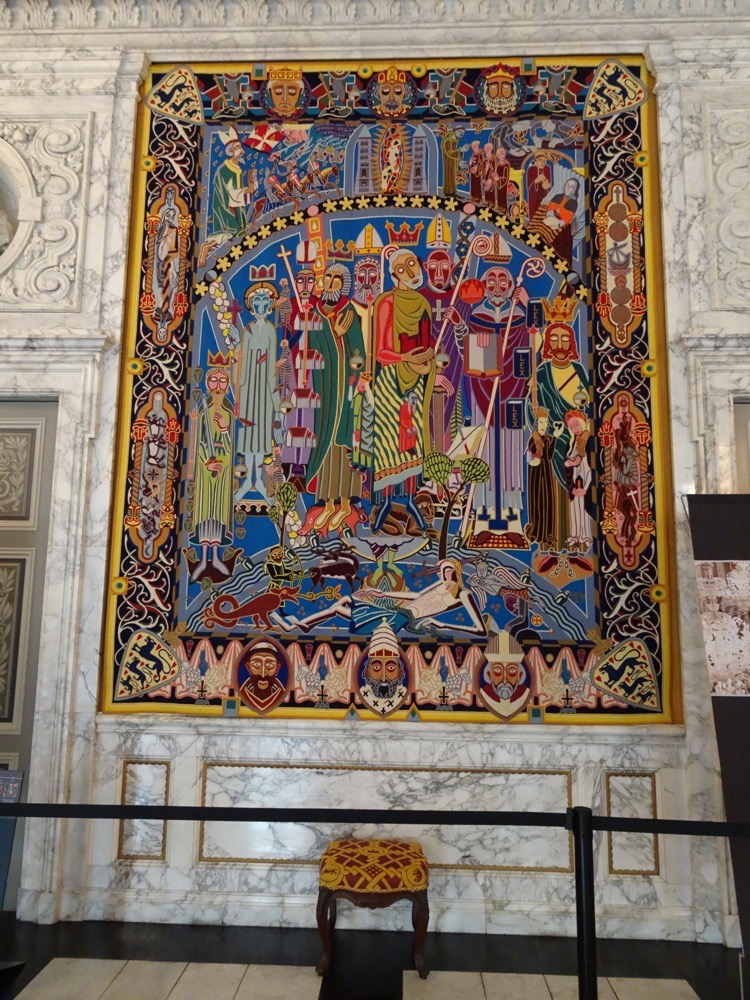
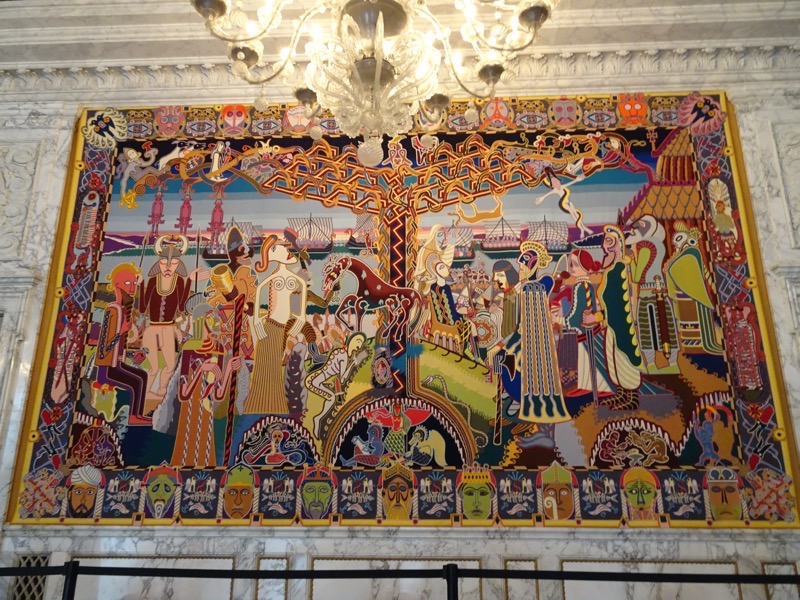
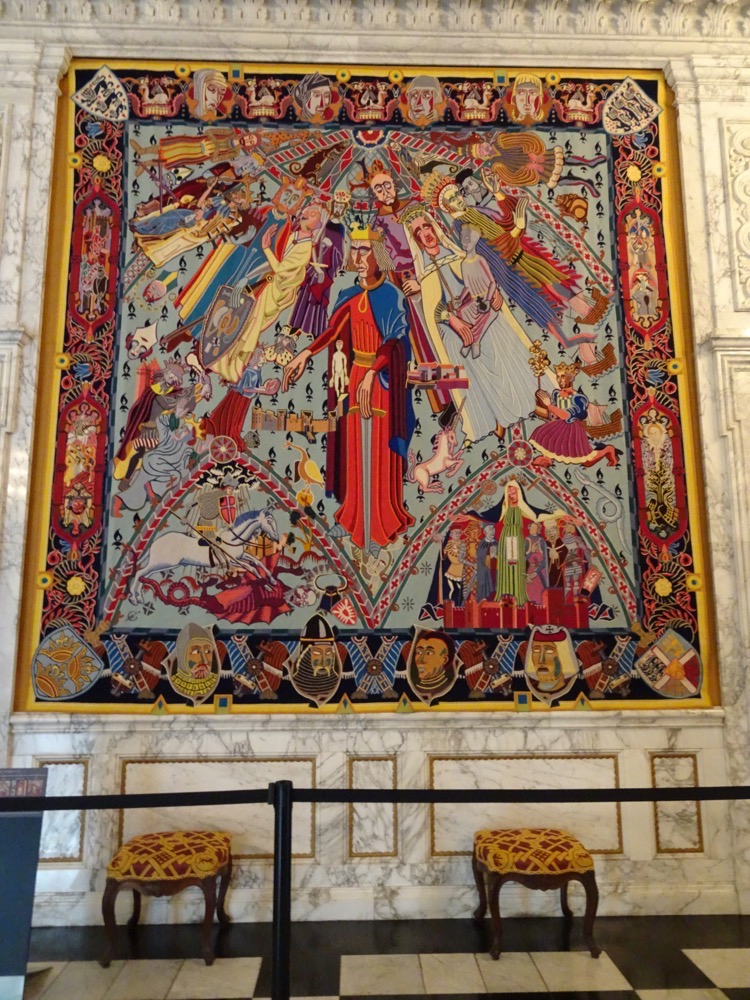
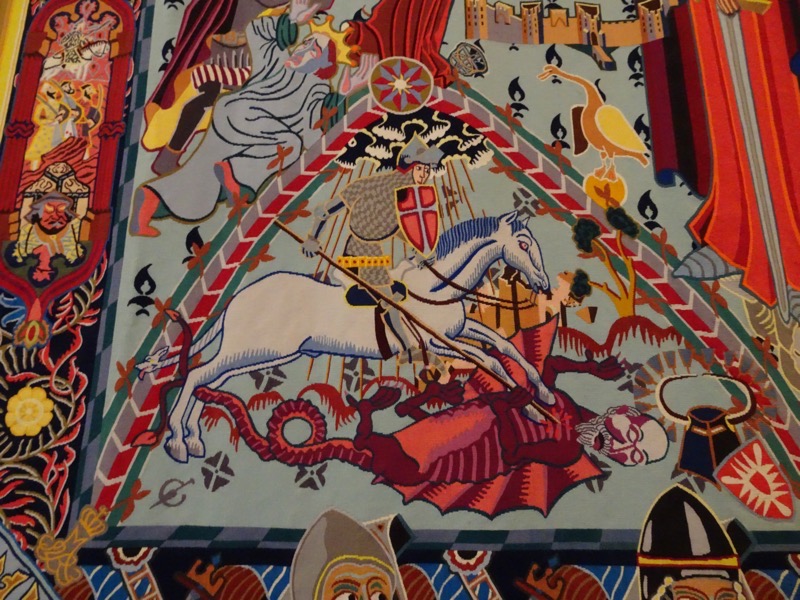 Seriously. I’m sure someone likes them, but me and my fine arts degree, and my love of historical textiles are just rocking and crying quietly in a corner somewhere.
Seriously. I’m sure someone likes them, but me and my fine arts degree, and my love of historical textiles are just rocking and crying quietly in a corner somewhere.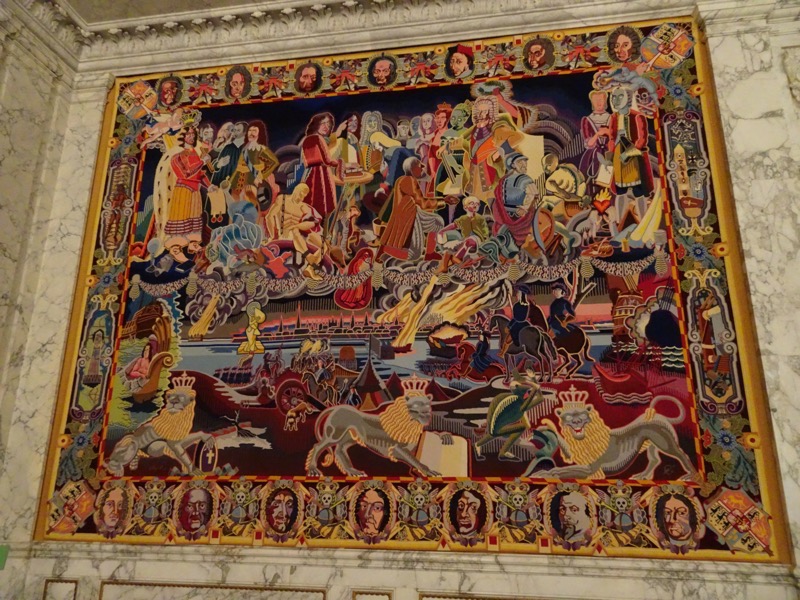
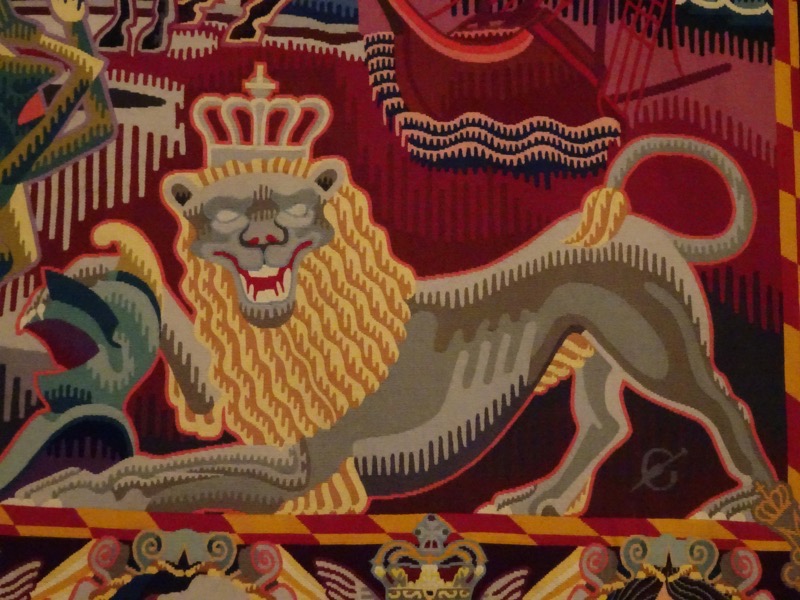
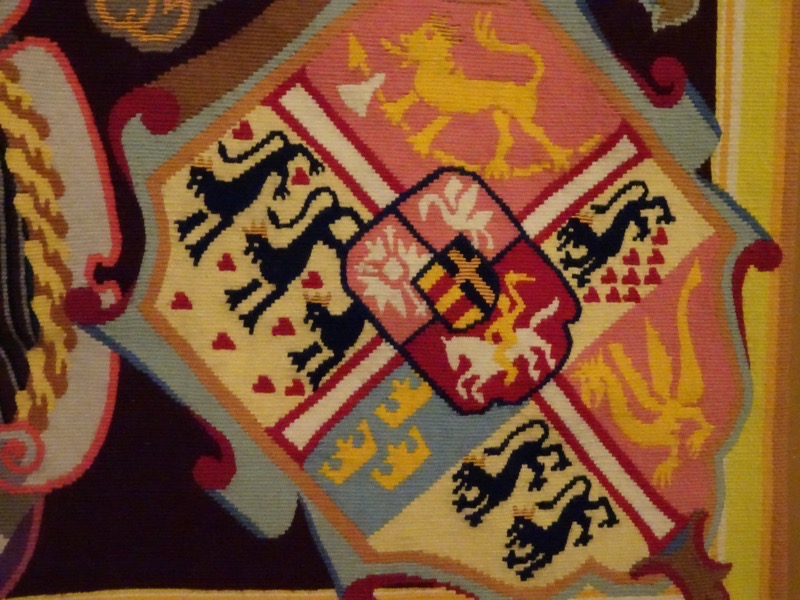 FFS… who ever thought it would be ‘nice’ to represent 1100 years of Danish history in cartoonish tapestry to the Queen of Denmark on the occasion of her 50th birthday, needs their bloody head read.
FFS… who ever thought it would be ‘nice’ to represent 1100 years of Danish history in cartoonish tapestry to the Queen of Denmark on the occasion of her 50th birthday, needs their bloody head read. 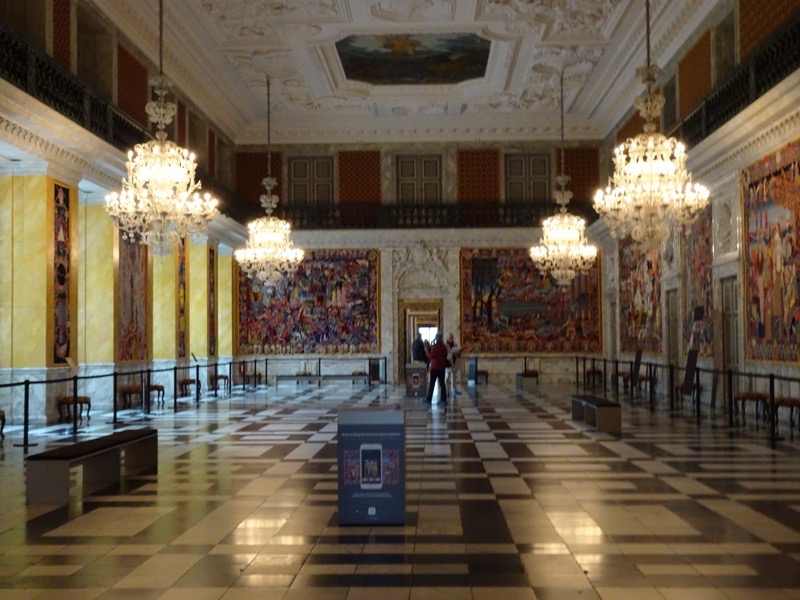 Alright, snobbery begone! Moving right along we found ourselves in the Velvet Room which has covered in lovely cut out brocade velvet wallpaper.
Alright, snobbery begone! Moving right along we found ourselves in the Velvet Room which has covered in lovely cut out brocade velvet wallpaper. 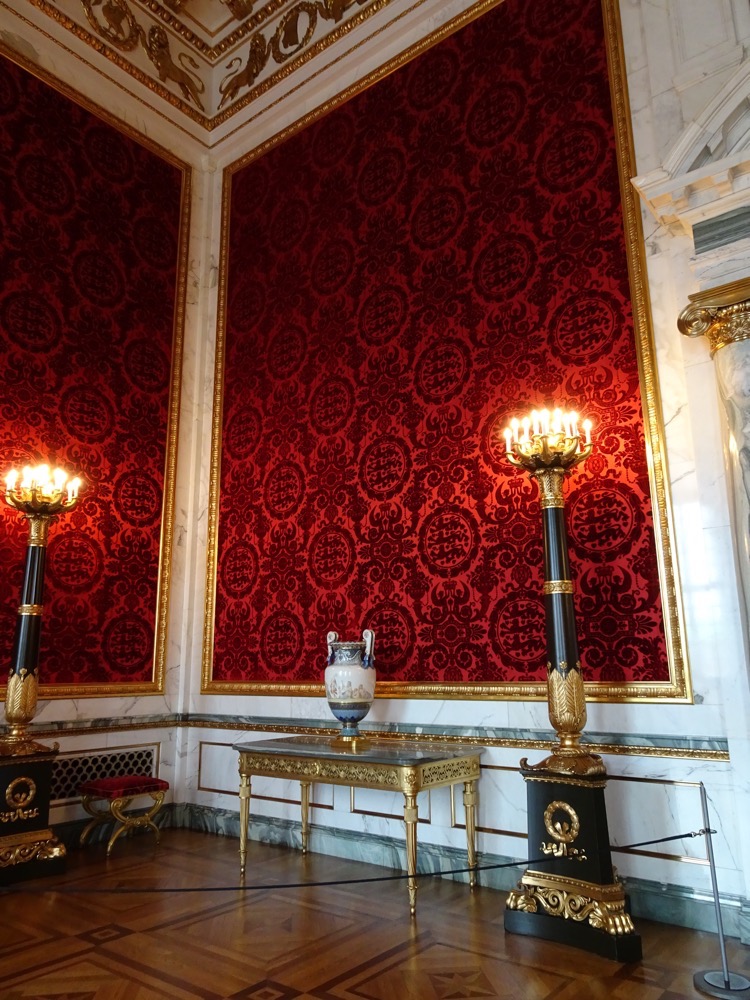
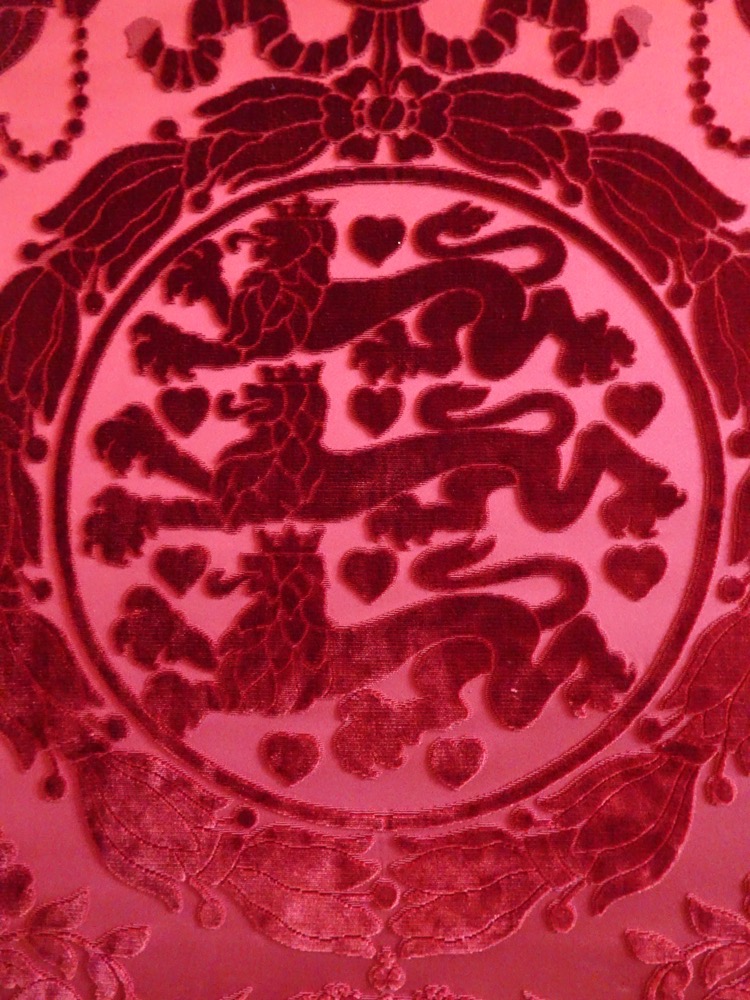
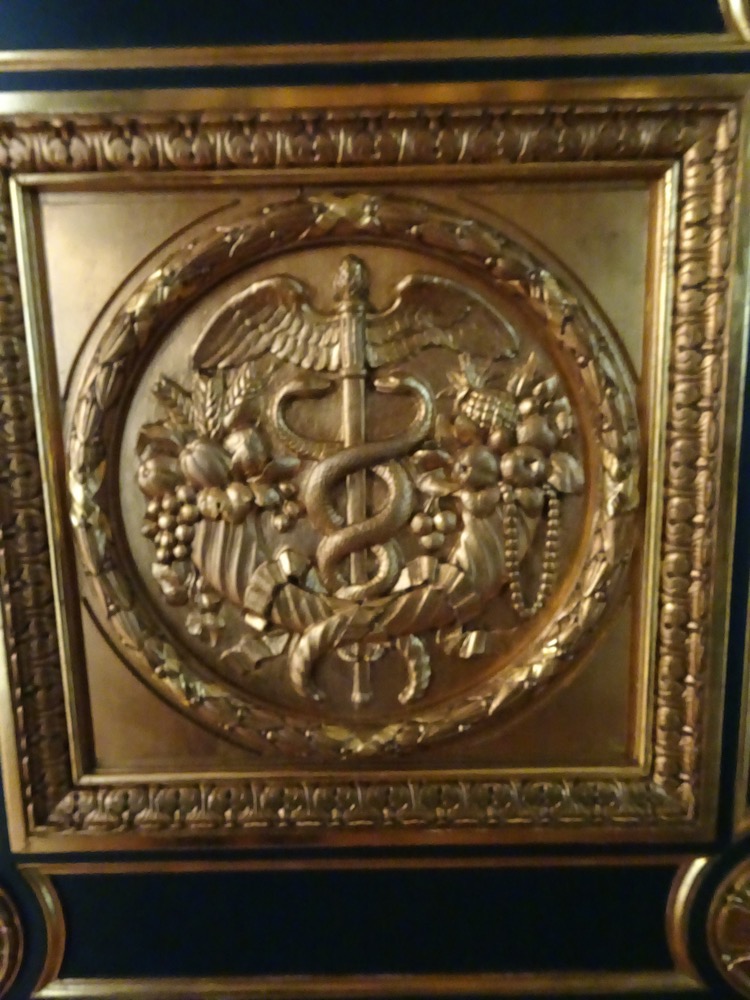 Which leads into King Fredrik VI’s Room that contained some family tree information for the Danish Royal family, and where Mr K learned that all the European monarchy have heavily intermarried through the efforts of the Empress Maria Theresa and the Emperor Franz Joseph in a time honoured tradition that was then carried on by Queen Victoria of England, who also married all her offspring to other European aristocracies.
Which leads into King Fredrik VI’s Room that contained some family tree information for the Danish Royal family, and where Mr K learned that all the European monarchy have heavily intermarried through the efforts of the Empress Maria Theresa and the Emperor Franz Joseph in a time honoured tradition that was then carried on by Queen Victoria of England, who also married all her offspring to other European aristocracies. 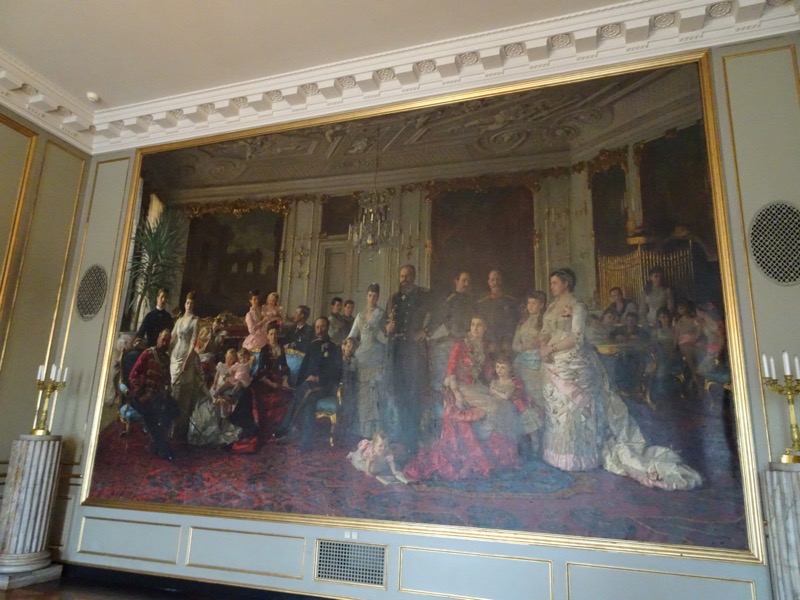 Next, King Christian IX’s Room – gorgeous and resplendent in blue, and with very modern carpets.
Next, King Christian IX’s Room – gorgeous and resplendent in blue, and with very modern carpets.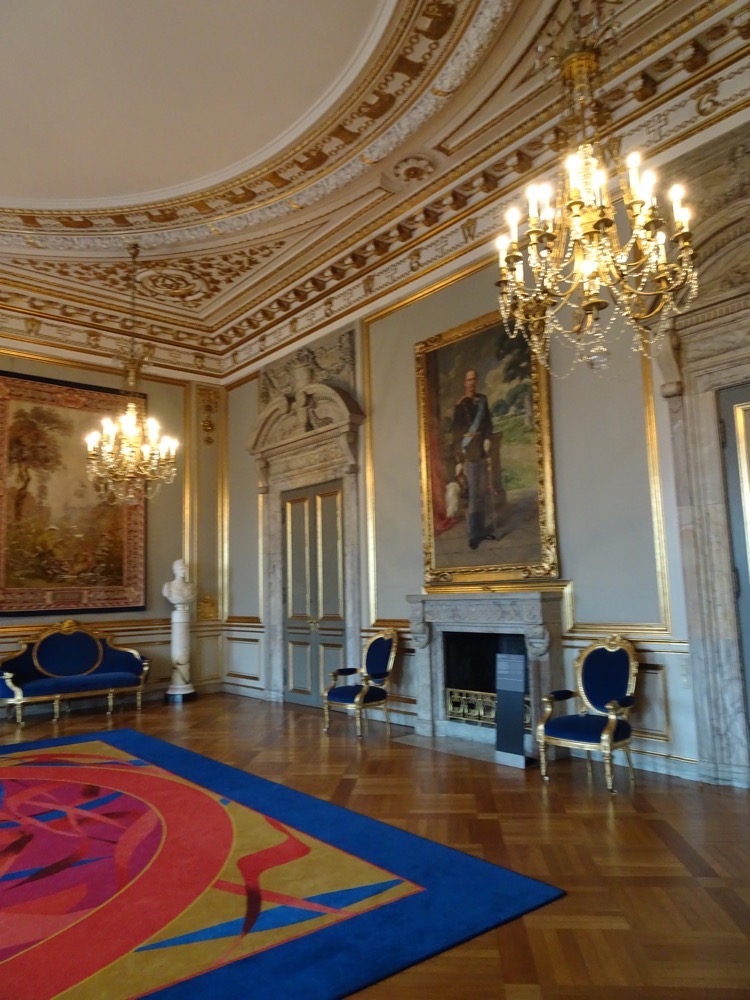
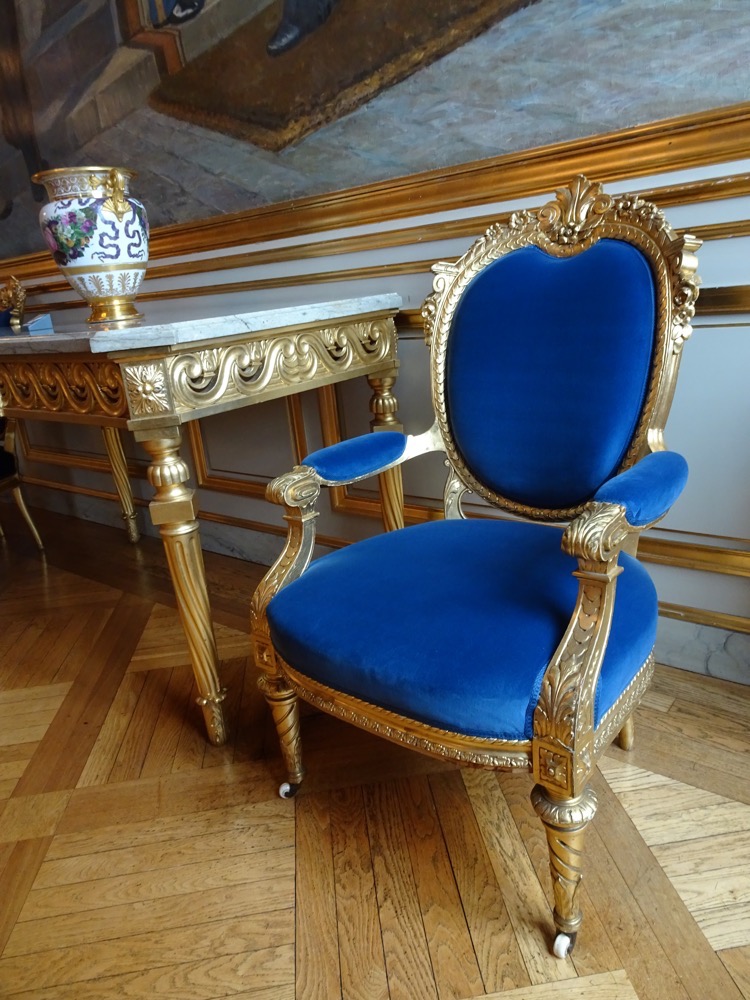
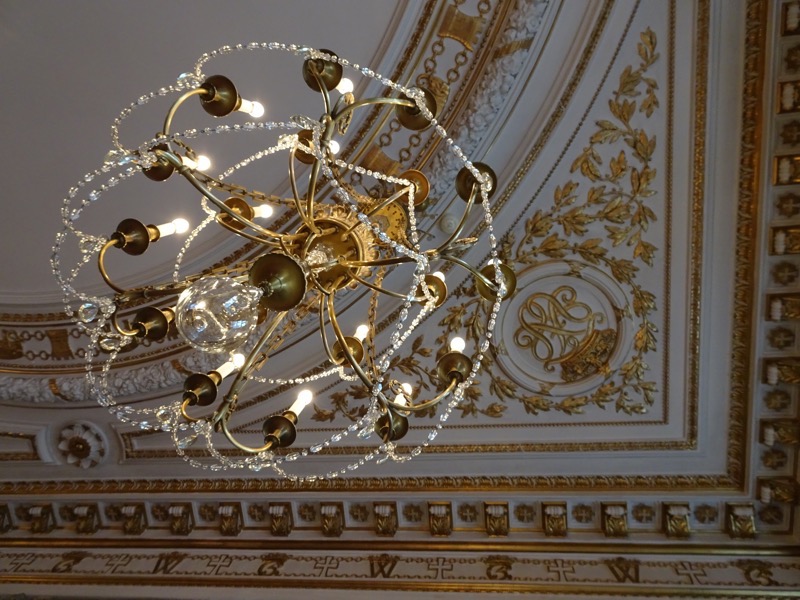
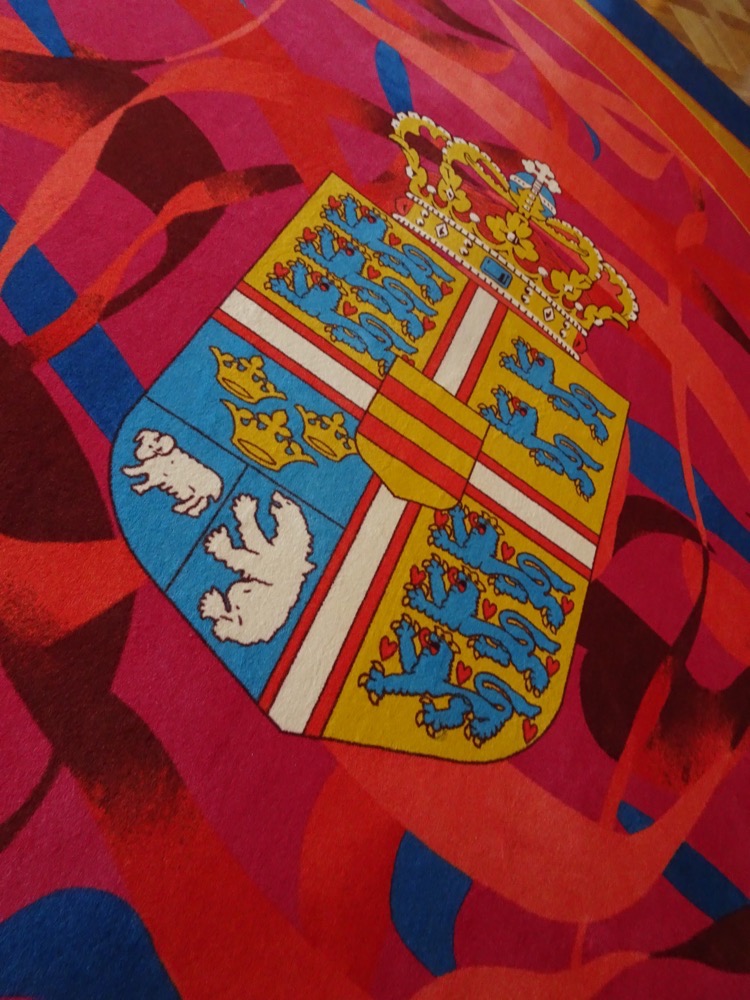 Through which, you gain entrance to the Throne Room, which is very fancy indeed (and no ugly tapestries in sight!).
Through which, you gain entrance to the Throne Room, which is very fancy indeed (and no ugly tapestries in sight!).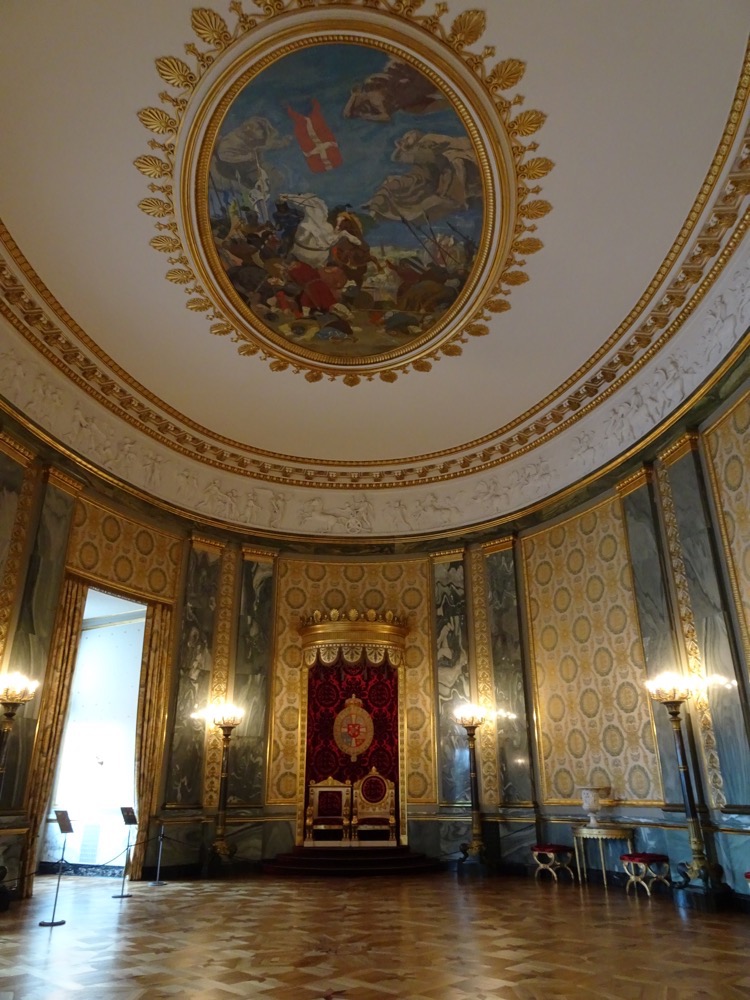
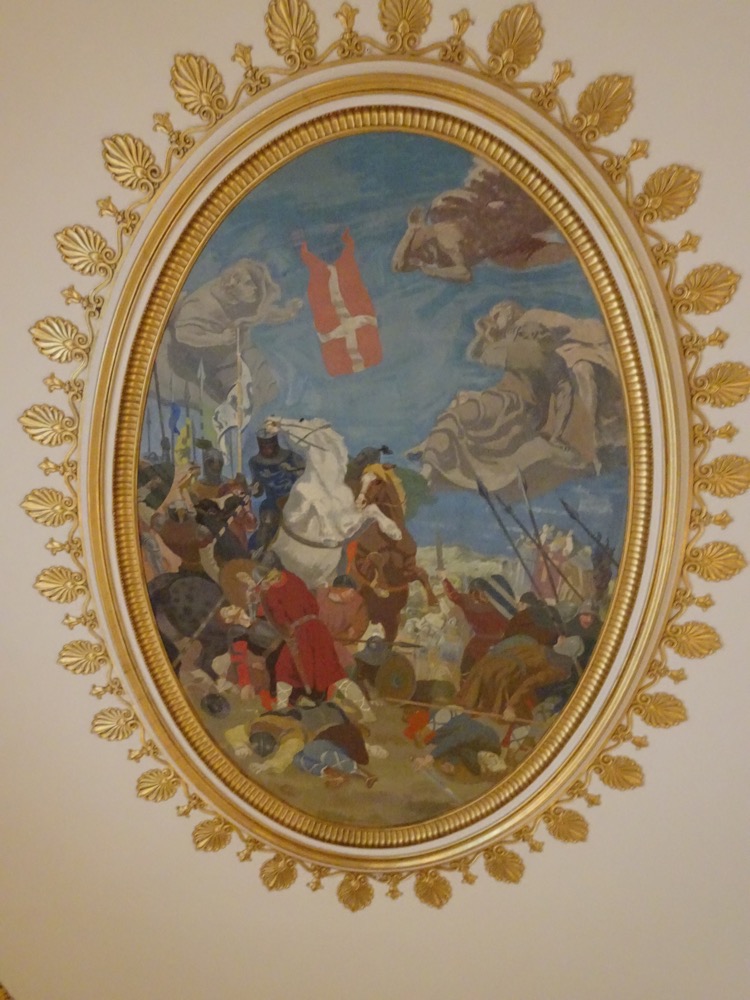
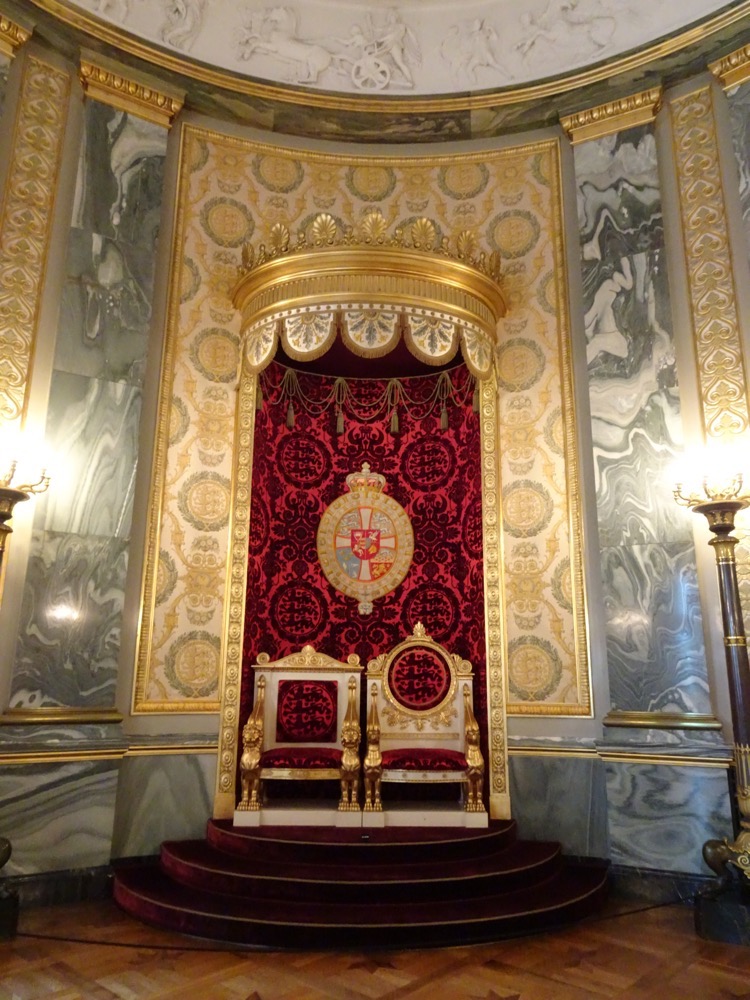
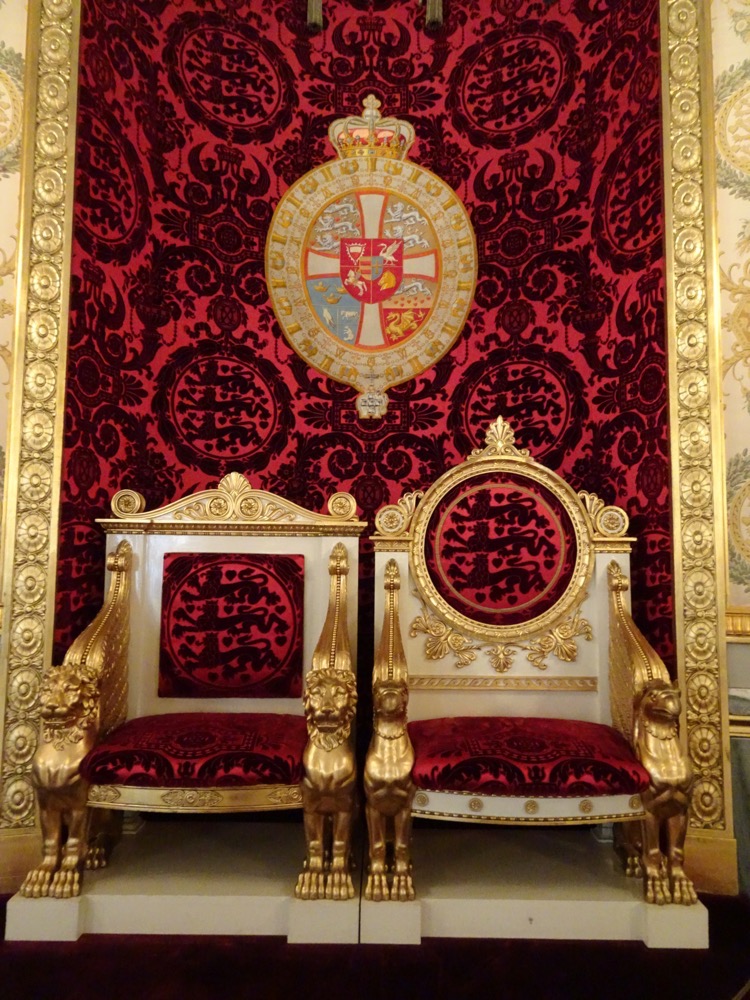
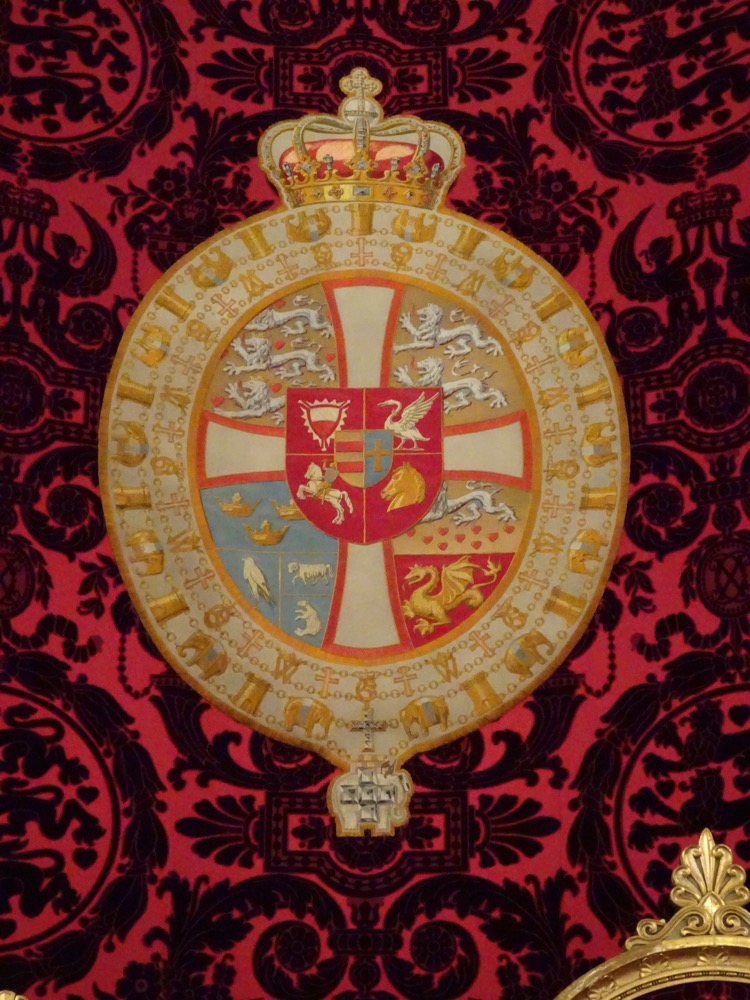 Around the corner from the Throne Room is The Tower Room. I walked in here and was met with a beautiful room containing another series of tapestries that were this time created in the 1920s. Again, a swing and a miss here – they look like they are trying to be 15th-16th century tapestries of the Gobelins or Flemish workshops or something, but they look just… nope.
Around the corner from the Throne Room is The Tower Room. I walked in here and was met with a beautiful room containing another series of tapestries that were this time created in the 1920s. Again, a swing and a miss here – they look like they are trying to be 15th-16th century tapestries of the Gobelins or Flemish workshops or something, but they look just… nope.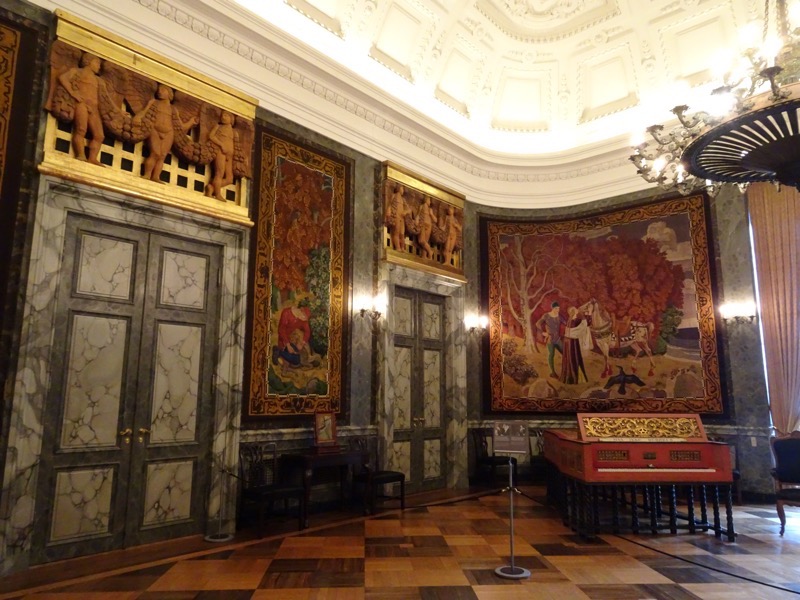
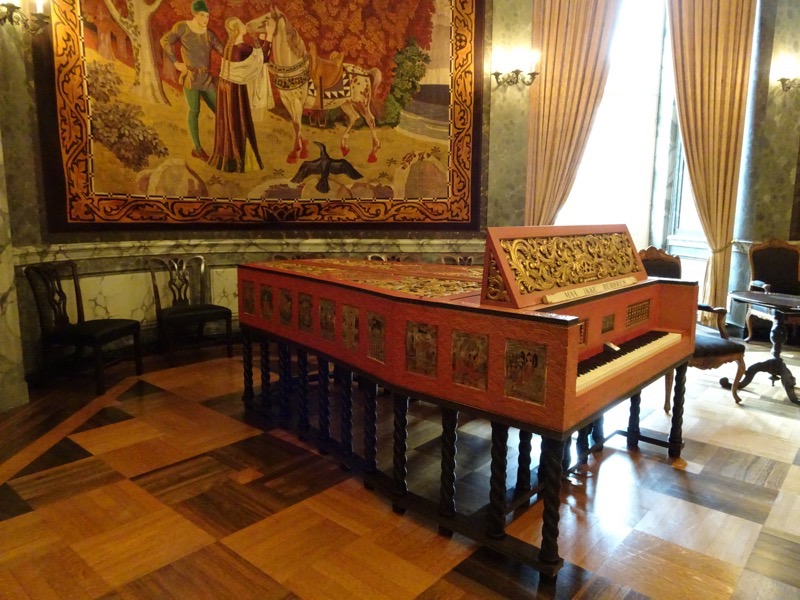
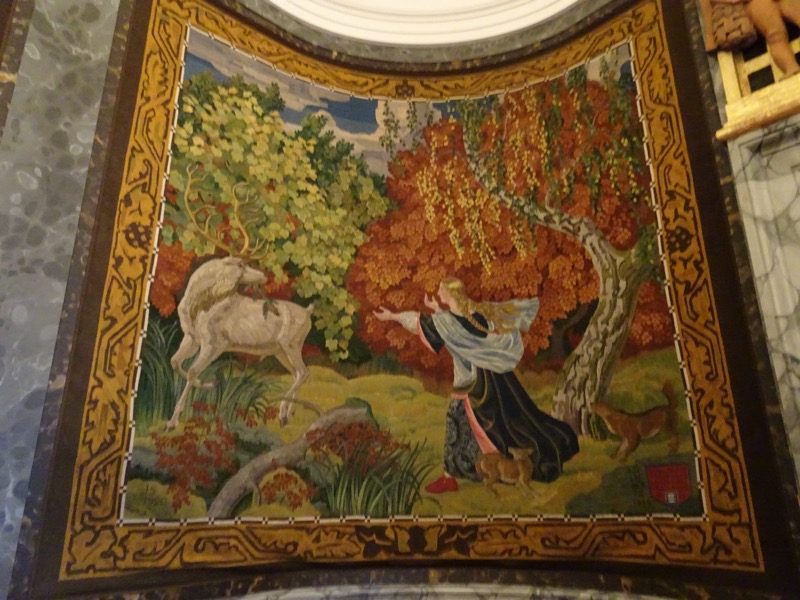 So much work!
So much work!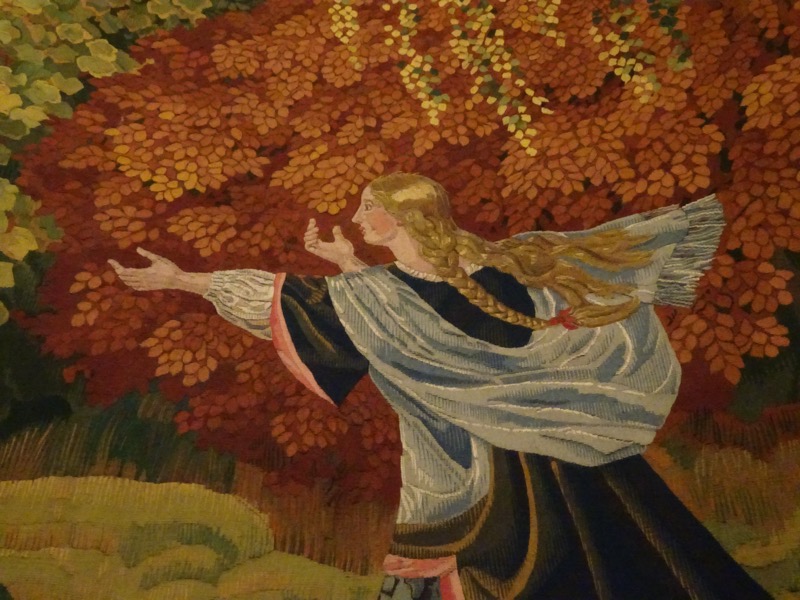
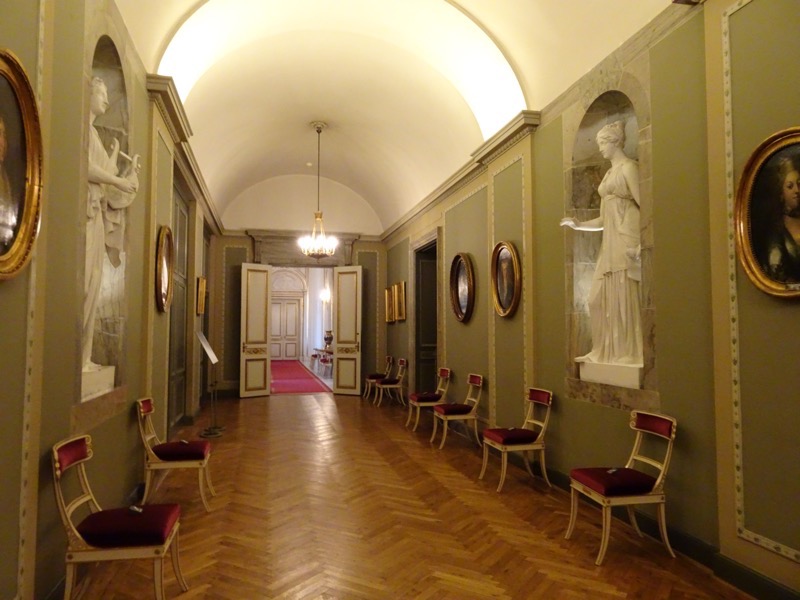 The King’s Staircase at the opposite end of the wing…
The King’s Staircase at the opposite end of the wing…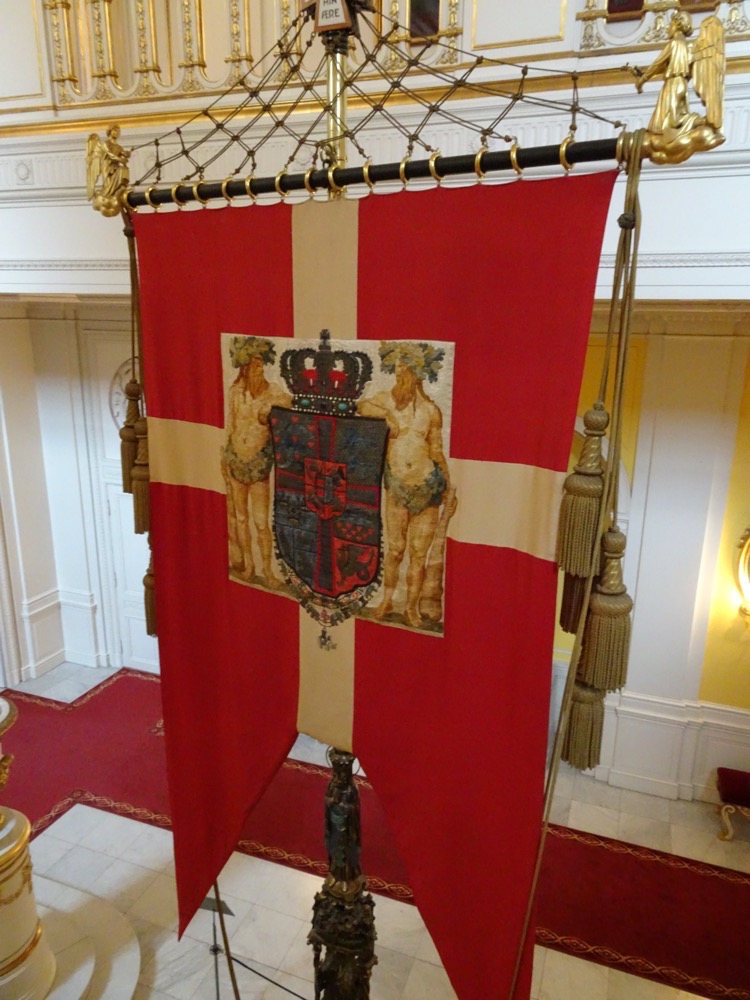
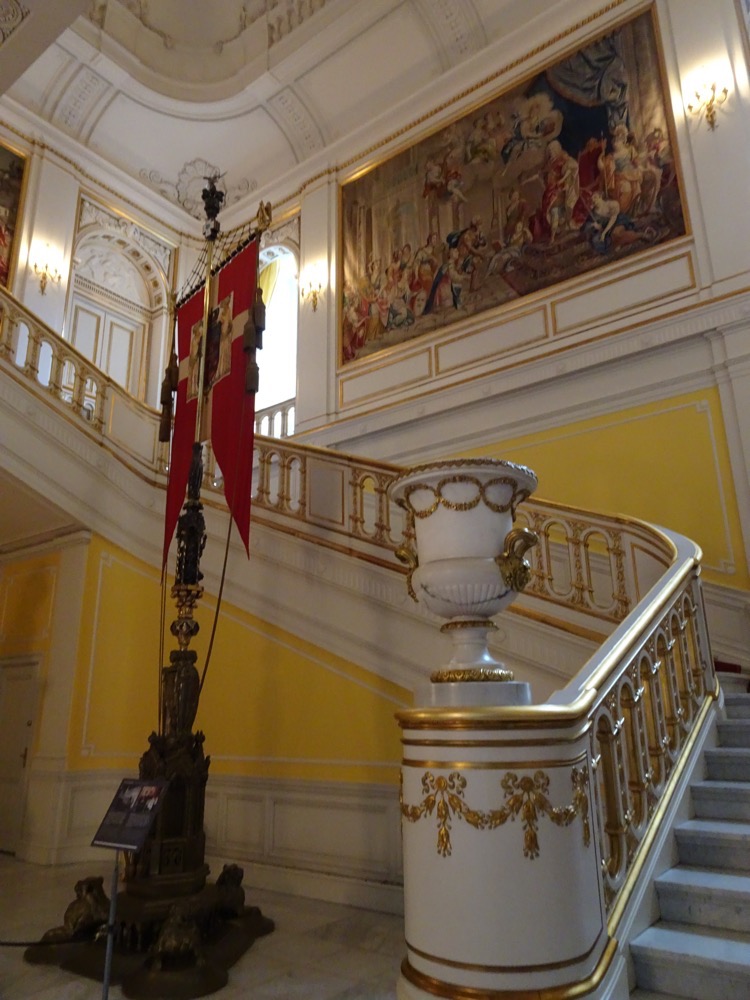 The next area we decided to explore was the Royal Stables. On the way there, Mr K says to me, “I can’t wait to see the horses.” My jaded I’ve-seen-so-many-castles-reply was, “There will be carriages and horse stuff, but no actual horses… If there are horses in here, I’ll eat my hat!”
The next area we decided to explore was the Royal Stables. On the way there, Mr K says to me, “I can’t wait to see the horses.” My jaded I’ve-seen-so-many-castles-reply was, “There will be carriages and horse stuff, but no actual horses… If there are horses in here, I’ll eat my hat!”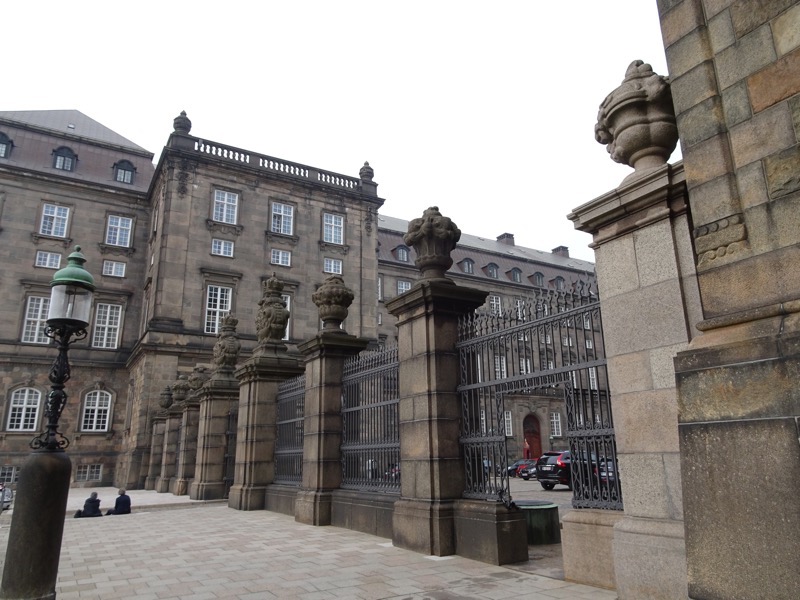 We walked a little further, and I started to think, “Uh oh, I can smell horse shit, there might actually be horses in the Royal Stables! That’ll be a first.” Right at that moment, Mr K asks me what sort of sauce goes nicely with ‘hat’. Cheeky bugger.
We walked a little further, and I started to think, “Uh oh, I can smell horse shit, there might actually be horses in the Royal Stables! That’ll be a first.” Right at that moment, Mr K asks me what sort of sauce goes nicely with ‘hat’. Cheeky bugger.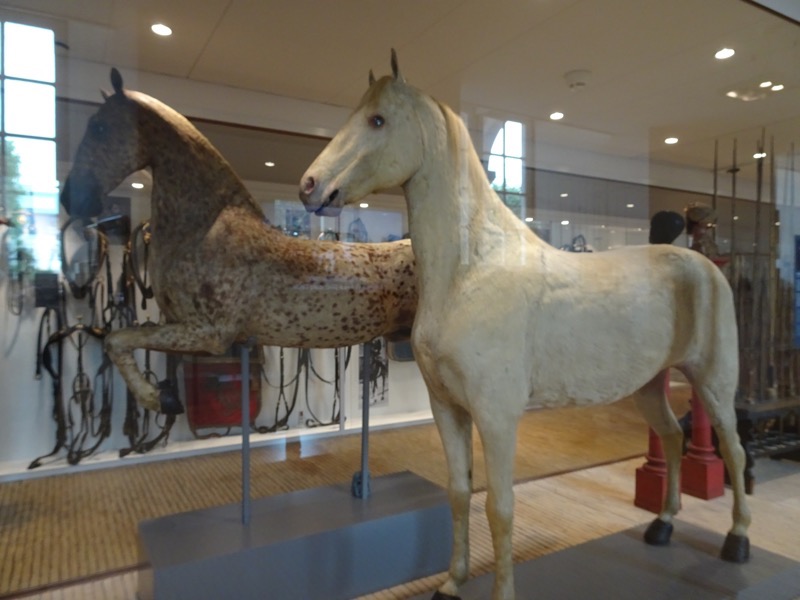 As I expected, lots of horsey stuff, tack, saddles, and royal regalia…
As I expected, lots of horsey stuff, tack, saddles, and royal regalia…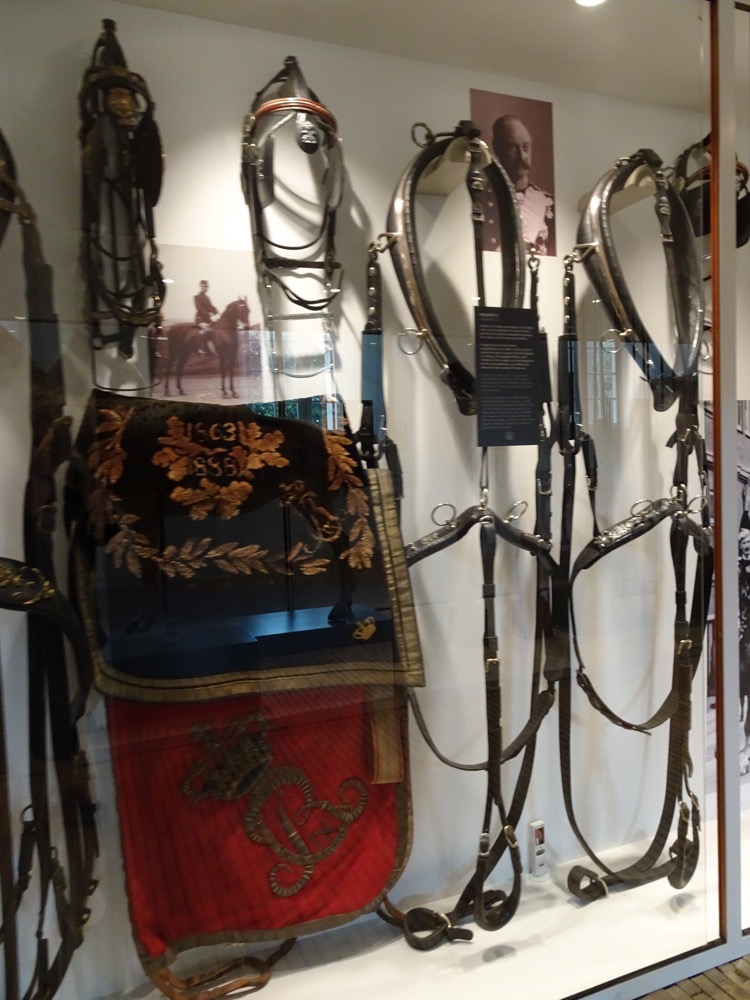
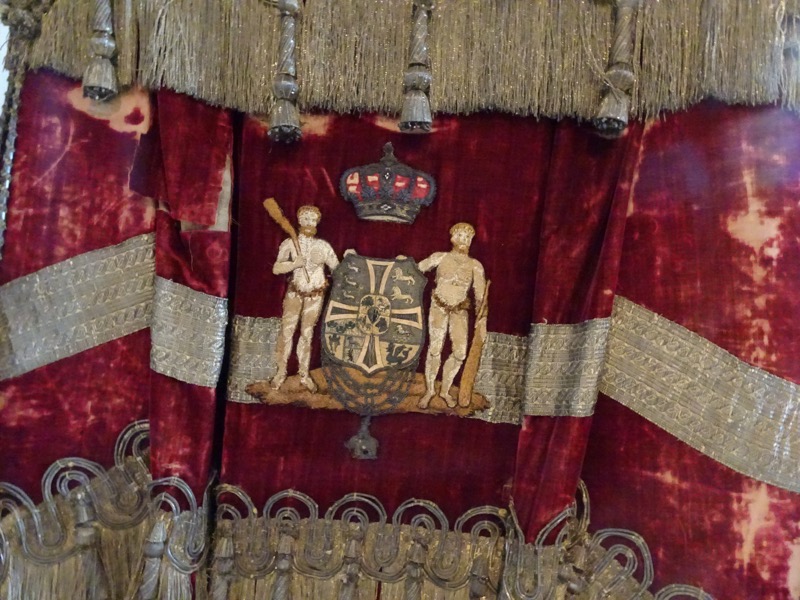
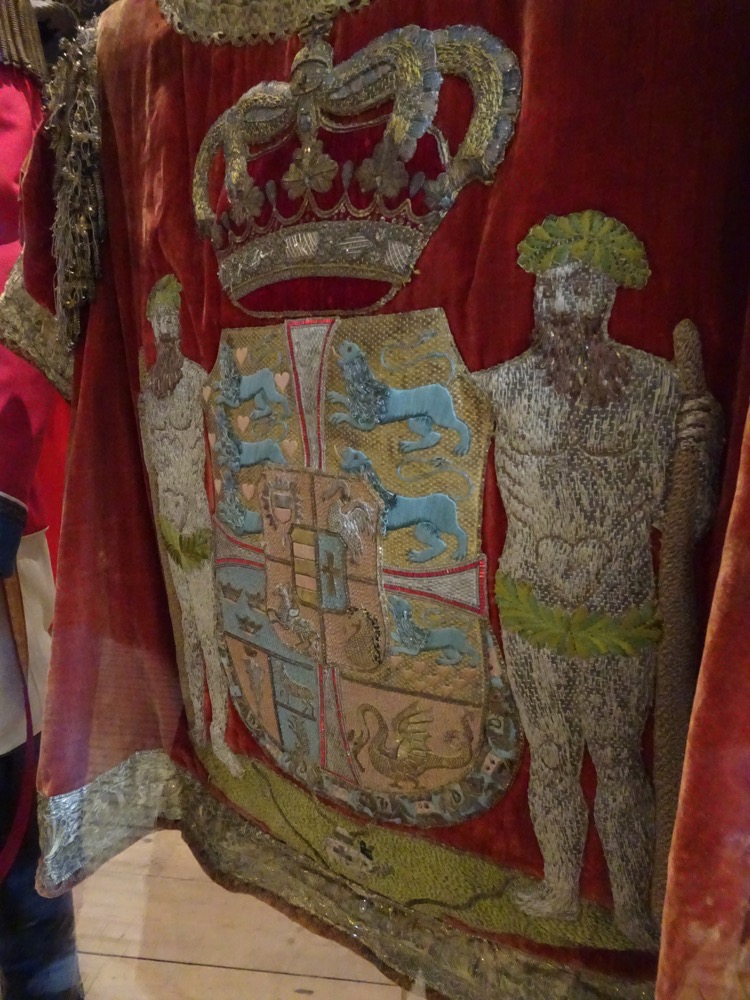
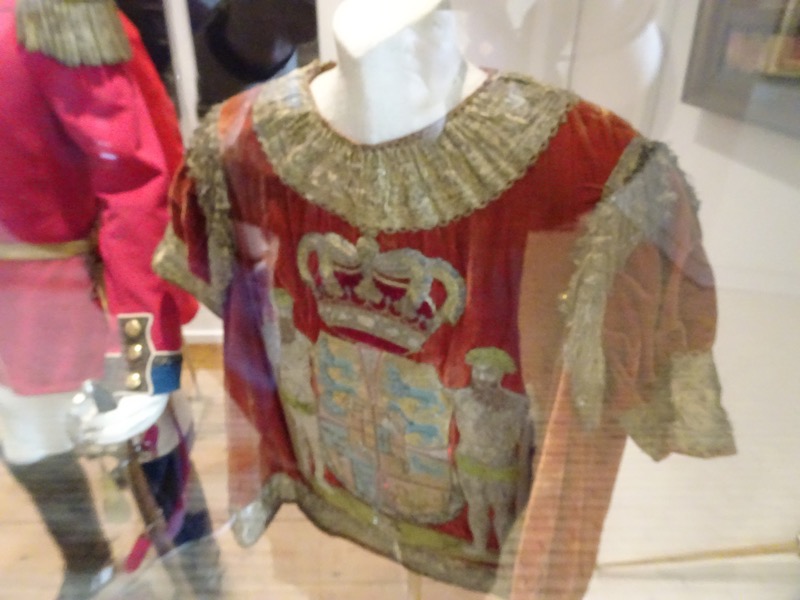
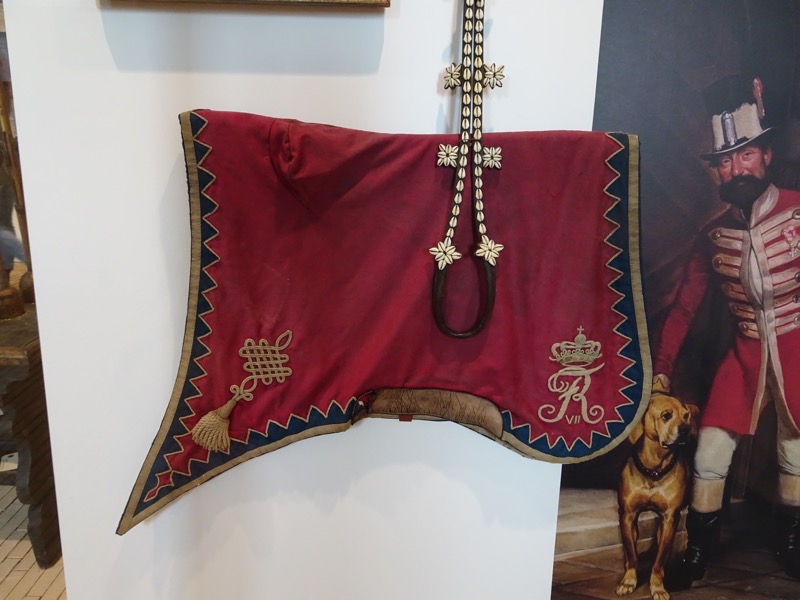 And through to the actual stables, where the smells were coming from. These are obviously working stables, but there were no horses here at present.
And through to the actual stables, where the smells were coming from. These are obviously working stables, but there were no horses here at present.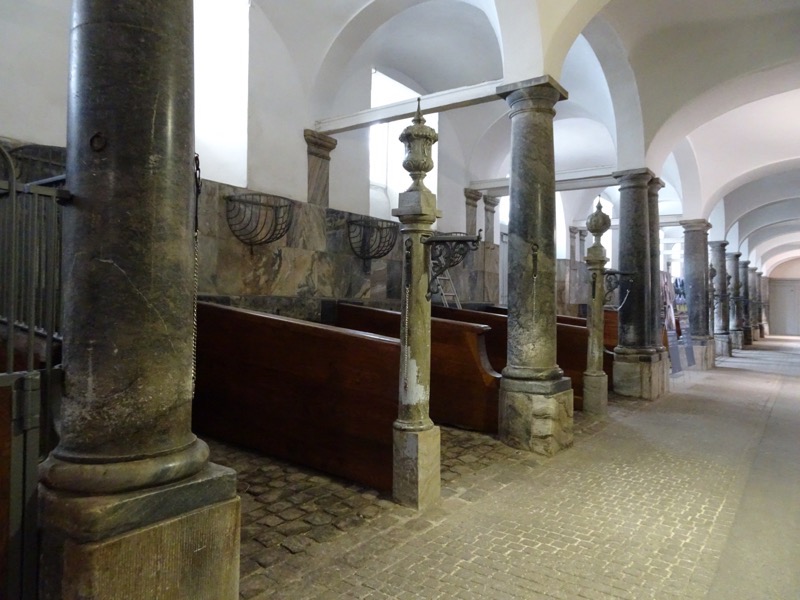 Lots of different Royal Carriages though that have seen all sorts of special royal occasions – coronations, weddings, baptisms and the like.
Lots of different Royal Carriages though that have seen all sorts of special royal occasions – coronations, weddings, baptisms and the like.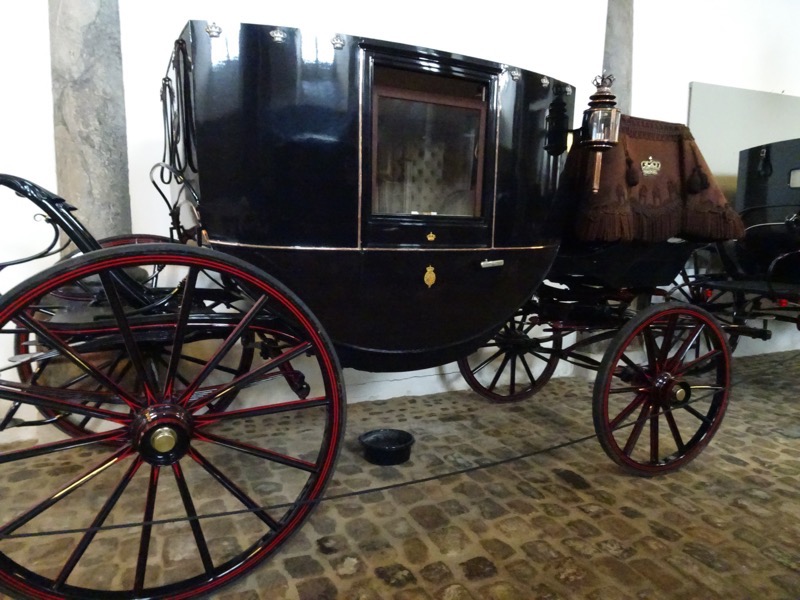
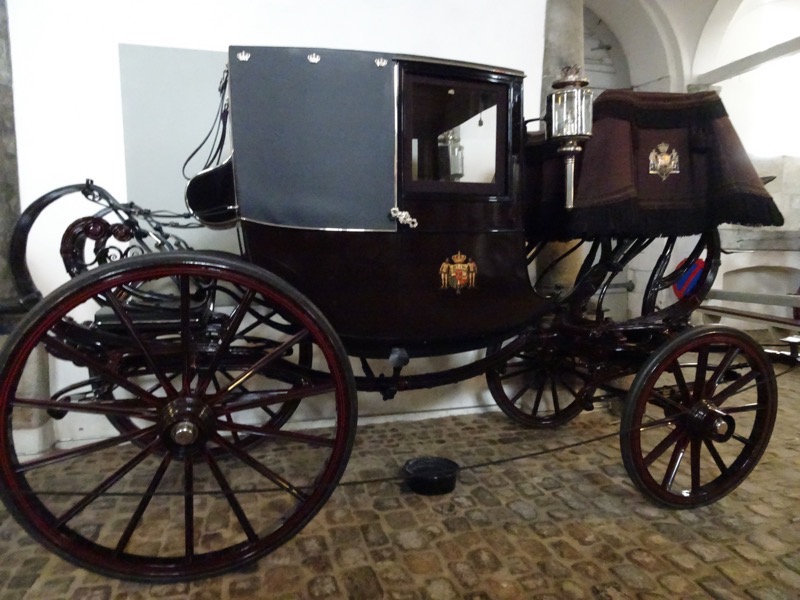
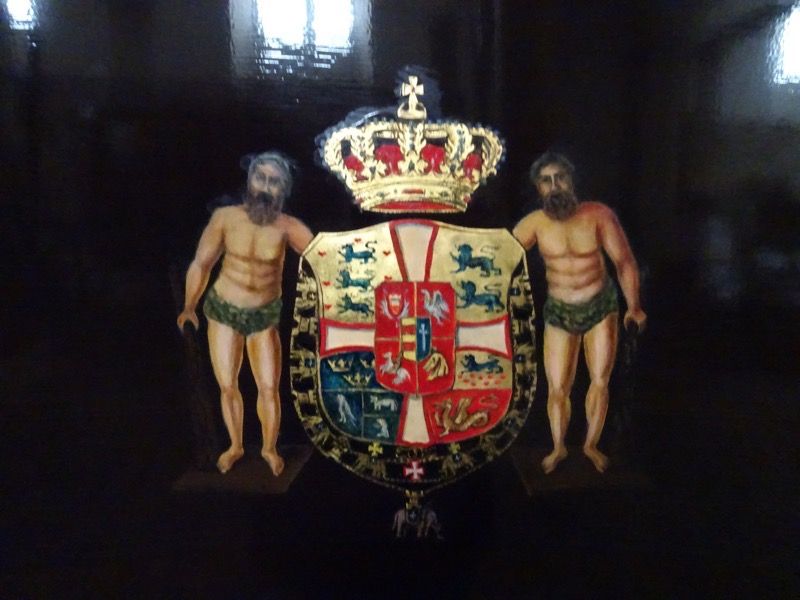
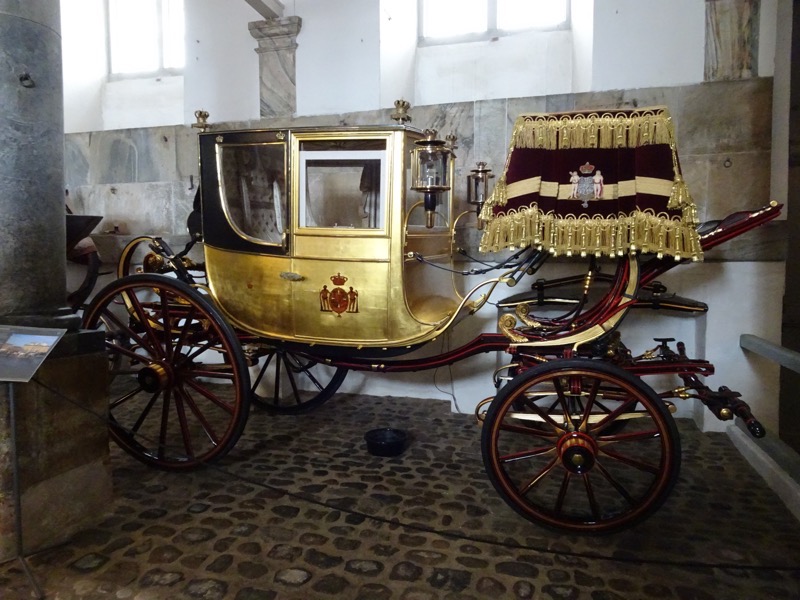
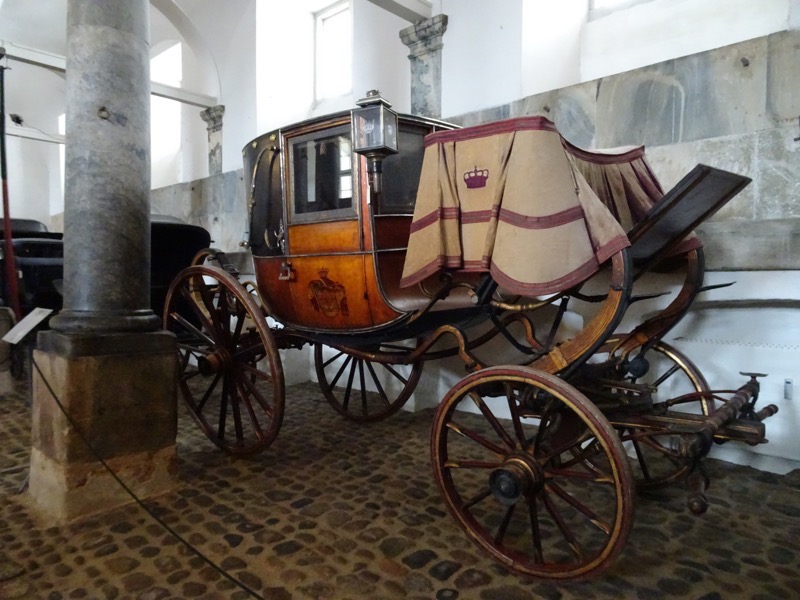
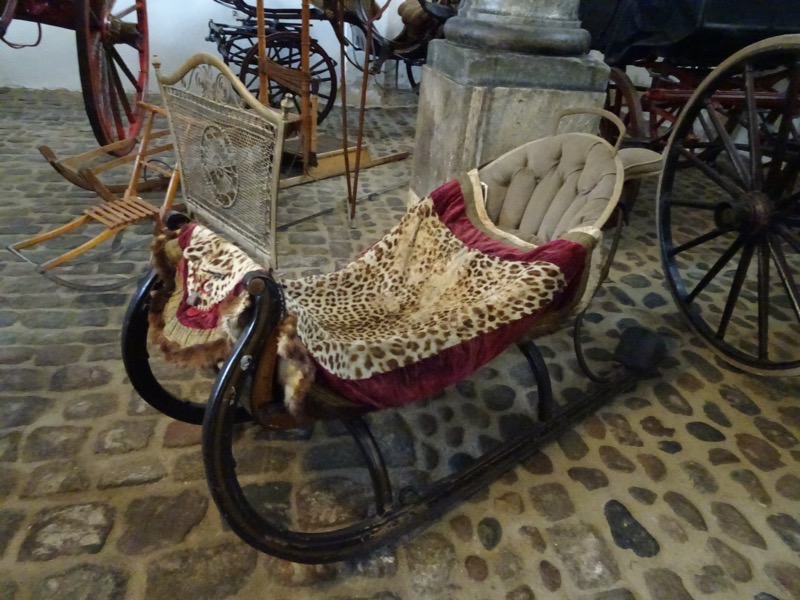
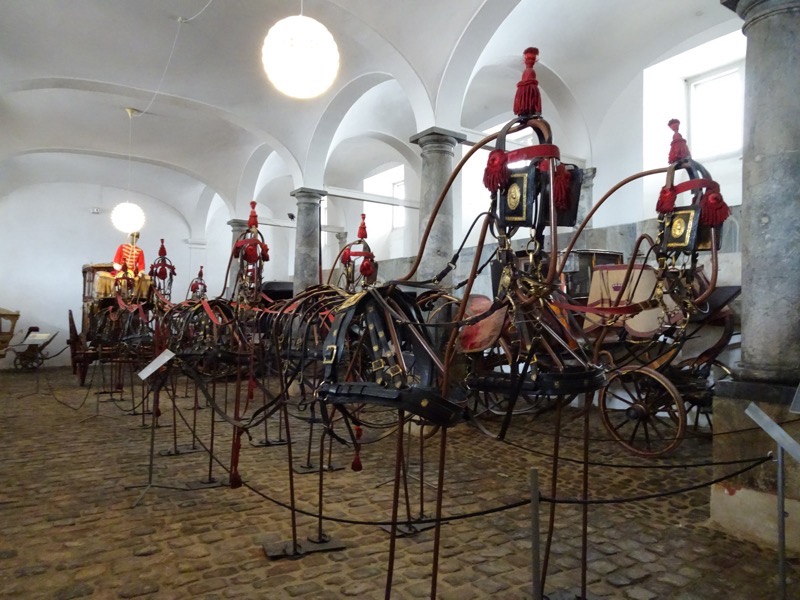
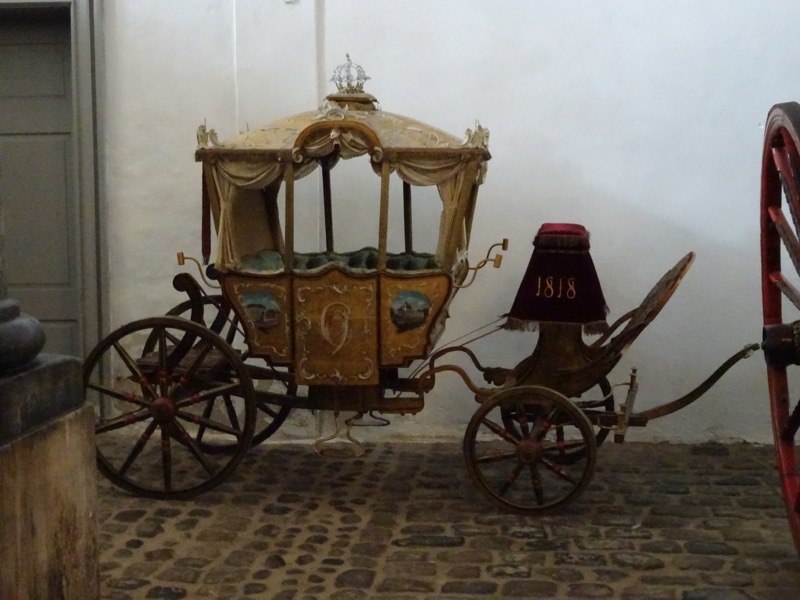 Another part of the palace that is open to the public is the 12th ruins of the original castle that was built on the site called Absalon’s Castle. According to the Bishop Absalon of Roskilde, a Danish chronicler, a castle was built here in 1167, and it comprised of a stone wall, that encircled an enclosed courtyard and several buildings, including the bishop’s palace, a chapel, and several minor buildings.
Another part of the palace that is open to the public is the 12th ruins of the original castle that was built on the site called Absalon’s Castle. According to the Bishop Absalon of Roskilde, a Danish chronicler, a castle was built here in 1167, and it comprised of a stone wall, that encircled an enclosed courtyard and several buildings, including the bishop’s palace, a chapel, and several minor buildings.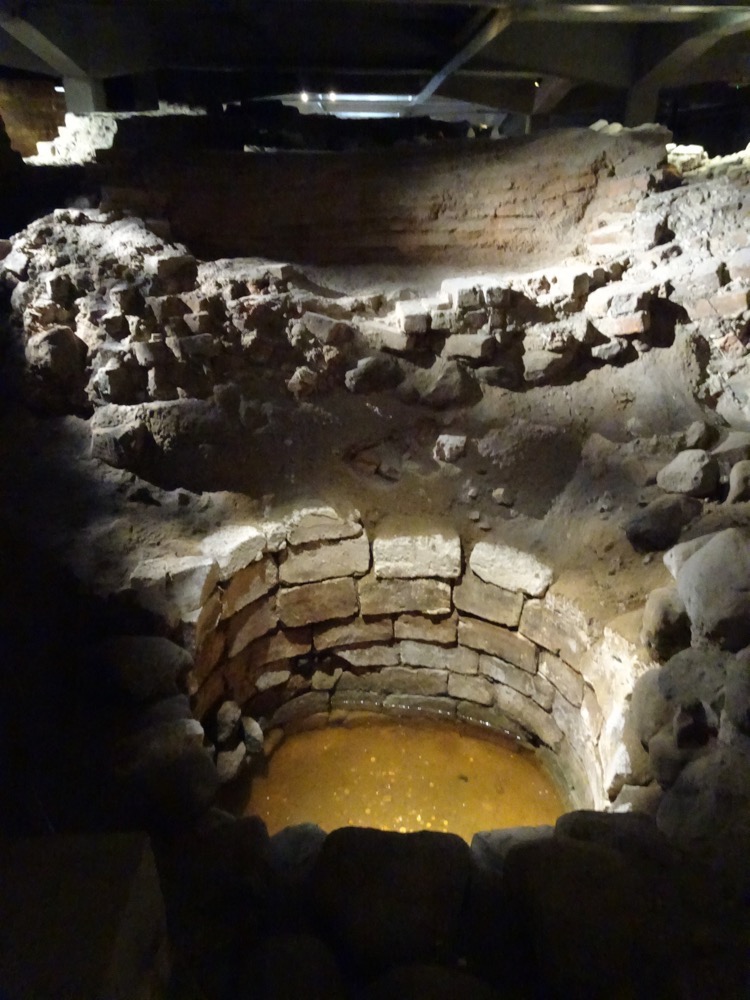
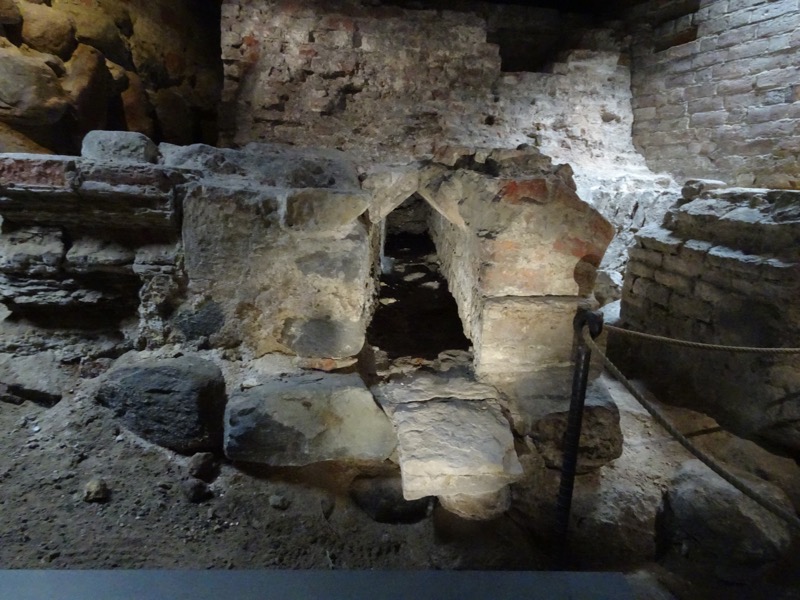
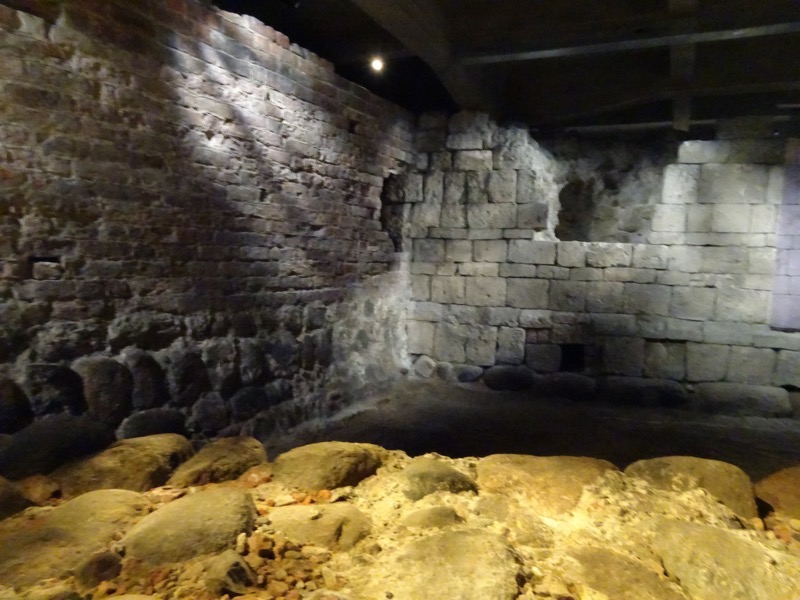
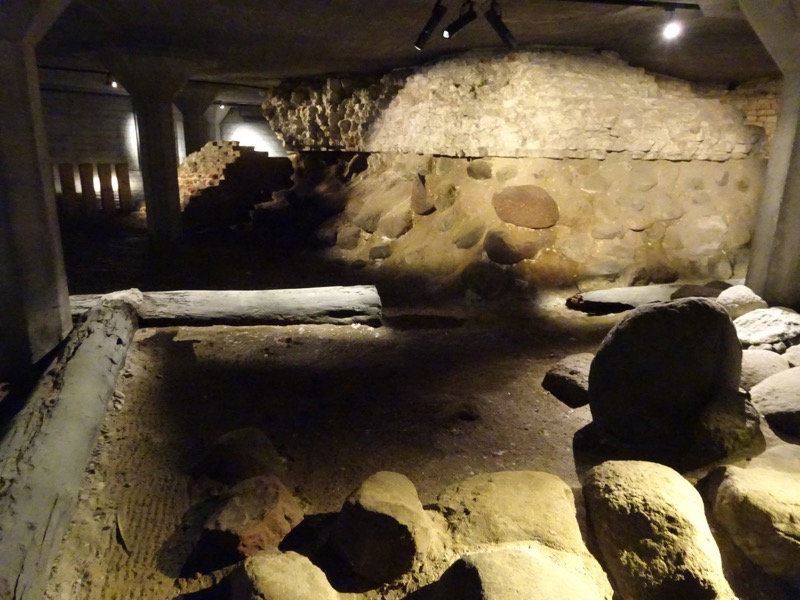 Another area of the Palace that is open for public entrance are the Royal Kitchens… not sure what to say about the kitchens really, they are there. They look like period kitchens. They can serve 400 odd people in the Great Hall and that’s about it really.
Another area of the Palace that is open for public entrance are the Royal Kitchens… not sure what to say about the kitchens really, they are there. They look like period kitchens. They can serve 400 odd people in the Great Hall and that’s about it really. 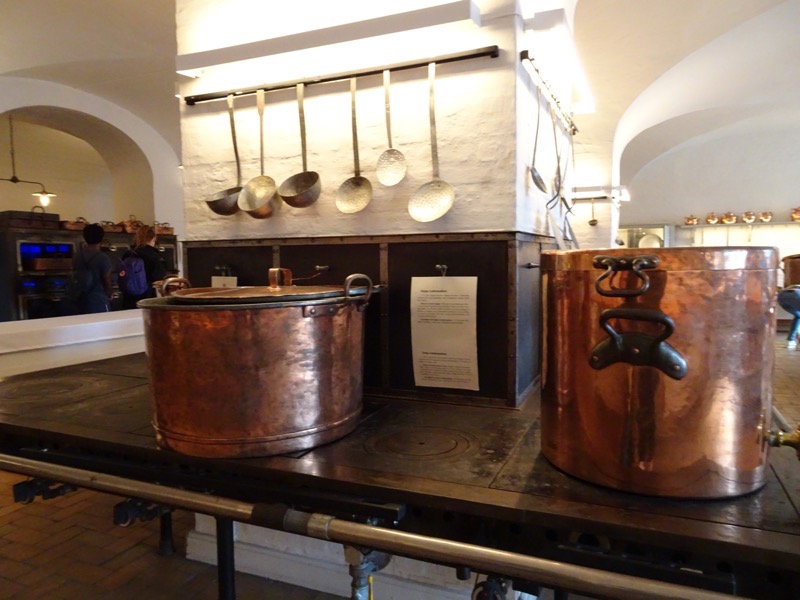
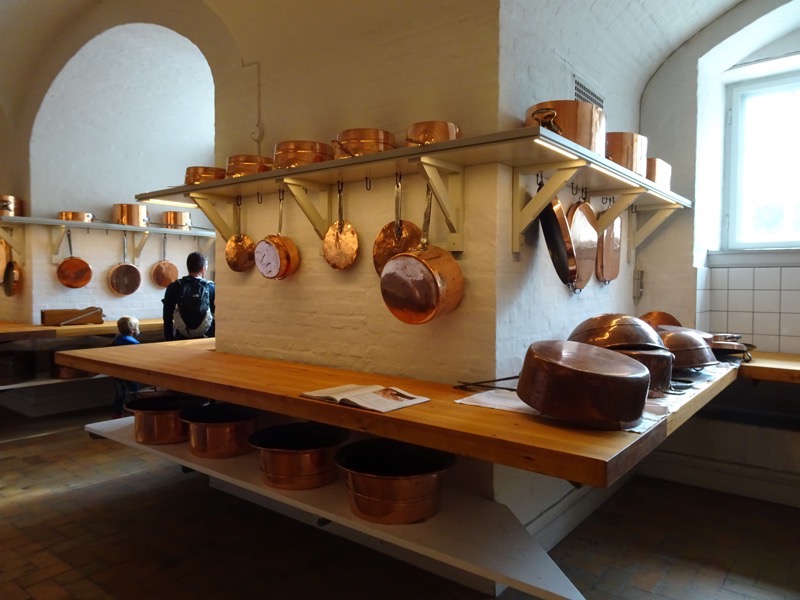 Lots of shiny copper pots.
Lots of shiny copper pots.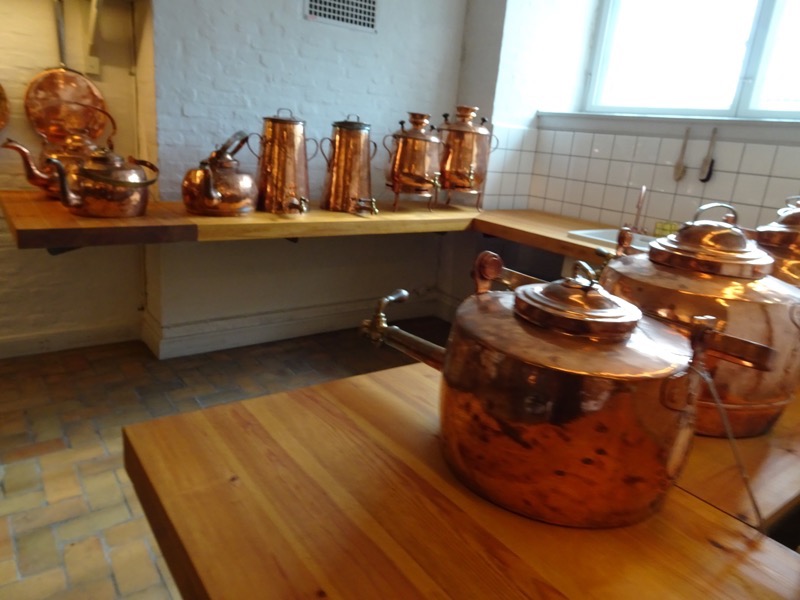
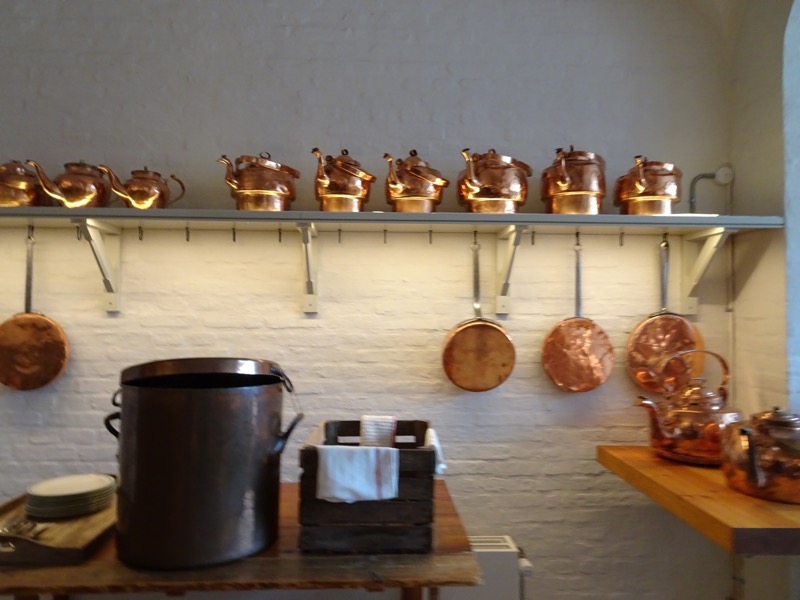
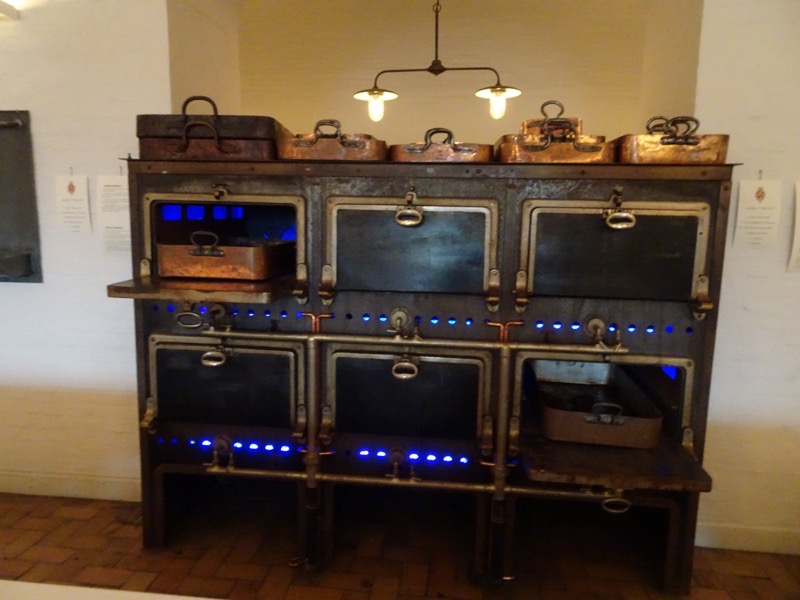
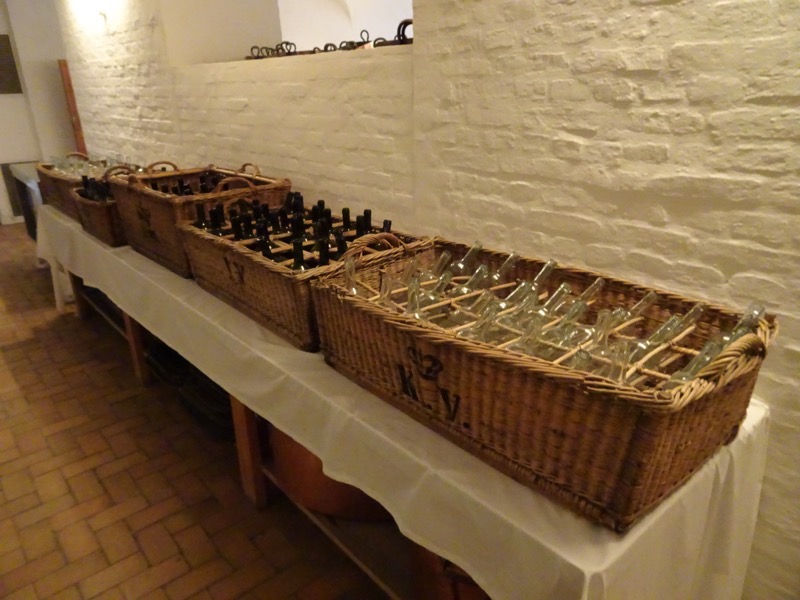
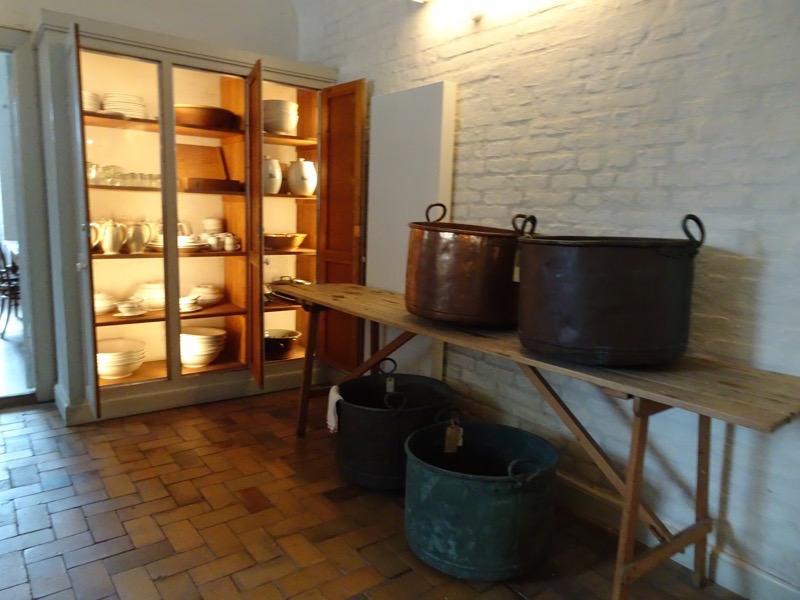
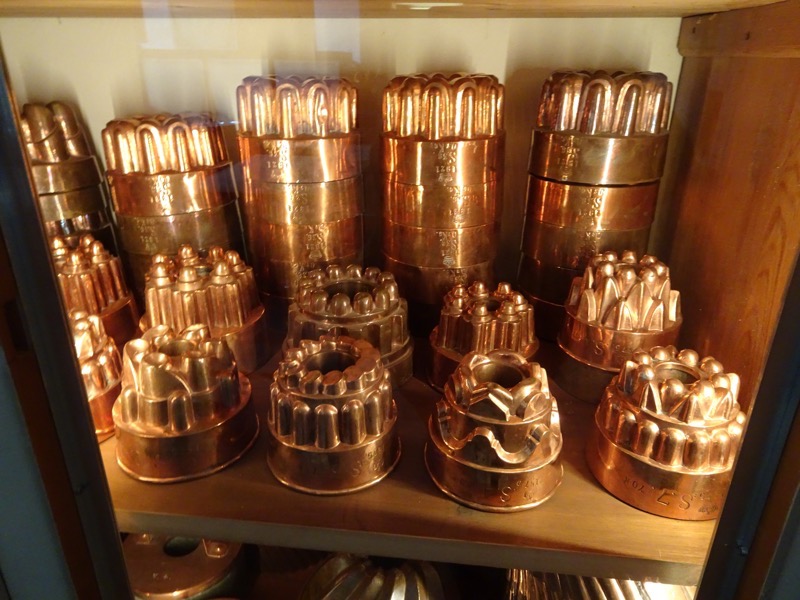
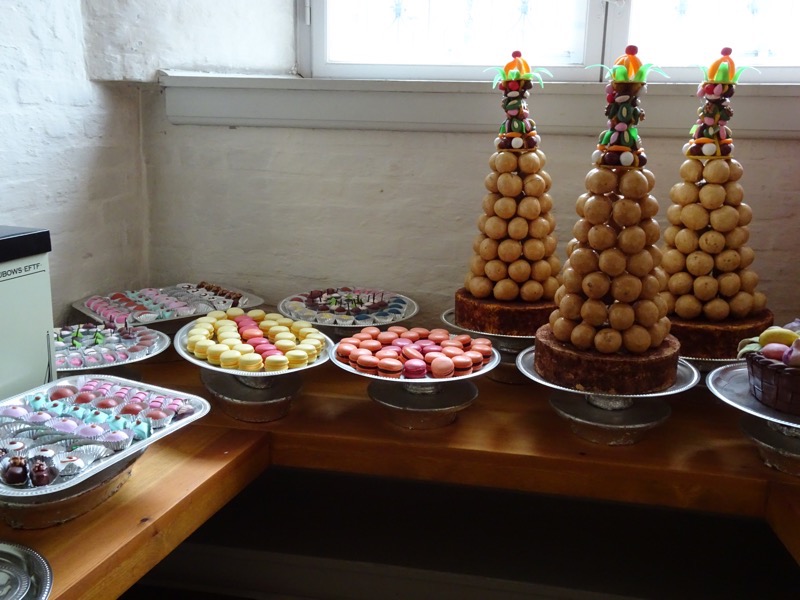
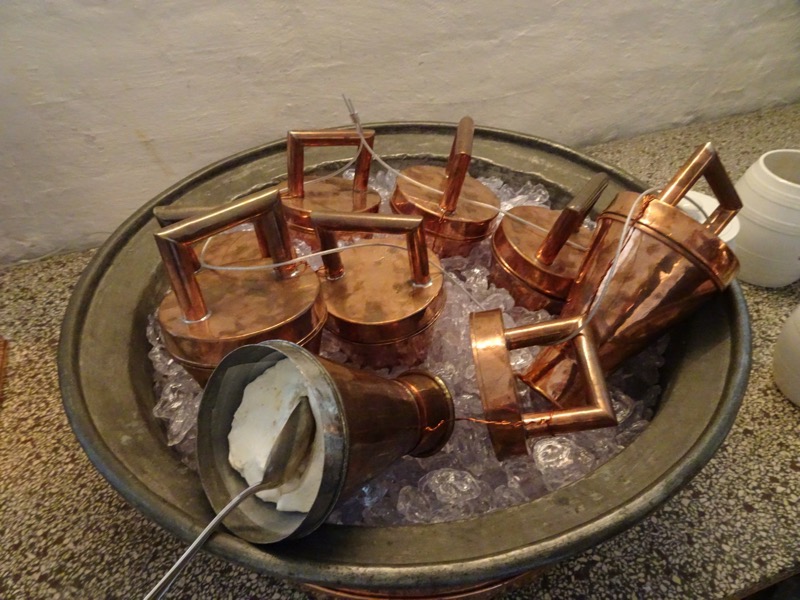
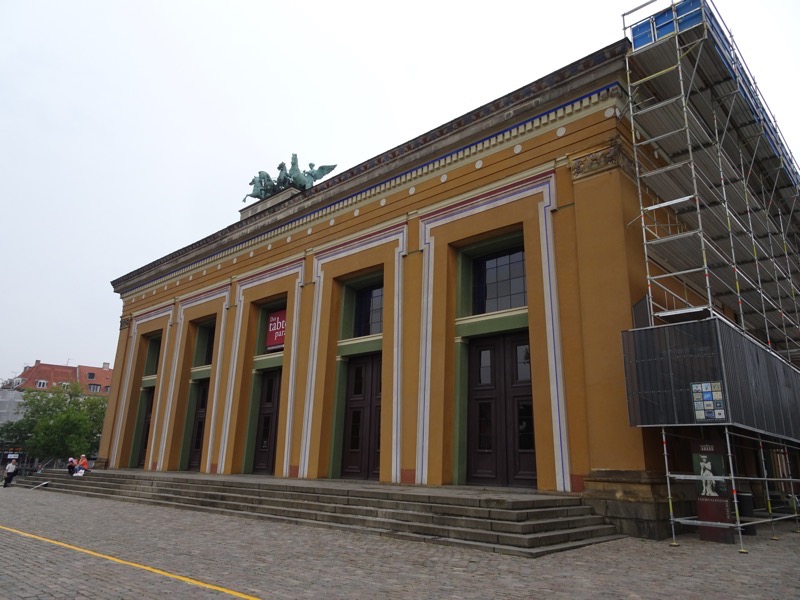 We walked back to the hotel via the canals that we toured yesterday, and noted that in the overcast and occasionally damp weather, there was a shocking lack of tourists in canal boats compared to yesterday! Seems the bad weather is keeping all the tourists indoors today.
We walked back to the hotel via the canals that we toured yesterday, and noted that in the overcast and occasionally damp weather, there was a shocking lack of tourists in canal boats compared to yesterday! Seems the bad weather is keeping all the tourists indoors today.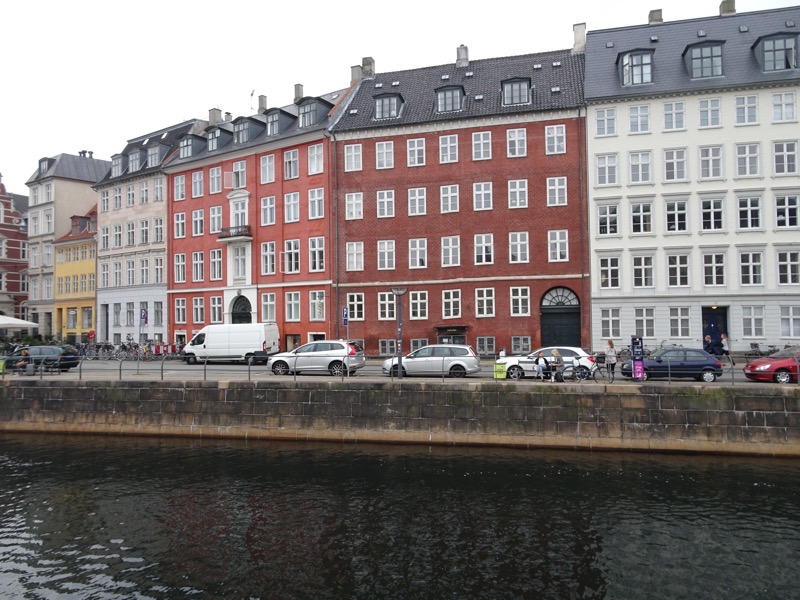
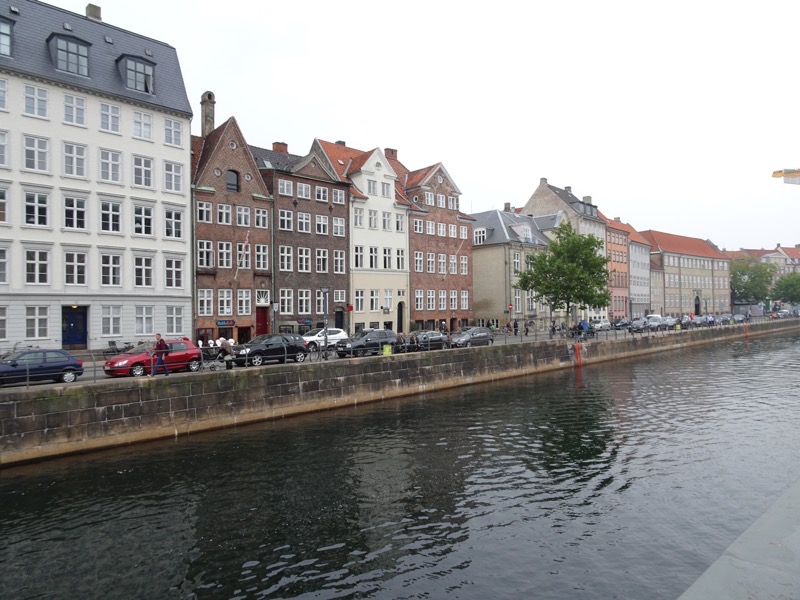
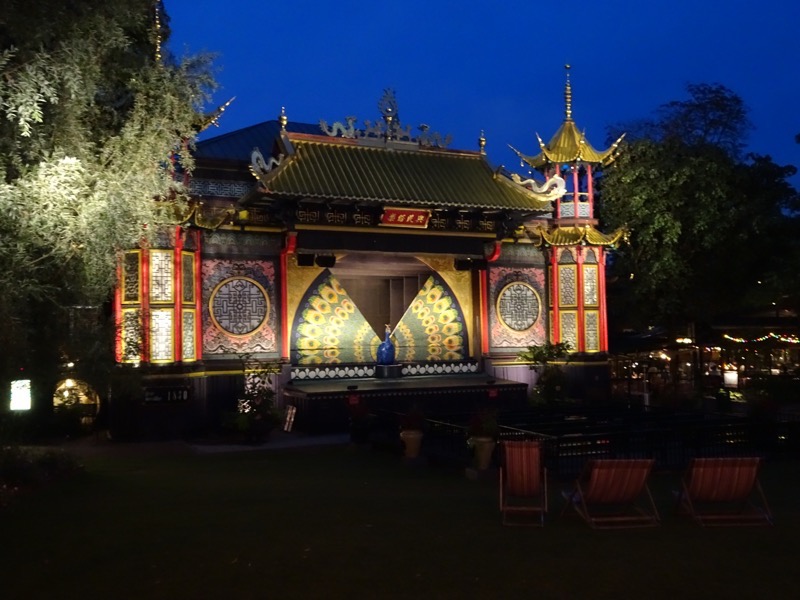 Tivoli’s Moorish Palace.
Tivoli’s Moorish Palace.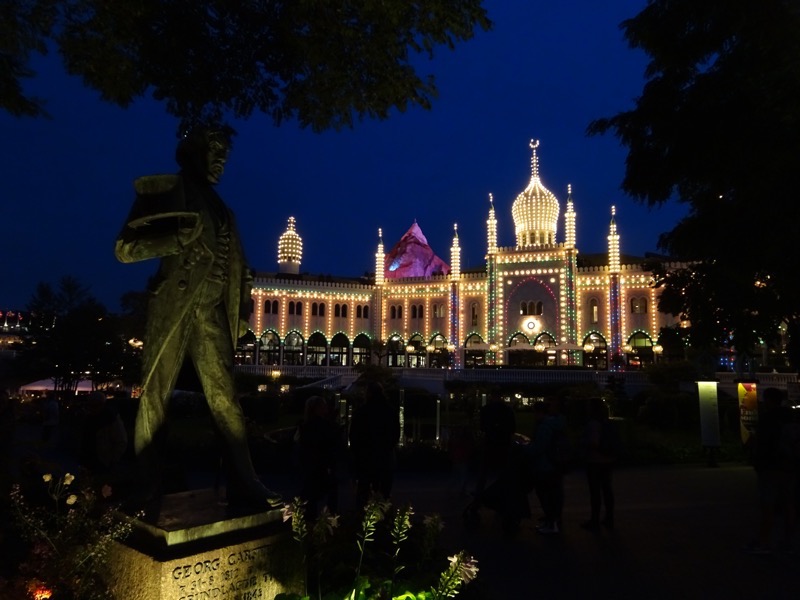
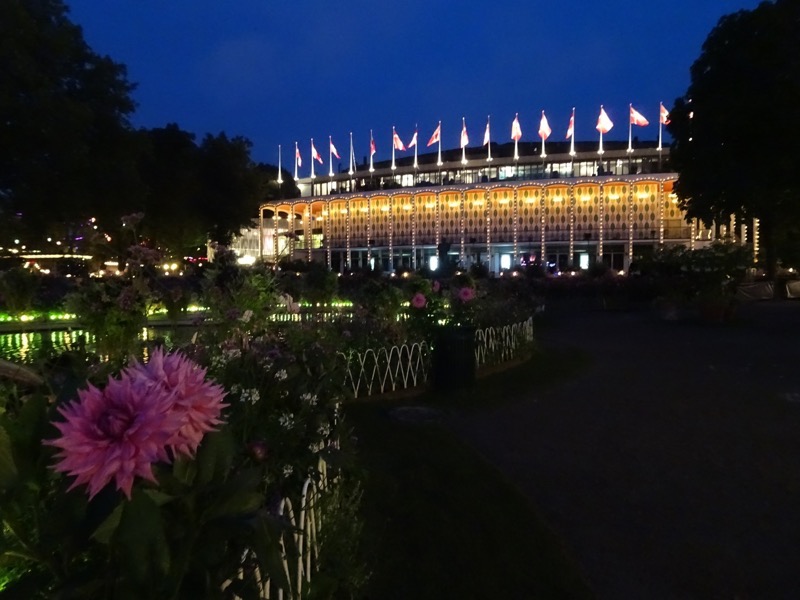 Sideshow alley…
Sideshow alley…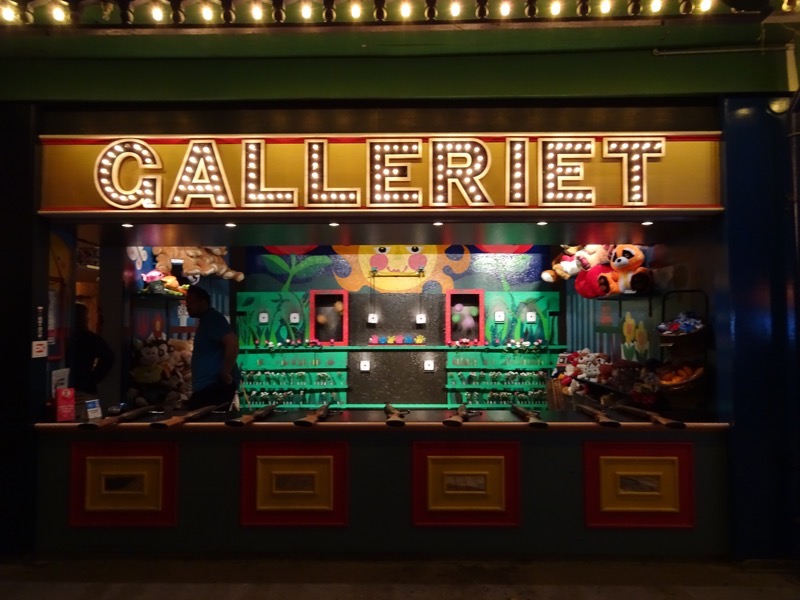
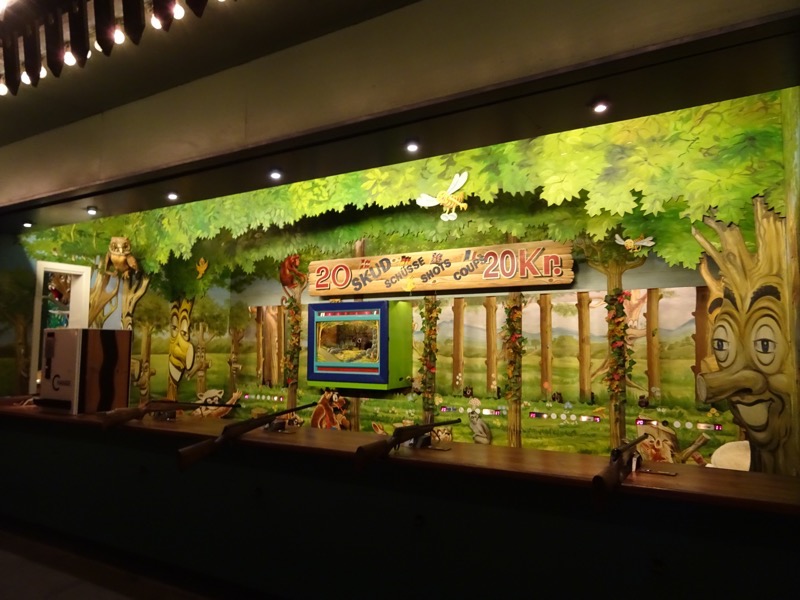
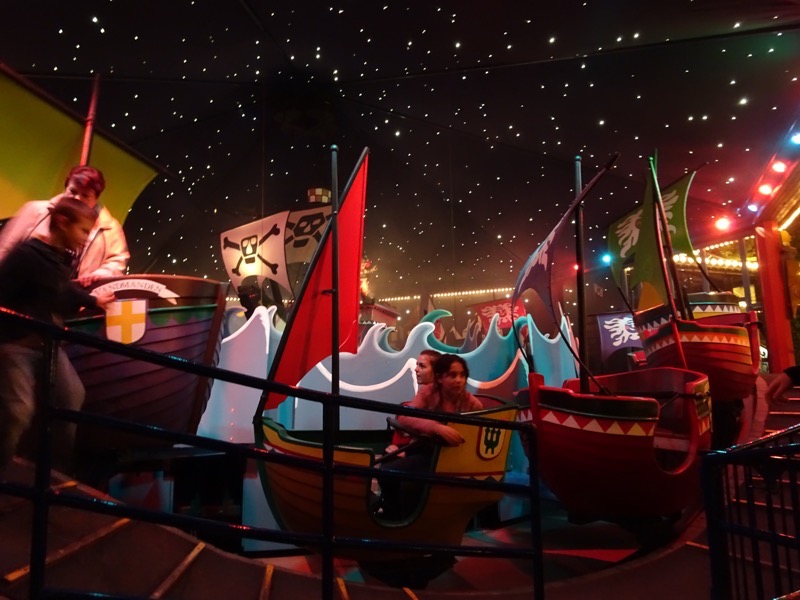 A statuette with Swarovski accents that I nearly brought home for my sister… it’s fancier than a black velvet Elvis painting!
A statuette with Swarovski accents that I nearly brought home for my sister… it’s fancier than a black velvet Elvis painting!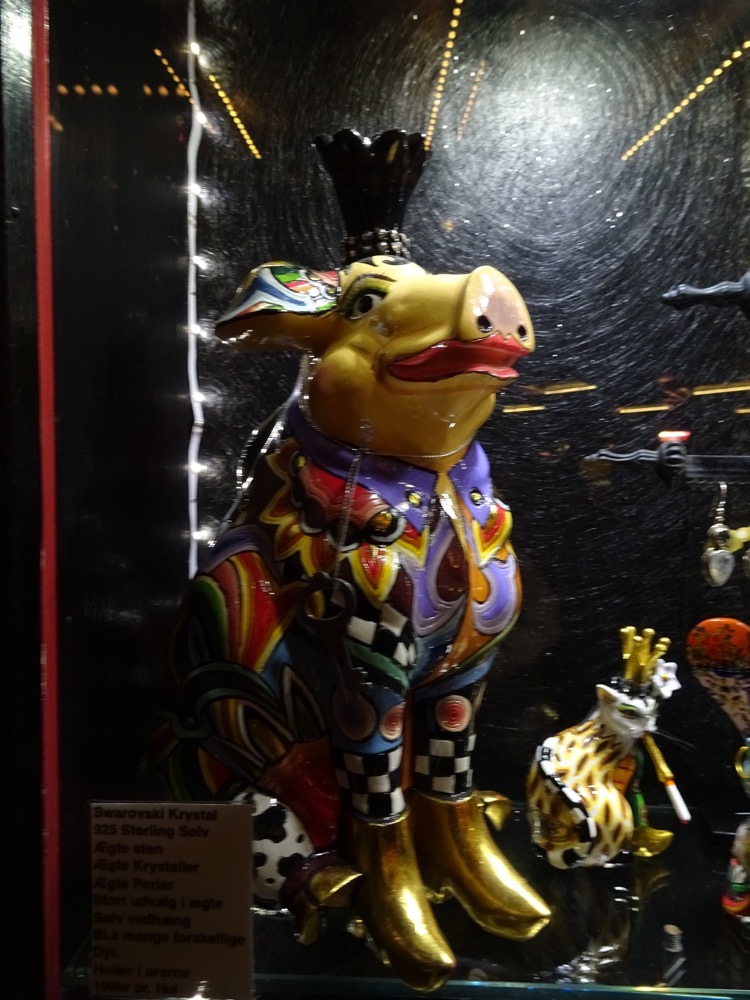
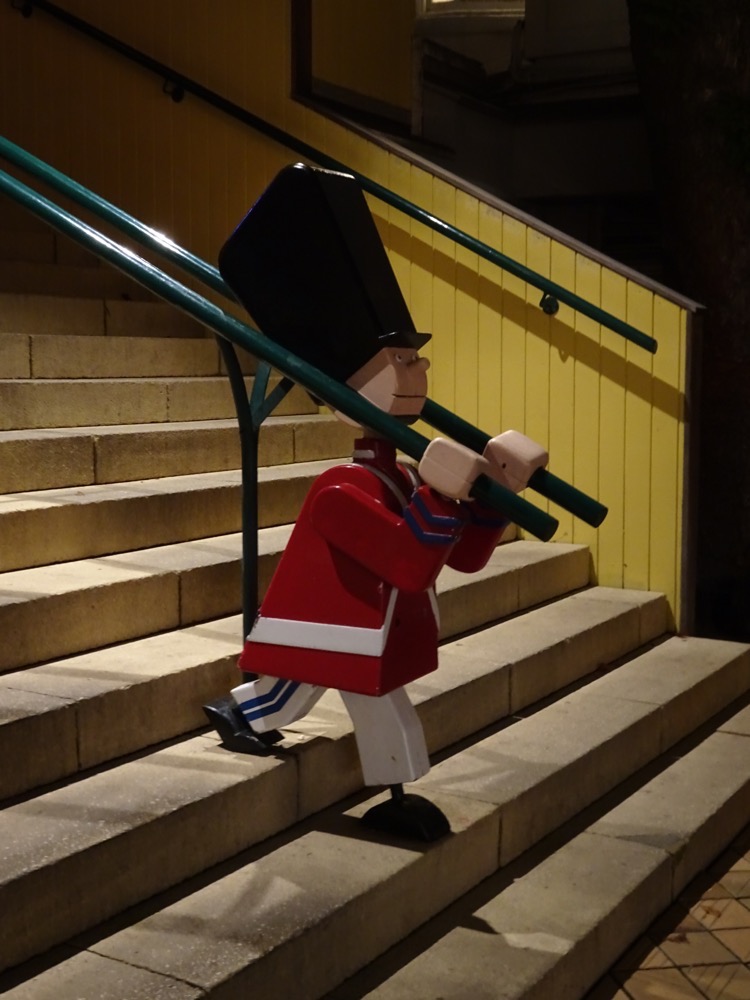 The park is famous for its old wooden roller coster, the Rutschenbanen, or the Bjergbanen (the Mountain Coaster). It was built in 1914 and is one of the world’s oldest operating wooden roller coasters. Mr K wanted to take a ride on it so we bought tickets. I did suggest we go separately so that our son wouldn’t end up completely orphaned if something happened to the rickety old thing!
The park is famous for its old wooden roller coster, the Rutschenbanen, or the Bjergbanen (the Mountain Coaster). It was built in 1914 and is one of the world’s oldest operating wooden roller coasters. Mr K wanted to take a ride on it so we bought tickets. I did suggest we go separately so that our son wouldn’t end up completely orphaned if something happened to the rickety old thing! 
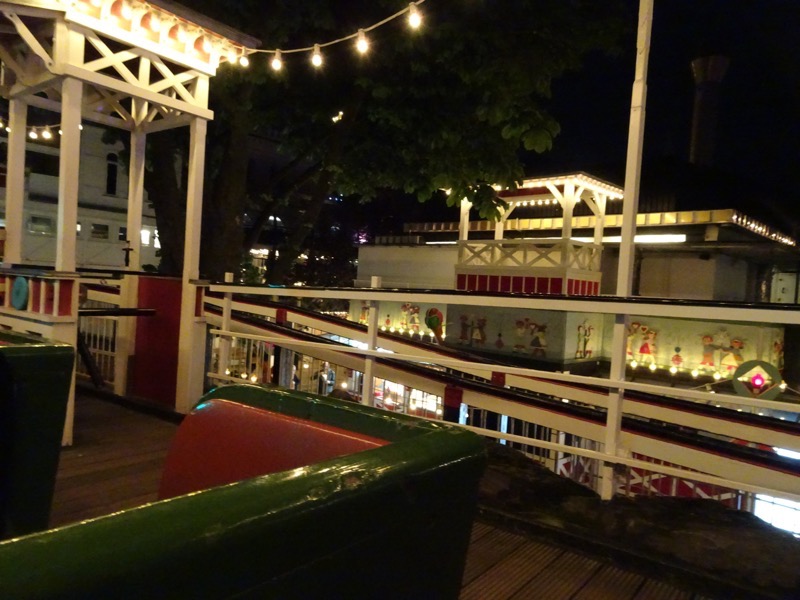 It reaches a speed of 50km/h on a 720m track and goes to a height of 13 whole meters! The ride runs around inside a small man made mountain and is almost completely in the dark, which was interesting… bit jerky as you would expect, and the seats could use a little padding for when you hit the bottom of those dips, but there was a little guy sitting behind us who was operating a brake to make sure it doesn’t go too far down hill. . Themed around a mountain, train 2×12.An operator controls the ride by braking down the hills so it won’t gain too much speed.
It reaches a speed of 50km/h on a 720m track and goes to a height of 13 whole meters! The ride runs around inside a small man made mountain and is almost completely in the dark, which was interesting… bit jerky as you would expect, and the seats could use a little padding for when you hit the bottom of those dips, but there was a little guy sitting behind us who was operating a brake to make sure it doesn’t go too far down hill. . Themed around a mountain, train 2×12.An operator controls the ride by braking down the hills so it won’t gain too much speed.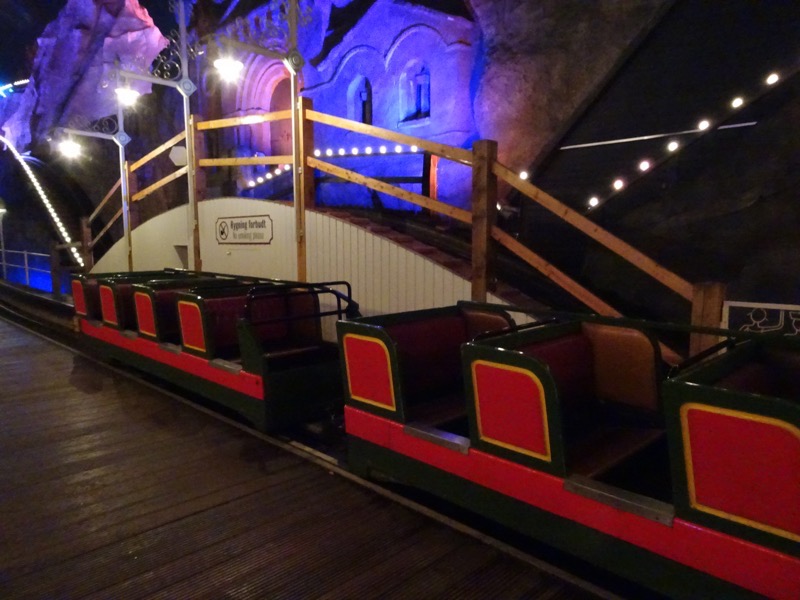
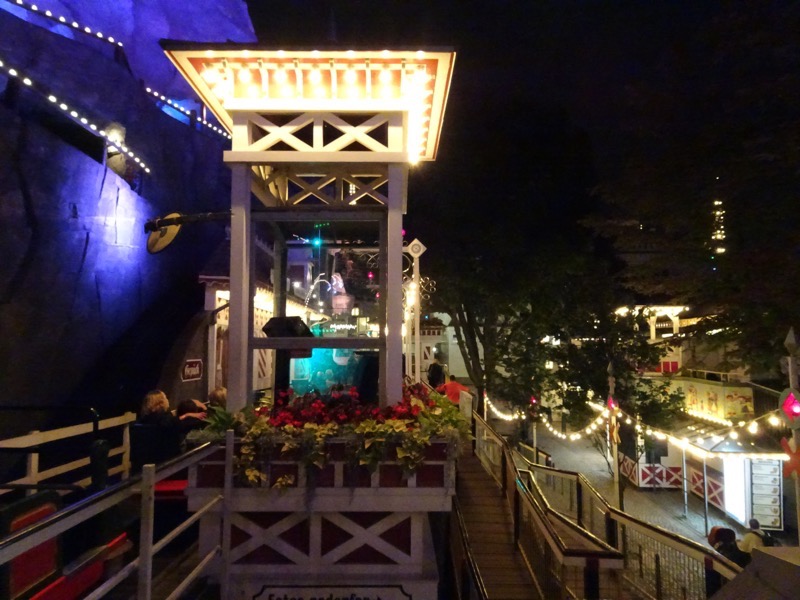
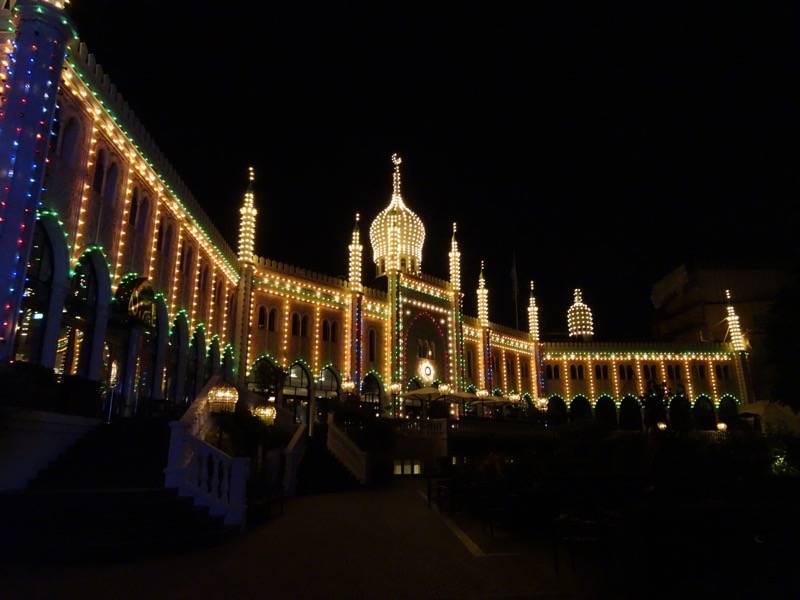
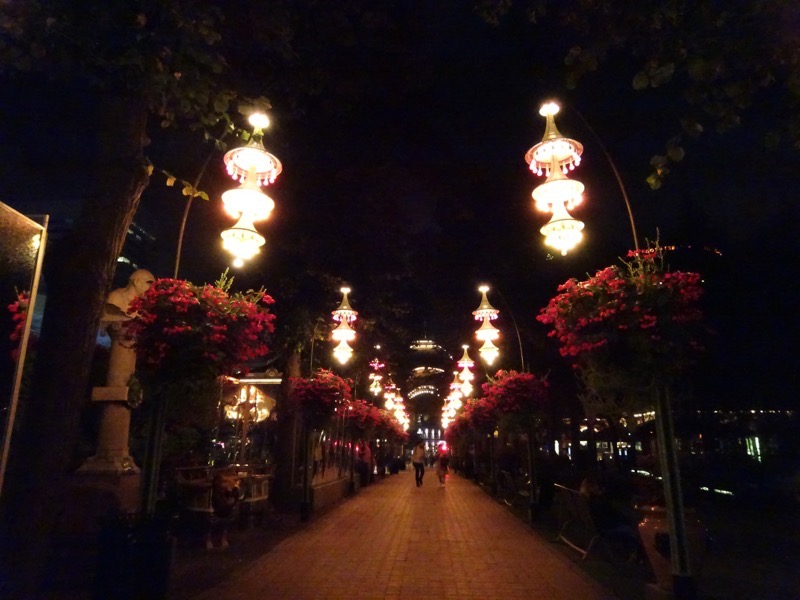
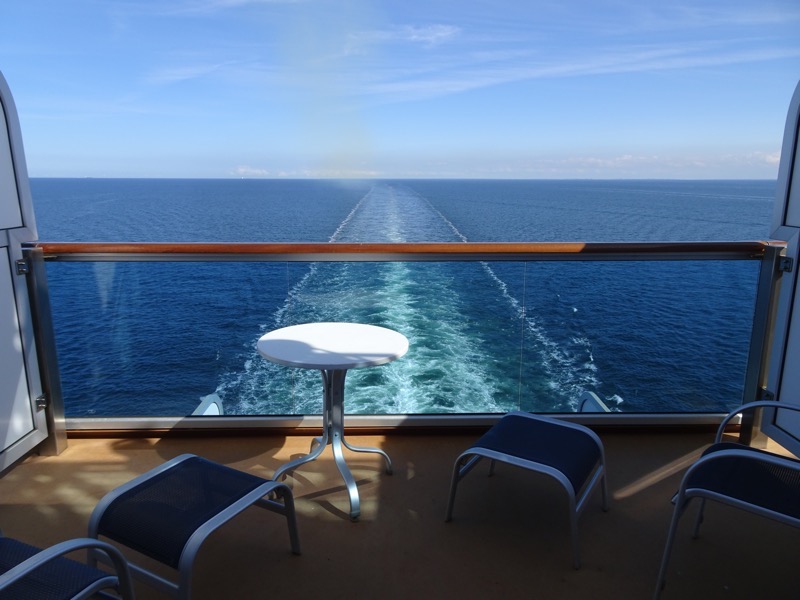 Some windmills off the coast of Denmark… they look so beautiful dotting the seascape.
Some windmills off the coast of Denmark… they look so beautiful dotting the seascape.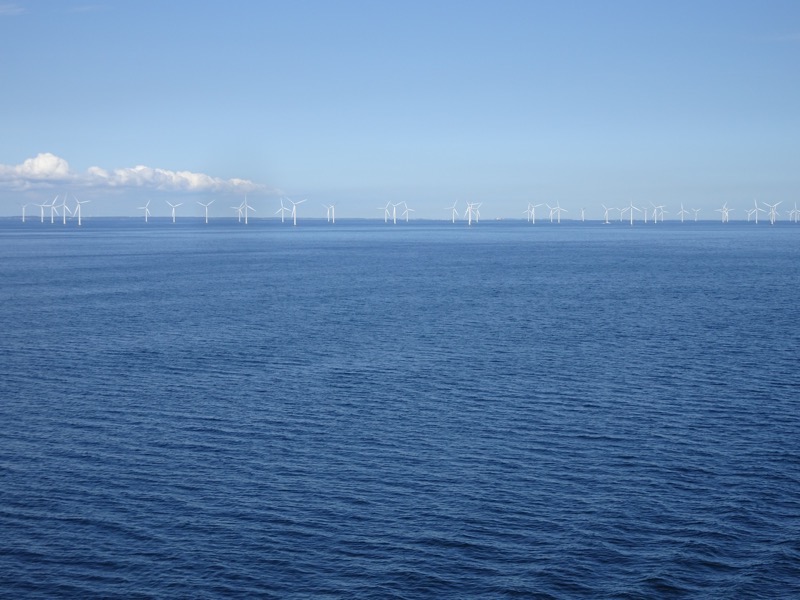 Down town Copenhagen – the architecture is very typical northern European. Love it!
Down town Copenhagen – the architecture is very typical northern European. Love it!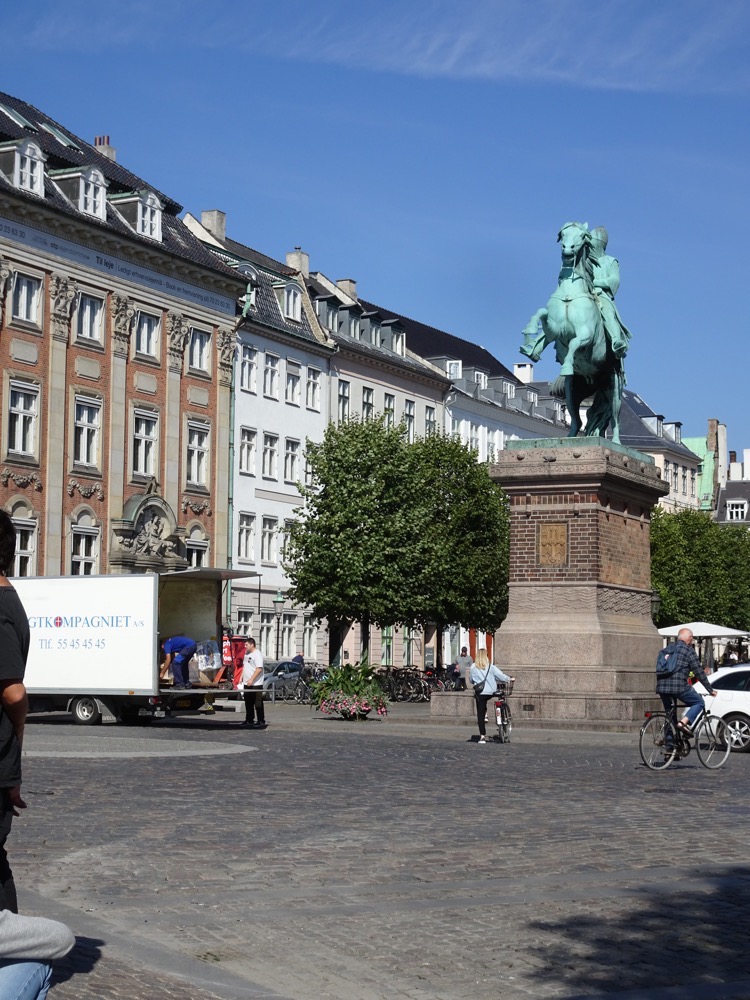 More trolls in the souvenir shops… there must be some massive factory somewhere churning out trolls with different Scandinavian flags!
More trolls in the souvenir shops… there must be some massive factory somewhere churning out trolls with different Scandinavian flags!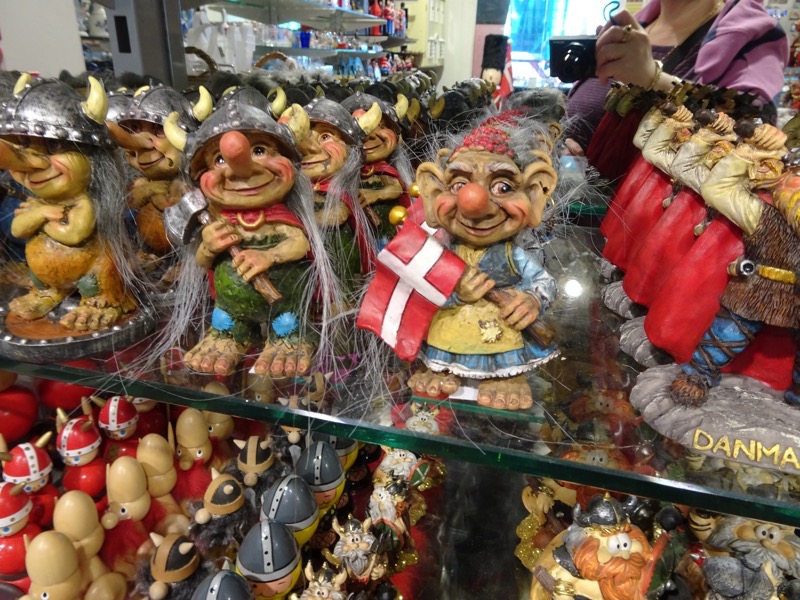
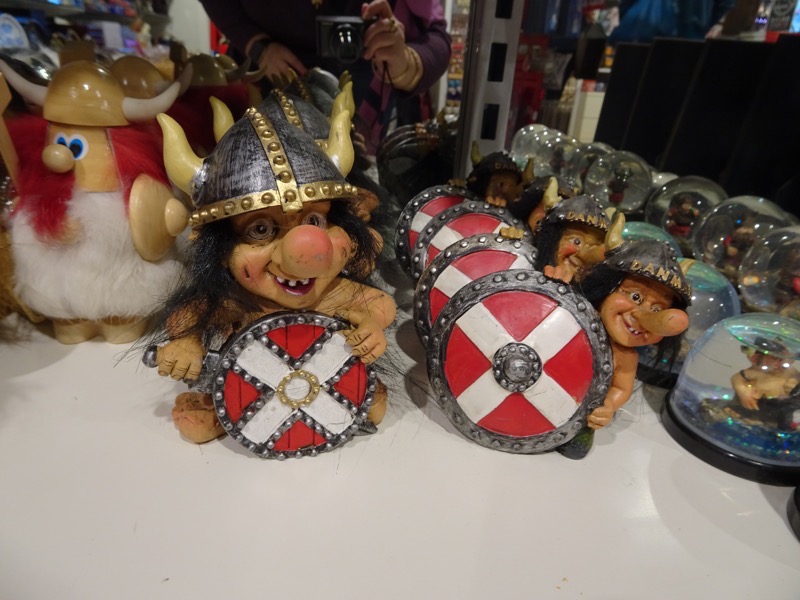
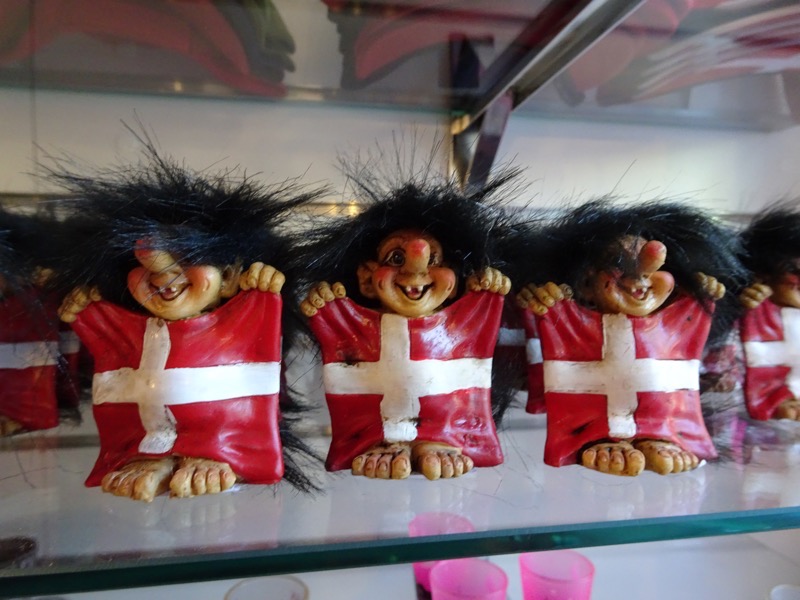 With the weather being so beautiful this morning, we decided to take a canal ride to get a look at the city from the water. It was a wonderful trip through the town. Copenhagen was originally a Viking fishing village back in the 10th century, and only became the capital of Denmark some 500 years later in the early 15th century… some of these old buildings and old boats definitely take you back.
With the weather being so beautiful this morning, we decided to take a canal ride to get a look at the city from the water. It was a wonderful trip through the town. Copenhagen was originally a Viking fishing village back in the 10th century, and only became the capital of Denmark some 500 years later in the early 15th century… some of these old buildings and old boats definitely take you back.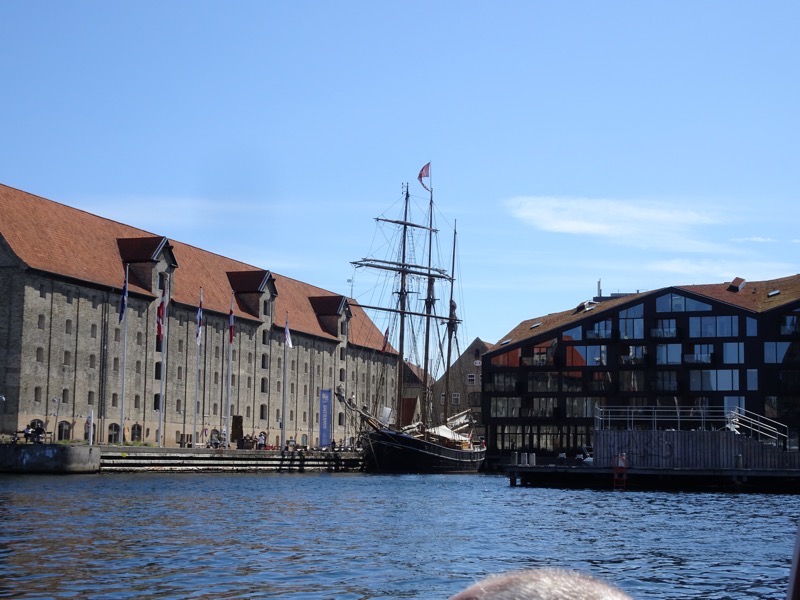 The Copenhagen Opera House is, err, interesting. It doesn’t quite blend with the rest of the city’s neoclassical architecture though.
The Copenhagen Opera House is, err, interesting. It doesn’t quite blend with the rest of the city’s neoclassical architecture though.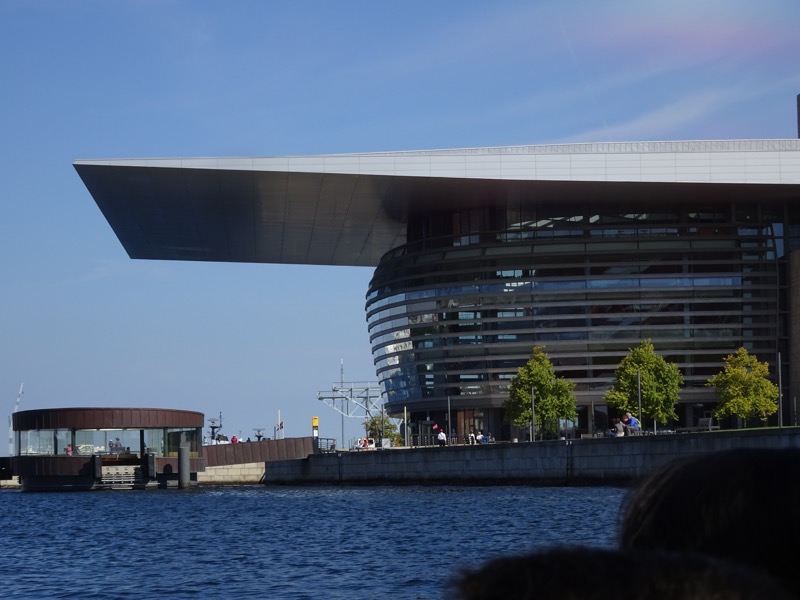
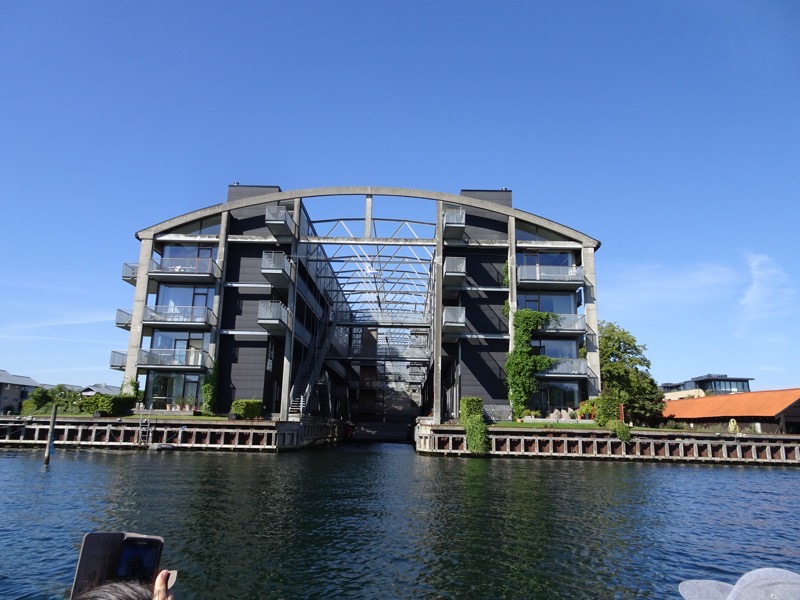
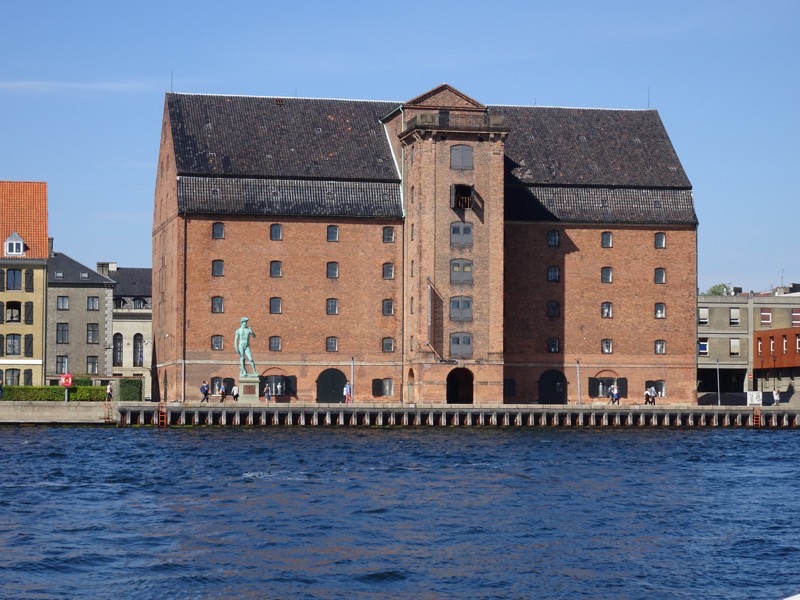
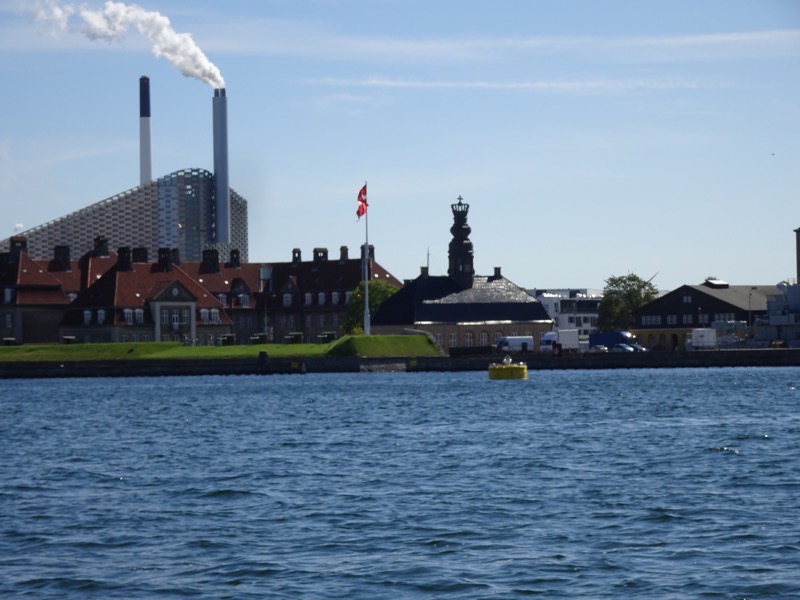
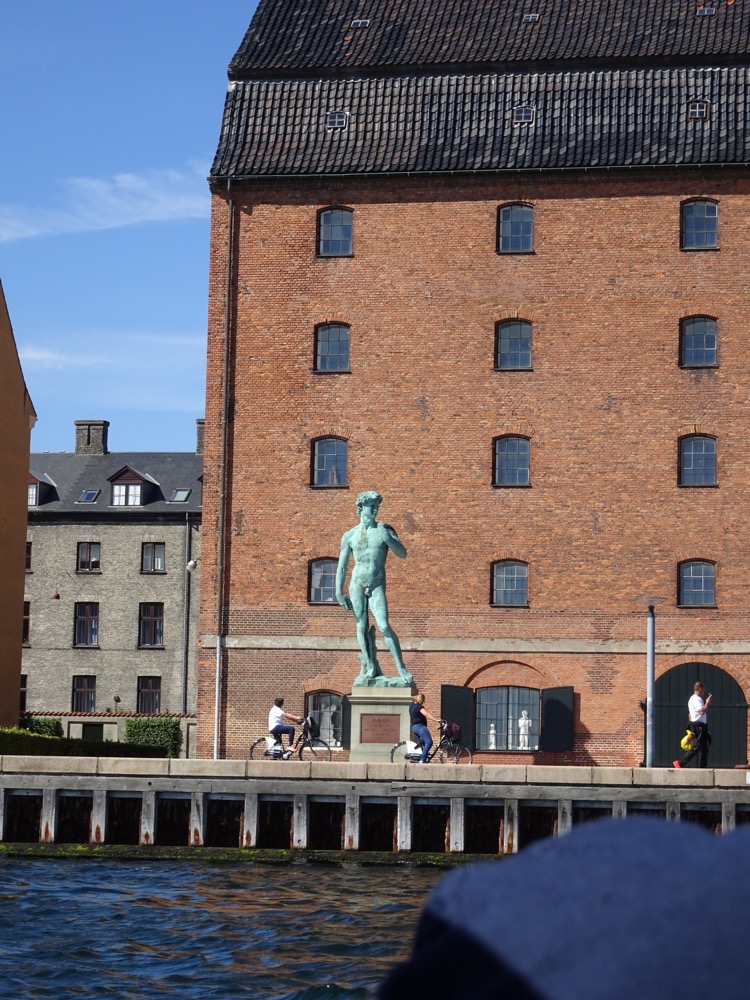 The whole of the canal ride felt like traveling through one large Marina… so many yachts and boats. Many people living in houseboats. It looks like a lovely lifestyle for the locals.
The whole of the canal ride felt like traveling through one large Marina… so many yachts and boats. Many people living in houseboats. It looks like a lovely lifestyle for the locals.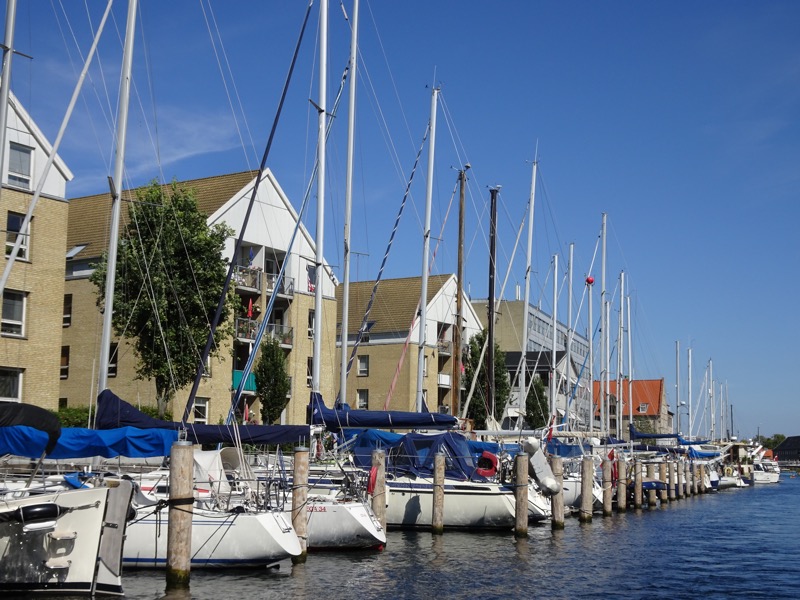 The canal boats are obviously designed to *just* fit under the canal bridges – when passing under some of them, we had barely 10 inches of clearance on each side.
The canal boats are obviously designed to *just* fit under the canal bridges – when passing under some of them, we had barely 10 inches of clearance on each side.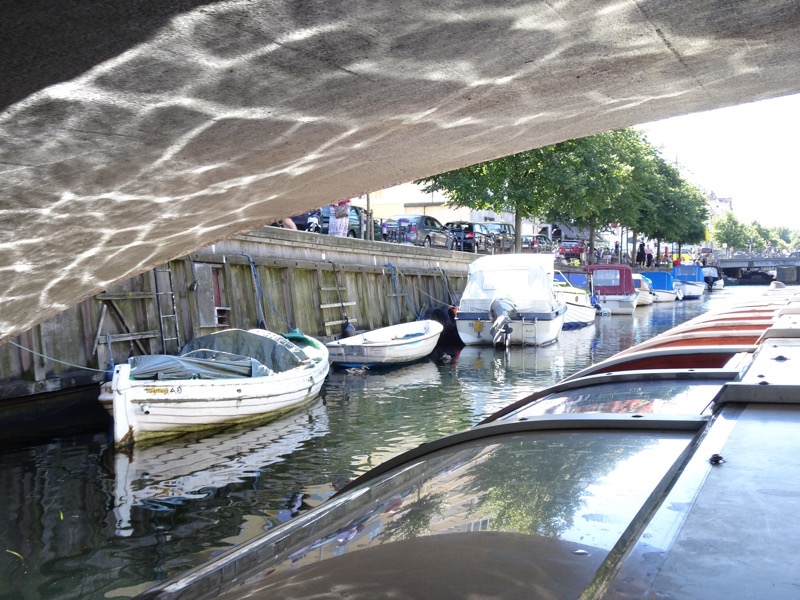
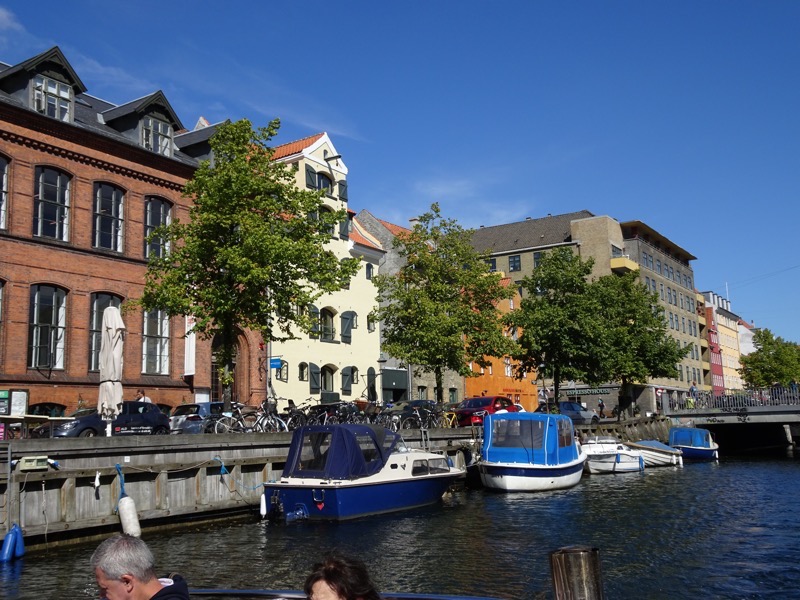
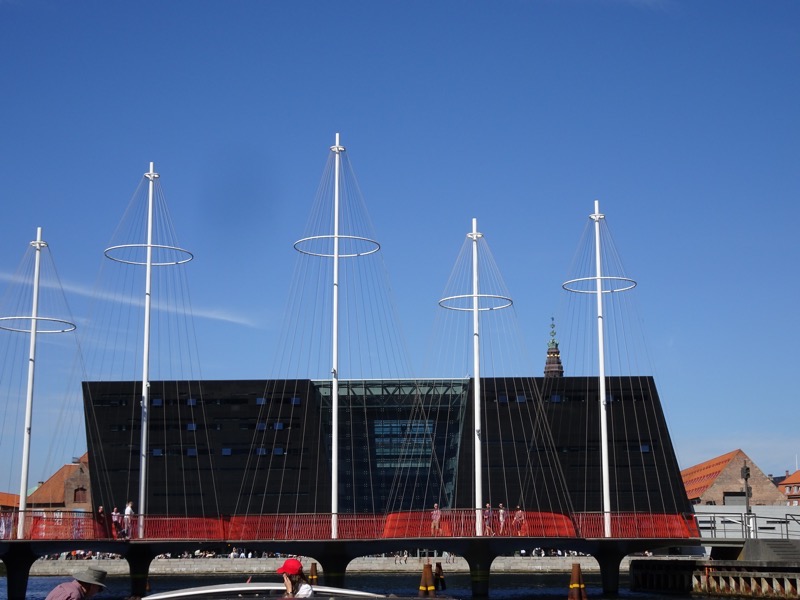 Stunning photo of the canal and a canal boat – complete with non-image forming spectral highlights for your enjoyment!
Stunning photo of the canal and a canal boat – complete with non-image forming spectral highlights for your enjoyment!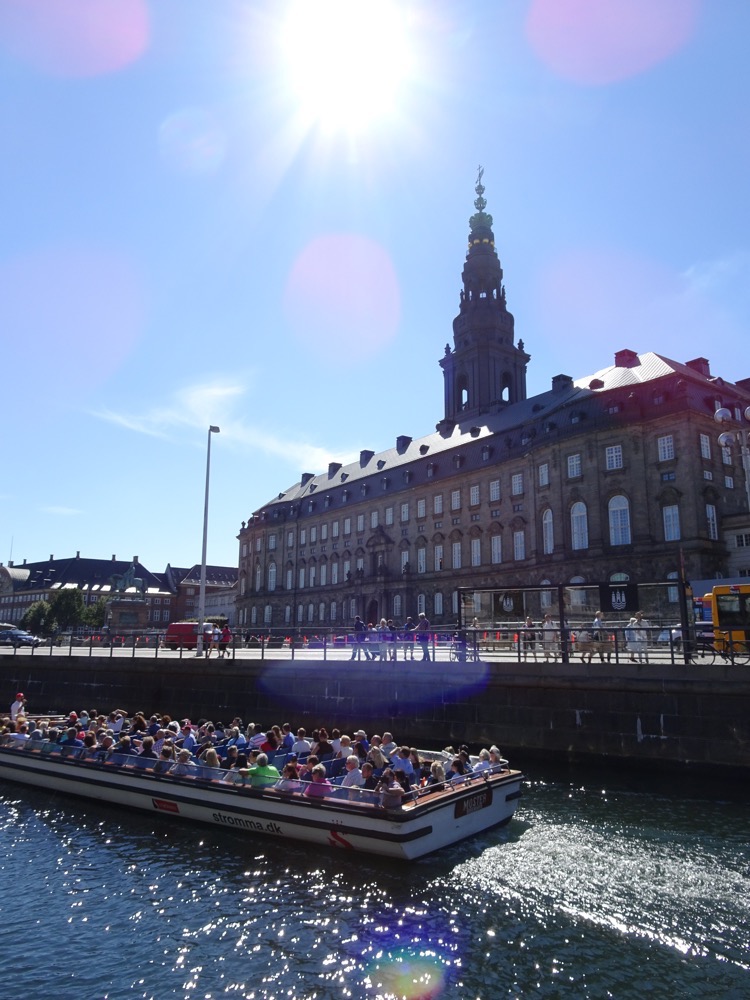
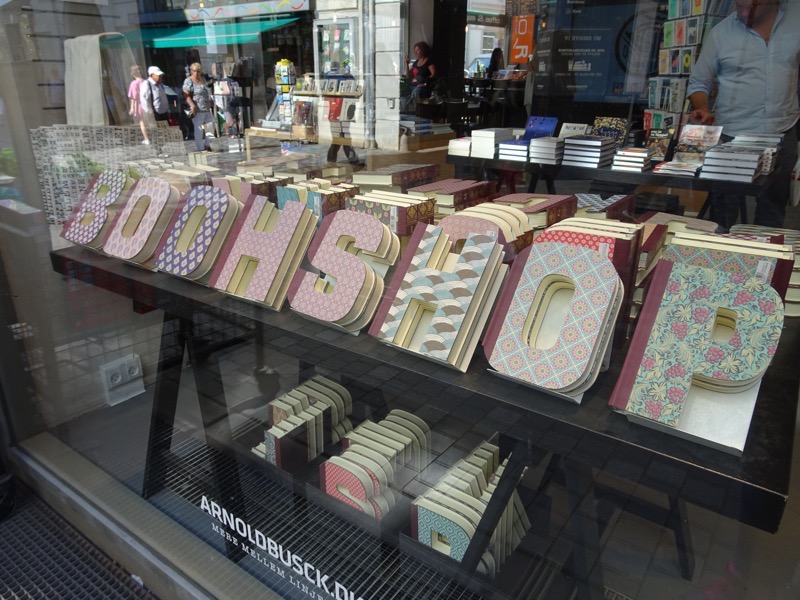 It was around the start of the 17th century that Copenhagen began to concrete its position as a regional power center with the development of institutions like universities, defense structures, and armed forces. They apparently suffered considerably from the plague and bad fires in the 18th century, which then forced the city to undergo another period of growth and development. This saw considerable reconstruction in the Fredriksstaden district and the founding of many cultural institutions, like the History Museum and the Royal Theatre… but it was the 19th century disasters, such as Nelson attacking the Danish/Norweigan fleet and bombarding the city, that stimulated the Danish Golden Age, which brought the final neoclassical look to Copenhagen’s architecture.
It was around the start of the 17th century that Copenhagen began to concrete its position as a regional power center with the development of institutions like universities, defense structures, and armed forces. They apparently suffered considerably from the plague and bad fires in the 18th century, which then forced the city to undergo another period of growth and development. This saw considerable reconstruction in the Fredriksstaden district and the founding of many cultural institutions, like the History Museum and the Royal Theatre… but it was the 19th century disasters, such as Nelson attacking the Danish/Norweigan fleet and bombarding the city, that stimulated the Danish Golden Age, which brought the final neoclassical look to Copenhagen’s architecture.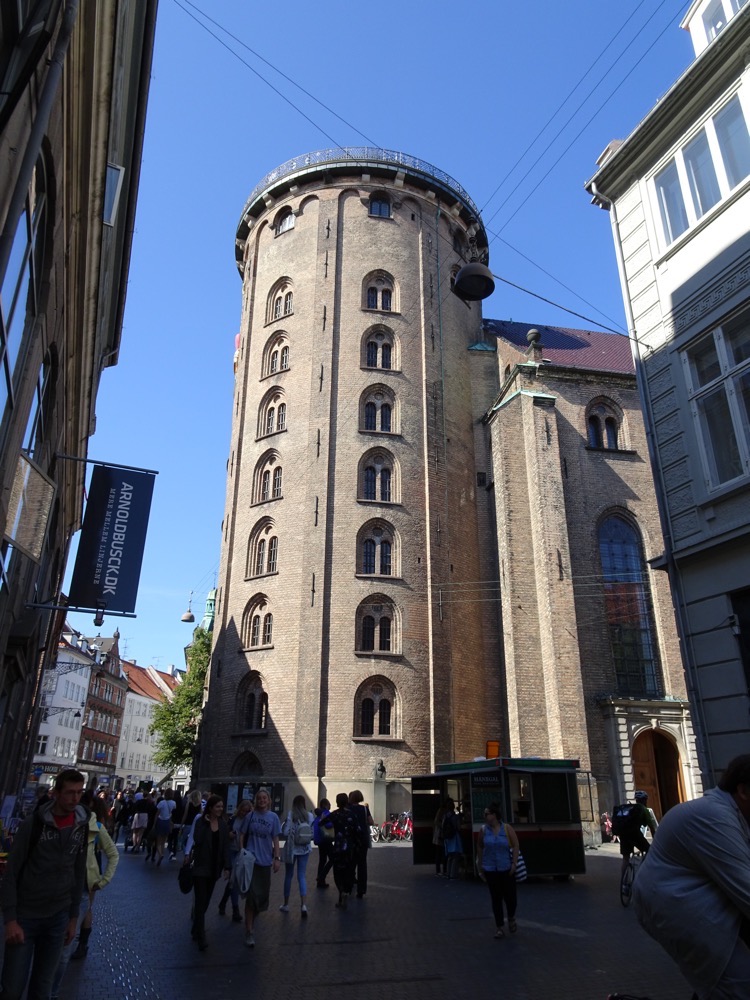
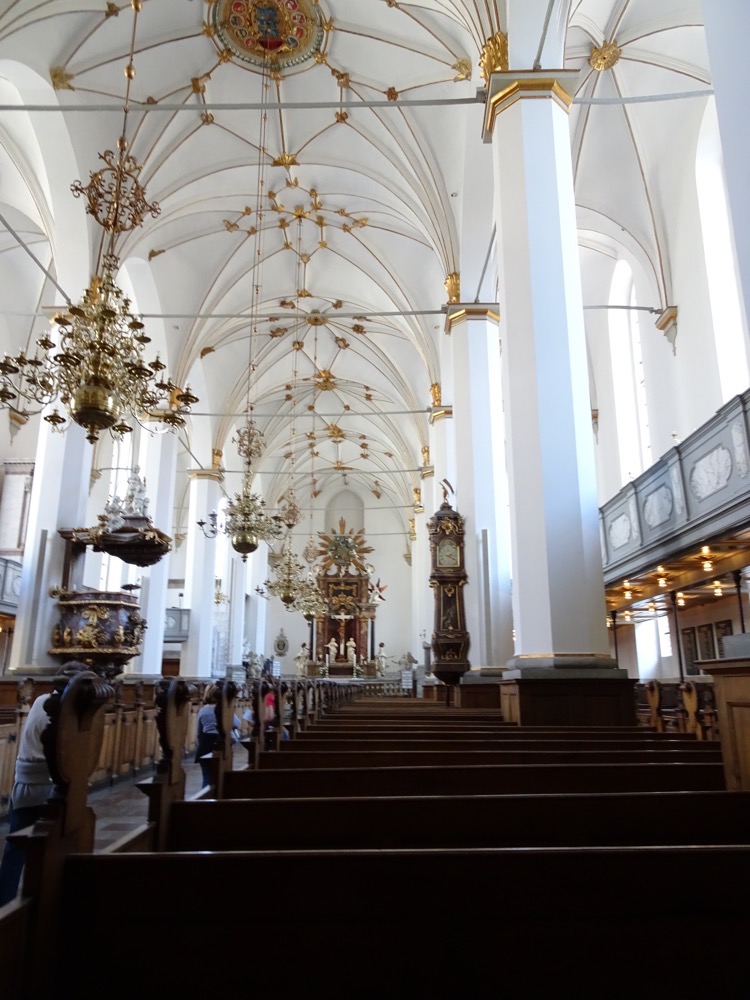
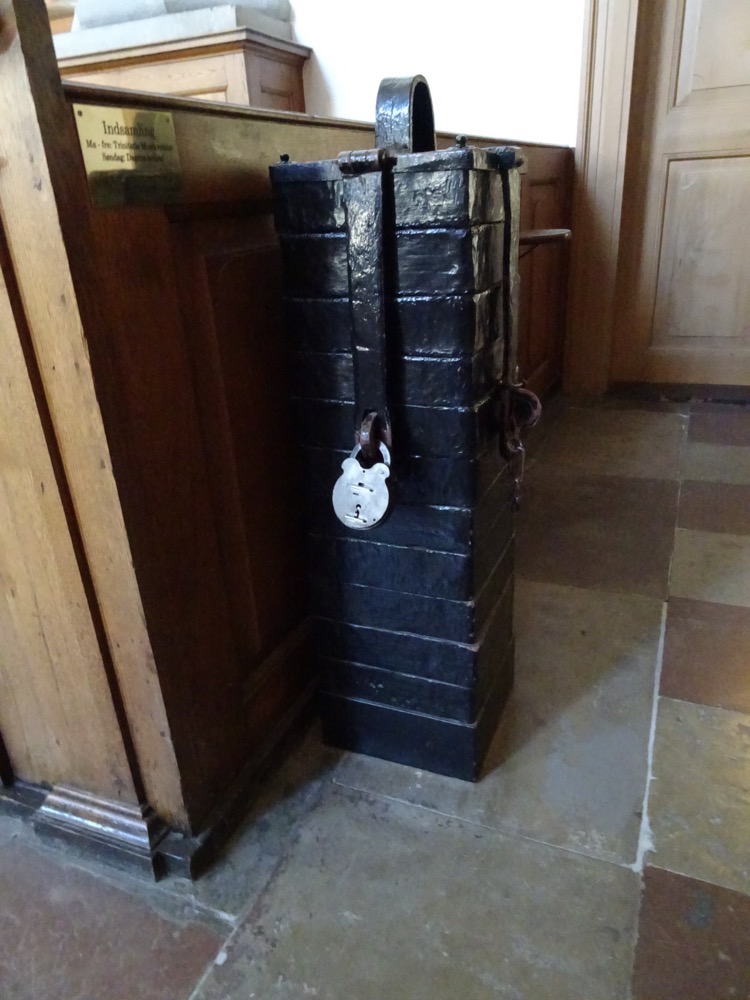
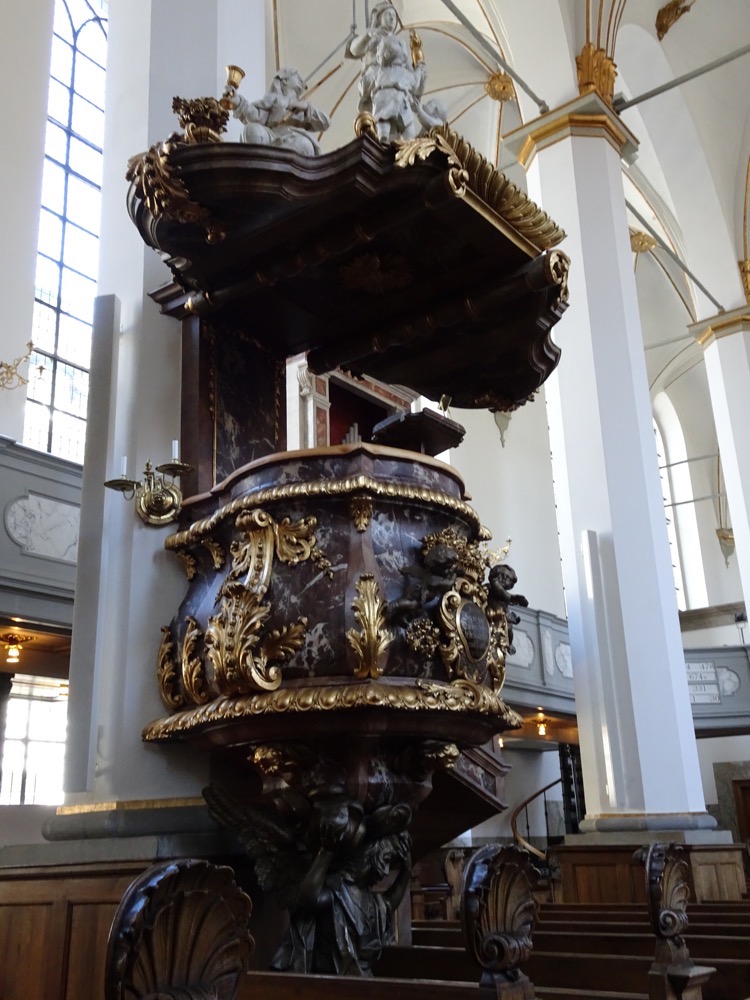
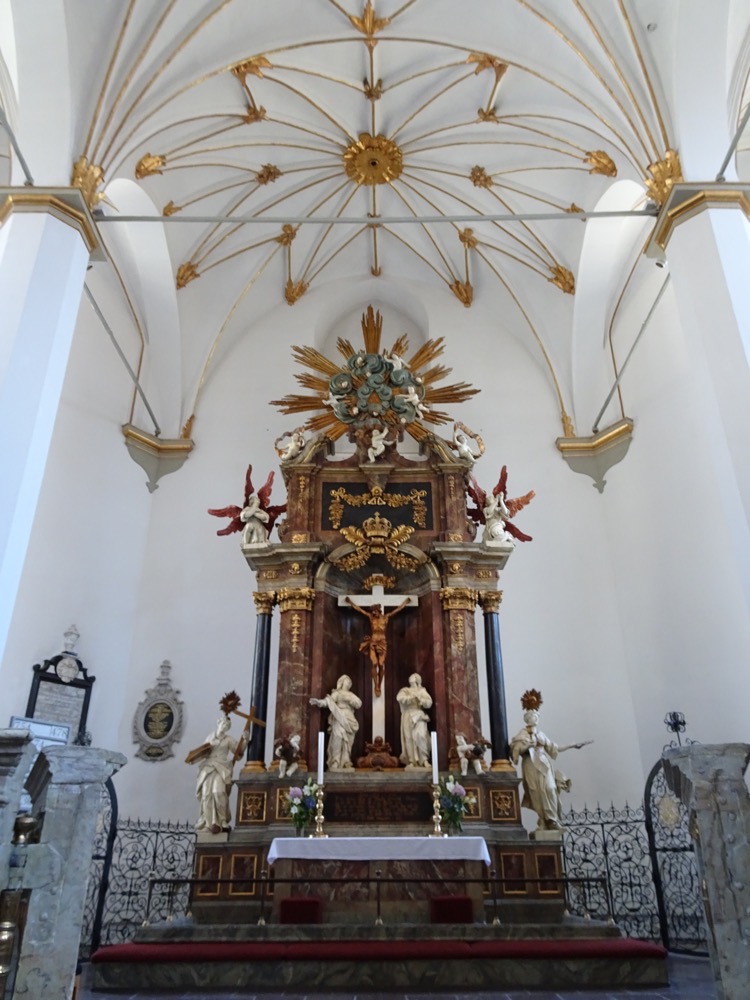
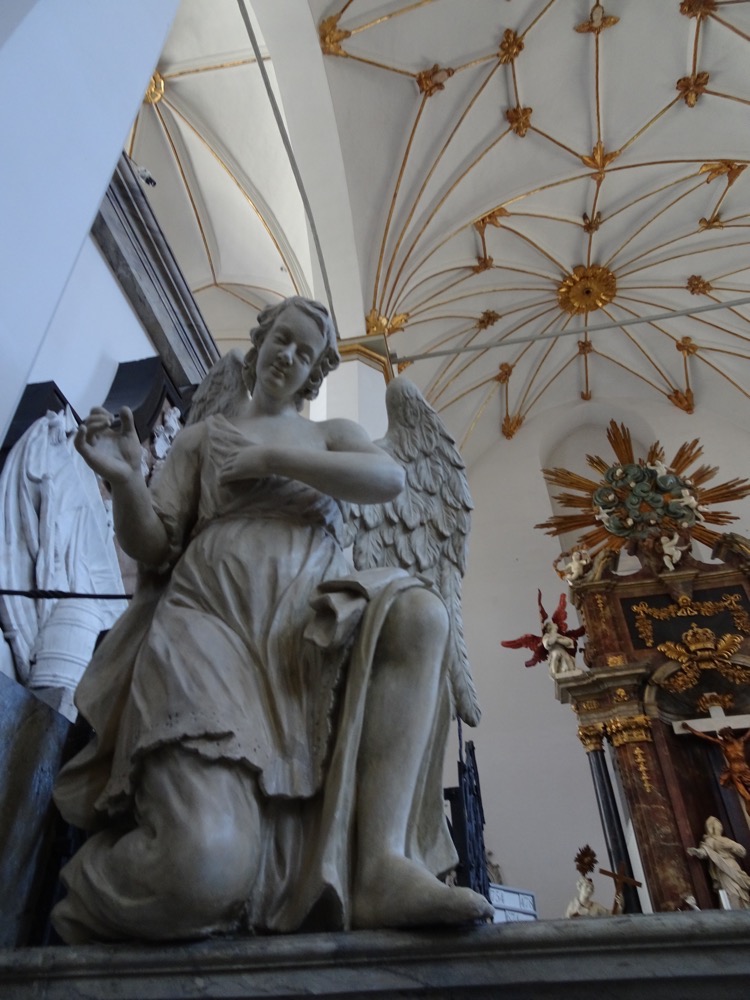
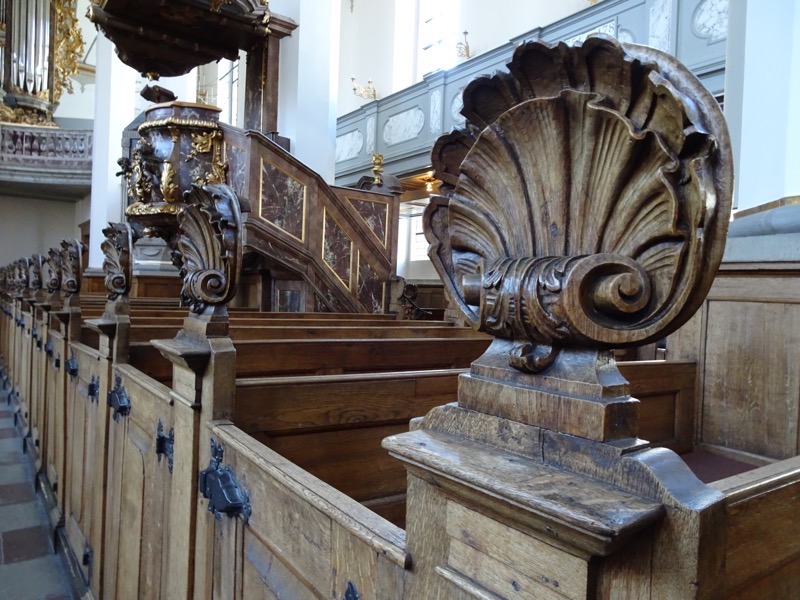
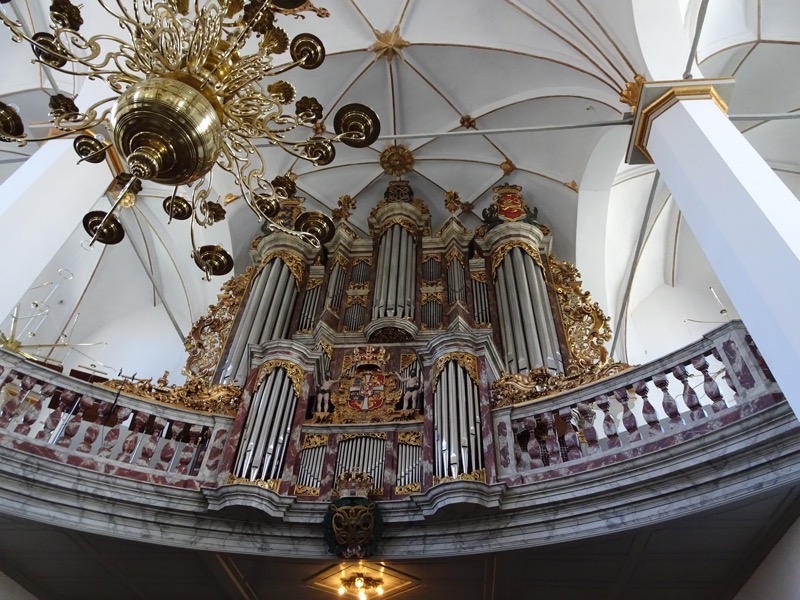

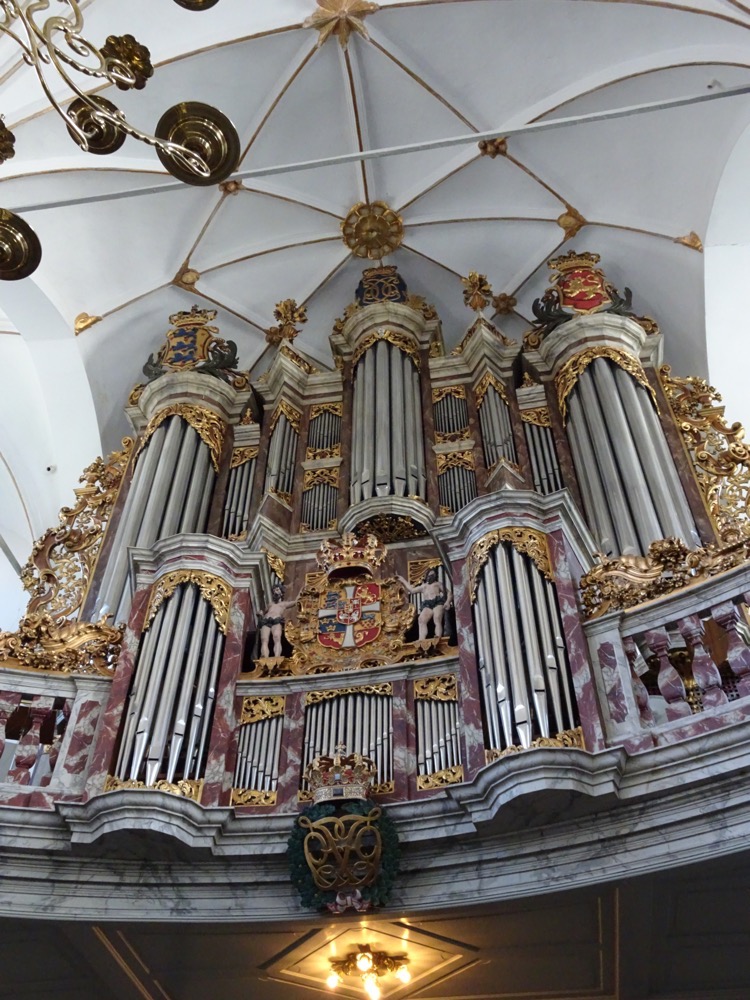
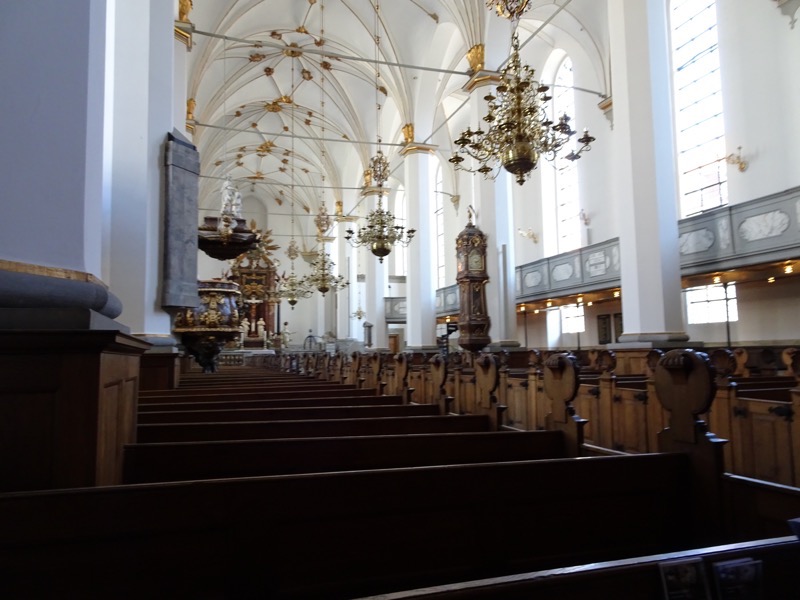 View from our lunch spot at the Dubliner pub… why we gravitate to Irish pubs, I’ll never know! It’s probably got something to do with the certainty there will be cider!
View from our lunch spot at the Dubliner pub… why we gravitate to Irish pubs, I’ll never know! It’s probably got something to do with the certainty there will be cider!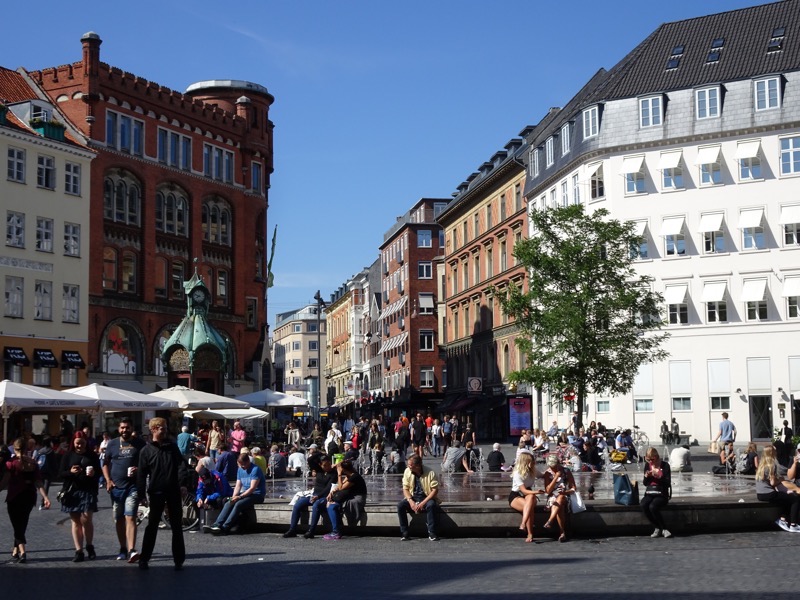
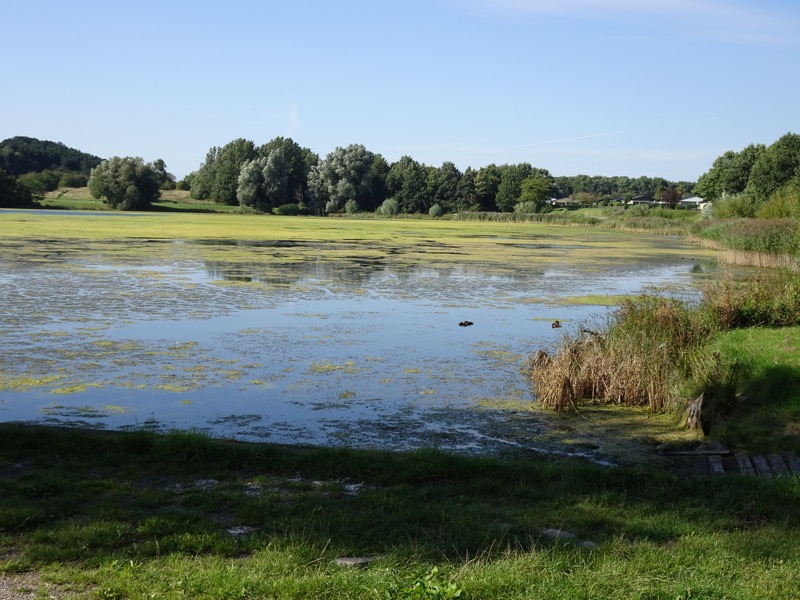 So we went out to Vallensbaek on the trains and went for a walk in the swamplands. 🙂 The area reminded me very much of the Minnippi Parklands near home, but larger, and of course with very different forest foliage. Love the weeping willows. We tramped about a bit, and then the GPS had us go off the path – Dambo has provided the exact locations of the Giants by GPS coordinates only so they can be a bit tricky to find 🙂 The map is deliberately vague.
So we went out to Vallensbaek on the trains and went for a walk in the swamplands. 🙂 The area reminded me very much of the Minnippi Parklands near home, but larger, and of course with very different forest foliage. Love the weeping willows. We tramped about a bit, and then the GPS had us go off the path – Dambo has provided the exact locations of the Giants by GPS coordinates only so they can be a bit tricky to find 🙂 The map is deliberately vague.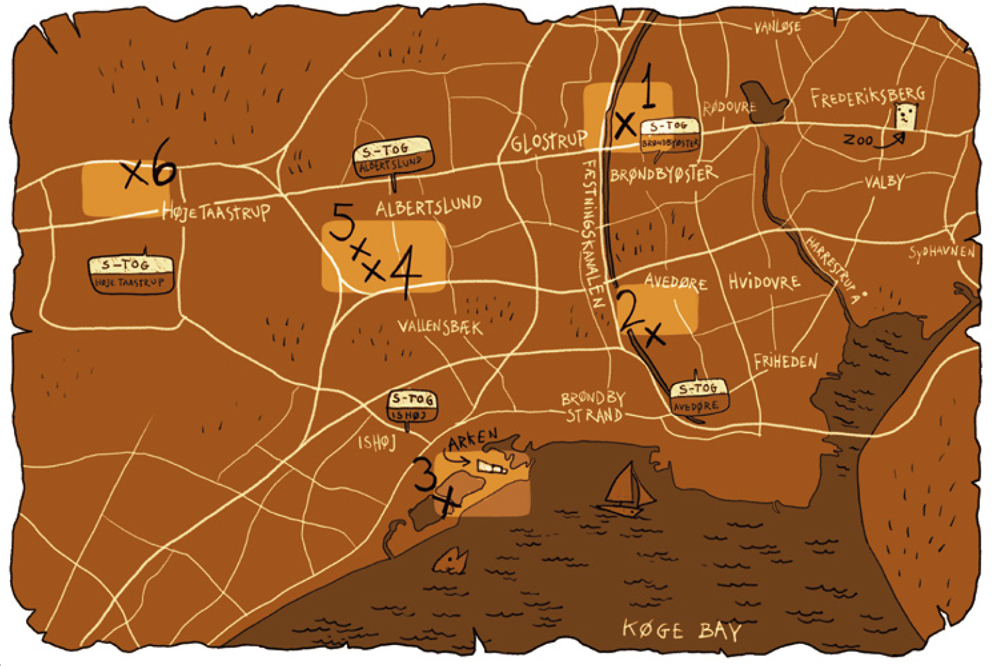
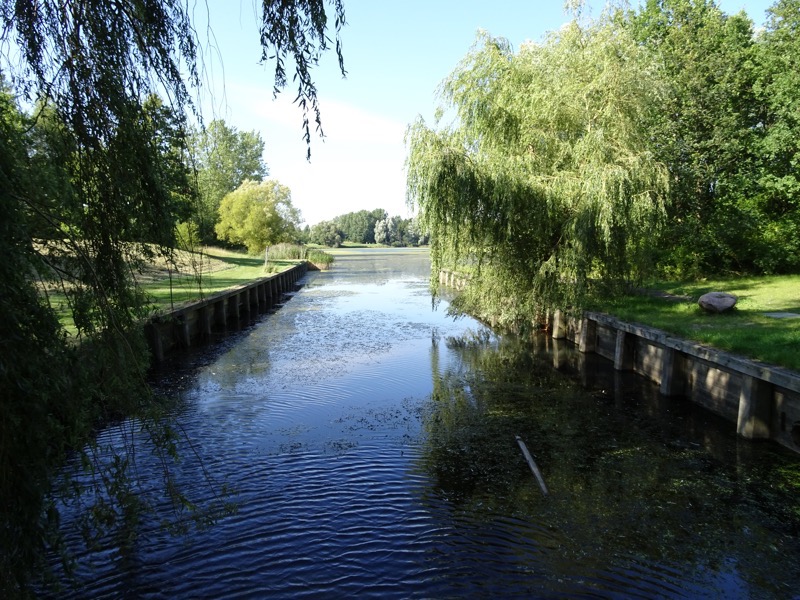 And then we through the trees, we saw Little Tilde – my favourite of the Forgotten Giants.
And then we through the trees, we saw Little Tilde – my favourite of the Forgotten Giants. 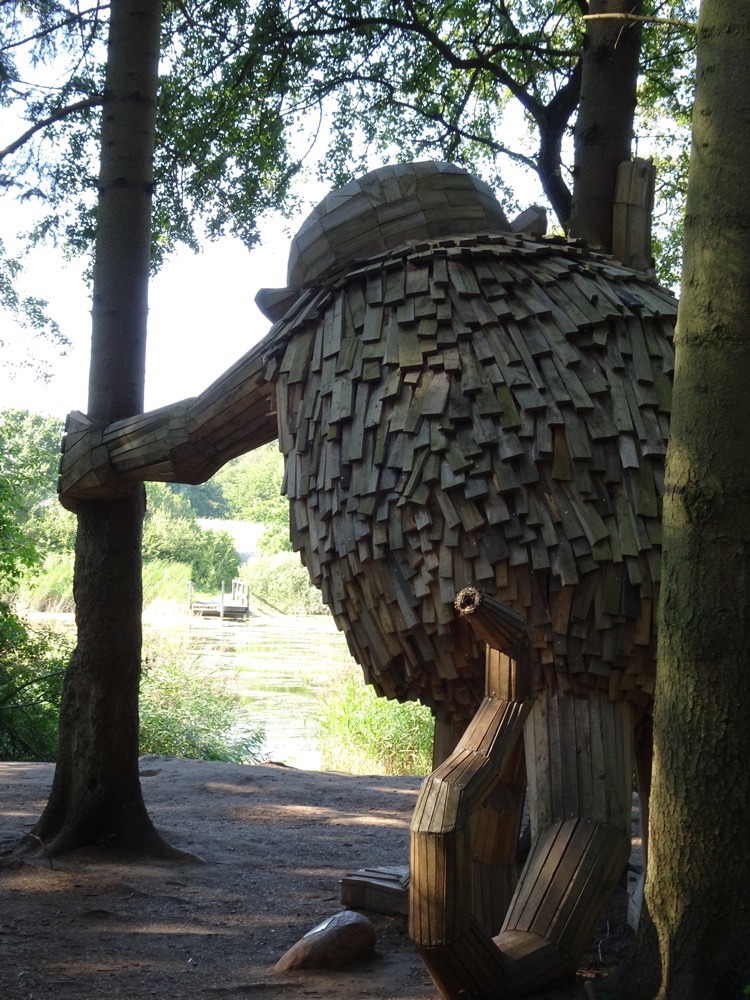 This art project is super cool! Totally worth the 40+mins on public transport and the walk in the forest.
This art project is super cool! Totally worth the 40+mins on public transport and the walk in the forest.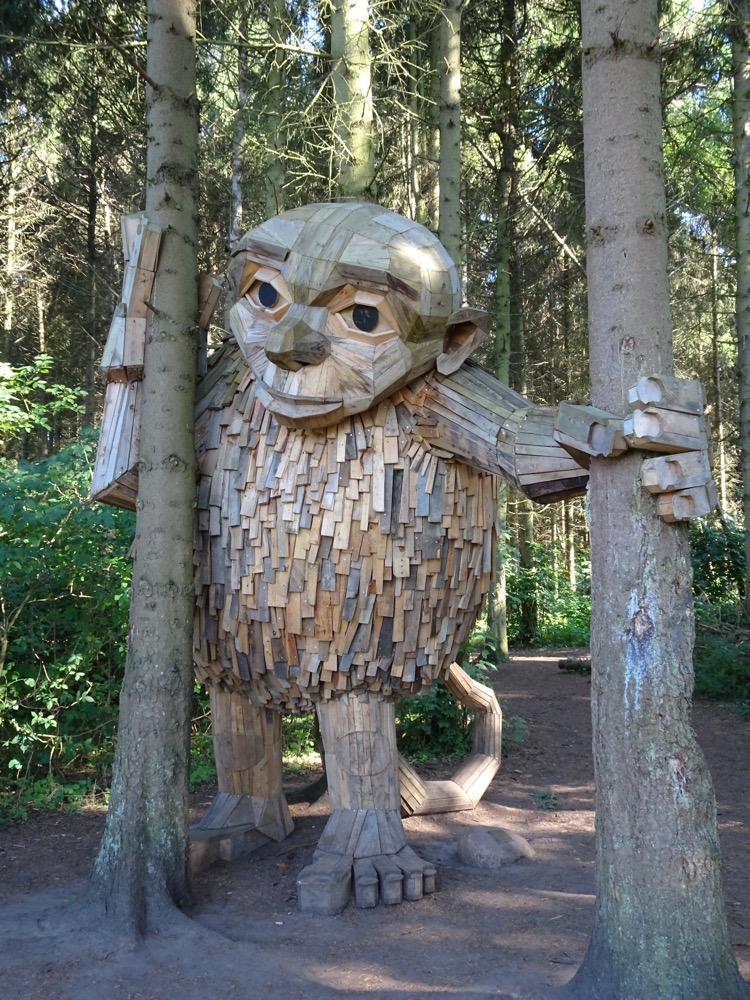
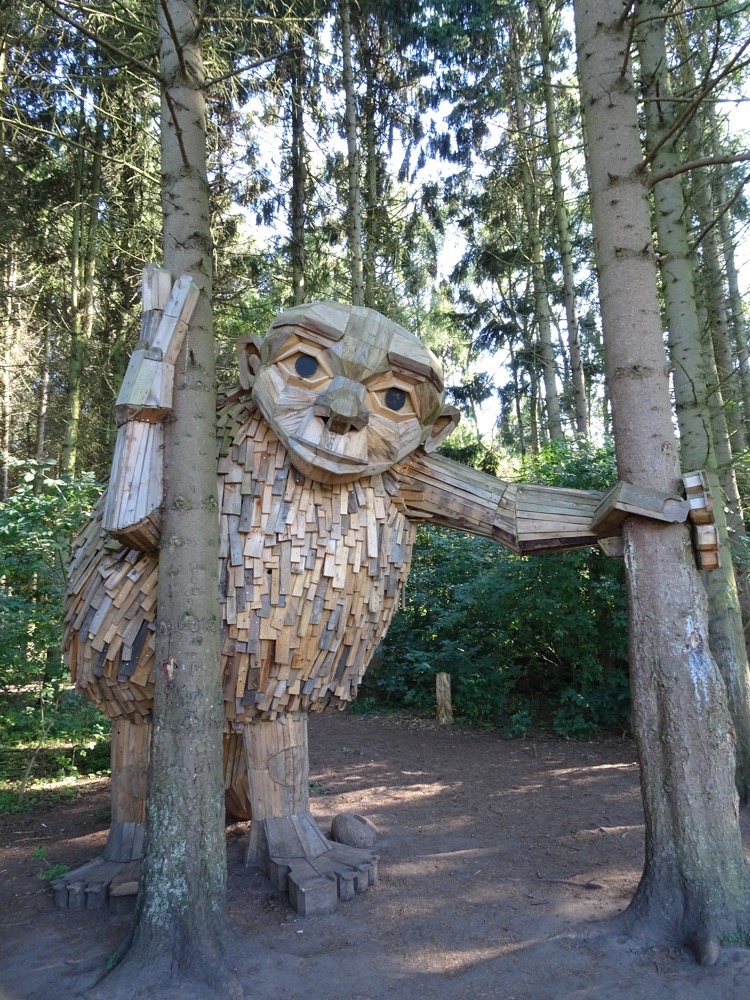 borys for scale! 🙂
borys for scale! 🙂 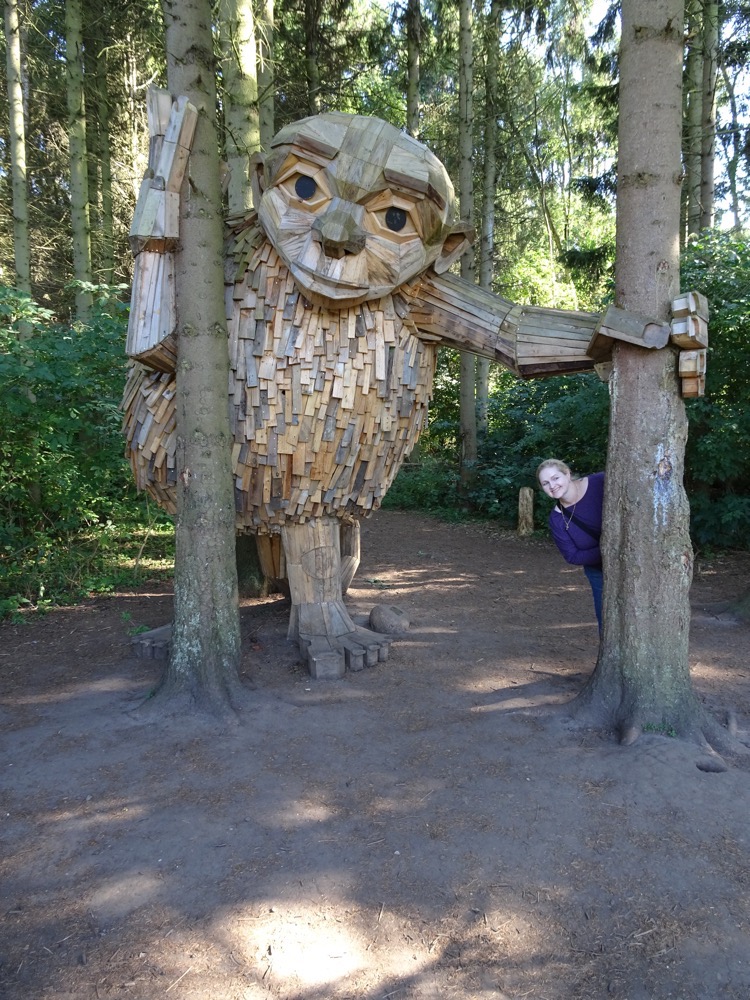
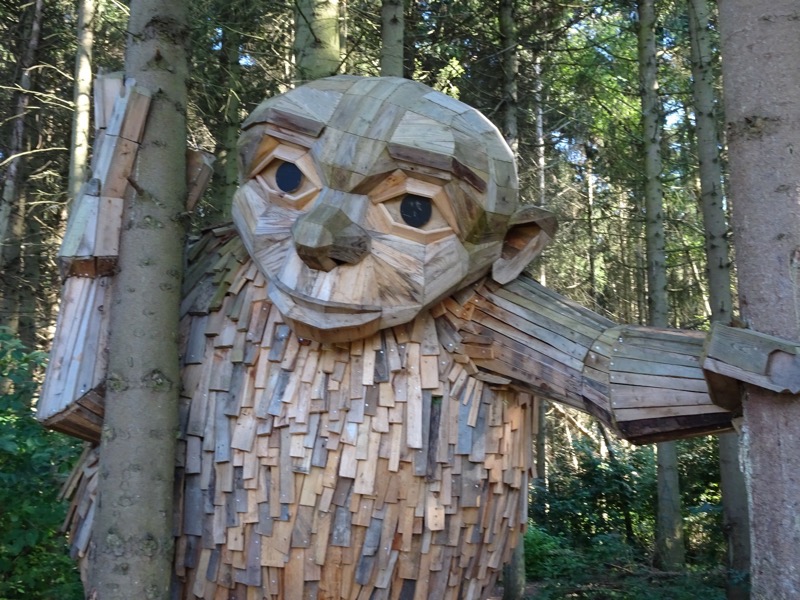 After visiting with Little Tilde for a while, we thought we would try and find another Forgotten Giant, Thomas on the Mountain. The name should have given it away, but he was a couple of kilometers away and not as easy to find.
After visiting with Little Tilde for a while, we thought we would try and find another Forgotten Giant, Thomas on the Mountain. The name should have given it away, but he was a couple of kilometers away and not as easy to find. 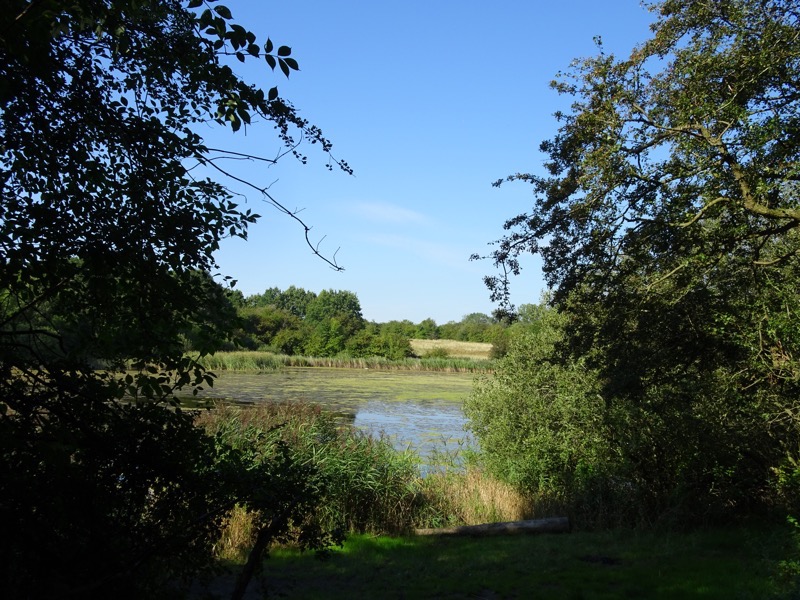 Past some more swamps, wildlife and birds. Great herons, swans and lots of different ducks.
Past some more swamps, wildlife and birds. Great herons, swans and lots of different ducks.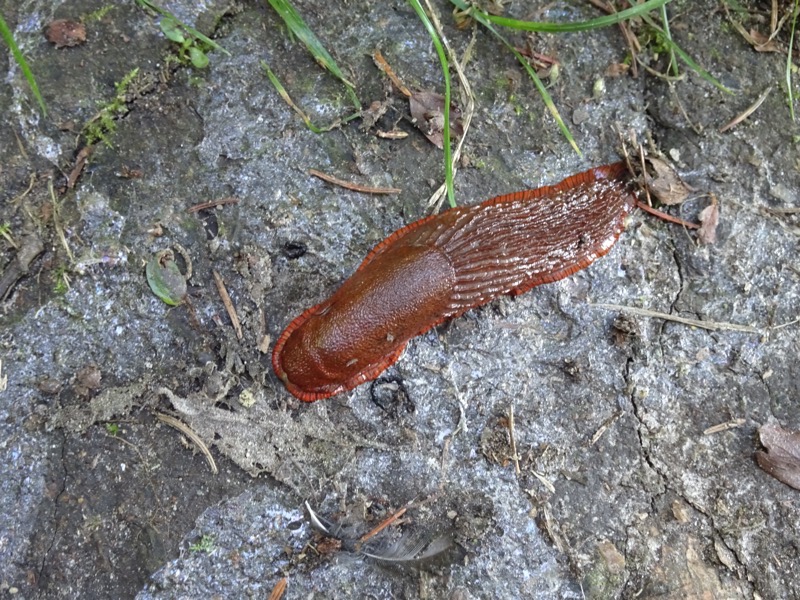
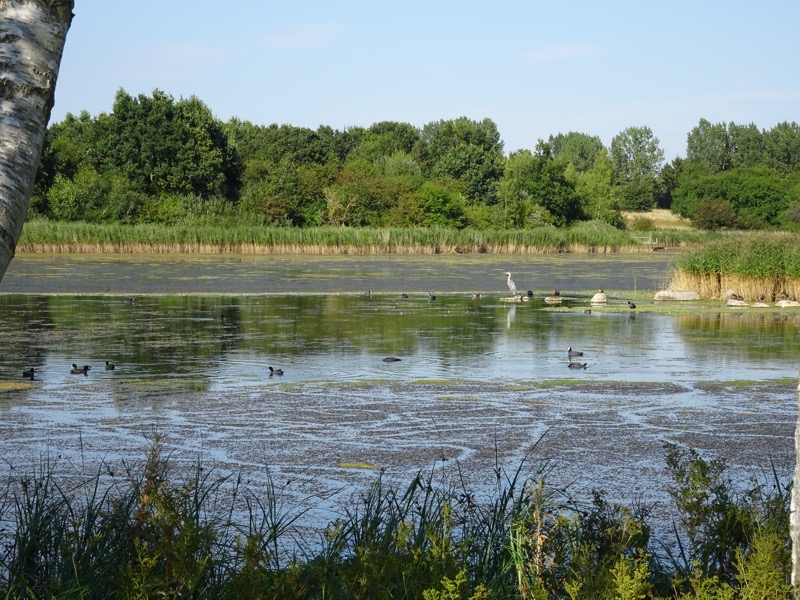
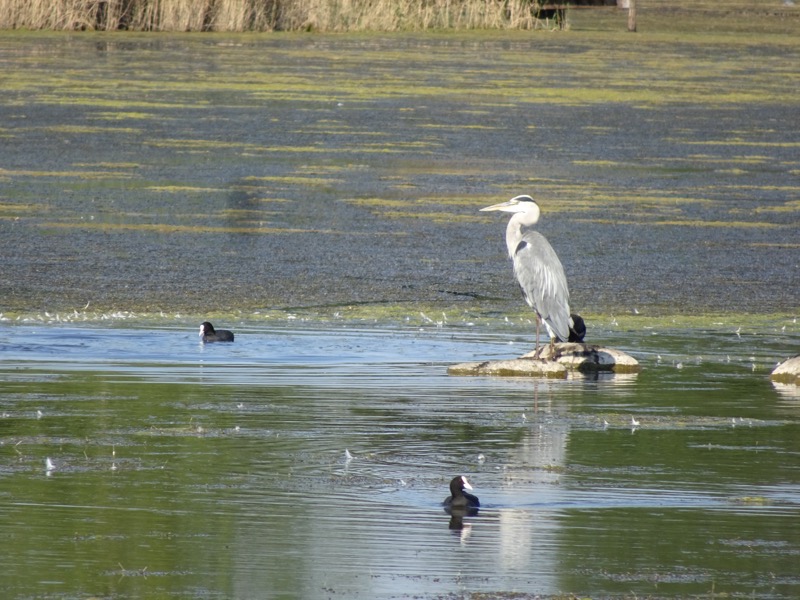
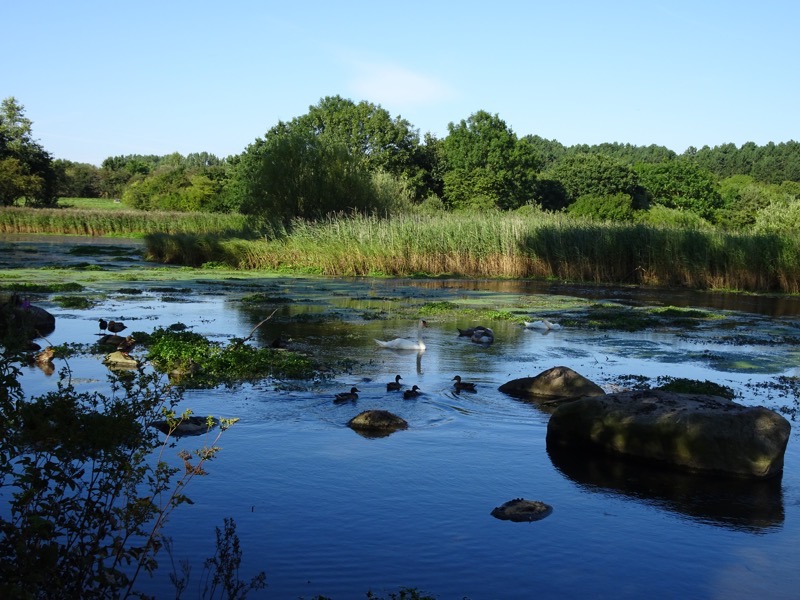
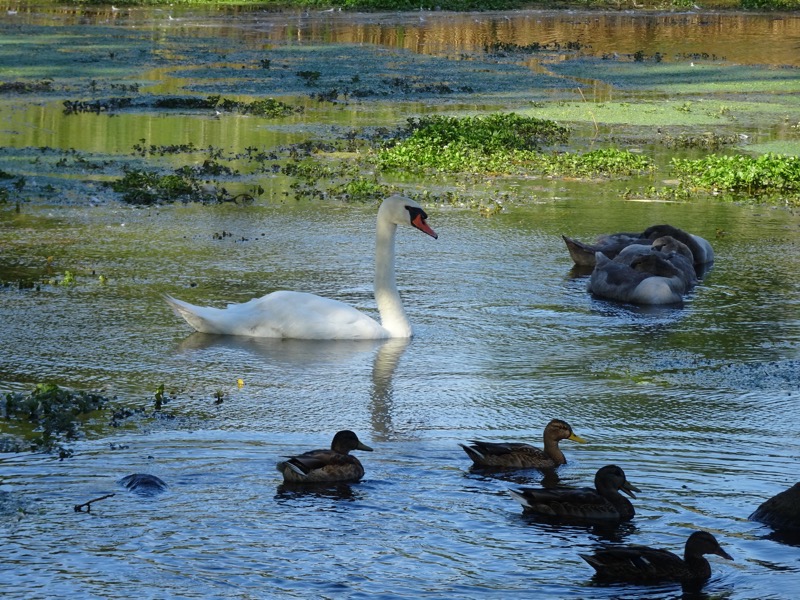 Then up a bloody steep mountain track! I am really quite proud of myself for having made it up actually. My neck was clicking that stupid nauseating way it does, but we got up there!
Then up a bloody steep mountain track! I am really quite proud of myself for having made it up actually. My neck was clicking that stupid nauseating way it does, but we got up there!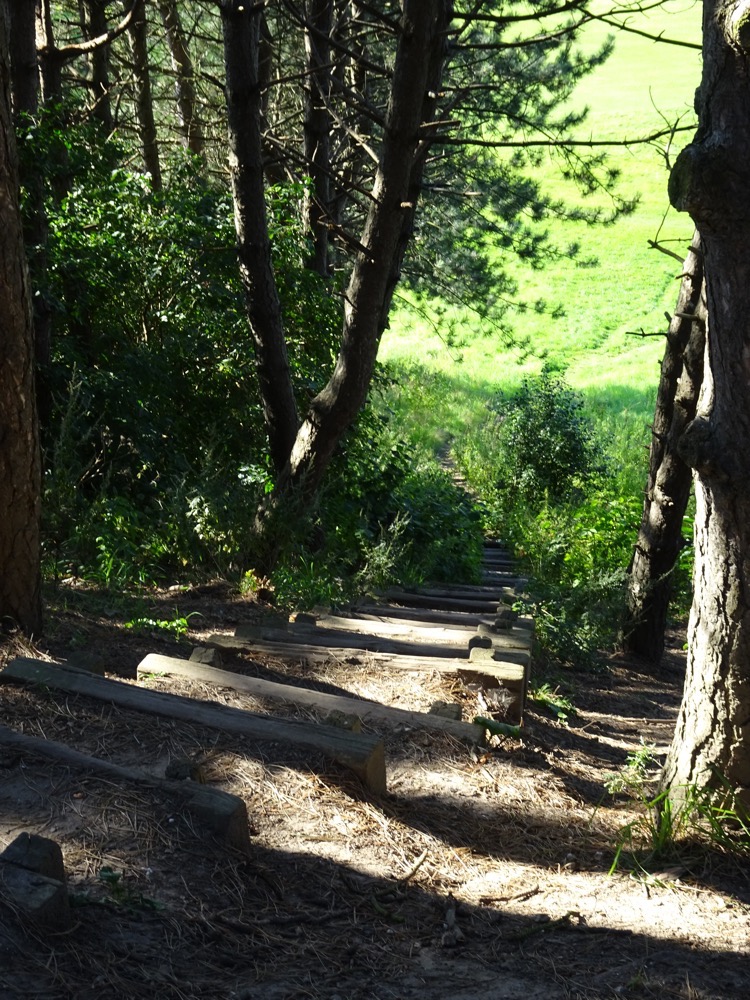 And here he is, lounging in a clearing up the steep hill, overlooking the valley.
And here he is, lounging in a clearing up the steep hill, overlooking the valley.